Tours By Region
Tours by specialty.
- Birding Tours
- Expedition Cruises
- Nature Photography
- Slow Birding
- Wildlife Tours
- Tours By Date
- Trip Reports
- Testimonials
- Tour leaders
- Why choose us
Since 1991, we have been leading and organizing trips throughout the area we know best: Southern South America.
We are specialists in Argentina, Brazil, Bolivia, Chile, Paraguay, Uruguay and Antarctica. Our tours are designed towards Birding / Birdwatching , Butterflies & Moths , Botany , Wildlife , Nature Photography and Local Culture
Here you will find more information on our team, the orientation of our tours, as well as what other customers have to say about us.
Hundreds of nature enthusiasts, highly reputed tour companies and prestigious NGOs in the World place their trust in our services every year. Together, we have developed a permanent commitment to fulfilling our clients’ expectations and, with great pride we welcome you to our website.
All the directors and tour leaders of Seriema Nature Tours are nature lovers with a vast experience in tourism and a strong responsibility towards conservation. Most of us are born and raised in South America, an amazing continent with amazing wildlife and people. A world class destination we have intensively traveled, all our lives.
Twenty years ago we dreamt of organizing wildlife tours in this exceptional part of the world. In 1991, we set down our foundations within Aves Argentinas, the local partner of BirdLife International, one of the world’s leading Conservation NGOs. Our field experience allowed us to organize nature trips to every corner of Argentina. Gradually our horizons widened to include other Neotropical countries as travelers from all over the world requested our services.
Presently we offer tours specialized in birds, botany, mammals, butterflies, photography and natural history to 18-plus destinations, in 5 countries of South America and Antarctic.
We integrate a network of travel companies with offices and representatives in every country of our area of operation. We specialize in nature tours and are fully geared for setting up tours aimed at birds, butterflies, botany, wildlife, nature photography, local culture and all related subjects
Southern South America is a Neotropical paradise home to 1800 species of birds, 500 species of mammals, a rich flora and a great diversity of reptiles, amphibians and insects. A rich cultural heritage accompanies this biological diversity.
We restrict our operation to the areas we live in and have thoroughly explored. The southern cone has hundreds of places of biological importance which we have come to know intimately over 25 years of exploration. Constant visits to every site result in continuous new discoveries as to the whereabouts of the rarer or localized species and potential new areas.

Our Programs
Each tour is carefully planned and updated using our own most valuable field information. All the programs on this website have been thoroughly written up and tested by us beforehand. They are the result of hundreds of hours in the field and permanent feedback from the tour leaders, who are in direct contact with the exact nature of every destination. We only visit the very best areas and include well-known sites as well as others off-the-beaten track. This information enables us to constantly update our programs. Most important, our proposals are timed to coincide with the best season for each planned activity. Nevertheless, we are also open to customize every program to suit the needs of our clients.
Our Tour Leaders
All the company’s tour leaders enjoy a high reputation earned over years of experience and the acquisition of a large technical know-how. They also possess friendly personalities, the patience and expertise to show clients what they want to see, while conducting both a professional and efficient leadership. All are residents of South America and live in the areas where they lead our tours; which allows for a broad understanding of the natural world which surrounds them. All are specialists (birds, butterflies, botany, wildlife, culture, etc) and their knowledge covers more than one field. All speak fluent Spanish (fundamental for travel in South America) and have a good command of English and often another language as well.
You can read about their backgrounds in the Tour Leaders section.
Dedicated and professional, our operations’ staff is expert in logistics aimed at ensuring a trouble free tour. We trust in their efficiency to back us up when we are in the field, to promptly answer your enquiries, make reservations, keep you up to date with precise tour information and advice on everything you need for your tour. We have on site offices and representatives in every key destination. Our main office is open every day of the week from 9 to 17 (local time GMT -3).
Locally established
Our excellent relationship with the local community is another key factor for the successful running of our trips. Over the years we have developed a close relationship with the local inhabitants of all the areas we visit. We are trusted by the landowners of the areas we explore, and often provide work for the locals, understanding that tourism is one of the best guarantees for long term habitat conservation.
Our commitment to conservation
We took our first steps as part of one of the leading conservation organizations in South America, the Ornithological Association of Argentina (Aves Argentinas/BirdLife). Today we continue to support this institution and other NGOs towards fulfilling their aims by helping them with their various projects. As you will notice in the partners’ résumés, all the tour leaders and guides are active in the field of nature conservation and firmly believe that sustainable tourism is only possible where business benefits the environment.

Listing and Taxonomy

American Birding Association Checklist Committee (CLC) Report, March 2024

ABA Area Field Guides
The American Birding Association Field Guides each include hundreds of species birders are most likely to see in their state or province. Illustrated with crisp, color photographs, they include descriptions of each bird along with tips of when and where to see them, and are written by local expert birders.
- Welcome New Birders!
- Birding News
- ABA Checklist
- Listing & Taxonomy
- ABA Field Guides
- ABA Rare Bird Alert
- Festivals & Events
- Birding Clubs & Organizations
- ABA Area Birding Trails
- Listing Central
- ABA Code of Birding Ethics
Latest Podcast, Articles, & More…

08-14: Random Birds, Special Edition, with John Lowry & Ted Floyd

ABA Hiring Summer Camp Nurse
Rare bird alert.

Rare Bird Alert: April 5, 2024
Field ornithology.

First Red-flanked Bluetail in the Eastern ABA Area
- Book Reviews

The Fight to Protect the Birds

March 2024 Photo Quiz
How to know the birds.

How to Know the Birds: No. 81, A Kinglet Assist from Merlin
Birds and....

No. 25: Birds and Nests
- Birding Magazine

Birding Online: March 2024
North American Birds

North American Birds: Vol. 74, No. 2
Section home pages.
- American Birding Podcast
- NAB Regional Reports
- Identification
- ABA Publications Archive
- ABA Young Birders

ABA Young Birder Program includes ABA Young Birder Camps, the ABA Young Birder Mentoring Program, and the young birder magazine, The Fledgling.

When you travel with ABA, you help build a better future for birds, birders, and birding. We combine great field birding, amazing destinations, and cultural immersion, while supporting local communities.

Birders’ Exchange provides birdwatching equipment and resources to organizations in the United States, Canada, Latin America, and the Caribbean with an educational need.

The American Birding Association is proud to partner with Thanksgiving Coffee Company to bring you Song Bird Coffee. Song Bird is grown on small farms that have been certified Bird-Friendly by the Smithsonian Migratory Bird Center, the gold standard for shade-grown, organic coffees.
ABA Community Weekends

ABA Community Weekends bring birders together near you! With the help of local friends and partners, we offer guided bird walks, workshops, and gatherings in cities across the U.S. and Canada and it’s free to participants.
- Travel and Events
- Birders’ Exchange
- ABA Song Bird Coffee
The ABA is a non-profit 501(c)(3) organization that inspires all people to enjoy and protect wild birds.
Please join us as we leverage our extensive knowledge, expertise, connections, and world-class content to bring more people into the birding community.

- My Membership
- Join ABA Community
- Flight Calls newsletter
- Matching Gifts
- Gift Planning
- Search for:
- WooCommerce Cart 0

Central and Northern Argentina birding tour
October 3–16, 2024.
Central and northwestern Argentina offer spectacular landscapes: Chaco woodlands, salt flats, Yungas cloud forest, semi-arid valleys, High Andes, and Puna Altiplano. This region is home to many endemic and localized birds, including Andean Condor, Black-legged Seriema, Tucuman Parrot, Olive-crowned Crescentchest, and Salinas Monjita, making it a prime destination for birdwatchers. Let the ABA and Seriema Nature Tours take you on an adventure to explore Argentina’s rich birdlife and enjoy the authentic culture and magnificent scenery of the Andes—as well as superb Malbec wines!

Brief itinerary
Specialty birds:.
Andean Condor, Torrent Duck, Black-legged Seriema, Red-faced Guan, Tucuman Parrot, Giant Hummingbird, Red-tailed Comet, Slender-tailed Woodstar, Olive-crowned Crescentchest, Salinas Monjita, Sandy Gallito, Rufous-throated Dipper, Sierran Meadowlark …
Landscape, scenery, habitats:
The “Salinas Grandes” salt flats and surrounding Chaco woodlands, the Yungas cloud forests, and the stunning scenery of the High Andes.
Culture, history:
The colonial architecture of Salta and Jujuy, and the ancient cultures and traditions of UNESCO site Humahuaca Gorge.
Supported projects:
With our tour, we support several national parks and protected areas. Our accommodation choices reflect our commitment to wildlife conservation and local communities. We stay at lodges that support environmental initiatives and protect the habitats of various species. We also prefer small hotels and restaurants that are owned by local families, who benefit from our visits and share their culture and traditions with us.
Practical details
Dates : October 3-16, 2024
Number of days and nights: 14 days / 13 nights
Start and end point:
- Starting: 3 October 2024, Córdoba, Argentina (COR) (arrive before noon local time)
- Finishing: 16 October 2024, Salta, Argentina (SLA) (depart after noon local time)
Group size:
- Minimum number of participants: 5
- Maximum number of participants: 10
Guides and ABA staff:
1 Argentinian lead guide and 1 ABA staff
- General wildlife
- Culture & history
Birding pace:
Medium – High
Photography opportunities:
Medium (it is not specifically a photography tour!)
Physical difficulty:
Medium: In general, the pace of the tour is moderate. While we spend a lot of time on our feet, walks are not physically strenuous. Some days involve considerable walking while others require very little. Long drives can be expected when we move from one site to another, but we will generally go birding along the way. When possible, we will try to drive at midday in order to take advantage of early mornings and afternoons for birding. Early departures are typical in the warm areas, as we like to be out in the field when the birds are most active. When temperatures are high at midday will have a break during that time. Alternatively, you can go birding on your own, but the guide will retire until activities resume later in the afternoon. Additionally, there will be night outings in sites that are known for nocturnal species, but most of the evenings are free.
The tour starts in Córdoba at lower elevations, ascending from there to reach a maximum elevation of around 11,483 ft. (3,500 m) above Abra Pampa. We will be sleeping at elevations of 8,200 ft. (2,500 m) or lower and only one day we go up to 11483 ft. (3,500 m) during the morning, returning to a lower elevation on the same day. The ascent is gradual and usually allows acclimatization to higher elevations as we go on the tour. Few participants experience any issues, but it is still recommended to take precautions against altitude sickness.
Most of the hotels we use will be able to serve an early breakfast, but we may sometimes take a box breakfast. Lunch time will depend on the birding activity, but is normally served between 12.00 and 2 p.m. Some days could require a box lunch. Since restaurants in Argentina rarely open before 8 p.m. we will meet earlier to go over the checklist for the day and have dinner as soon as they start serving. Participants with special dietary requirements will find a variety of meals to choose from, although we cannot guarantee a wide choice when we stay in small cities or rural areas.
Weather will generally be warm to cool, and probably hot at midday. It is generally humid in the Yungas cloud forest, but dry and windy in the high Andes. Warm field clothing (for cold weather) will be appropriate for the higher tracts of the Andes, where temperatures can go down to below freezing in the morning and night. Expect a range of temperatures between 32 to 95° F (0 to 35°C). A hat, sunglasses, and sunscreen are recommended for sun protection, as the sun is strong in this area. Be sure to have one pair of good hiking boots or comfortable walking shoes and a second pair to change into. Dress will be casual throughout. Please limit baggage to one piece of luggage and one carry-on bag if possible, as some of the vehicles have limited luggage space.
Price and booking
- $6,000 per person in double occupancy (twin or double)
- $750 single supplement
- 13 hotel nights
- 3 meals per day from dinner on day 1 to breakfast on day 14
- All in-country private transportation to and from sites visited and transportation from airport to hotel and day 1 and from hotel to airport on day 14
- All guiding fees for tour leaders and local guides
- All entrance fees to sites mentioned in the itinerary
- All activities as described in the itinerary
Not included:
- Transportation to and from Argentina (we start in Córdoba COR and end in Salta SLA)
- Alcoholic beverages
- Purchases of a personal nature, including (but not limited to) laundry service, room service, phone calls, toiletries, souvenirs etc.
- No insurance is included. We strongly recommend you get your own travel, cancellation, and medical insurance
- Extensions of the trip due to circumstances out of our control
- Any tips you would like to offer tour leaders, guides, drivers, porters, wait staff, housekeeping, etc. for outstanding service
Terms and conditions:
aba.org/terms-conditions
Booking and secure payment:
Detailed itinerary, 10/03/2024: arrive in córdoba – birding the central hills highlands..
The tour starts at midday at Córdoba international airport, Argentina. The airport is served by some international airlines. Alternatively, you can fly via Buenos Aires and catch a connecting flight to Córdoba.
Upon meeting the guide and boarding the bus, the tour starts driving towards “Pampa de Achala”, a grassy plateau in the vicinity of Quebrada del Condorito National Park, where we´ll look for the highland endemics of Córdoba Central Hills. Later descend to the Punilla Valley for birding in “Chaco” type woods.
Top birds to look out for today: Andean Condor, Rufous-banded Miner, Olrog’s Cinclodes, Cordoba Cinclodes, Least Shrike-tyrant, Stripe-capped Sparrow, Band-tailed Sierra-Finch, Sierran Meadowlark.
10/04/2024: To Salinas Grandes, birding the Chaco woodlands
In the morning, we go birding in the Sierran Chaco habitats around the hotel. After lunch, we continue our journey to the North, deeper in the Chaco woods of Central Argentina and in the vicinity of the “Salinas Grandes”, one of the largest saltflats in the country.
Top birds to look out for today: Andean Tinamou, Spot-winged Falconet, Red-tailed Comet, Black-bodied Woodpecker, Scimitar-billed Woodcreeper, Lark-like Brushrunner, Little thornbird, Great Antshrike, Chiguanco Thrush, Black-and-chestnut Warbling-Finch, Olive-crowned Crescentchest, Golden-billed Saltator.
10/05/2024: Salinas Grandes and dry Chaco scrub
Today we bird the dry Chaco woodland habitats surrounding the saltflats, as well as the scrub habitats in the proximity of the saltflats.
Top birds to look out for today: Brushland Tinamou, Crested Hornero, Sharp-billed Canastero, Salinas Monjita, Crested Gallito, Black-crested Finch, Chaco Sparrow.
10/06/2024: To Tafí del Valle, birding from Chaco woods to Yungas cloud forest
After some early birding around the hotel, our journey continues driving across the Chaco woodlands towards the province of Tucumán, where we start ascending the Aconquija mountain range. The humid Yungas cloud forest will be the main habitat, where we can find a completely new set of birds before arriving at our hotel near Tafí del Valle (6,550 ft. / 2,000 m).
Top birds to look out for today: Mitred Parakeet, Chaco Earthcreeper, Olive-crowned Crescentchest, Chaco Puffbird, Slaty Elaenia, White-throated Tyrannulet, Brown-capped Whitestart, Fawn-breasted Tanager, Many-coloured Chaco-finch.
10/07/2024: Birding Tafí del Valle: Andean grasslands, ravines, montane forest.
Today we will go birding above and below Tafí del Valle, in high Andean grasslands, ravines, and montane forest habitats.
Top birds to look out for today: Rufous-throated Dipper, Torrent Duck, Moreno’s Ground-Dove, Buff-breasted Earthcreeper, Scribble-tailed Canastero, Azara’s Spinetail, White-browed Tapaculo, Two-banded Warbler, Yellow-striped Brush-Finch, Tucuman Mountain-finch, Common Brush-Finch.
10/08/2024: Tafí to “El Infiernillo” pass to Cafayate.
After breakfast we leave Tafi and continue our ascend to “El Infiernillo” pass (9,980 ft. / 3,042 m) birding on the way, to later descend into the dry Calchaqui Valleys, where a completely new biome will be waiting for us: the endemic “Monte” semidesert.
Top birds to look out for today: Ornate Tinamou, Andean Hillstar, Rock Earthcreeper, Plain-colored seedeater, Greenish Yellow-Finch, Rufous-sided Warbling-Finch, Ringed Warbling-Finch, Band-tailed Sierra-Finch.
10/09/2024: Birding the endemic “Monte” scrub
In the morning we will go birding the Monte habitats near Cafayate, looking for endemics and specialties of the area. Our tour continues due North in the afternoon as we drive through the vineyards of Cafayate to later enter the ravine “Quebrada de las Conchas”, with stunning views of vertical walls and rock formations. We will stay overnight near Coronel Moldes for two nights (4,035 ft. / 1,230 m).
Top birds to look out for today: Black-legged Seriema, Burrowing Parrot, Black-winged Ground-Dove, Sparkling Violetear, White-winged Black-Tyrant, White-tipped Plantcutter, Sandy Gallito, White-throated Cacholote, Plain-colored Seedeater.
10/10/2024: Birding the Andes Mountain Range on the road to Cachi.
Today, we take a full day trip climbing the Andes Mountain Range ascending along the road to Cachi, known as “Cuesta del Obispo” (Bishop’s slope), where we pass through a succession of habitats from Yungas cloud forests to cacti scrubland and high Andean grasslands.
Top birds to look out for today: Andean Swift, Giant Hummingbird, Slender-billed Miner, Maquis Canastero, Azara’s Spinetail, Zimmer’s Tapaculo, Two-banded Warbler, Plain-colored seedeater, Rufous-bellied Saltator.
10/11/2024: Salta to Jujuy along the “Cornice Road”
Our journey continues driving further North along the Lerma Valley on the “Camino de Cornisa”, a paved yet narrow road that winds through Yungas Cloudforest habitats and past a couple lakes that are home to a varied set of wildfowl. In the afternoon we arrive in Ledesma, in the vicinity of Calilegua National Park, which we will visit tomorrow.
Top birds to look out for today: Dusky-legged Guan, Mitred parakeet, Blue-crowned Trogon, Great-rufous Woodcreeper, Black-banded Woodcreeper, Mountain Wren, Spotted Nightingale-Thrush, Rusty-browed Warbling-Finch, Crested Oropendola.
10/12/2024: Yungas Cloudforest at Calilegua National Park
Today we go birding at Calilegua National Park, the largest park in the Yungas ecozone. It covers over 180,300 acres (73,000 hectares) and hosts a great diversity of flora and fauna, including over 360 species of birds.
Top birds to look out for today: Black-and-white Hawk-Eagle, Black-and-chestnut Eagle, Golden-collared Macaw, Speckled Hummingbird, Blue-capped Puffleg, Golden-olive Woodpecker, Giant Antbird, Sclater’s Tyrannulet, White-throated Antpitta, Glossy-Black Thrush.
10/13/2024: Calilegua to Humahuaca Gorge UNESCO Heritage site.
After early birding near the hotel, our trip continues towards Humahuaca Gorge, a narrow and arid valley with an altitude that ranges from 65,620 to 13,124 ft. (2,000 to 4,000 m). Proclaimed a World Heritage Site in 2003, it boasts a stunning landscape of mountains and hills with different colors and shapes, a rich diversity of cultures, traditions, and biodiversity. We stay overnight in the village of Tilcara, at an altitude of 8,087 ft. (2,465 m).
Top birds to look out for today: Mountain Caracara, Mountain Parakeet, White-winged Negrito, Brown-backed Mockingbird, Black-hooded Sierra-finch, Black Siskin.
10/14/2024: To the High Andean Altiplano and down to Yala
Our day will take us to the highest part of our tour as we drive further north along the Humahuaca valley towards Abra Pampa, reaching a top altitude of 11,483 ft. (3,500m)*. The morning will be mostly driving through Puna habitats and highland lakes of the Altiplano, where most birds can be seen from the bus or walking a short distance. In the afternoon, we descend down the valley towards the proximity of Yala, at an altitude of 4,921 ft. (1,500 m), where we’ll spend the next two nights.
* Participants with concerns about high altitude who prefer to opt out of this morning’s activity can explore Tilcara instead. There is an archaeological site and other attractions. You can meet the group later when we come back from Abra Pampa.
Top birds to look out for today: Puna Rhea, Chilean and Andean Flamingos, Andean Coot, Puna Teal, Puna Ibis, Andean Avocet, Puna Plover, Rufous-banded & Puna Miners, Puna Yellow-Finch.
10/15/2024: Montane Forest of Yala
We will spend the day birding in Potrero de Yala, a stunning park with lush montane forests. The Yala River runs through the park, creating rapids and waterfalls where we can find Torrent Duck and Rufous-throated Dipper, among many other birds.
Top birds to look out for today: Red-faced Guan, Tucuman Parrot, Torrent Duck, Rufous-throated Dipper, Slender-tailed Woodstar, Spotted-breasted Thornbird, Buff-banded Tyrannulet, Slaty Elaenia, Rusty Flower-Piercer, Black-backed Grosbeak, Yungas Sparrow, Fulvous-headed Brush-finch.
10/16/2024: Birding Yala, drive to the airport
After morning birding near the hotel, we drive for 2.5 hours to the International Airport of Salta (SLA) where the tour ends in time for midday flights. You can catch daily flights to Buenos Aires with Aerolineas Argentinas.
Related Posts

2024 Bird of the Year Tour: Sax-Zim Bog and Northern Minnesota

Belize birding tour

Hawaiʻi birding tour

Newfoundland Adult Birder Camp – FULL!

Borneo birding tour

Dominican Republic birding tour

888-875-9453
[email protected]
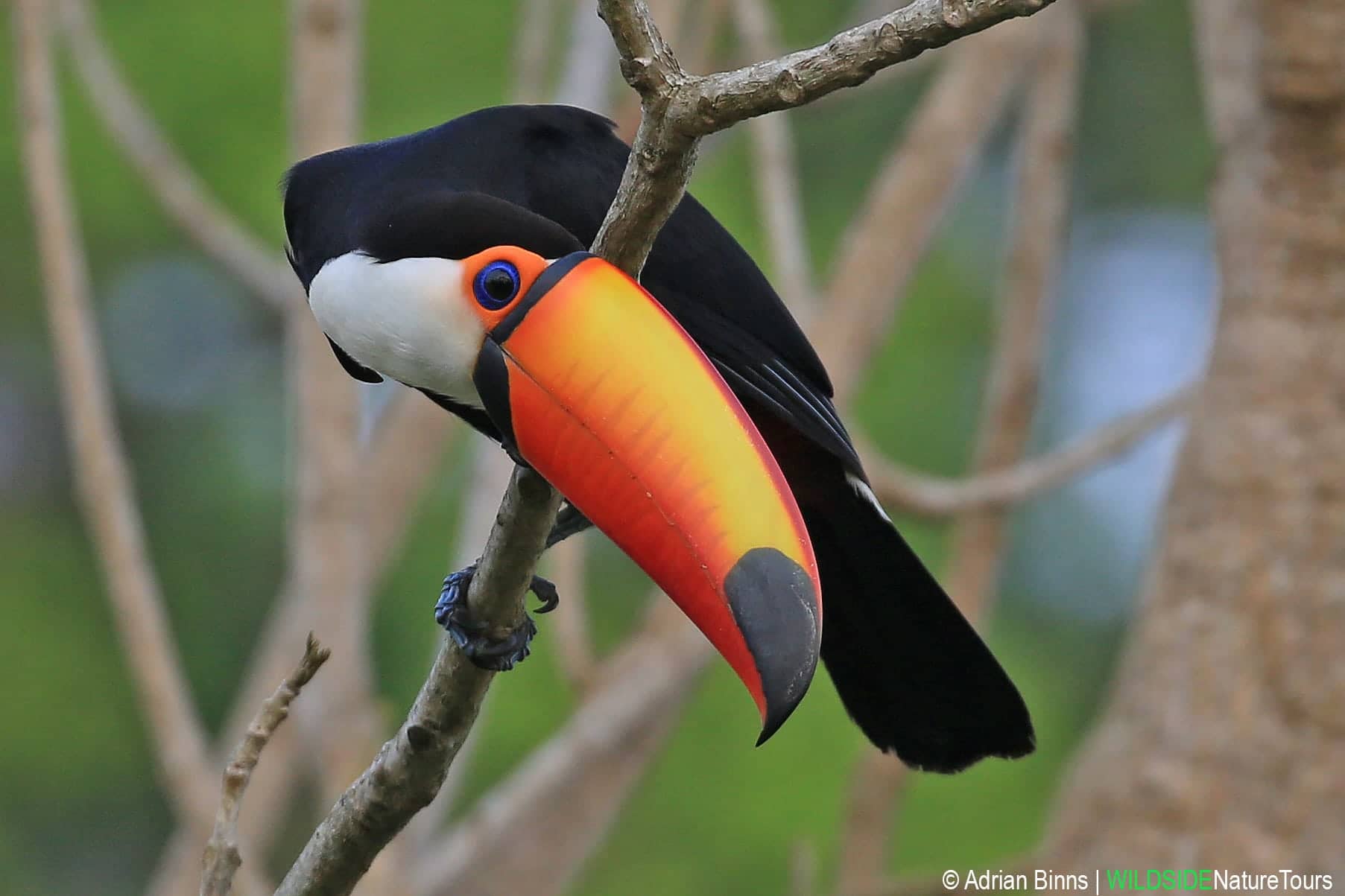
Big Bold Birds of the Pantanal
Meet our team.

Kevin Loughlin
Adrian binns, glenn crawford, chris brown, greg miller, scott weidensaul, edison buenaño, pedro guaycha, gabriel lugo, catherine hamilton, john kricher, esteban daniels, alex lamoreaux, james adams, kevin karlson, dale rosselet, luke tiller, lisa langell, dr. martin perrow, tom stephenson, martin benadie, emilie talpin, alyce bender, lisa & tom cuchara, dawn wilson, earl nottingham, jennifer leigh warner, rafael rueda hernández, news & updates.
Stay up-to-date with new tours, special offers and exciting news. We'll also share some hints and tips for travel, photography and birding. We will NEVER share nor sell your information!
- Name * First Last
- Photography
- Wildlife Viewing
- Nature Journaling
- Comments This field is for validation purposes and should be left unchanged.
Aug 6, 2020 | by Adrian Binns
It’s August, the time of year when I would usually be in Brazil exploring the Pantanal – the largest freshwater wetlands in the world. The Covid pandemic has thwarted travels, but not dreams or memories of some of the wonders of this outstanding destination. I’ll share highlights of some big, bold birds of the Pantanal.
Hyacinth Macaw (Anodorhynchus hyacinthinus)
At over 3 feet in length, the stunning cobalt blue Hyacinth Macaw is the region’s most sought-after bird. Fewer than 5,000 remain in the wild, and three-quarters of the population thrives in the Pantanal. This gregarious, endangered species, the world’s largest macaw, sports a powerful bill that functions like a nutcracker, breaking open palm nuts, their staple diet, when other creatures cannot. The bright yellow eye-ring and base of bill is bare skin, providing flashy accent to this beautiful bird. Often a pair or two nest around the pousadas at which we lodge and bird the grounds.
Toco Toucan (Ramphastos toco)
Another iconic bird of the Pantanal is the Toco Toucan with an oversized, colorful bill and bold blue eye-ring of bare skin. It’s bill is a lightweight honeycomb of keratin, and is the largest of any bird, in proportion to its body size; it is thought to help regulate body temperature. Such a broad, lightweight bill aids in reaching fruit, its main diet, from branches that would not normally support the weight of the bird. Toco Toucans are often seen in small flocks, hopping along the branches of canopy trees; they will readily come to feeders. The dry open woodlands and savanna of the Pantanal make it one of the best places to see this largest of all toucans.
Red-legged Seriema ( Cariama cristata)
In the drier northern section of the Pantanal, the loud call of Red-legged Seriema echoes through the savanna. Their voice may travel more than a mile, as they stand on a termite mound and call at dawn. They are also known as Crested Seriema due to the large crest of feathers on their head above and around their bill. Standing three feet tall, this unique species of central South America is thought to be a relative of the crane, but are probably more closely related to cuckoos, falcons, or parrots. Like the Secretary Bird of Africa, the seriema’s legs are long and strong, allowing them to cover long distances of short grassland on foot.
Southern Screamer (Chauna torquata)
The Southern Screamer, endemic to South America, is commonly seen in pairs within the wetlands and marshes of the Pantanal. Their loud trumpet-sounding calls carry for two miles (hence their name), and they act as ‘guard birds’ of their habitat, warning of danger. They are armed with sharp carpal spurs on each wing that are used to ward off rivals, protect their flightless chicks, as well as defend their territory. Built with a bulky body and relatively small neck and head, they graze on aquatic vegetation like a goose, to whom they are closely related.
Jabiru ( Jabiru mycteria )
A common sight in the wetlands along the Pantanal’s transpantaneira is the Jabiru , the largest member of the stork family. It is the tallest flying bird in the Americas, at nearly 5 foot tall – a giant of the skies. The species is unmistakable with large, upturned, all-black bill, featherless black head and neck, and red pouch that hangs around the lower neck, contrasting with a white body. When excited or stressed it inflates its red pouch; jabiru means ‘swollen neck’ in the indigenous Tupi language. Jabirus build huge stick nests usually near the top of tall isolated trees.
Greater Rhea (Rhea a mericana)
At 5 feet tall and weighing 70 pounds, the flightless Greater Rhea is the largest and heaviest of all South American birds. Rheas roam the dry savanna and open woodlands in family groups. Males are responsible for incubating eggs, deposited by several females in a scrape on the ground. He incubates for five to six weeks, and raises the brood himself which can include 30 chicks.
All of these bold birds can be seen on our Brazil: Pantanal Wildlife Safari. The Jabiru may also be seen on our Belize trips at Crooked Tree.
Leave a Comment Cancel Reply
You must be logged in to post a comment.
Tours By Region
Tours by specialty.
- Birding Tours
- Expedition Cruises
- Nature Photography
- Slow Birding
- Wildlife Tours
- Tours By Date
- Trip Reports
- Testimonials
- Tour leaders
- Gran Parque Iberá
- Proceso de formación del Parque Iberá
- Infraestructura y Uso Público
- Conservación y Manejo de Amenazas
- Nutria Gigante
- Oso Hormiguero
- Venado de las Pampas
- Pecarí de Collar
- Guacamayo Rojo
- Chuña de Patas Rojas
- Marca Iberá
- Ruta Escénica
- Desarrollo de Portales
- Promoción turística del Iberá
- Educación Ambiental
- Emprendedurismo local
- Club de Naturaleza Carambolita
- Asociaciones con marca territorial
- Diagnóstico de bienestar
- Quiénes Somos
- Nuestro Modelo
- El Impenetrable
- Patagonia Azul
- Programa Marino
- Parques para La Conservación
- SPECIAL OFFER
- PURCHASE THEME
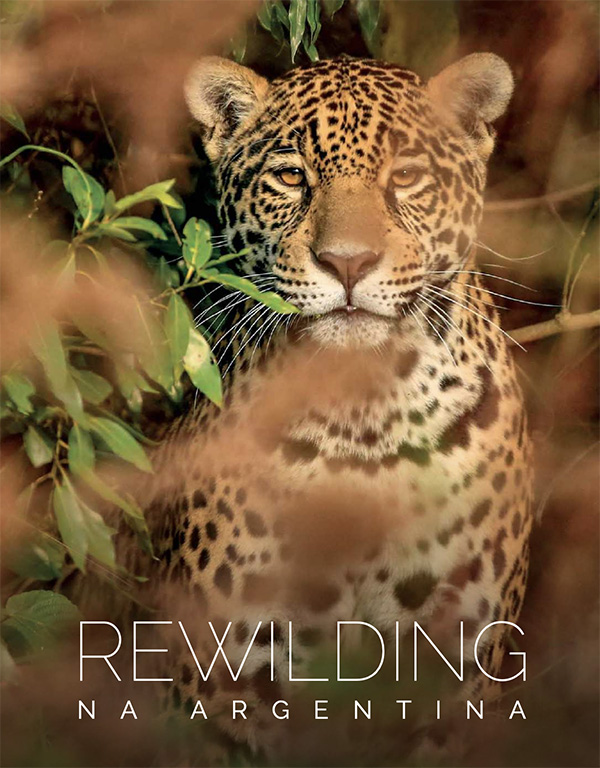
DIANA FRIEDRICH
Park and communities coordinator – patagonia azul project.
Diana is a naturalist and adventurer. She received a degree in Nature Conservation in South Africa, that led her to work in several nature reserves in Zimbabwe, Kenya and Tanzania. She was the field coordinator for the Macá Tobiano (hooded grebe) Project, an initiative of Aves Argentinas, for three seasons and worked as a field technician on Rewilding Argentina’s projects to reintroduce giant anteaters and red-and-green macaws. Currently she lives in Camarones and coordinates the Patagonia Azul project.
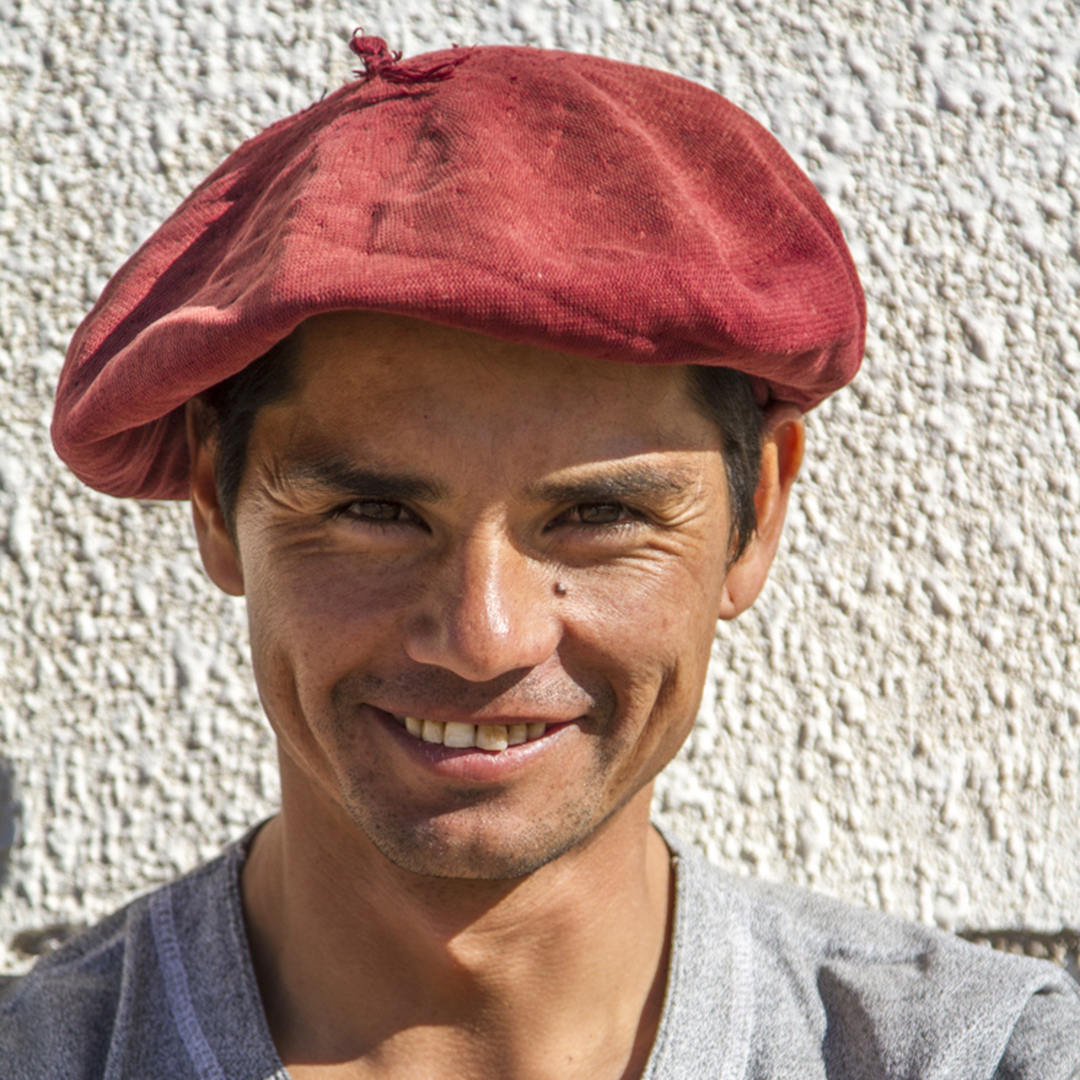
Alejandro Dumond
Operations, logistics, and maintenance assistant – patagonia azul project.
Ale is from Camarones and worked in El Sauce Ranch when the foundation acquired it. His knowledge about the ranch and the town is vital for our daily work. He oversees the operations, logistics, and maintenance areas, driving heavy machinery and helping in the field.
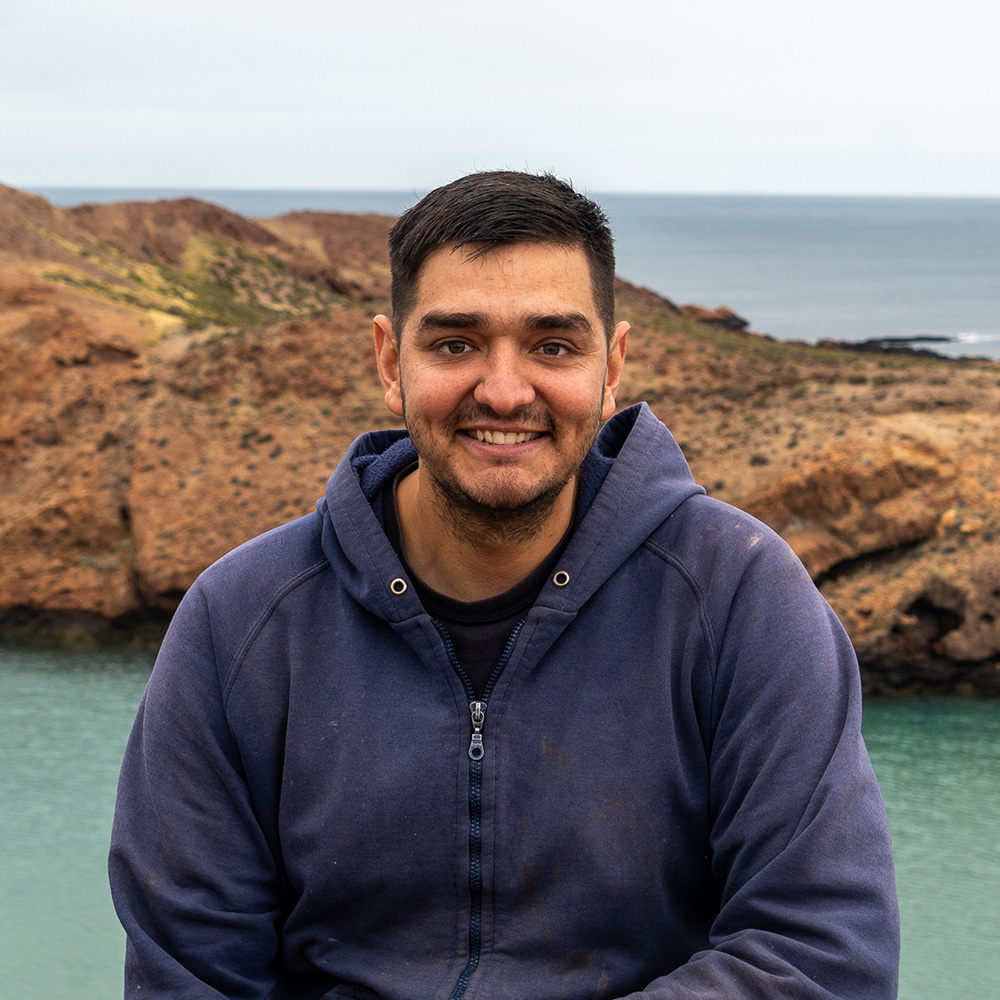
GABRIEL CORTINOVIS
Operations and logistics manager – patagonia azul project.
Gabriel’s connection to the countryside began in childhood, when he developed a passion for preserving and promoting nature. He spent nine years working in National Parks before joining the foundation in 2022 to focus on logistics and maintenance tasks.
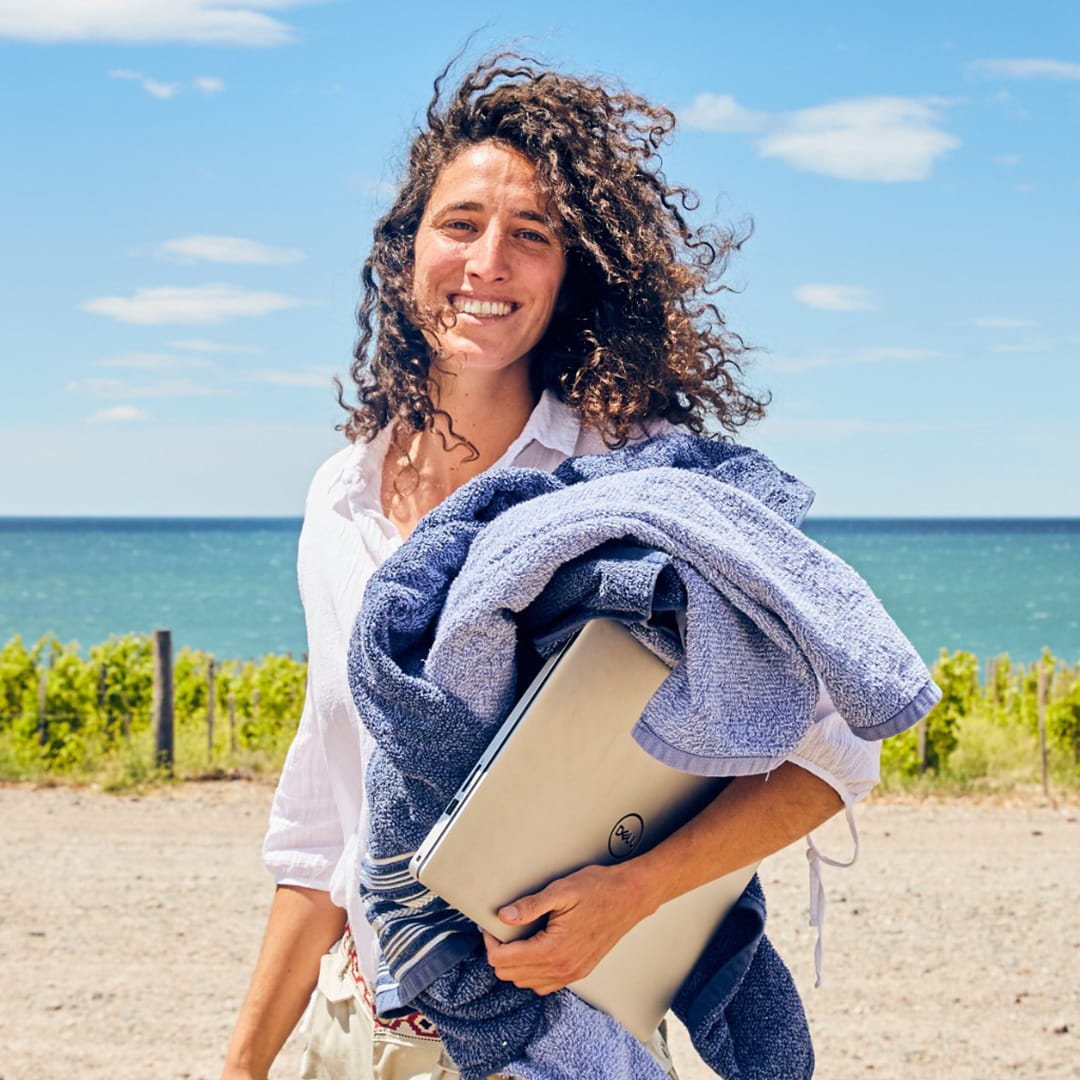
MARÍA MENDIZÁBAL
Tourism development coordinator – patagonia azul project.
Mery worked for Bahía Bustamante Lodge for many seasons, so she knows the area like the palm of her hand. She joined Fundación Rewilding Argentina in 2021 to develop the tourism activities along the Blue Route. She is passionate about the sea, adventure, and nature, which she transmits vividly to local entrepreneurs, hosts, press reporters, and tourists.
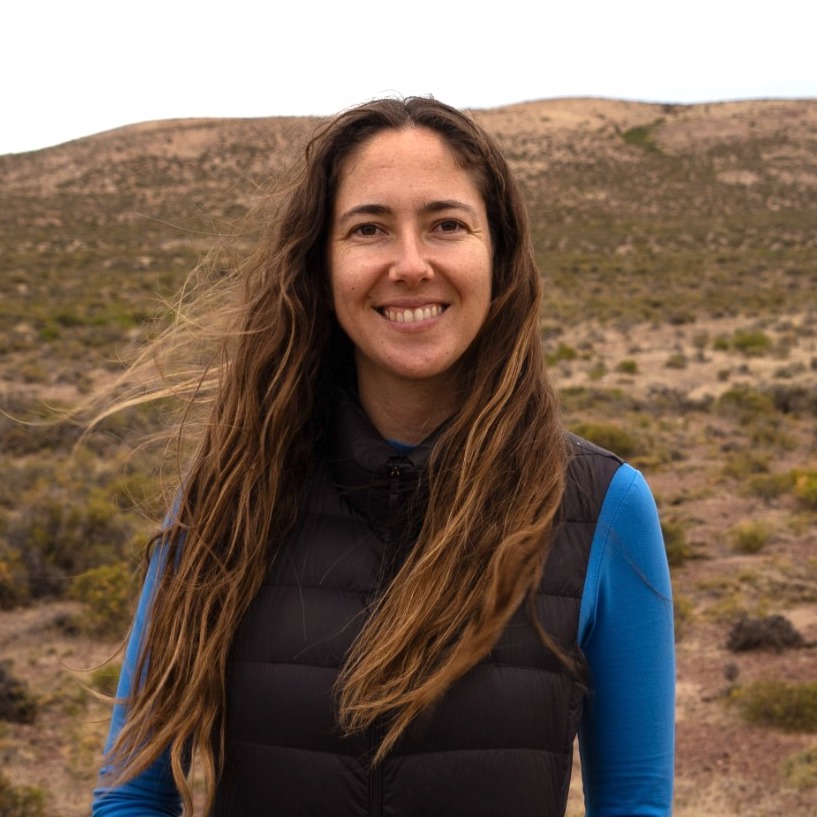
MARIANA CASSINI
Community program and communication coordinator – patagonia azul project.
Mariana is a nature lover. She has a degree in Political Science and a master’s degree in Public Policy. Mariana led projects to prevent marine pollution in coastal communities in Costa Rica for five years. A photographer, she’s passionate about using her creativity to manage community projects. She currently coordinates Patagonia Azul Project’s community program and communication team.

FRANCO CORTÉS
Operations – patagonia azul project.
Franco is originally from Gastre. He has been working at Isla Leones since 2022, where he handles operational and maintenance tasks to improve the experience of the visitors. His adaptation and willingness to carry out all types of work are notable.
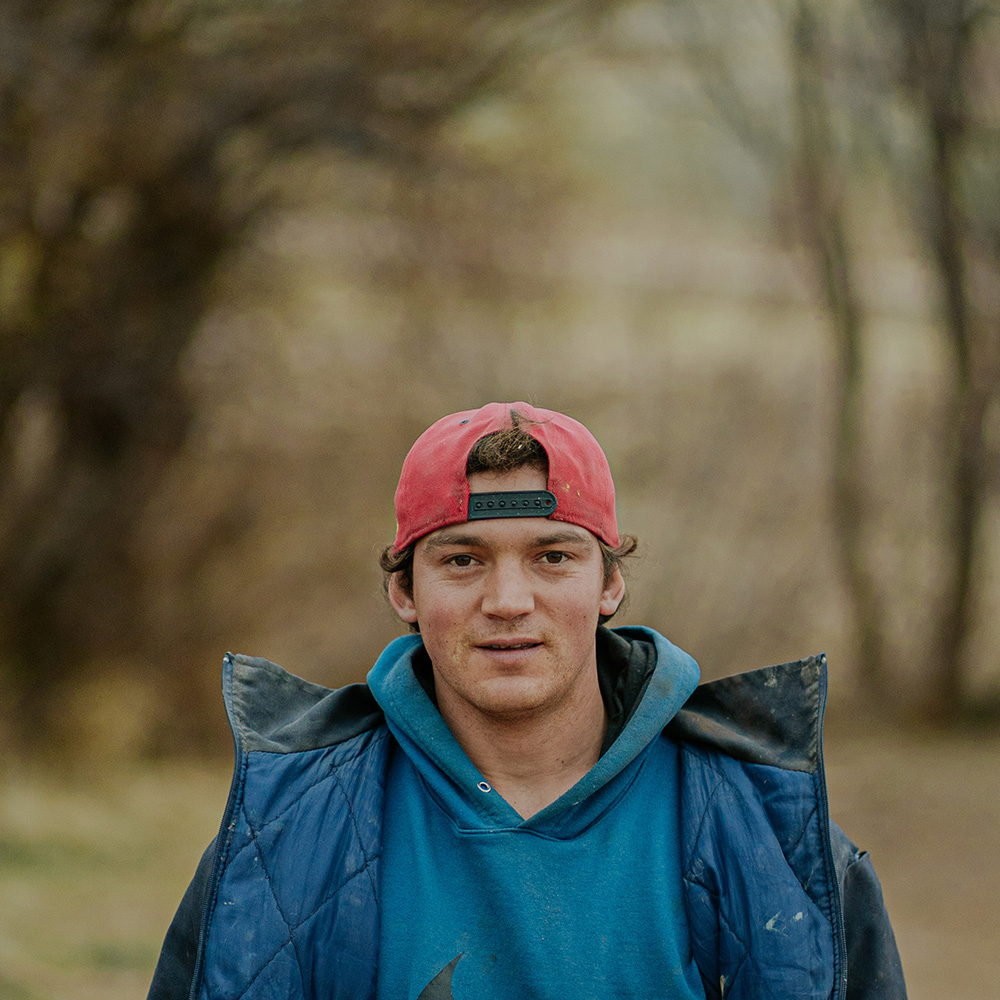
GONZALO PUHL
Gonzalo is originally from Gaiman. He has been working since 2022 at Isla Leones, where he manages infrastructure for projects related to visitors.
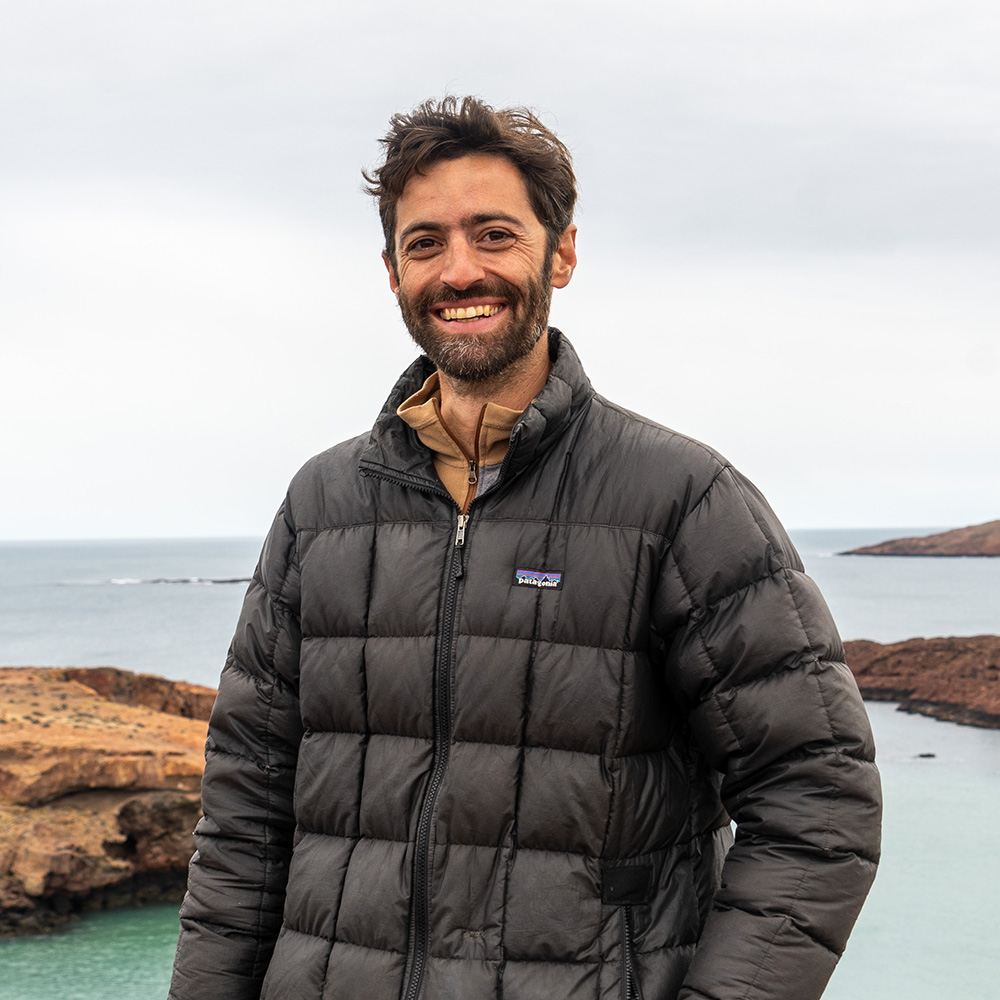
LUCAS BELTRAMINO
Conservation coordinator – patagonia azul project.
Lucas is a digital technician, professional diver, and sailor with a degree in Biological Science. For his doctorate, he studied the behavior and bio-energy of two species of Argentine marine fish, the mero (Argentine seabass) and the salmon (Argentine sandperch). For six years, he participated in the Southern Right Whale Health Monitoring Program and was a sailing instructor. Currently, he coordinates and carries out rewilding work for the Patagonia Azul Project.
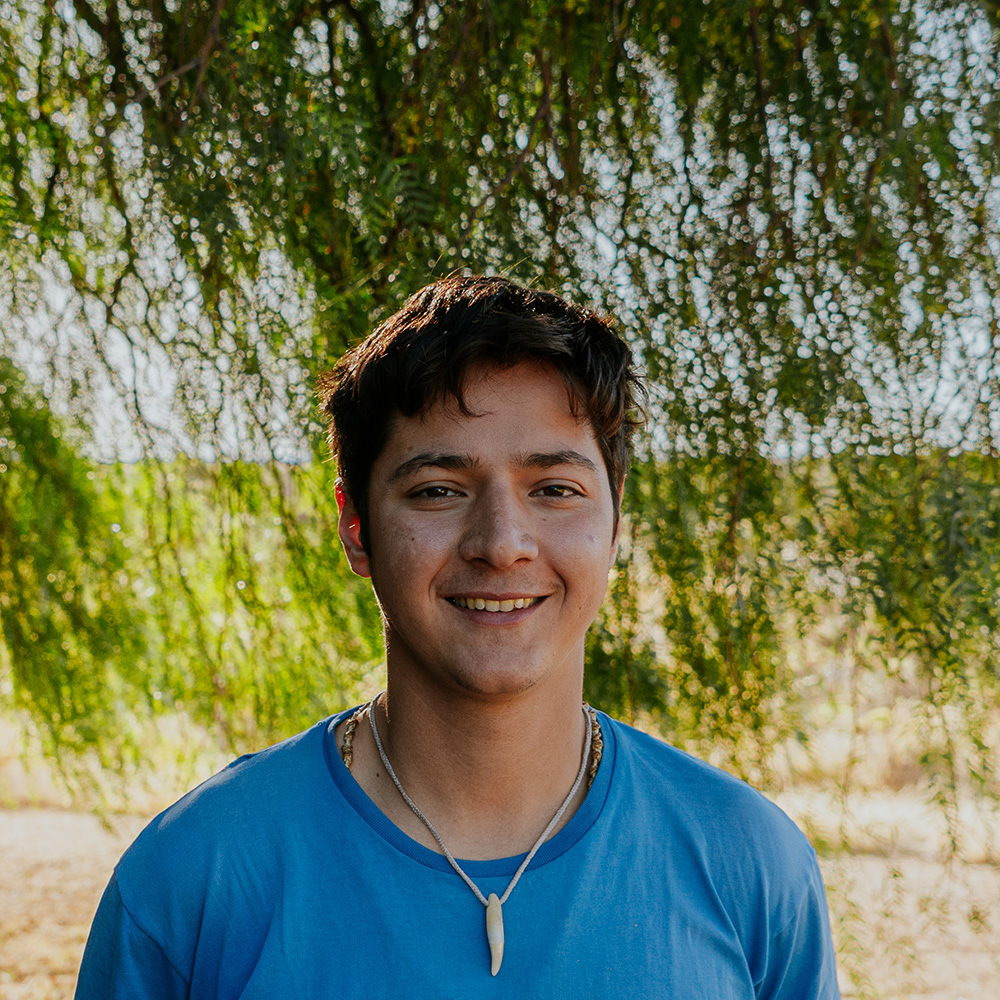
NACHO GUTIÉRREZ
Conservation – patagonia azul project.
Nacho is a nature and wildlife lover. In 2021 he volunteered in different projects in Iberá and El Impenetrable. Since 2022 he has been working as a field technician in the conservation projects of Patagonia Azul.
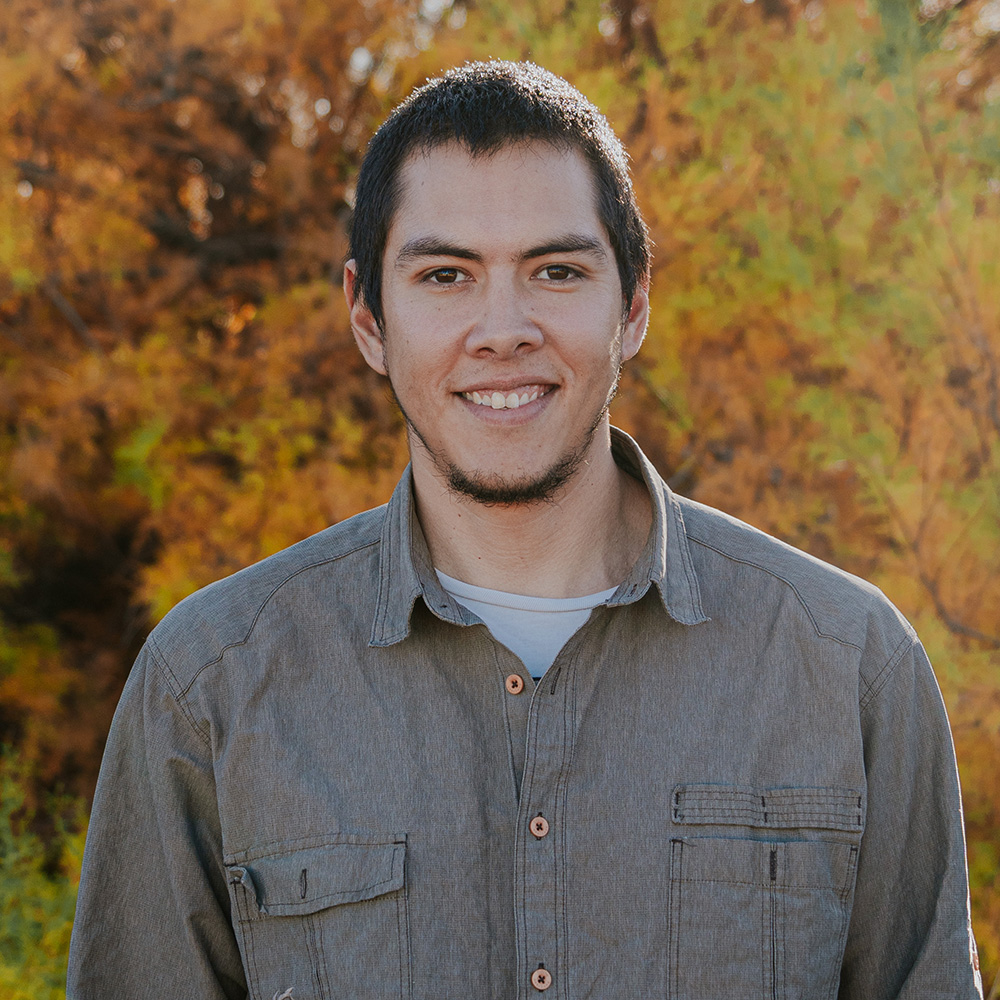
GUSTAVO RIVERO
Creative and self-taught, Gustavo is passionate about nature and adventure tourism. He is currently studying Biology and renewable energies. He has more than ten years of experience in the field of surveying. Today he is part of the Patagonia Azul conservation team.
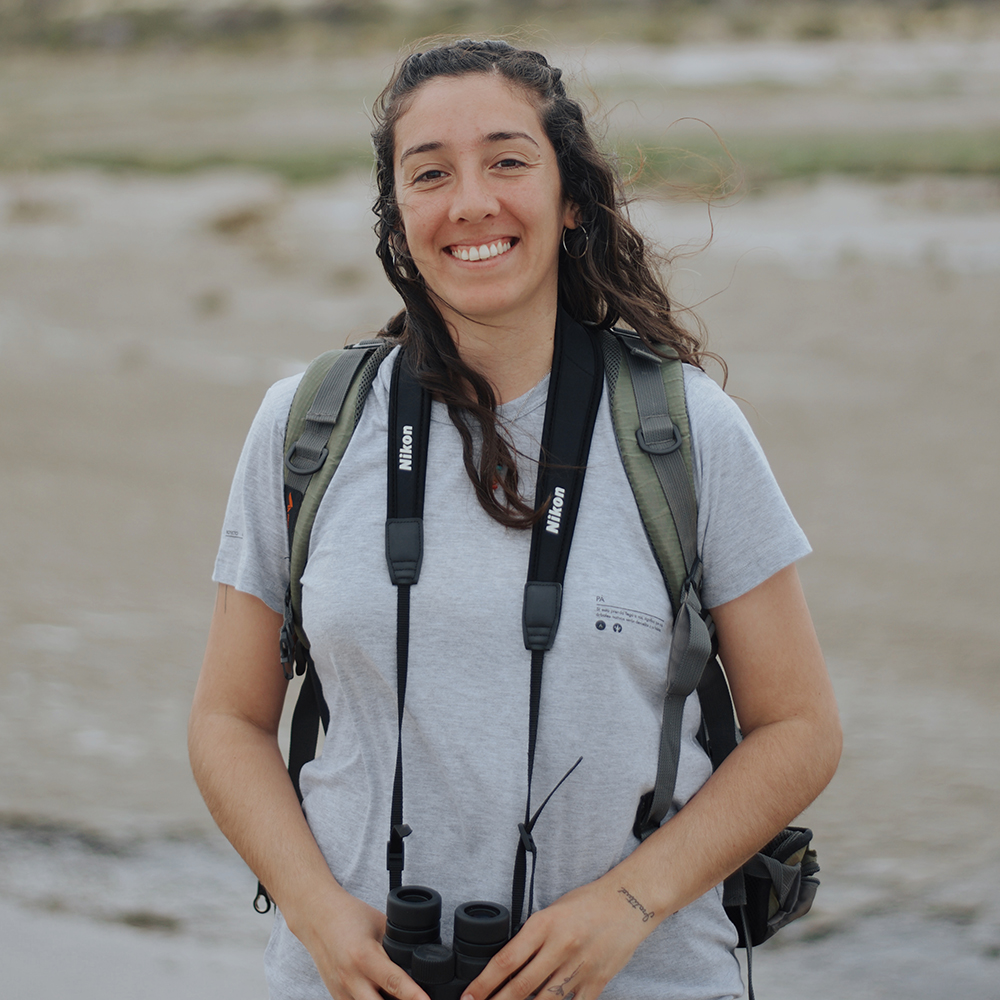
FERNANDA VENDITTI
Communities – patagonia azul project.
Fer is originally from Córdoba, where she graduated as a park ranger, and is also an English teacher. From a very young age, she felt a great connection with nature. She currently works in the Communities area of the Patagonia Azul Project.

GERMÁN LAFUENTE
Host at arroyo marea campground – patagonia azul project.
Germán grew up in Misiones. He is an environmentalist and passionate about nature. He worked on various reserves and conservation projects. Today he works as a host at the park entrance in Patagonia Azul.
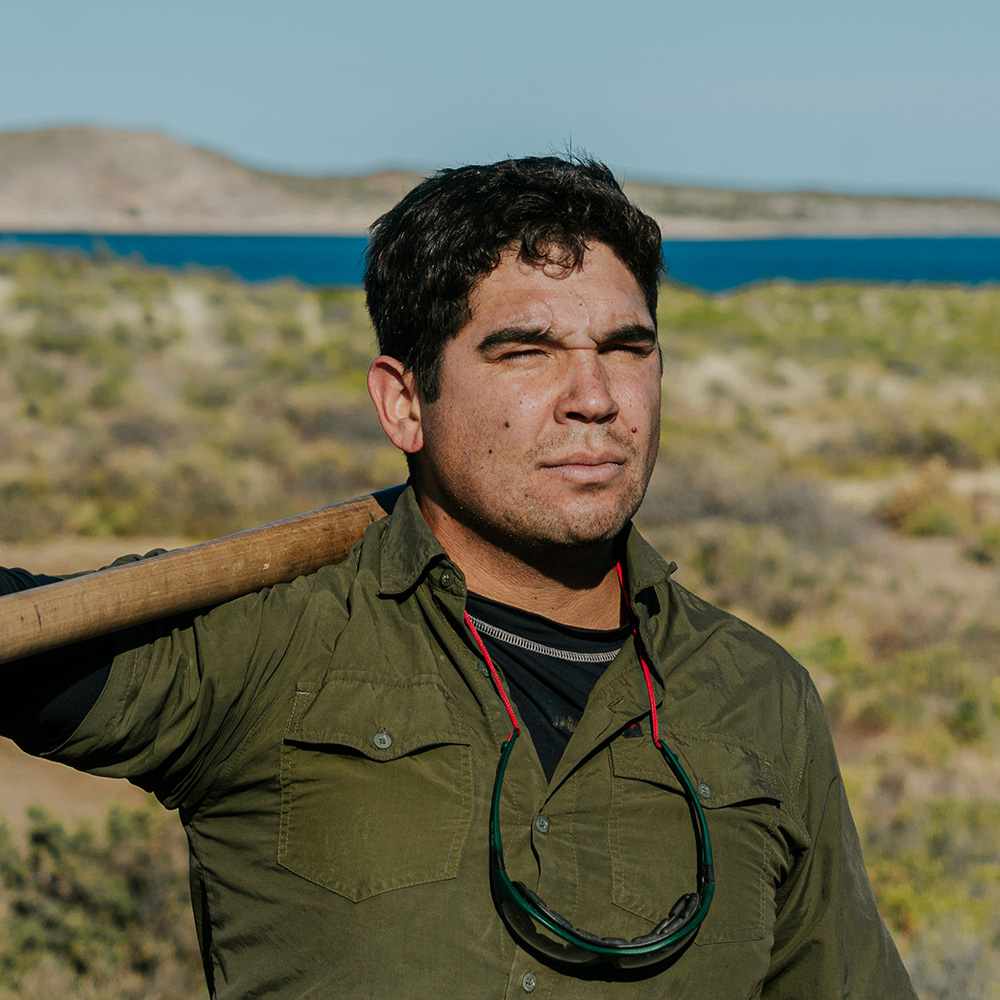
AGUSTÍN NAULA
Public use infrastructure – patagonia azul project.
Originally from Rada Tilly, Chubut, Agustín is passionate about nature conservation. He joined the foundation in 2023 to manage the trails team of the Patagonia Azul Project.
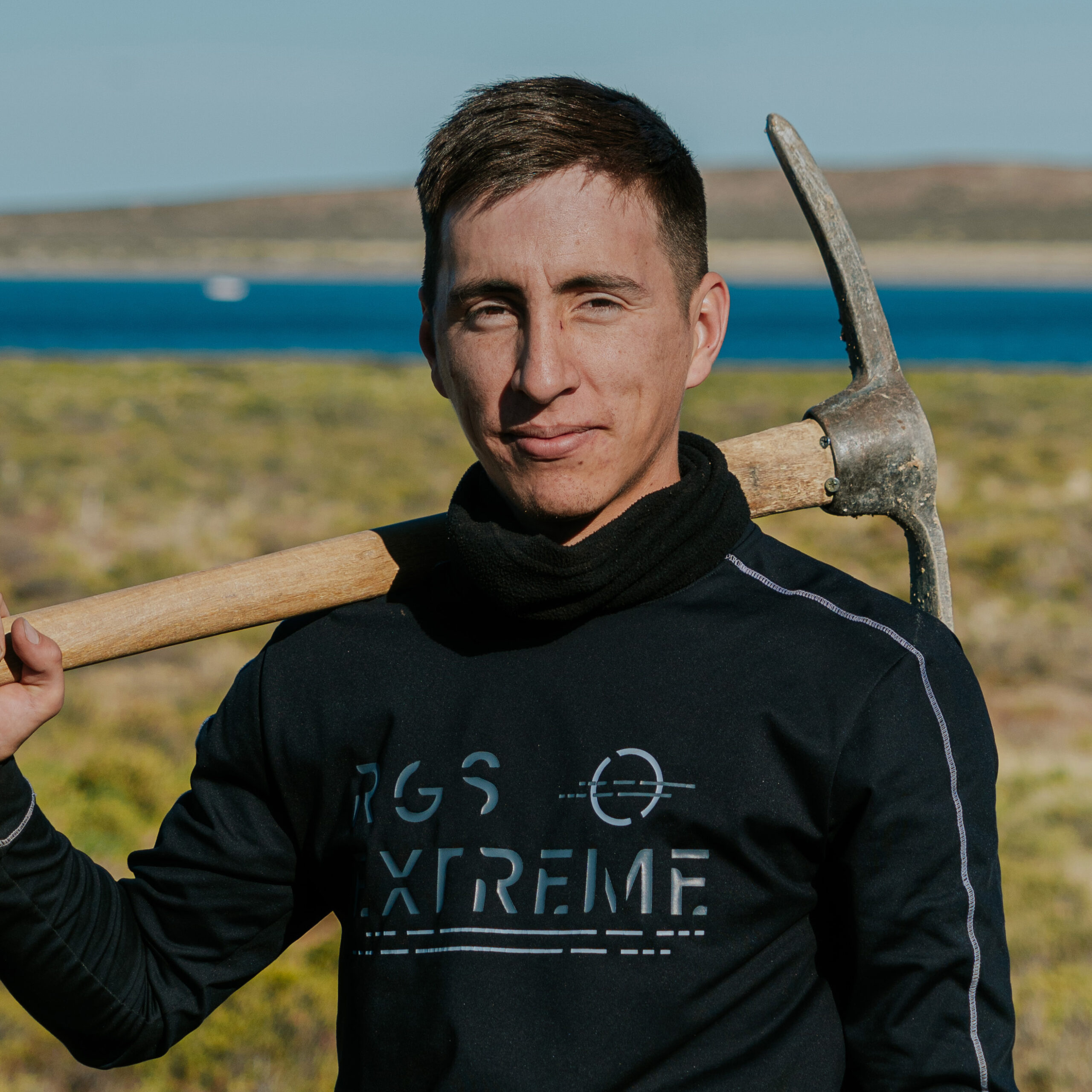
GABRIEL HÖGER
Originally from Camarones, Gabriel works on trails and the creation of public spaces. He joined the foundation in 2022 as a public use infrastructure development assistant in the Patagonia Azul Project.

JULIO ROBLES
Originally from Santiago del Estero, Julio worked in an agricultural company and is currently dedicated to trail work. He joined the foundation IN 2023 as a development assistant for public use infrastructure at the Patagonia Azul Project.

JOSÉ FERREIRA
José was born in Camarones. He is very passionate about bird watching and the sea. He joined the foundation in 2021 as construction and maintenance foreman at the Patagonia Azul Project.
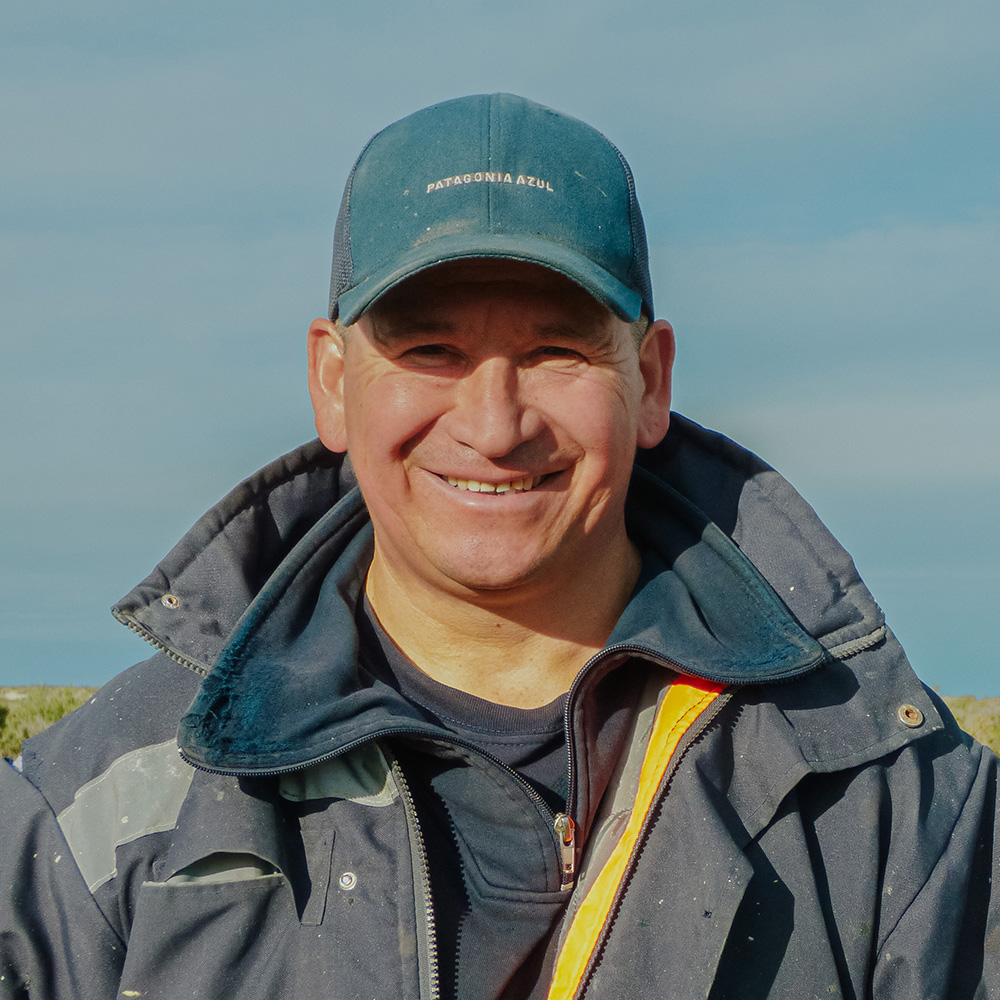
ALEXIS OTAROLA
Originally from Trelew, Alexis enjoys working in the fields and at sea with his colleagues. He joined the foundation to work in the works and maintenance area, rebuilding camping spaces for tourists at the Patagonia Azul Project.
Coordinadora de Parques y Comunidades – Proyecto Patagonia Azul
Diana es naturalista y aventurera. Estudió una Tecnicatura en Conservación de la Naturaleza en Sudáfrica, que la llevó a trabajar en varias reservas naturales en Zimbabwe, Kenya y Tanzania. Coordinó el trabajo de campo en el Proyecto Macá Tobiano (Aves Argentinas) durante 3 temporadas y trabajó como técnica de campo en los proyectos de reintroducción de osos hormigueros gigantes y guacamayos rojos de Rewilding Argentina. Hoy, vive en Camarones y coordina el proyecto Patagonia Azul.
Asistente de Operaciones, Logística y Mantenimiento – Proyecto Patagonia Azul
Ale es oriundo de Camarones y ya trabajaba como encargado en El Sauce cuando llegó el equipo de la fundación. Su conocimiento de la estancia y la localidad es clave para nuestro trabajo diario. Hoy se ocupa del área de operaciones, logística y mantenimiento, manejando la maquinaria y ayudando en el campo cuando es necesaria su experiencia.
Coordinador de Operaciones y Logística – Proyecto Patagonia Azul
Gabriel estuvo en contacto con el campo desde chico, cuando nació su pasión por preservar y dar a conocer la naturaleza. Trabajó en Parques Nacionales durante nueve años antes de unirse a la fundación en el año 2022 para desarrollar tareas de logística y mantenimiento de obras.
Responsable de Desarrollo Turístico – Proyecto Patagonia Azul
Mery ya conocía la región del Parque Patagonia Azul gracias a dos temporadas de trabajo en el lodge Bahía Bustamante, vecino al Parque. Se unió a nuestro proyecto para desarrollar la oferta turística a lo largo de toda la Ruta Azul. Transmite vívidamente su pasión por el mar, la aventura y la naturaleza, contagiando entusiasmo a los emprendedores locales, operadores turísticos, anfitriones, periodistas, y a los turistas que recibimos.
Coordinadora de Comunidades y Comunicación – Proyecto Patagonia Azul
Mariana es una amante de la naturaleza con formación en Ciencias Políticas y un posgrado en Políticas Públicas. Durante cinco años, lideró proyectos de prevención de contaminación marina en comunidades costeras en una ONG en Costa Rica. Es fotógrafa y apasionada por llevar su creatividad a la gestión de proyectos comunitarios. Actualmente coordina el equipo de comunidades y de comunicación en el Proyecto Patagonia Azul.
Operaciones – Proyecto Patagonia Azul
Oriundo de la meseta (Gastre), Franco trabaja en el área de operaciones en el Portal Isla Leones desde el año 2022, donde realiza tareas de mantenimiento para mejorar la estadía de los visitantes. Son destacables su adaptación y disposición para realizar todo tipo de trabajos.
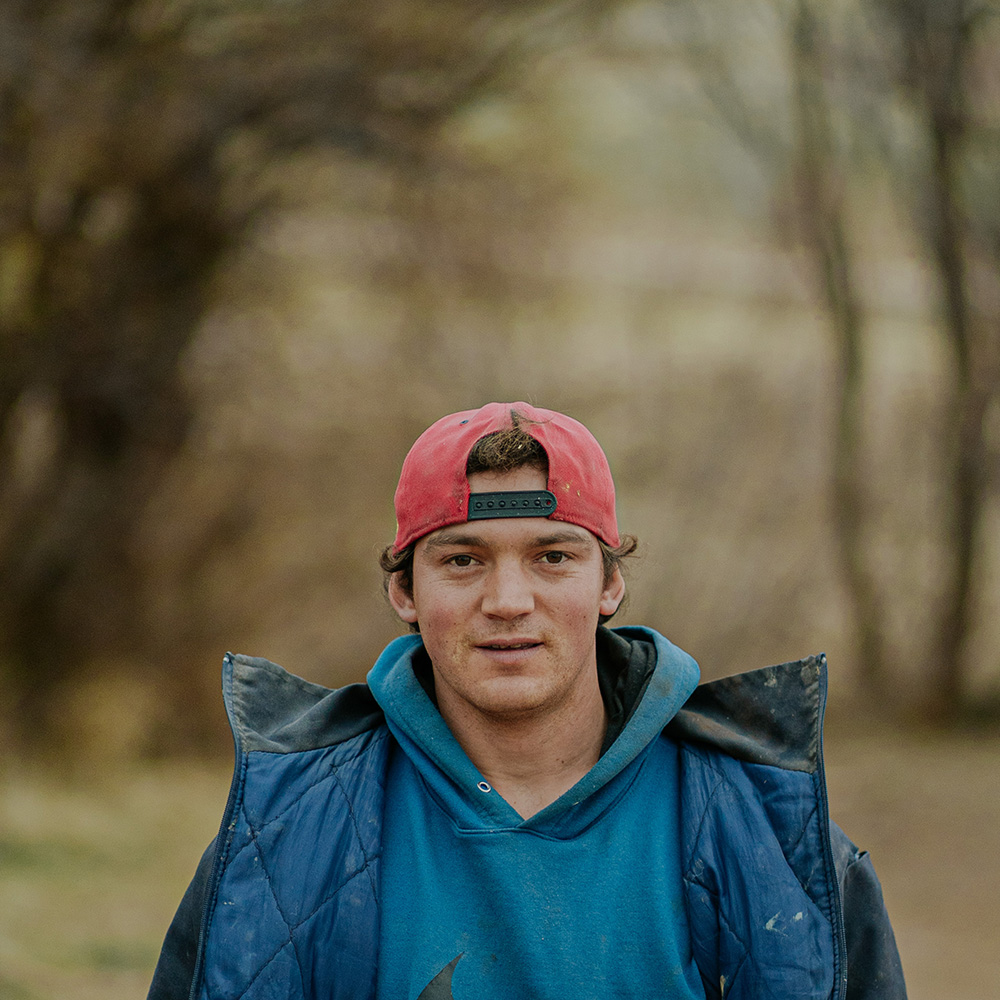
Oriundo de Gaiman, Gonzalo trabaja desde 2022 en el área de operaciones en el Portal Isla Leones. Su gran capacidad de aprendizaje lo ha convertido en un importante eslabón del equipo de operaciones para construir la infraestructura necesaria para los visitantes.
Coordinador de Conservación – Proyecto Patagonia Azul
Lucas es Técnico Digital, licenciado en Ciencias Biológicas, buzo profesional y navegante. Su tesis de licenciatura se basó en el estudio comportamental y bionergético del mero patagónico. Participó en el Programa de Monitoreo Sanitario de la Ballena Franca Austral durante 6 años. Durante ese tiempo, se desempeñó también como instructor de navegación a vela. Actualmente coordina y lleva a cabo las tareas de rewilding en el proyecto Patagonia Azul.
Conservación – Proyecto Patagonia Azul
Nacho es un amante de la vida silvestre y las actividades en la naturaleza. En el año 2021 participó como voluntario en distintos proyectos en Iberá y El Impenetrable. Desde el año 2022 trabaja como técnico de campo en las tareas de conservación del Proyecto Patagonia Azul.
Creativo, autodidacta y apasionado por la naturaleza y el turismo aventura, Gustavo estudia actualmente ciencias biológicas y energías renovables. Tiene más de 10 años de experiencia en el rubro de la agrimensura. Hoy forma parte del equipo de Conservación del Proyecto Patagonia Azul.
Comunidades – Proyecto Patagonia Azul
Fer es oriunda de Córdoba, en donde se recibió como técnica en Guardaparque, y además, es profesora de inglés. Desde muy pequeña sintió una gran conexión con la vida natural. Actualmente trabaja en el área de Comunidades del proyecto Patagonia Azul.
Anfitrión del Camping Arroyo Marea – Proyecto Patagonia Azul
Criado y formado en la selva misionera, Germán es ambientalista y un apasionado por la naturaleza. Trabajó en numerosas reservas y proyectos de conservación e investigación. Hoy trabaja como anfitrión en portales de uso público en el proyecto Patagonia Azul.
Uso público – Proyecto Patagonia Azul
Oriundo de Rada Tilly, Chubut, Agustín es un apasionado de la protección y conservación de la naturaleza. Se unió a la fundación en el 2023 para gestionar al equipo de sendas del proyecto Patagonia Azul.
Oriundo de Camarones, Gabriel se unió a la fundación en el año 2022 como ayudante de desarrollo de infraestructura de uso público en el Proyecto Patagonia Azul.
Oriundo de Santiago del Estero, Julio trabajó en una empresa agraria y actualmente se dedica al trabajo de sendas. Se unió a la fundación en el año 2023 como ayudante de desarrollo de infraestructura de uso público en el Proyecto Patagonia Azul.
José nació en Camarones. Es un gran apasionado de la observación de aves y del mar. Se unió a la fundación en el año 2021 como capataz de la construcción y encargado de mantenimiento en el Proyecto Patagonia Azul.
Oriundo de Trelew, Alexis disfruta mucho del trabajo en el campo y el mar junto a sus compañeros. Se unió a la fundación para trabajar en el área de obras y mantenimiento, reconstruyendo espacios de acampe para los turistas.
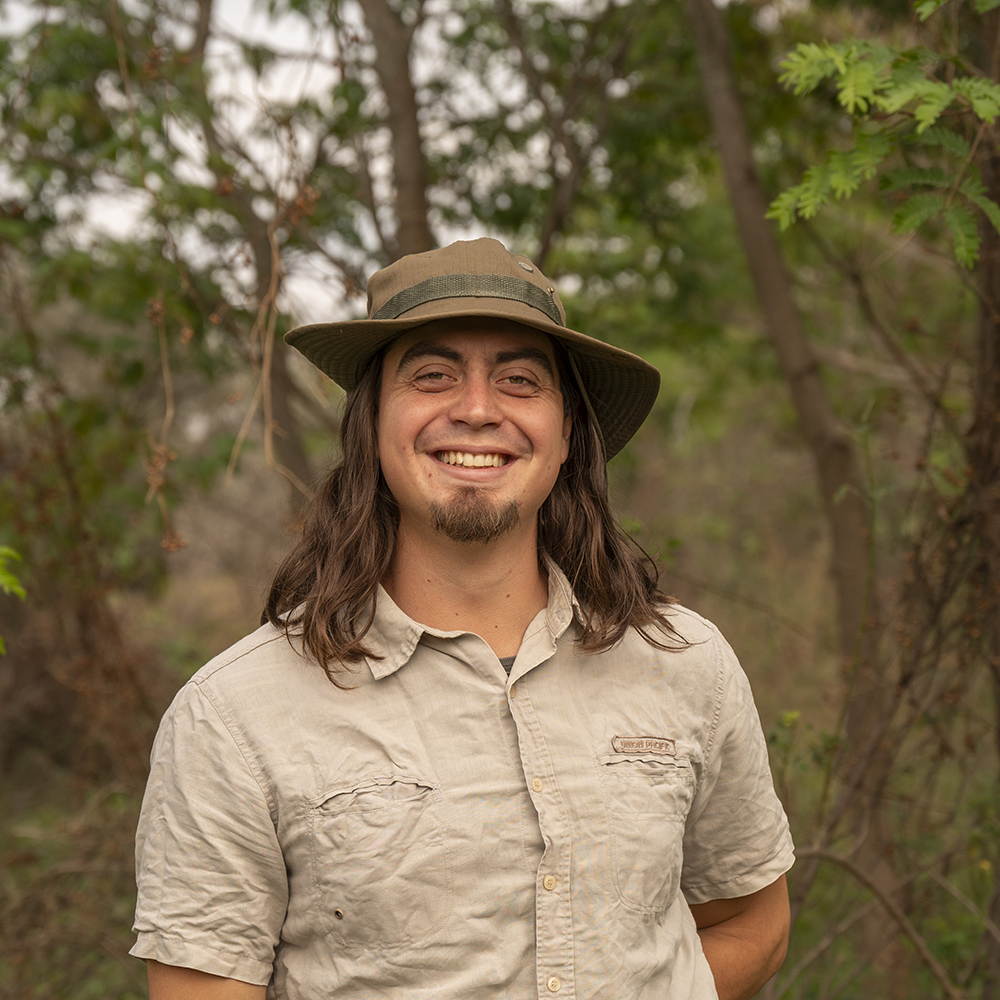
JULIÁN DE BERNADEZ – Guardaparque
Responsable de operaciones – proyecto el impenetrable.
Julián es oriundo de Entre Ríos. Estudió la carrera de guardaparque en Puerto Madryn y fue voluntario en la Estación Los Palmares antes de unirse a Rewilding Argentina en 2023, donde coordina el equipo de Operaciones, logística y mantenimiento de las instalaciones ubicadas en Paraje La Armonía y el Camping La Fidelidad.
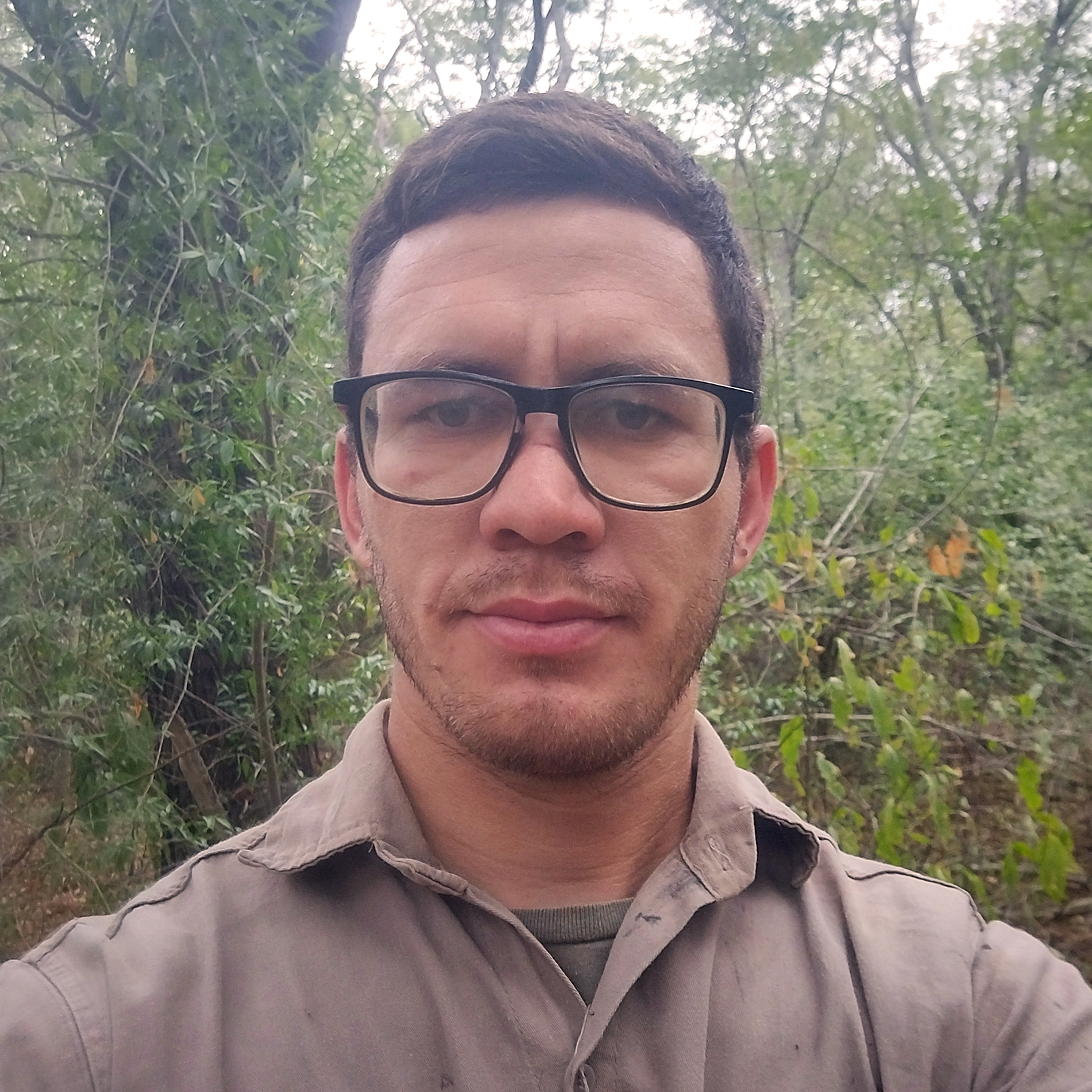
WILLIAM CARDOZO
Operaciones – proyecto el impenetrable.
Willy es oriundo de Miraflores, Chaco. Comenzó a trabajar en la fundación en junio de 2023, donde coordina la construcción de obras y caminos.
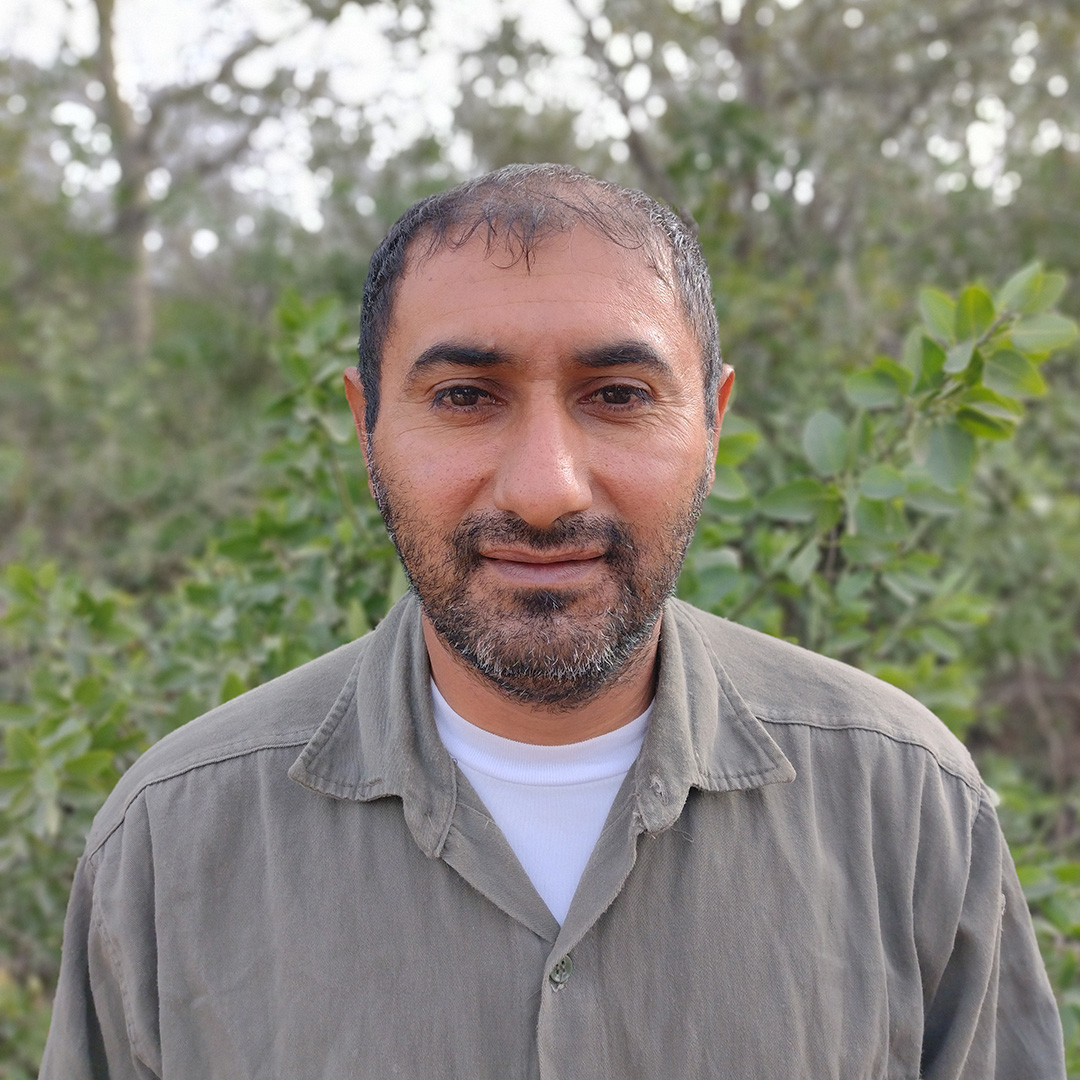
Rogelio Constantino Soraire
Rogelio comenzó su trabajo en la Fundación en 2017. Sus responsabilidades incluyen tareas operativas, de logística, mantenimiento y obras en el Proyecto El Impenetrable, en Chaco.
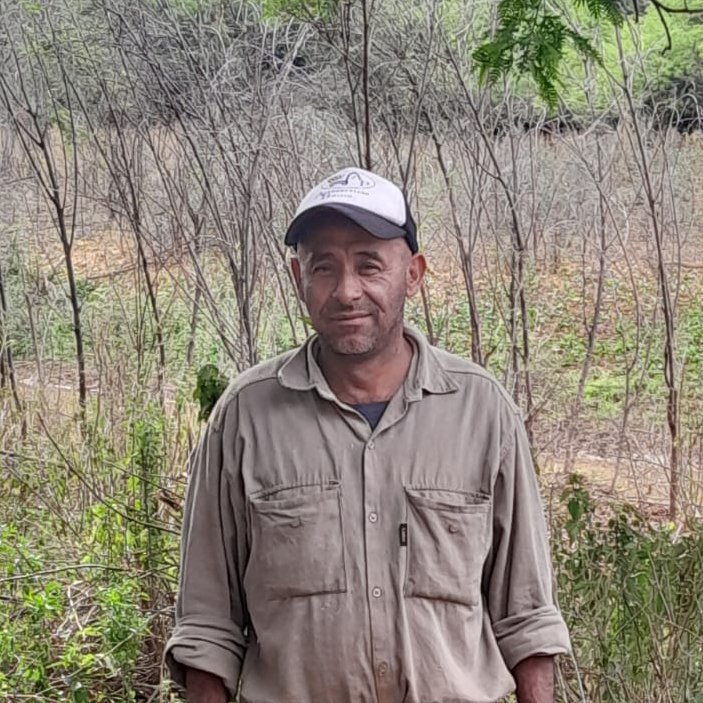
CIRILO TEJADA
Cirilo se crió en el Paraje Bajada de la Cruz, en las inmediaciones del Parque Nacional El Impenetrable. Se unió a la fundación en 2021 para llevar adelante tareas de logística, mantenimiento, obras y caminos.
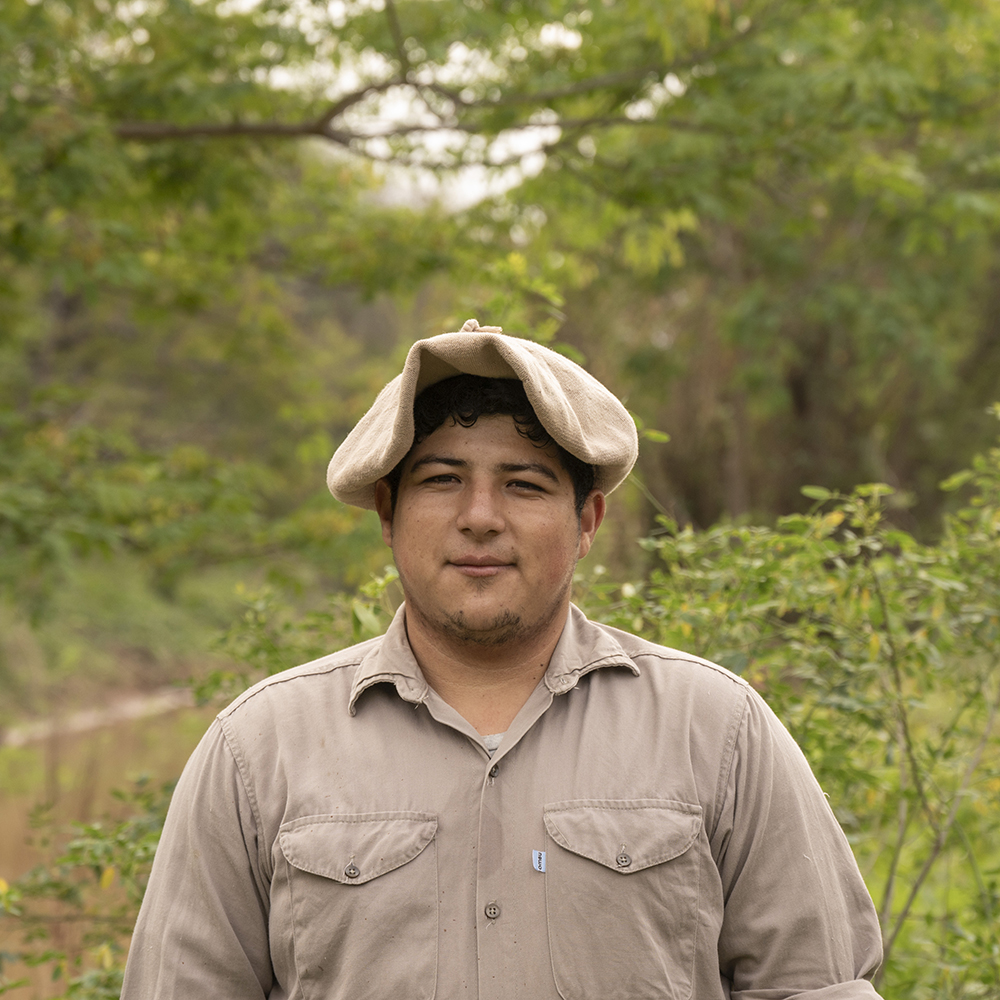
MANUEL Soraire
Manuel se crió en el Paraje Fortín Arenales, en las inmediaciones de lo que hoy es el Parque Nacional El Impenetrable. Se unió a la fundación en 2022, donde realiza tareas operativas, de logística y mantenimiento de las instalaciones.
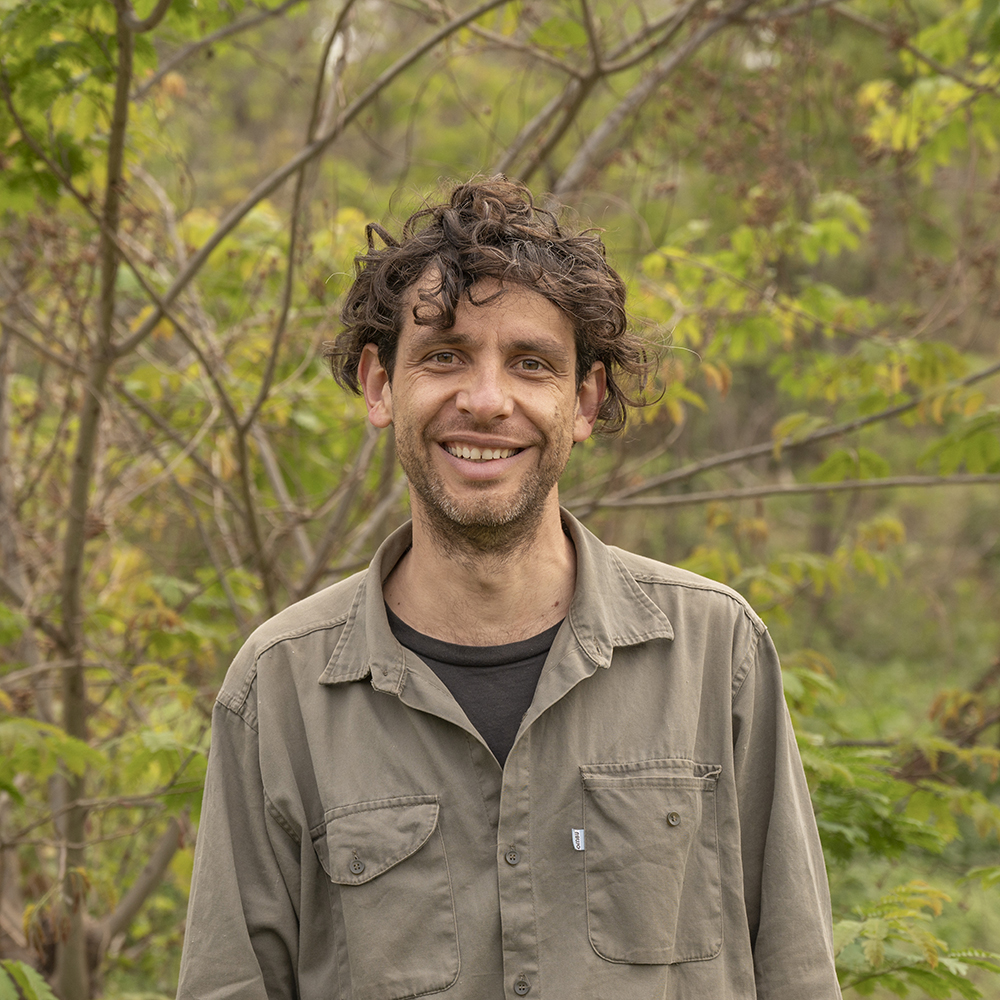
FRANCISCO DEON
Francisco es oriundo de Villa Allende, Córdoba, provincia en la que se desempeñó como guía de senderismo. Fue voluntario en la estación de campo El Teuco antes de unirse a la fundación en 2023 para llevar adelante tareas operativas, de logística y mantenimiento de las instalaciones.
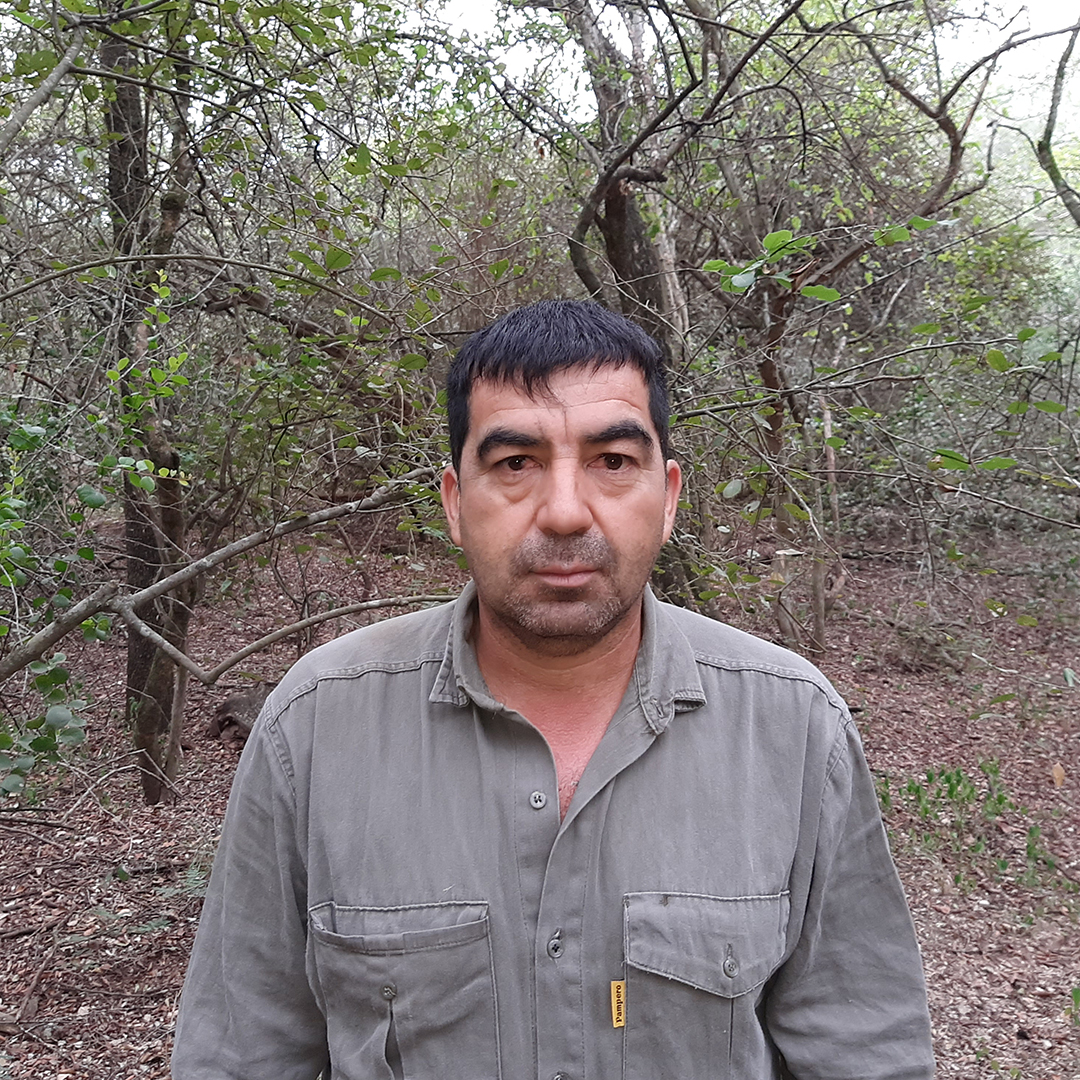
Andrés Montes
Responsable del camping la fidelidad – proyecto el impenetrable.
Andrés nació y creció en el Paraje Santa Teresa, en las inmediaciones del actual Parque Nacional El Impenetrable. Se unió a Rewilding Argentina en 2017 para desempeñar tareas operativas, de logística, mantenimiento y obras y, más adelante, como responsable del camping La Fidelidad.

MARISI LÓPEZ
Coordinadora de relaciones institucionales y turismo de naturaleza.
Marisi López es licenciada en Relaciones Públicas. En 2005 se sumó al equipo de Fundación Rewilding Argentina para trabajar en el Proyecto Iberá, Corrientes, donde desde entonces lidera los procesos de apertura al uso público y donación de portales turísticos. En el Proyecto El Impenetrable, Chaco, Marisi es la referente en Turismo de Naturaleza y Relaciones Institucionales ante la prensa, la sociedad civil y actores de la comunidad.
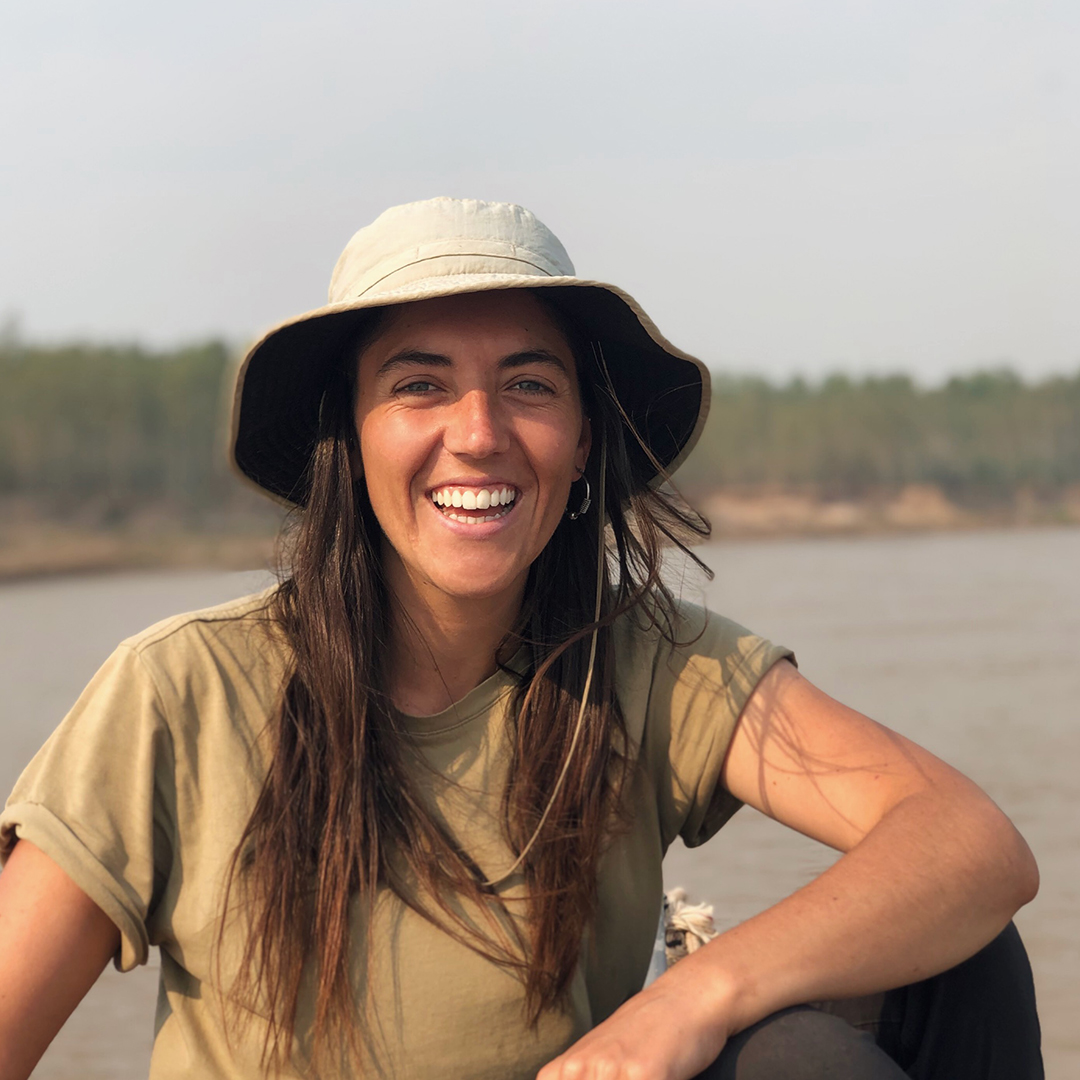
FÁTIMA HOLLMANN
Responsable del programa comunidades – proyecto el impenetrable.
Fátima es Administradora de Empresas y se unió a la Fundación en 2019. Desde entonces, coordina el desarrollo de emprendimientos y de estrategias para mejorar el bienestar de las comunidades vecinas al Parque Nacional El Impenetrable, en Chaco.

LUCÍA KRONHAUS
Coordinadora del programa bienestar comunitario – proyecto el impenetrable.
Luli nació en Pehuajó, Buenos Aires. Egresada de la carrera de Comunicación, orientó su trabajo hacia el área social, con énfasis en proyectos comunitarios rurales en África y en El Impenetrable chaqueño. En este último lugar conoció a Rewilding Argentina, equipo al que se unió en 2023 para diseñar y coordinar estrategias que apuntan a mejorar el bienestar de las comunidades locales.
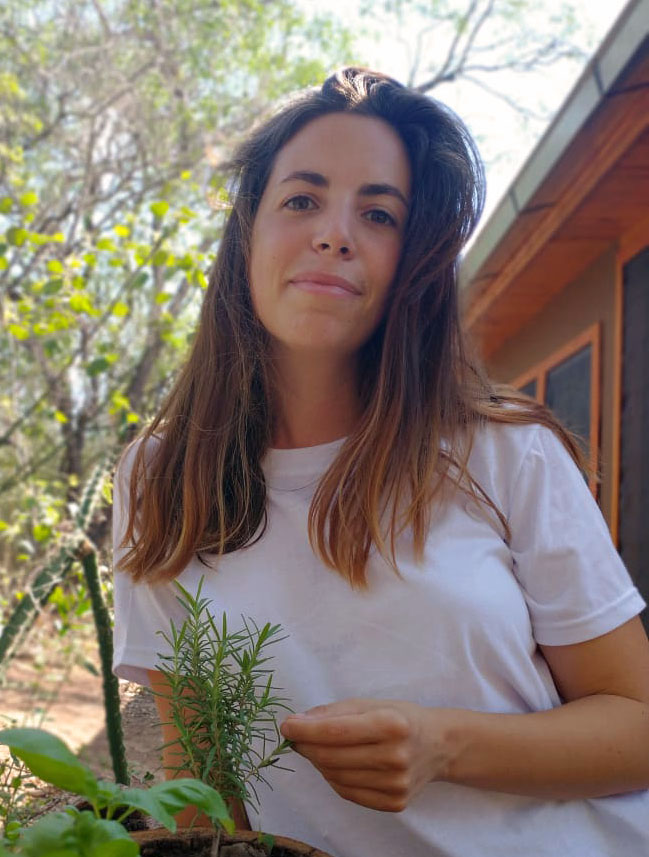
Constanza Mozzoni – Lic. en Ciencias Biológicas
Coordinadora en el núcleo la armonía del programa bienestar comunitario – proyecto el impenetrable.
Coni se crió en Bahía Blanca y estudió la carrera de biología en Buenos Aires. En 2019 fue voluntaria en la estación de campo El Teuco y ese mismo año se unió a Rewilding Argentina para coordinar estrategias y acciones que apuntan a mejorar el bienestar de la comunidad de La Armonía.
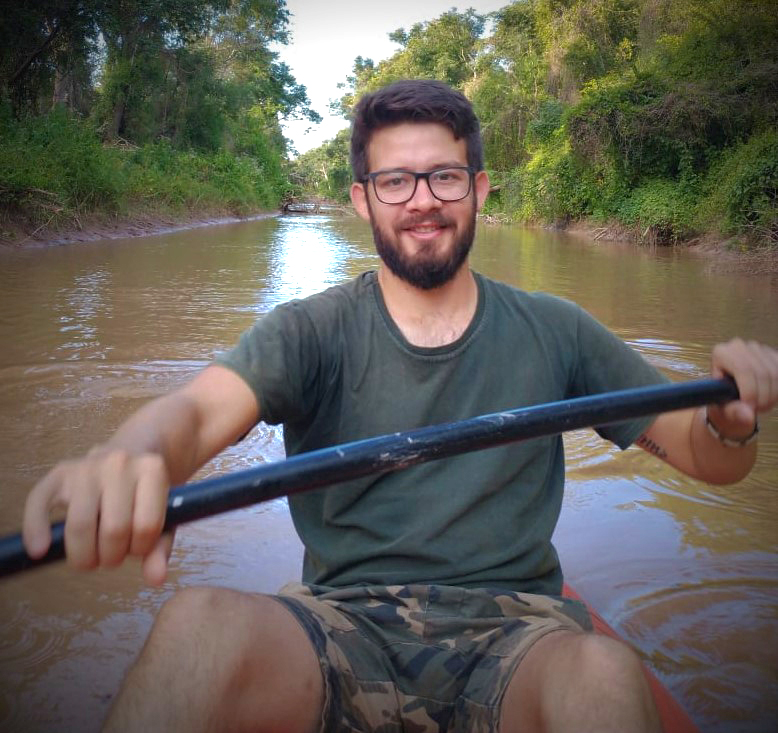
ALEJANDRO AQUINO
Coordinador en el núcleo la armonía del programa bienestar comunitario – proyecto el impenetrable.
Ale es de Las Breñas, del interior de Chaco. En 2016 y 2018 fue voluntario en el campamento de La Armonía y la estación de campo El Teuco. Se unió a Rewilding Argentina en 2019, como coordinador local en comunidades en el núcleo La Armonía, donde trabaja en el desarrollo de economías regenerativas.
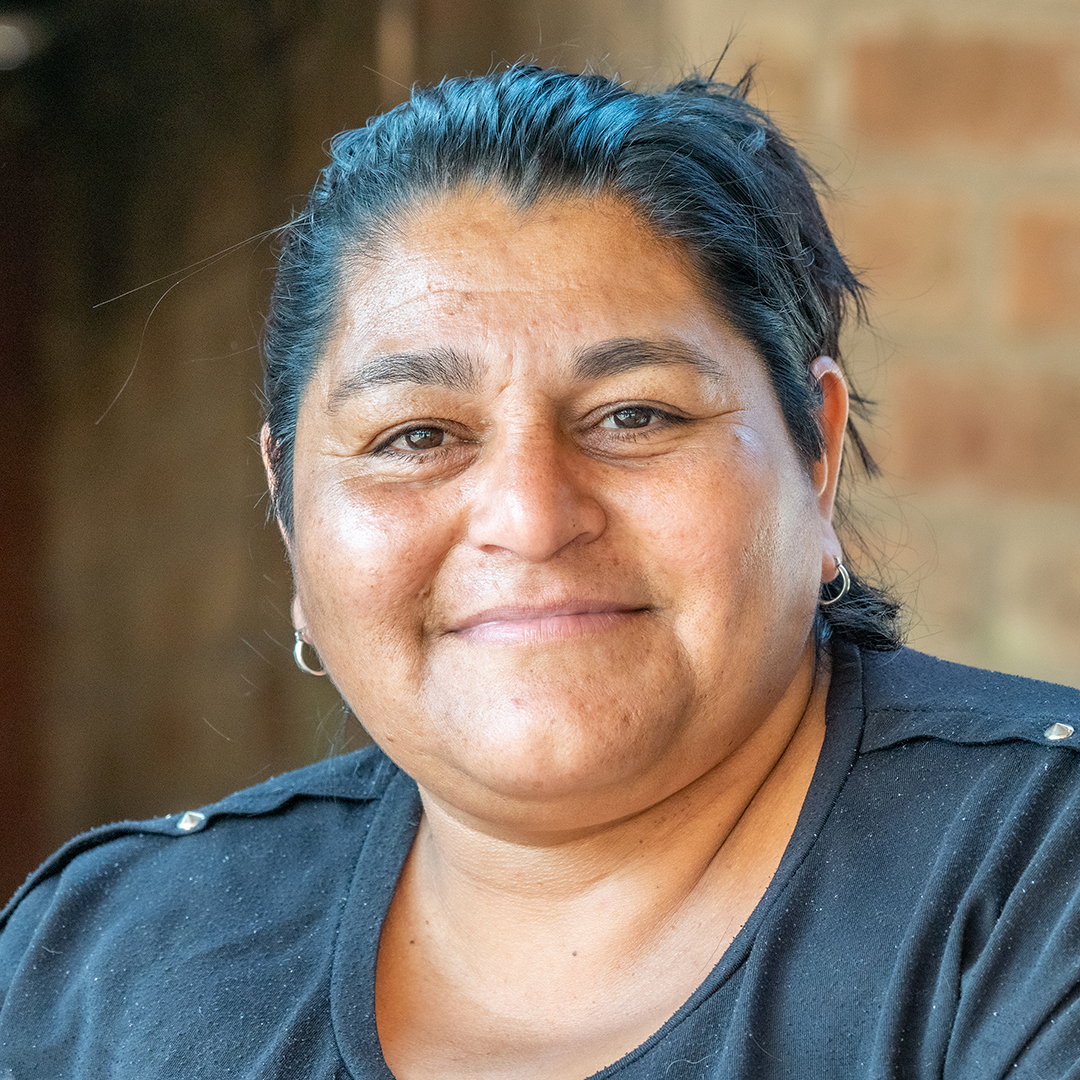
Zulma Argañaraz
Referente local – proyecto el impenetrable.
Zulma es oriunda de La Armonía y se unió a Fundación Rewilding Argentina en 2020 como referente local en el Programa de Bienestar Comunitario del Proyecto El Impenetrable.
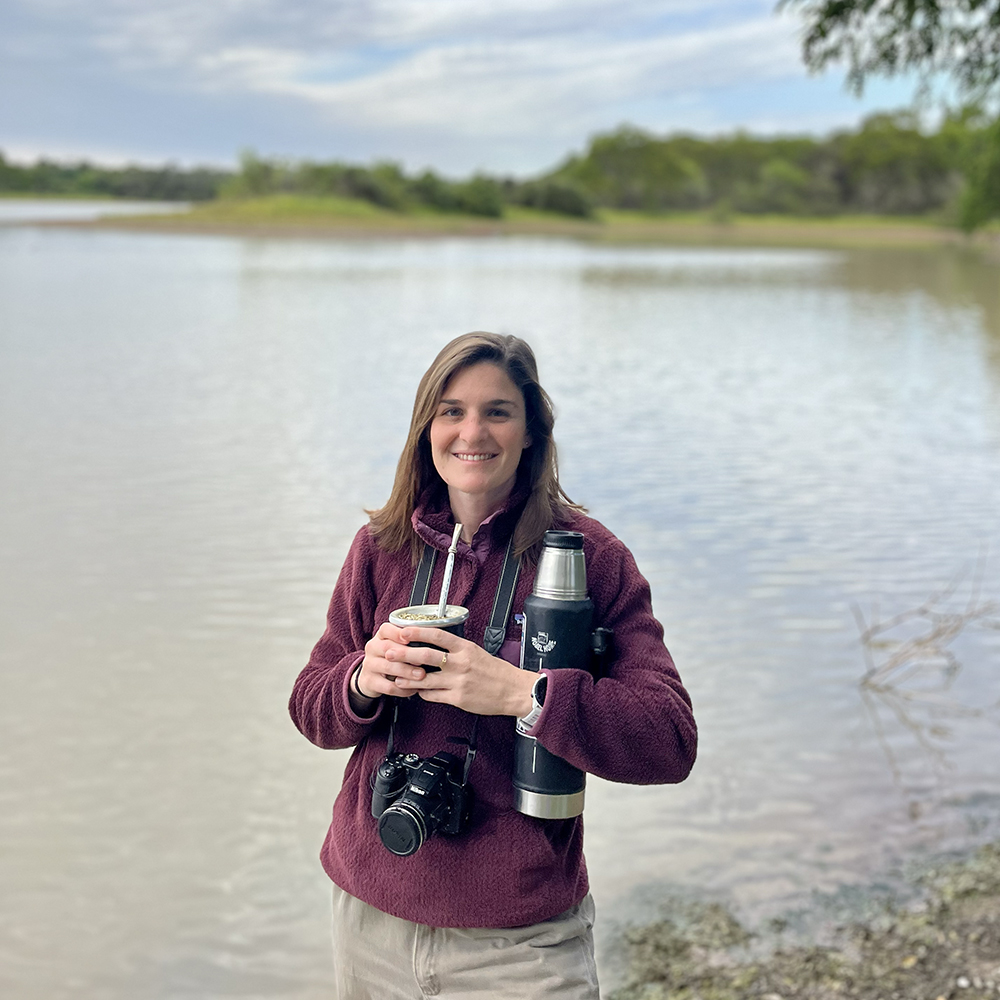
Guadalupe Molinaro
Coordinadora en el núcleo nueva población del programa bienestar comunitario – proyecto el impenetrable.
Guada nació en San Nicolás, Buenos Aires. Tras recibirse de licenciada en Recursos Naturales fue voluntaria para el Portal San Nicolás del Parque Iberá (Corrientes) en 2021. Ese mismo año pasó a coordinar el núcleo Nueva Población del programa de Bienestar Comunitario del Proyecto El Impenetrable.
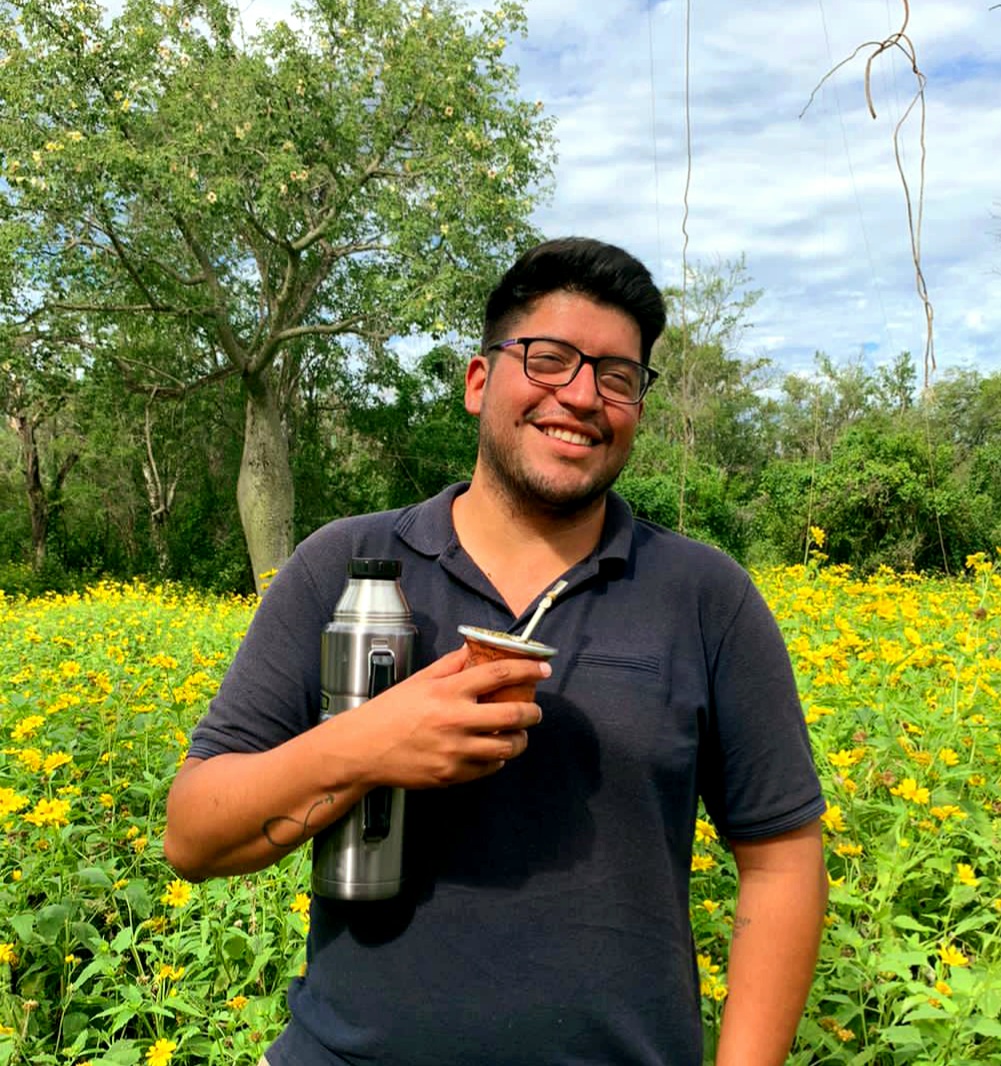
GONZALO LEGUIZAMÓN
Coordinador en el núcleo los palmares del programa bienestar comunitario – proyecto el impenetrable.
Gonzalo es profesor de matemáticas. Nació en Buenos Aires pero pasó la mayor parte de su vida en Las Breñas, en Chaco. En 2021 se sumó al equipo de la fundación como voluntario en el Programa Comunidades del Proyecto El Impenetrable. Actualmente coordina el programa de Bienestar Comunitario en el núcleo Los Palmares.

GERARDO CERÓN
Coordinador de conservación – proyecto el impenetrable.
Gerardo es Doctor en Biología, egresado de la Universidad Nacional de Comahue, en Bariloche. A los diez años se mudó desde Buenos Aires a Dina Huapi, un pueblo cercano a la cordillera Patagónica. Allí profundizó su amor por la naturaleza y a esa edad decidió ser biólogo. Luego de estudiar durante doce años al pato de los torrentes, una especie Amenazada, comprendió que investigar no era suficiente, había que “meter mano” y actuar para cambiar el curso de la conservación. Así comenzó a trabajar en Rewilding Argentina en el año 2017, en el Proyecto El Impenetrable. Durante dos años realizó las líneas de base de vertebrados del parque, catalogando más de 500 especies. Actualmente es coordinador del programa de Rewilding en ese proyecto, dando los primeros pasos para devolverle la funcionalidad ecológica al área mediante la reintroducción de especies extintas y el monitoreo con tecnología satelital de especies clave.
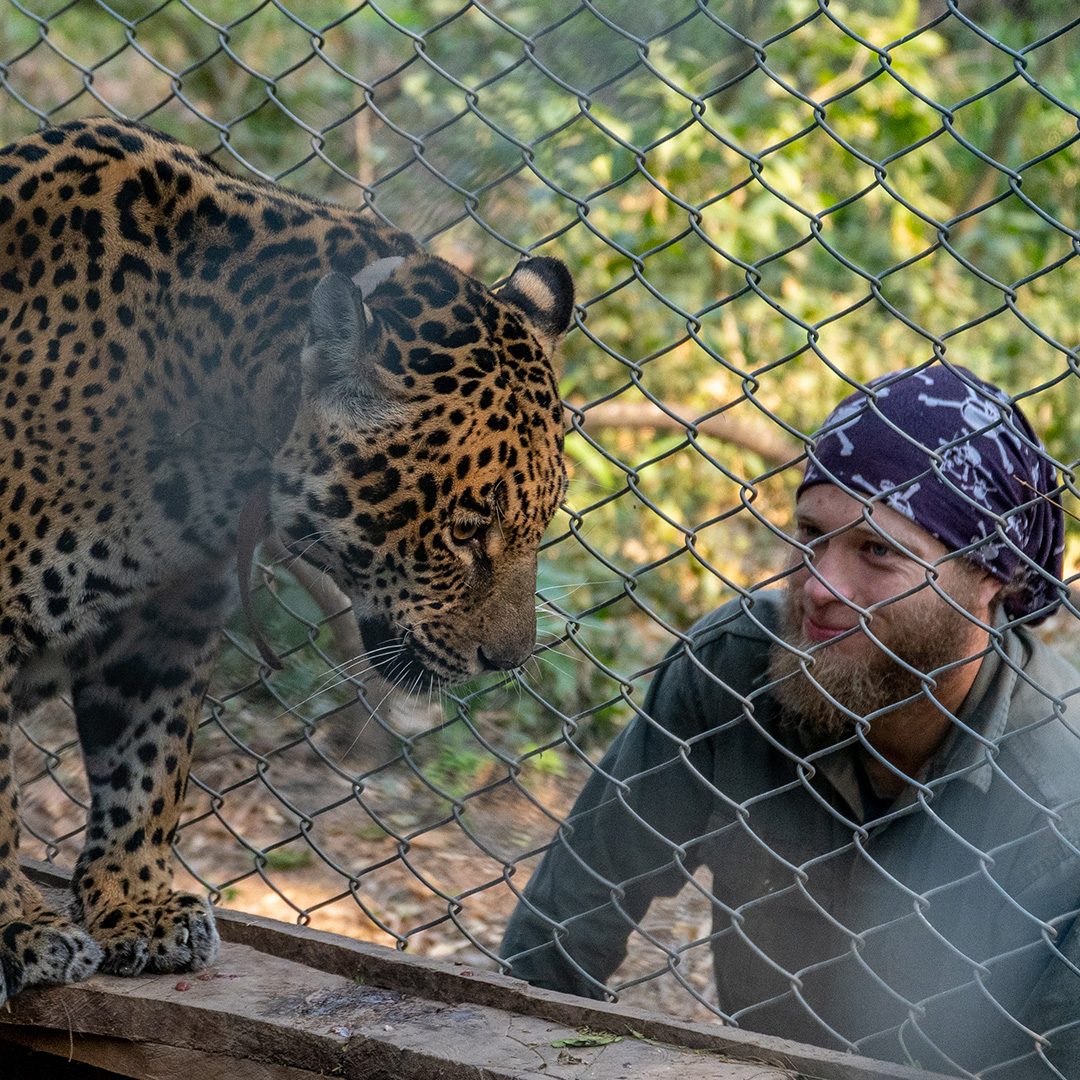
Nicolás Muñoz
Monitoreo de fauna amenazada – proyecto el impenetrable.
Nico se unió a Fundación Rewilding Argentina en el año 2019. Está involucrado en el manejo de los yaguaretés del centro de conservación y en el monitoreo de especies amenazadas a través de telemetría (yaguareté y tapir) y trampas cámara.

Leandro Lencina – Guardaparque
Coordinador de la estación biológica los palmares – proyecto el impenetrable.
Leandro se unió a Fundación Rewilding Argentina en el año 2020. Está involucrado en la operación de la Estación de Campo Los Palmares, donde realiza recorridas en lancha por el río Bermejo monitoreando y disuadiendo las actividades de caza y pesca ilegal.
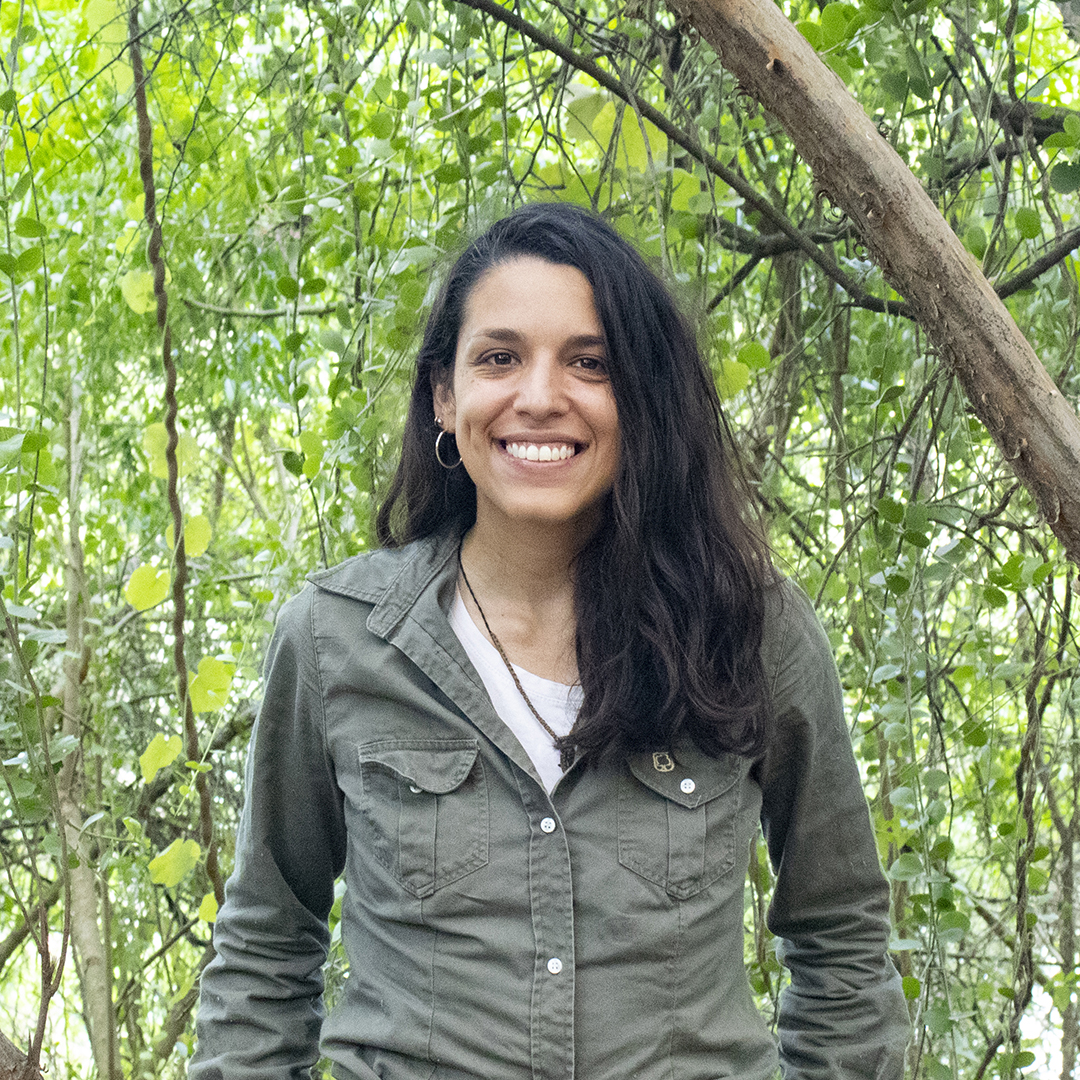
DÉBORA ABREGÚ – Bióloga
Debi nació en Córdoba, donde estudió la carrera de Biología. Fue voluntaria en la Estación de Campo El Teuco en 2020, antes de unirse definitivamente al equipo al año siguiente. Debi coordina y ejecuta tareas de monitoreo de tortugas yabotí liberadas y de educación ambiental, a fin de mejorar la percepción local del yaguareté y otras especies.
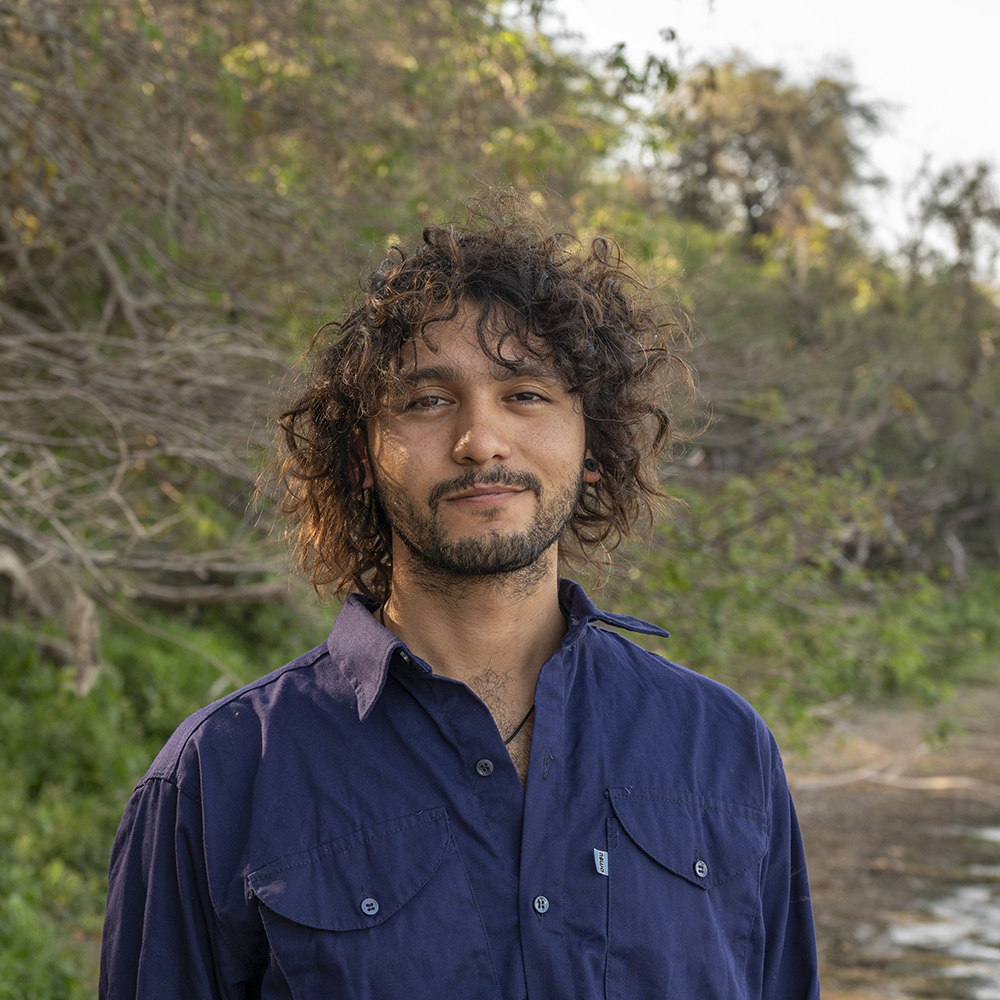
MARIO TARRAGÓ
Mario es oriundo de Baradero, provincia de Buenos Aires. Se acercó a la fundación como voluntario en el Centro Aguará y en los proyectos de rewilding que se llevan adelante en Iberá y en El Impenetrable. Se unió a la fundación en 2022 como responsable de entrenamiento y bienestar de las nutrias gigantes del proyecto de reintroducción en El Impenetrable.
JULIETA MANGAS
Restauración de pastizales – proyecto el impenetrable.
Julieta es oriunda de la provincia de La Pampa. Fue voluntaria en la Estación de Campo El Teuco durante el 2022, antes de unirse a Rewilding Argentina como responsable del trabajo de recuperación de pastizales en el Proyecto El Impenetrable.
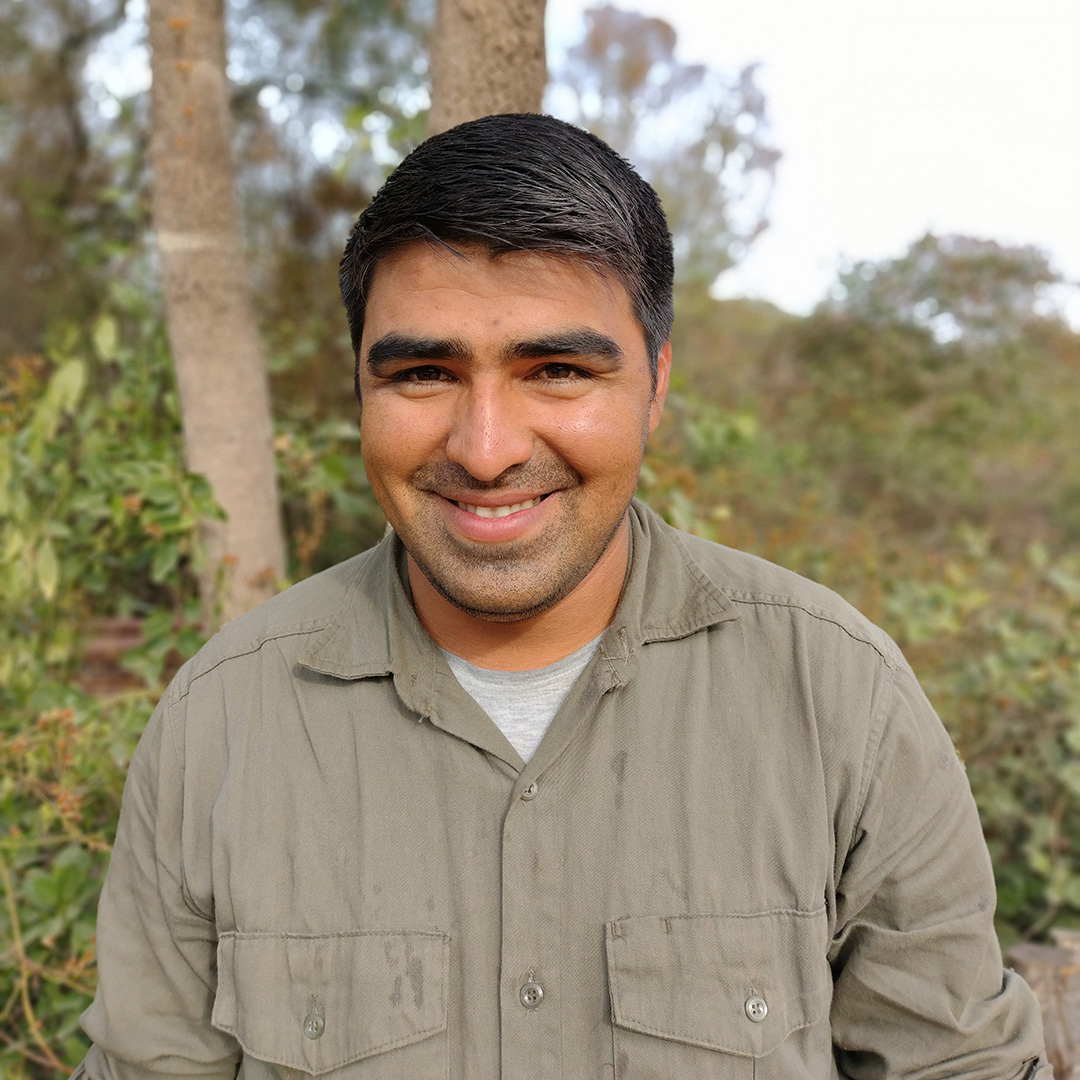
Julio César Soraire
Coordinador del equipo de logística de la estación de campo el teuco – proyecto el impenetrable.
Julio fue voluntario de la fundación en 2018, y se unió efectivamente en 2019 en tareas operativas, de logística, mantenimiento y obras. Actualmente coordina el equipo de logística en la estación de Campo El Teuco y participa activamente en la restauración de pastizales del parque nacional.
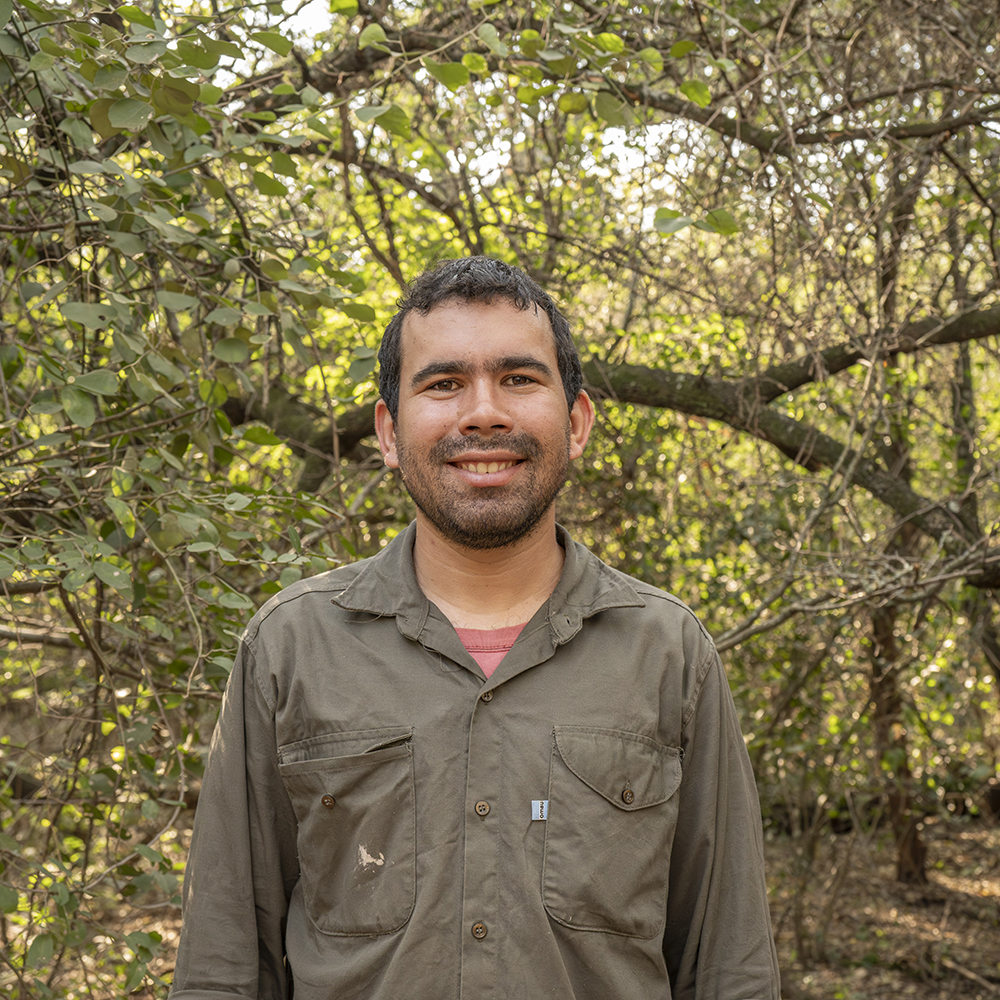
NICOLÁS PELLICER
Logística y operaciones de la estación de campo el teuco – proyecto el impenetrable.
Nico es oriundo de Laguna Blanca, provincia de Formosa. Se acercó a la fundación en 2021 como voluntario del equipo de operaciones para pasar efectivamente a ese equipo durante el 2022. Actualmente se encuentra trabajando en logística y operaciones de la estación de Campo el Teuco y participa activamente en la restauración de pastizales del parque nacional.
MIRANDA VOLPE
Responsable de comunicación – proyecto el impenetrable.
Miranda nació en Paraná, Entre Ríos. Licenciada en Biología, se acercó a Rewilding Argentina en 2021 como voluntaria de los proyectos de rewilding en los proyectos Iberá y Patagonia. Se incorporó al equipo de comunicación en 2022 como responsable de generar material audiovisual y crear contenidos para comunicar los proyectos de parques, comunidades y reintroducción de fauna en El Impenetrable.
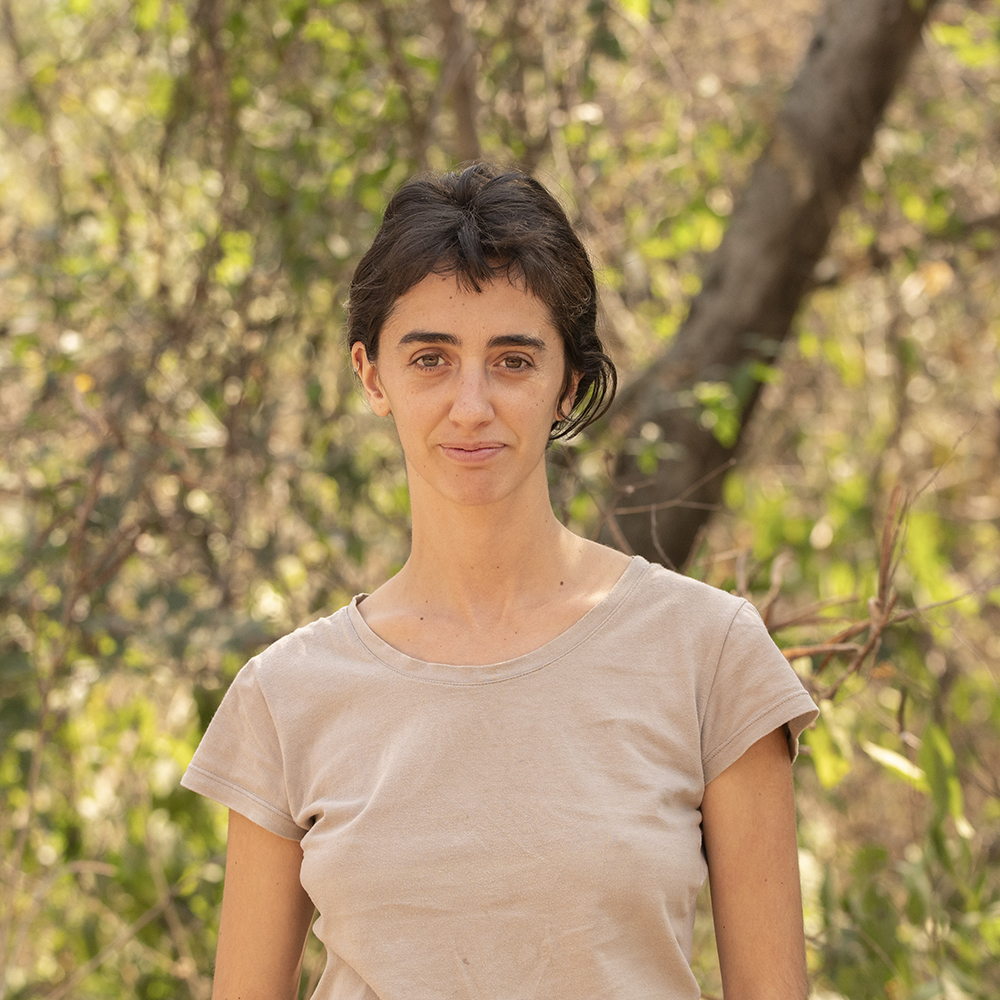
FRANCISCA LLORENTE
Anfitriona de la escuela-taller de turismo de naturaleza y glamping el bermejito – proyecto el impenetrable.
Francisca se crió en la provincia de Buenos Aires. Trabajó en el ámbito del turismo en diferentes lugares y conoció El Impenetrable en el año 2021. Al año siguiente se acercó a la fundación, donde actualmente se desempeña como anfitriona en la Escuela-Taller y Glamping El Bermejito del Paraje la Armonía.
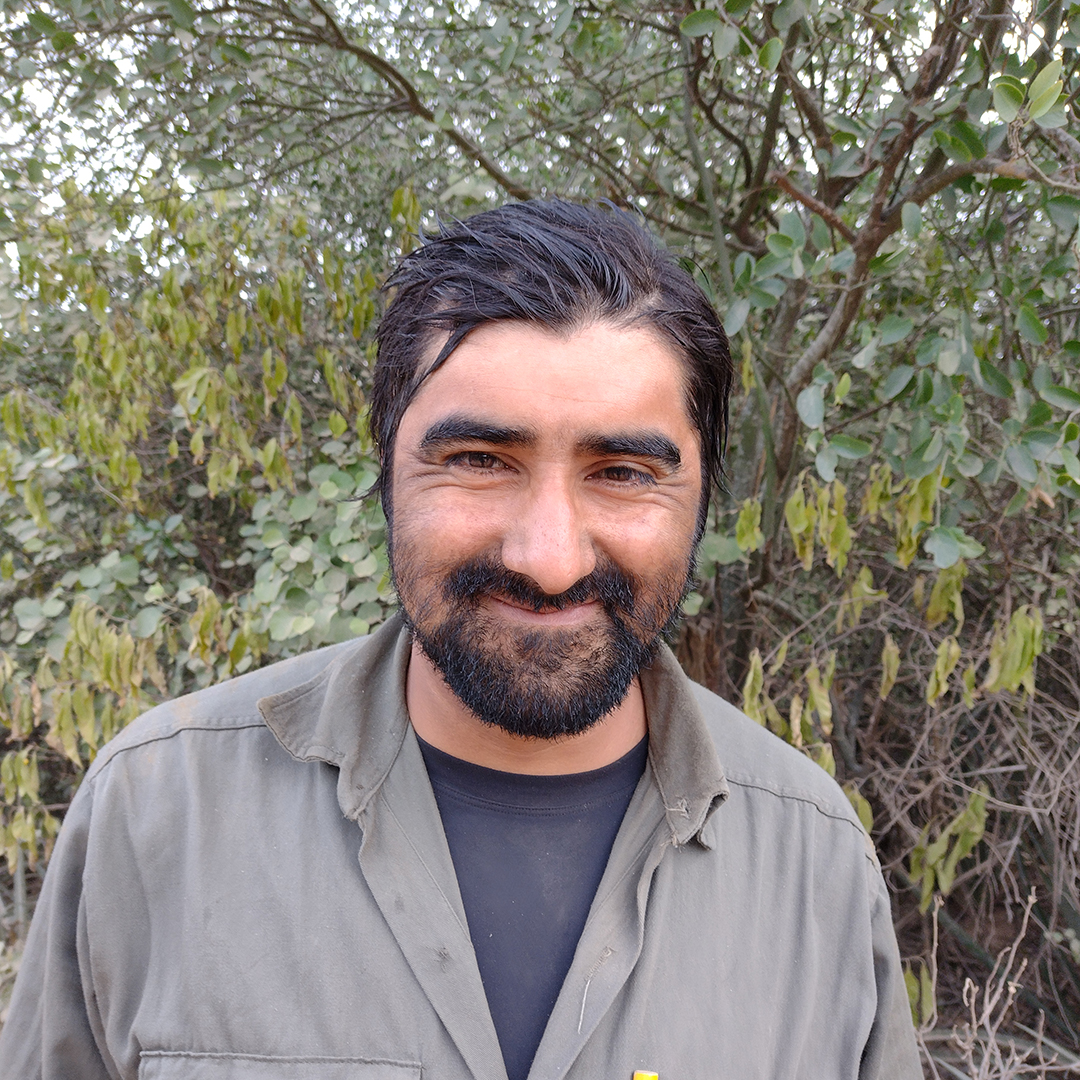
Jacinto Darío Soraire
Guía de fauna – proyecto el impenetrable.
Darío se unió a Rewilding Argentina en 2017. Formó parte del equipo de operaciones hasta el año 2022, cuando se convirtió en guía de avistaje de fauna, motivado por su gran conocimiento del monte, el río, la flora y la fauna del lugar.
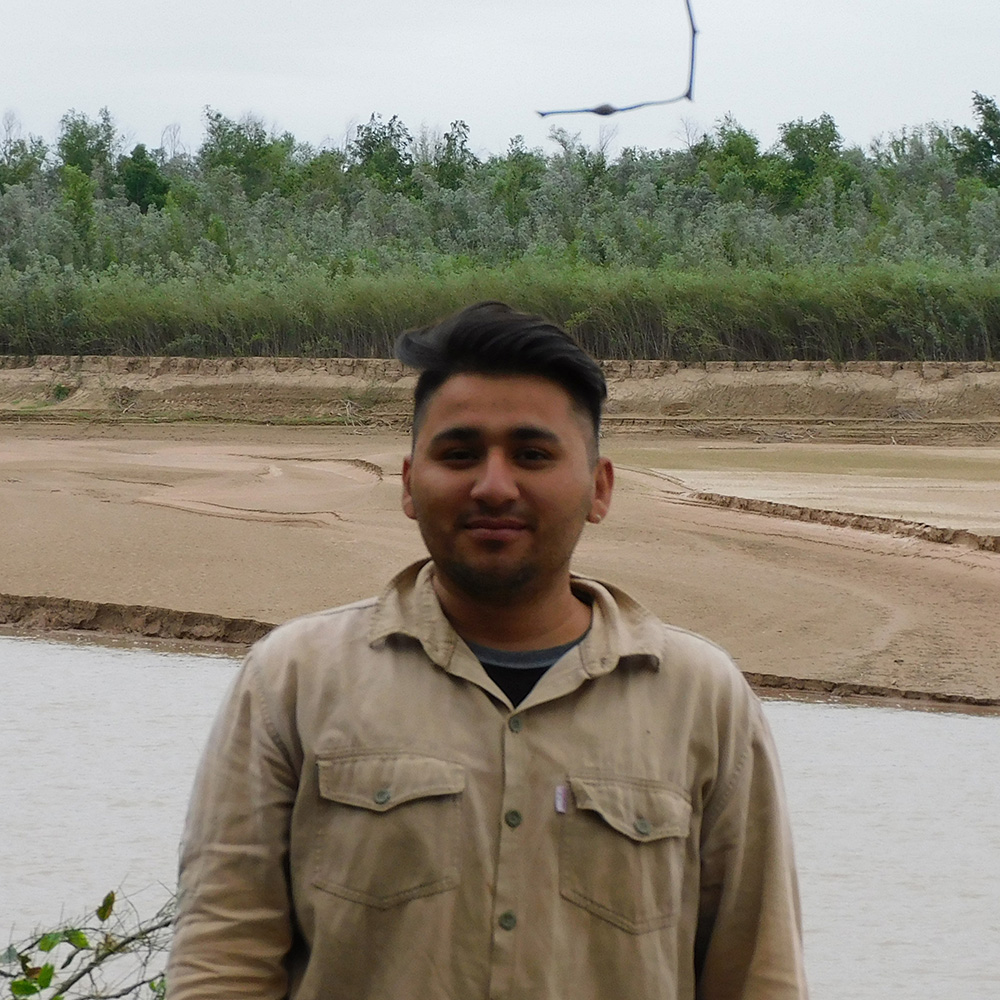
FELIX SORAIRE
Félix se crió en el Paraje Fortín Arenales, en las inmediaciones de lo que hoy es el Parque Nacional El Impenetrable. Se unió a la fundación en el año 2021. Allí realiza tareas operativas y de mantenimiento de instalaciones en la Estación de Campo Los Palmares.
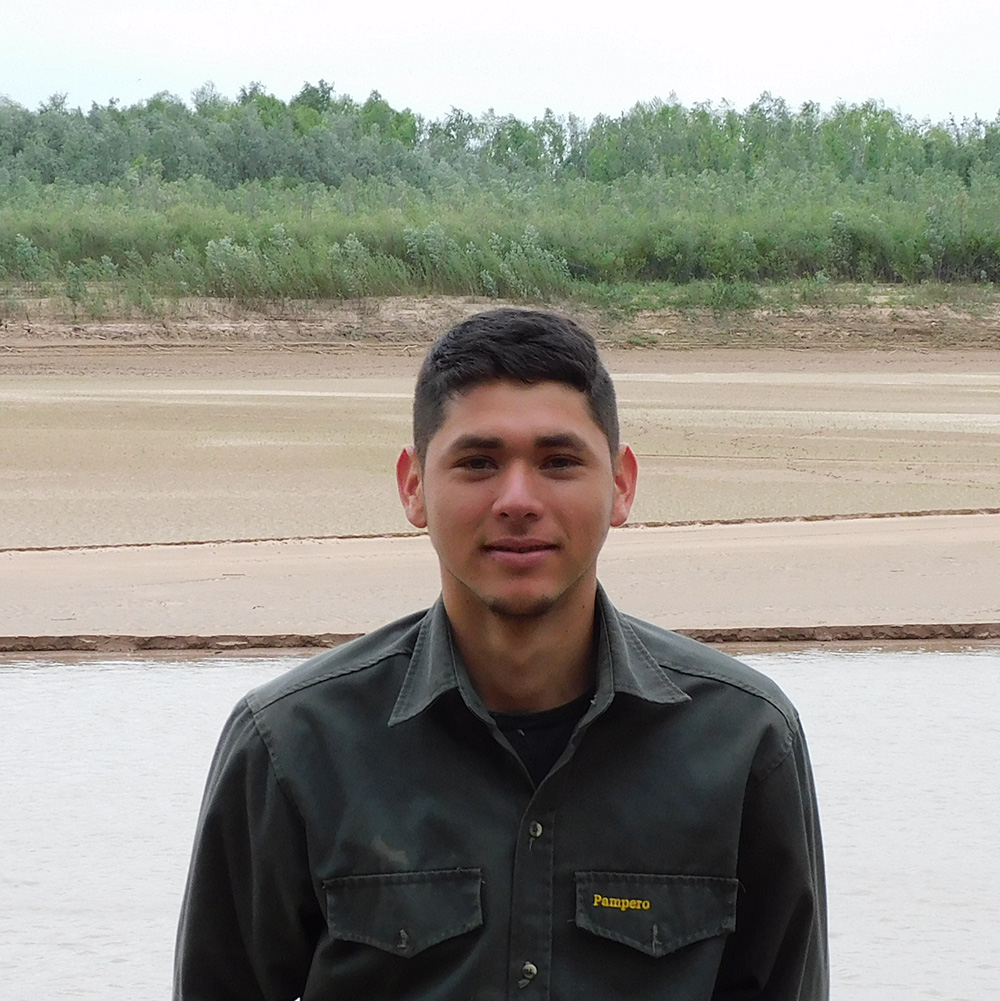
REYES TEJADA
Reyes se crió en Wichí, en la localidad de El Sauzalito. Se unió a la fundación en 2022. Actualmente realiza tareas operativas y de mantenimiento de instalaciones en la Estación de Campo Los Palmares.
JULIÁN DE BERNADEZ
Operations manager – el impenetrable project.
Julián was born in Entre Ríos. He studied to be a park ranger in Puerto Madryn and volunteered at Los Palmares before joining Rewilding Argentina in 2023. He now leads the operations, logistics, and maintenance team at the facilities located in Paraje La Armonía and Camping La Fidelidad.
Operations – El Impenetrable Project
Willy is from Miraflores, Chaco. He began working for Rewilding Argentina in 2023 as a road and infrastructure building manager.
Rogelio began collaborating with Rewilding Argentina in 2017. He leads El Impenetrable Project’s operations, logistics, and maintenance team.
Cirilo grew up in Paraje Bajada de la Cruz, near El Impenetrable National Park. He joined the foundation in 2021 and handles logistics, facility maintenance, and roads tasks.
Manuel grew up in Paraje Fortín Arenales, near El Impenetrable National Park. He joined the foundation in 2022 and handles operational tasks, logistics, and facility maintenance.
Francisco was born in Villa Allende, Córdoba and worked as a hiking guide in the province. He volunteered at the El Teuco Field Station before joining the foundation in 2023 to handle operational, logistics, and maintenance tasks.
Manager at La Fidelidad Campsite – El Impenetrable Project
Andrés was born and raised near El Impenetrable National Park. He joined the foundation in 2017 to carry out operational, logistic, and maintenance tasks in El Impenetrable Project, and later to manage La Fidelidad Campsite.
Institutional Relations and Nature Tourism Coordinator – El Impenetrable Project
Marisi López has a degree in Public Relations. In 2005, she joined Fundación Rewilding Argentina to work on the Iberá Project, Corrientes, where she has led the process of opening up to public use and donating tourist portals to the State since then. In the El Impenetrable Project, Chaco, Marisi leads the development of Nature Tourism and the institutional relations with the press, civil society, and community actors.
Fátima Hollmann
Communities program manager – el impenetrable project.
Fátima graduated as a Business Manager. She joined the foundation in 2018 to coordinate the development of strategies to improve the communities wellbeing around El Impenetrable National Park.
Community Wellbeing Program Manager – El Impenetrable Project
Luli was born in Pehuajó, Buenos Aires. She graduated in Communications and specialized in rural community projects in Africa and El Impenetrable, Chaco. There, she joined Rewilding Argentina in 2023 to design and coordinate strategies that aim to improve the well-being of local communities.
Constanza Mozzoni – Biologist
Communities – el impenetrable project.
Coni joined Rewilding Argentina in 2019 to develop the Communities and Tourism Program in La Armonía, the town at El Impenetrable National Park’s entrance.
Ale Aquino is from Las Breñas, Chaco, and admires nature above all things and the peace he finds there. In 2016 and 2018, he volunteered in La Armonía Camp and El Teuco Field Station, respectively. He joined Fundación Rewilding Argentina in 2019, where he’s busy working on diverse programs to foster the development of regenerative economies in the El Impenetrable Project in Chaco.
Zulma was born in La Armonía Hamlet. She joined the foundation in 2020 to connect people from her community with the foundation’s project.
Guada was born in San Nicolás, Buenos Aires. After obtaining her degree in Natural Resources, she volunteered for the Portal San Nicolás del Parque Iberá (Corrientes) in 2021. Later that year, she coordinated the New Population of the Community Well-being program of the El Impenetrable Project.
Gonzalo is a Maths teacher. He was born in Buenos Aires but lived most of his life in Las Breñas, Chaco. In 2021, he decided to volunteer at Fundación Rewilding Argentina’s Communities program. He currently carries out El Impenetrable’s Communities Program in Los Palmares.
Conservation Coordinator – El Impenetrable Project
Gerardo has a PhD in Biology from the National University de Comahue, in Bariloche. At 10 years old, he moved from Buenos Aires to Dina Huapi, a small village close to the Patagonia mountains. There, his love of nature deepened and at that young age he decided to become a biologist. After spending 12 years studying the Torrent duck, a species threatened with extinction, he came to understand that to merely study a species is not enough, on has to “get one’s hand dirty” and act in order to change the course of conservation. That led him to begin to work with Rewilding Argentina in 2017, on the Impenetrable Project. For two years, he conducted the baseline studies of vertebrates in the park, cataloguing over 500 species. He is currently the Coordinator of Rewilding for this project, taking the first steps to restore proper ecological functions to Impenetrable through the reintroduction of species extinct in the region and by using satellite technology to monitor key species.
Monitoring of Threatened Wildlife – Proyecto El Impenetrable
Nico joined the foundation in 2019. He takes part in the jaguar management at the Park and monitoring threatened species with telemetry and camera traps.
Los Palmares Biological Station Manager – El Impenetrable Project
Leandro joined Fundación Rewilding Argentina in 2020. He operates Los Palmares and conducts boat tours on the Bermejo River to monitor and prevent illegal hunting and fishing activities.
DÉBORA ABREGÚ – Biologist
Monitoring of threatened wildlife – el impenetrable project.
Debi was born in Córdoba, where she studied Biology. She volunteered at El Teuco Field Station in 2020, before joining the team the following year. Debi coordinates and executes monitoring tasks for released yabotí turtles and environmental education, in order to improve the local perception of the jaguar and other species.
Mario was born in Baradero, Buenos Aires. He volunteered at the Aguará Center and rewilding projects in Iberá and El Impenetrable. In 2022, he joined the foundation as the responsible person for training and welfare of giant otters for the reintroduction project in El Impenetrable.
Grasslands restoration – El Impenetrable Project
Julieta was born in La Pampa province. She volunteered at El Teuco Field Station in 2022 and later became responsible for grassland recovery at the El Impenetrable Project with Rewilding Argentina.
Coordinator of the logistics team of El Teuco – El Impenetrable Project
Julio volunteered for the foundation in 2018, and later joined in 2019 to perform operational, logistics, maintenance, and work tasks. He currently coordinates the logistics team at El Teuco and actively participates in the restoration of grasslands in the national park.
Logistics and operations at El Teuco – El Impenetrable Project
Nico was born in Laguna Blanca, Formosa. In 2021, he joined the foundation as an operations team volunteer and transitioned to the team in 2022. Currently, he works in logistics and operations at El Teuco Field Station and actively participates in restoring grasslands in the national park.
Communications Manager – El Impenetrable Project
Miranda was born in Paraná, Entre Ríos. With a degree in Biology, she volunteered for Rewilding Argentina in 2021 in the Iberá and Patagonia projects. She later joined the communication team in 2022 as responsible for creating audiovisual content to communicate the projects, communities, and the reintroduction of fauna in El Impenetrable.
Host at El Bermejito Glamping and Nature tourism workshop – El Impenetrable Project
Francisca grew up in the province of Buenos Aires. She worked in the field of tourism, and that is how she got to know El Impenetrable in 2021. The following year she approached the foundation, where she currently works as a hostess at the El Bermejito School-Workshop and Glamping in Paraje la Armonía.
Wildlife Guide – El Impenetrable Project
Darío joined Rewilding Argentina in 2017 as part of the operations team. In 2022, he became a wildlife watching guide due to his extensive knowledge of the local forest, river, flora, and fauna.
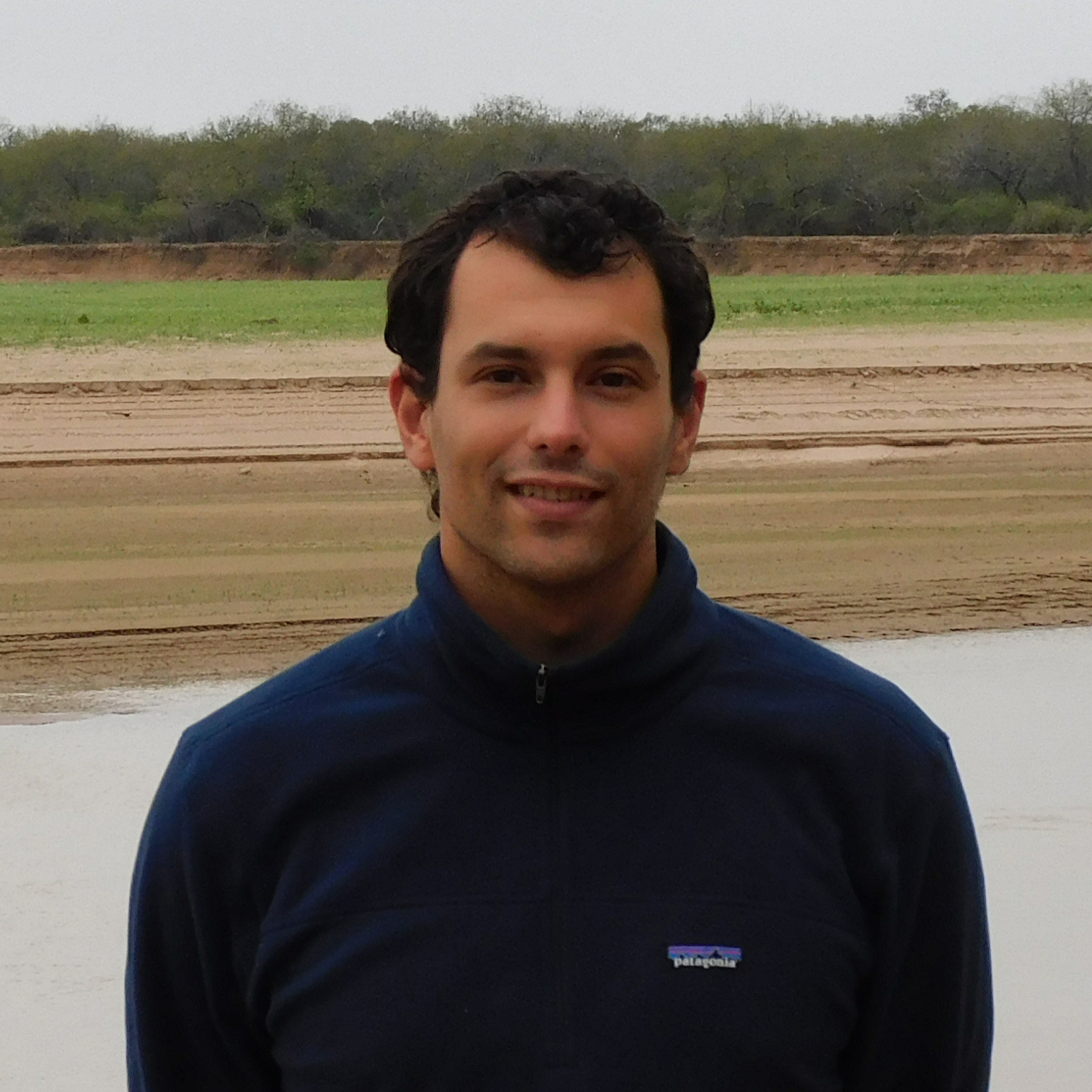
Félix grew up in Paraje Fortín Arenales, near El Impenetrable National Park. He joined the foundation in 2021. He handles operational tasks and facility maintenance at Los Palmares.
Reyes grew up in Wichí, in the town of El Sauzalito. He joined the foundation in 2022. He currently handles operational and facility maintenance tasks at Los Palmares.
Parks and Communities Coordinator – Iberá Project
Marisi López is a native of Corrientes and has a degree in Public Relations. In 2005, she joined the team of Tompkins Conservation to work on the Iberá Park project. Over the years, she has taken on a variety of roles that have given her a comprehensive view of the project. She currently leads the process of opening and donating the various portals and public use areas to Iberá Park and generates strategic alliances with local politicians. Marisi is the liaison to the press, to civil society and to community leaders.
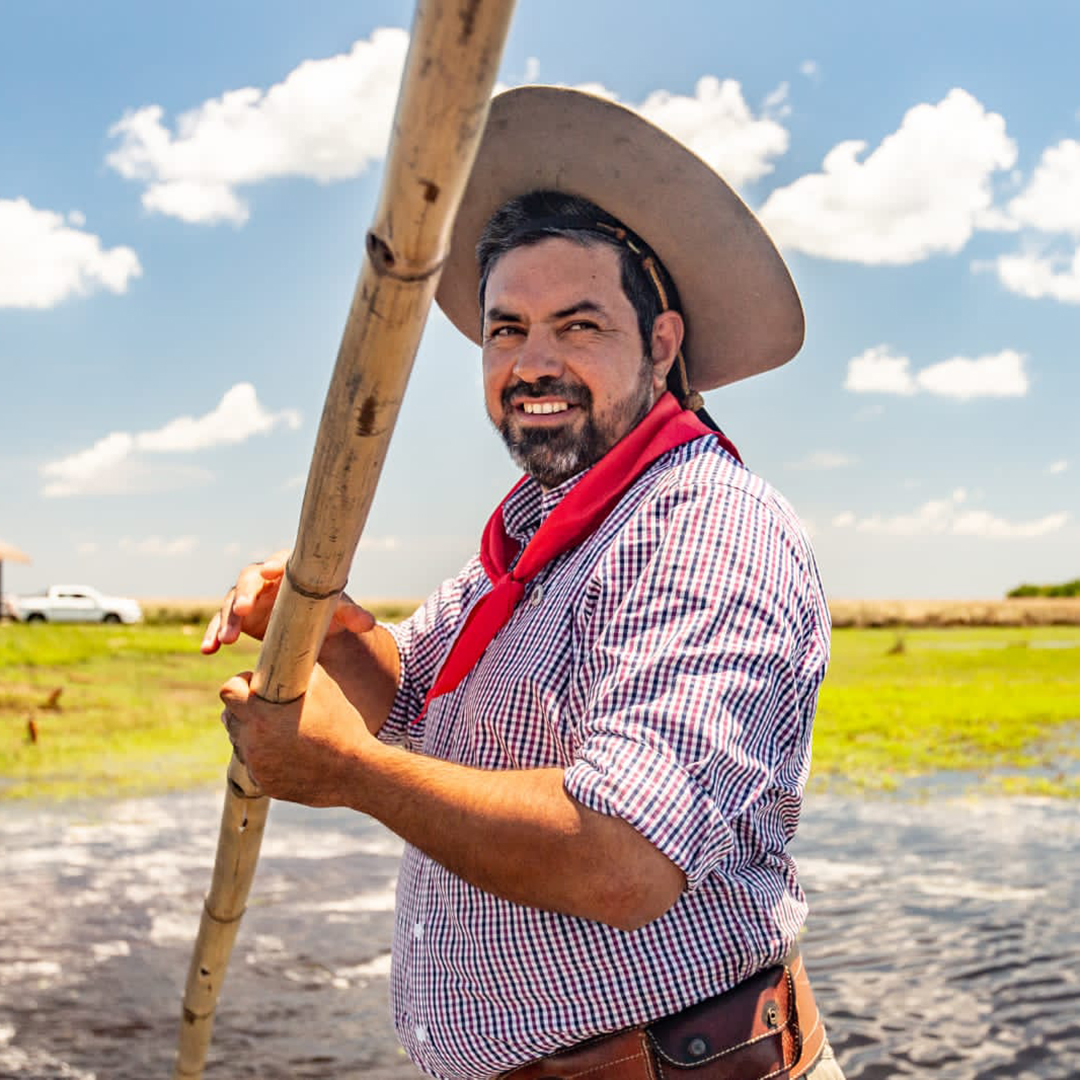
PASCUAL PÉREZ
Portal carambola manager – iberá project.
Pascual Pérez was born in Mburucuyá, Corrientes, home of chamamé and the Mburucuyá National Park. His natural curiosity and love towards nature since he was a kid and his ability with horses and the guaraní language allowed Pascual to work in Iberá’s deepest wetlands from 2007 to 2016, relating with local villagers and making them an essential piece in the project. He worked at the National Parks Administration before joining our team again in 2022 to manage Portal Carambola.
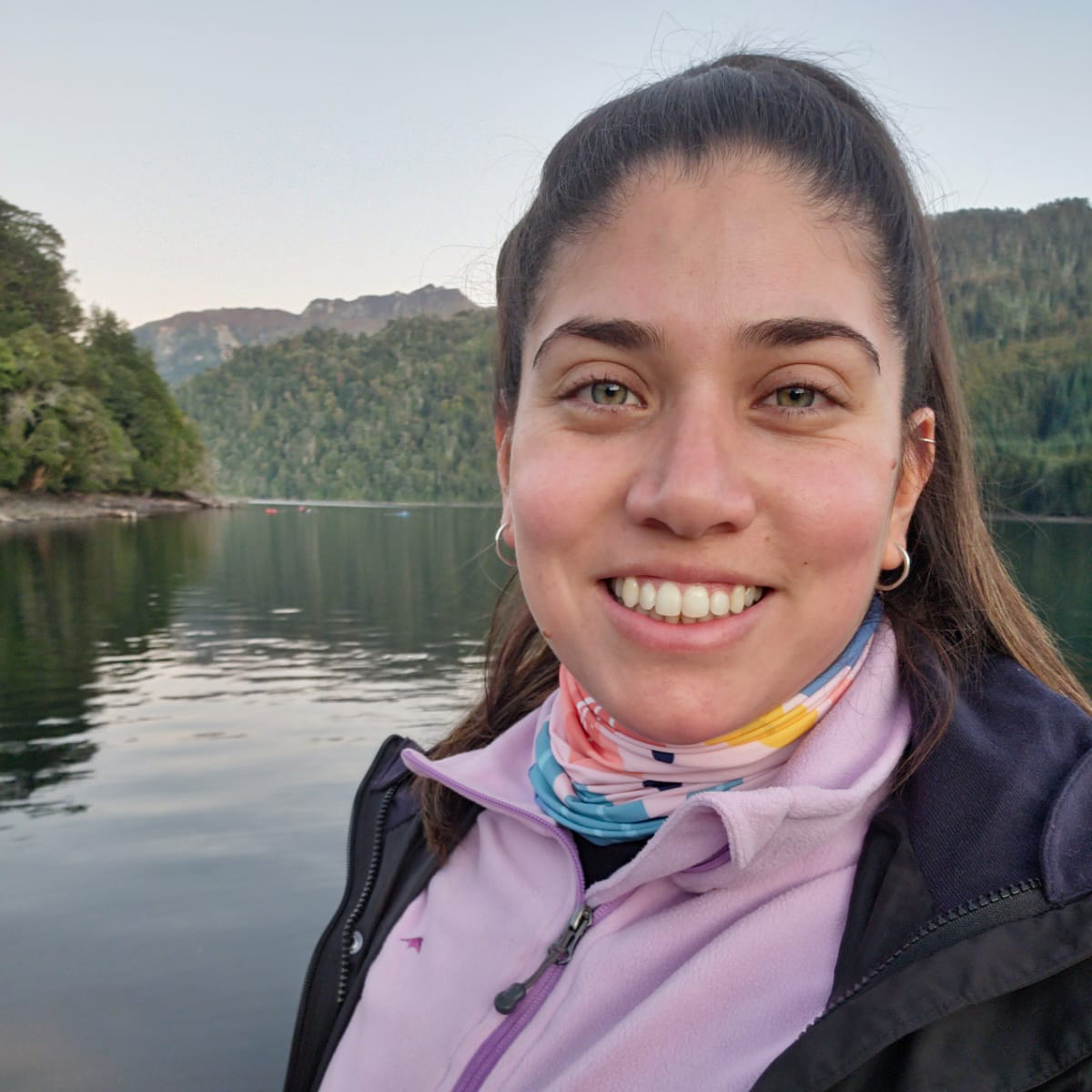
AGUSTINA VERA
Tourism development and public use manager at portal carambola – iberá project.
Born in Corrientes, Agustina trained in tourism and hospitality. She worked on various nature tourism projects until 2018 when she joined the Iberá Park’s public-use development team at Parques Nacionales. Convinced that nature tourism is a tool for conservation, in 2023, she joined the Rewilding Argentina team, where she works to promote local restorative economies around Iberá Park.
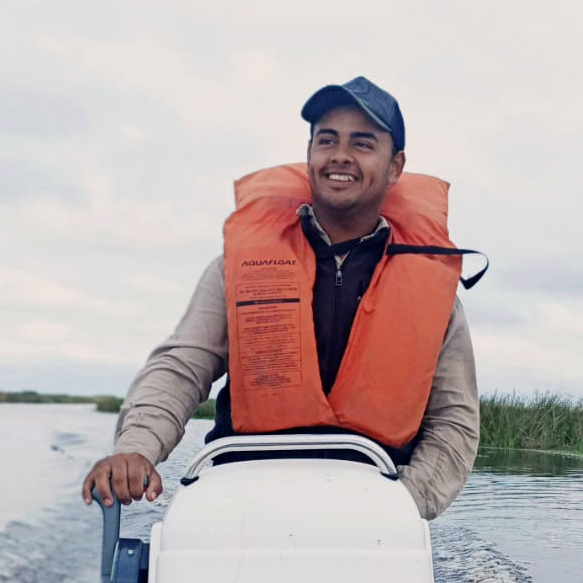
NICOLÁS MEDINA
Operations and logistics – iberá project.
Nicolás is a native of Mburucuyá, Corrientes. Raised in the town, he has related to horses and rural work from a young age. He speaks the Guarani language and is a fire brigade. In 2022 he joined Rewilding Argentina, where he coordinates the logistics and general maintenance tasks, paddocks surveillance, and supplies.
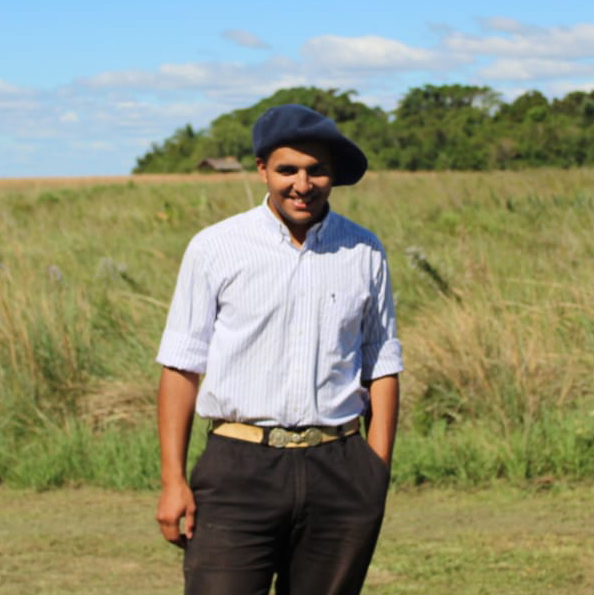
MARCOS GÓMEZ
Host at portal carambola – iberá project.
Marcos was born in Concepción del Yaguareté Corá, Corrientes. He is a technician in agricultural production, and since 2022 he has been part of the Rewilding Argentina team. He is currently the host at the Carambolita campsite and other nature-tourism areas.

TOMÁS GODOY
Tomás was born and raised in Concepción del Yaguareté Corá, Corrientes. His passion for folk dance and culture from Corrientes, experience in rural work, and knowledge of the Guarani language highlight Iberá’s cultural presence at Portal Carambola. He joined Rewilding Argentina in 2023 to host the Carambolita campsite, the Lechuza Cuá refuge, and other areas for nature tourism.
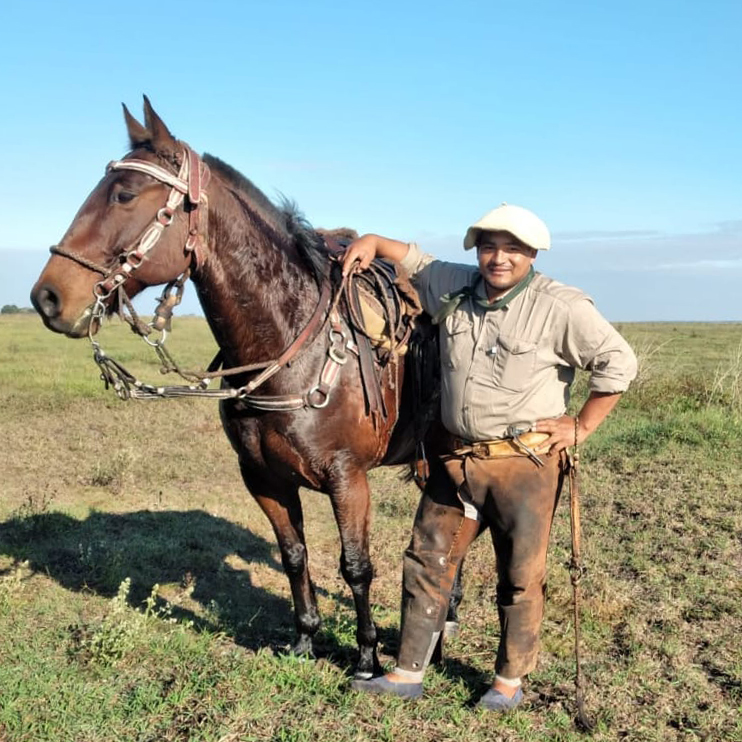
MAGNO LATOR
Stallholder at puesto medina – iberá project.
Magno is from Concepción del Yaguareté Corá, Corrientes, but he spent most of his childhood in Paraje Ñupy, inland. He speaks the Guarani language and masters the arts related to horses and the botador-pulled canoe. He joined Rewilding Argentina in 2022, where he is in charge of the nature reserve’s surveillance, exotic species control, and the maintenance of wire fences—tasks he performs on horseback rides.

MAURICIO OBREGÓN
Operations and tractor driver – iberá project.
Mauricio was born and raised in Mburucuyá, Corrientes. His experience as a fire brigade, builder, and machinery operator makes him an excellent manager of general maintenance and firewalls at Portal Carambola. He joined Rewilding Argentina in 2023.
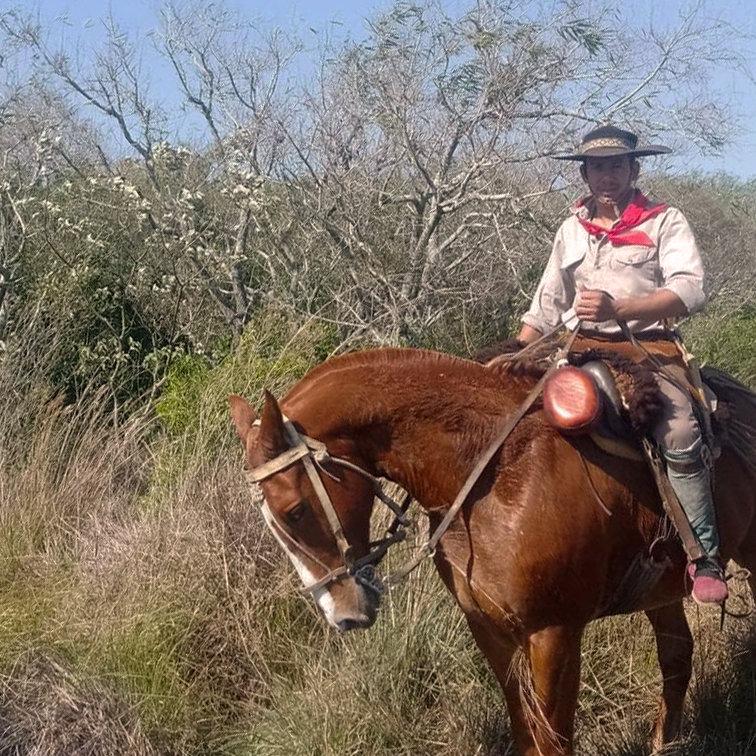
JORGE MACIEL
Operations and stallholder at puesto sofía – iberá project.
Jorge was born in San Miguel, Corrientes. Since he was a boy, he has been passionate about the countryside and has worked in several rural establishments. He is known for his prowess in speaking the Guaraní language and being a horse tamer, a job requiring patience and dedication. A great connoisseur of the esteros, he joined Rewilding Argentina in 2023 to contribute his knowledge in the management and operations of Puesto Sofía.
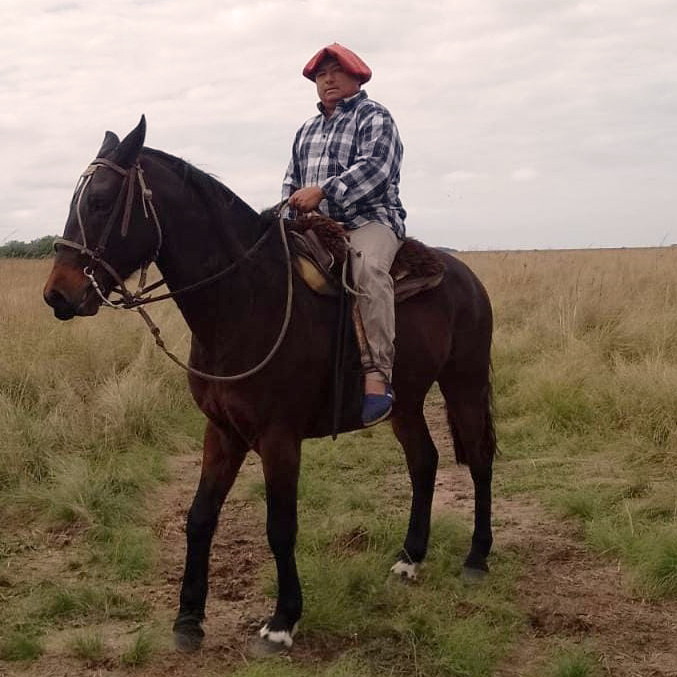
MIGUEL LEIVA
Stallholder at puesto sofía – iberá project.
Miguel is a countryman born and raised in Paraje Carambola in the Ibera Wetlands, Corrientes. A great connoisseur of the marsh, he has maintained his traditions and native language, Guarani. He joined Rewilding Argentina in 2022, where his responsibilities include surveilling the nature reserve, controlling exotic species, and keeping fences—tasks he performs on horseback rides.
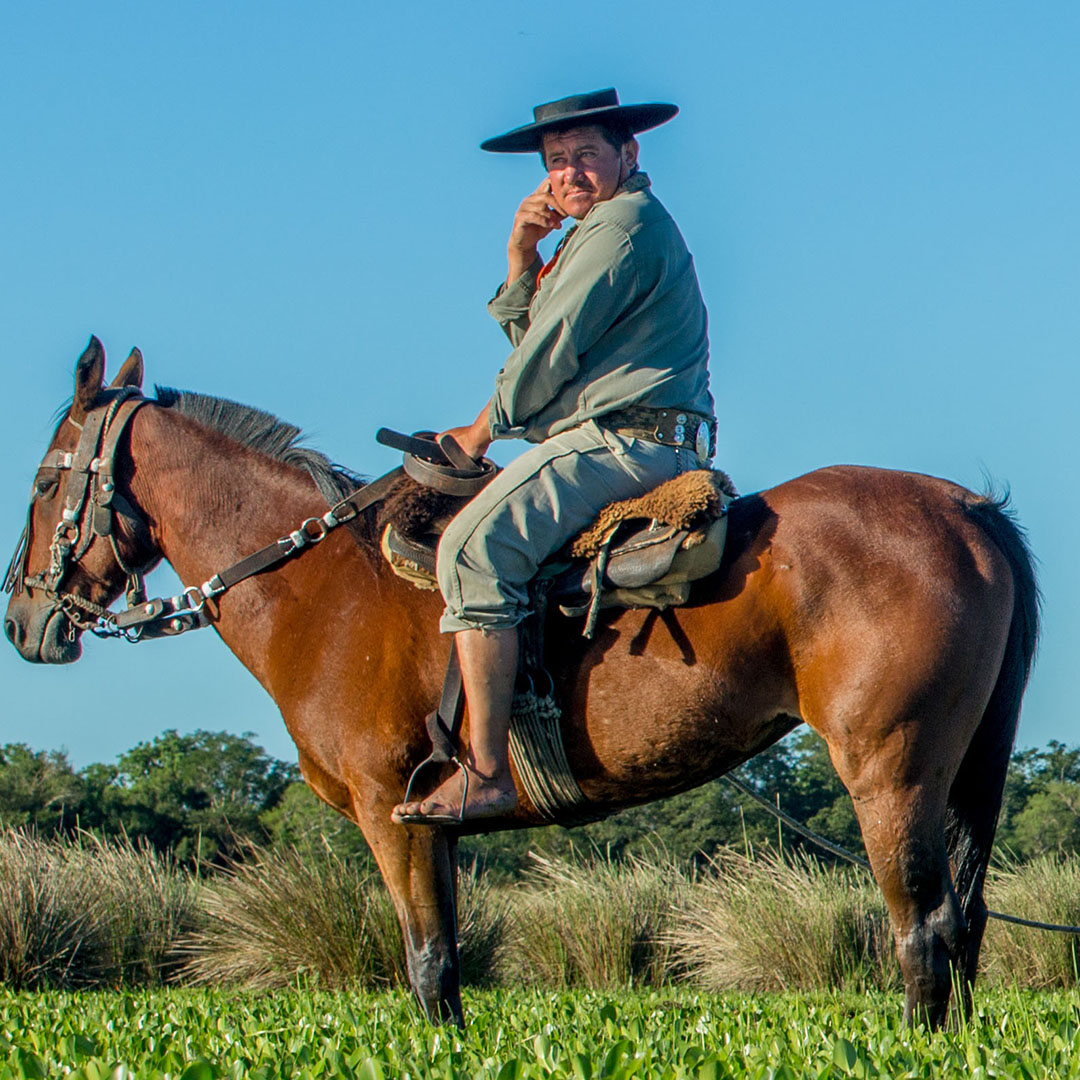
PEDRO LEIVA
Operations – iberá project.
Pedro is a native guide from Carambola, a hamlet in the Iberá Wetlands, Corrientes, and knows the wetlands thoroughly. He maintains his native language, Guaraní, and his traditions and customs. He joined Rewilding Argentina in 2008. He is responsible for operations and logistics activities and supplying the posts.
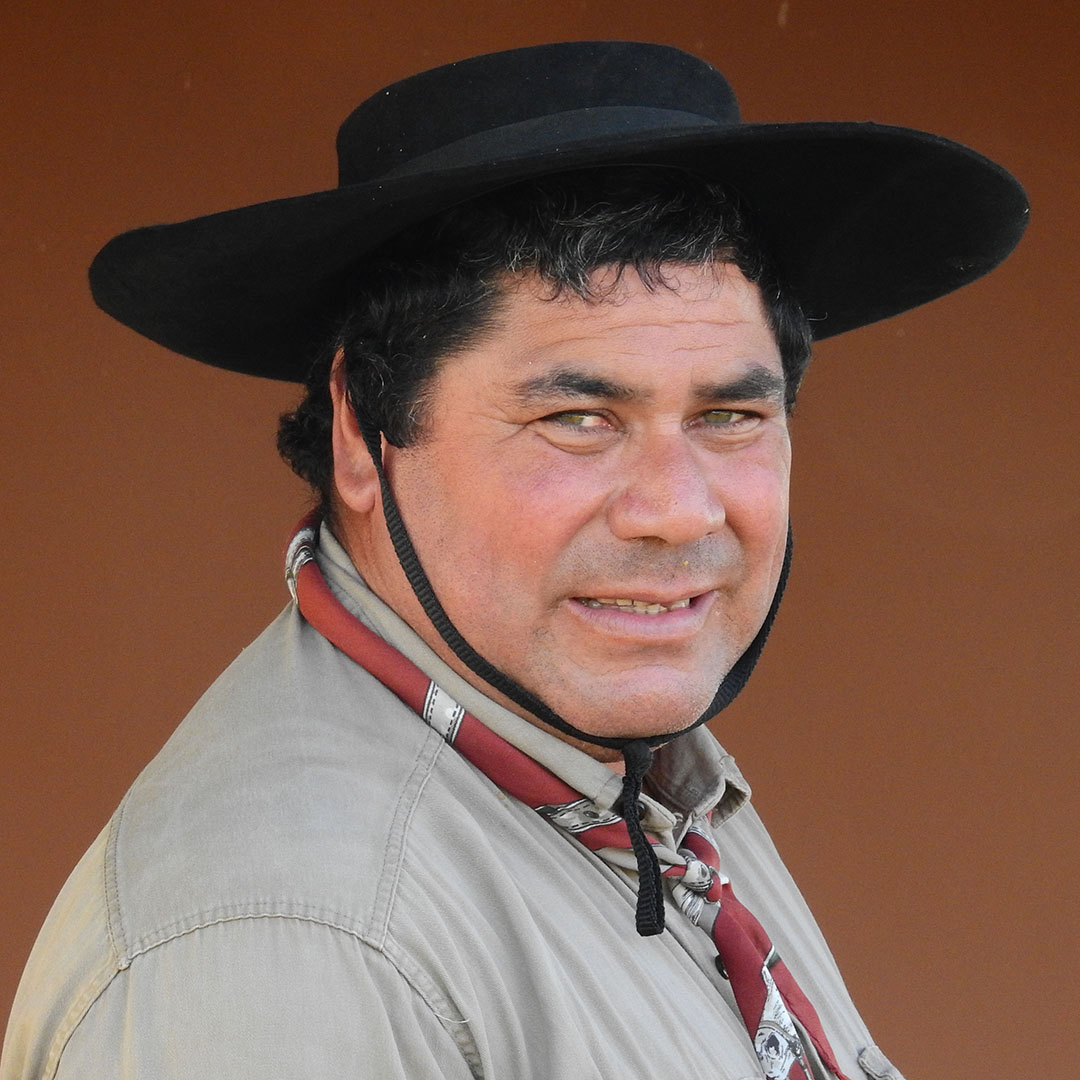
DONATO FERNÁNDEZ
Stallholder at puesto plumero – iberá project.
Donato is from Concepción del Yaguareté Corá, Corrientes, and has been connected to the wetland since he was born. He speaks Guaraní and masters the art of cruising the marshlands by boat. He joined Rewilding Argentina in 2010. His responsibilities include surveilling the Natural Reserve, eradicating exotic species, and upkeeping fences.
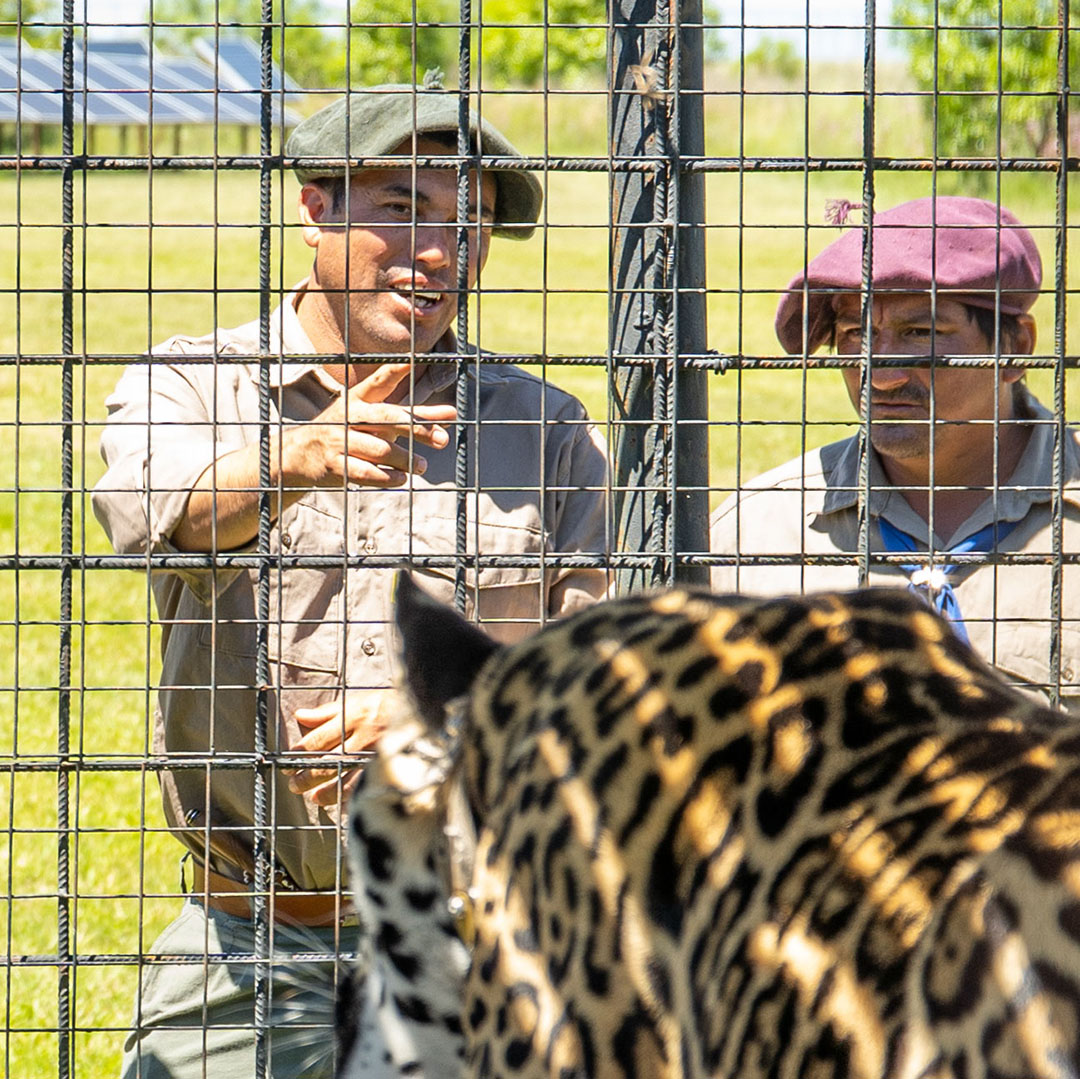
Juan Aguirre
Portal carambola – iberá project.
Juan was born in Concepción del Yaguareté Corá, Corrientes. He was raised in a ranch where he learned to master horse-riding and canoe-riding. He joined Rewilding Argentina in 2020 to oversee public relationships with Carambola and Ñupy communities, briefing them regularly, in Guaraní language, on the reintroduction projects.
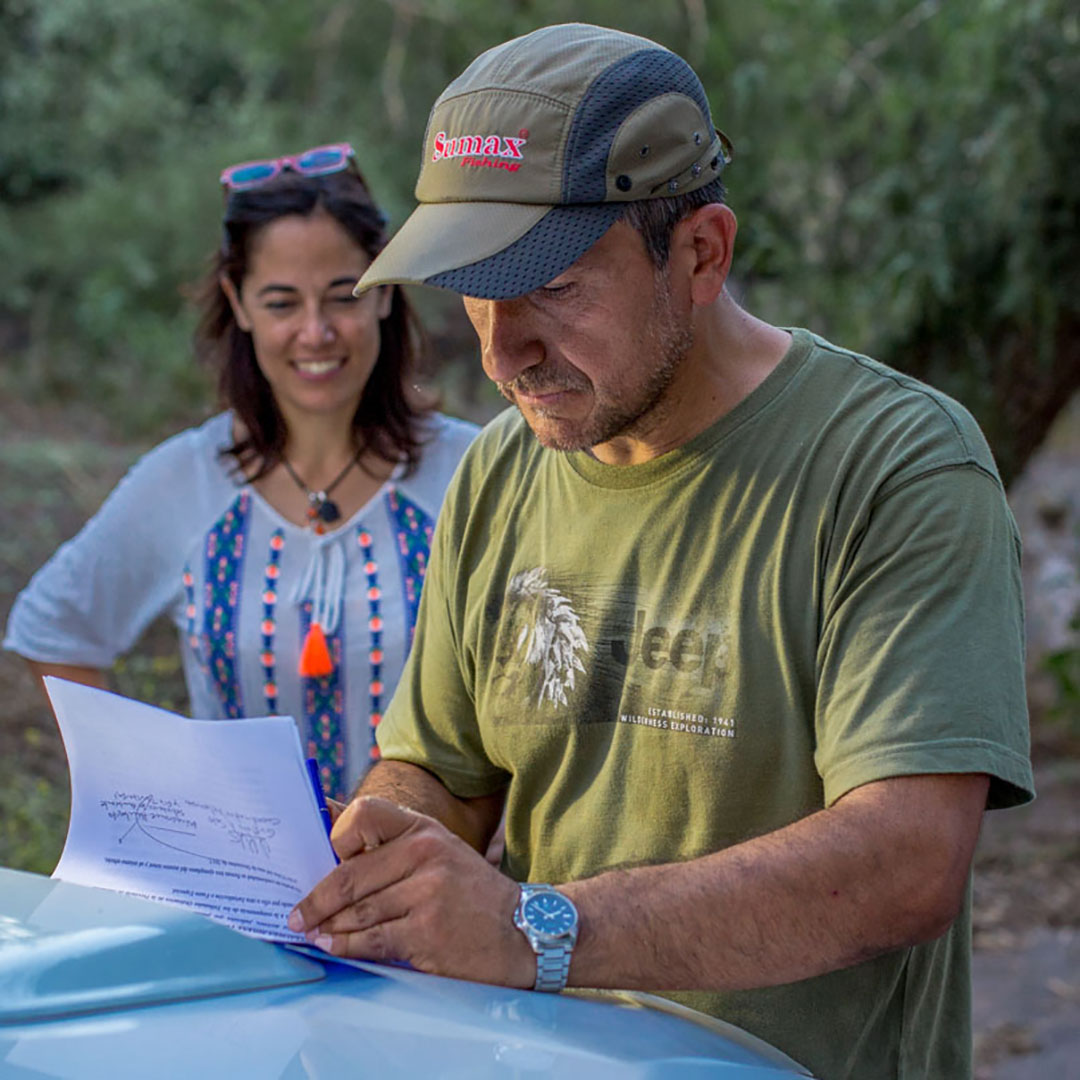
Gustavo Solís
Wildlife addition manager – iberá project.
Gustavo joined Fundación Rewilding Argentina in 2005. He is responsible for adding individuals to the species reintroduction projects and keeping relationships with Government authorities, zoos, and rescue centers in Argentina and abroad.

Juan Pablo Vallejos
Pens and enclosures construction manager.
Juampi joined Fundación Rewilding Argentina in 2017. He oversees the design and construction of pre-release, management, and training enclosures for our species reintroduction projects.
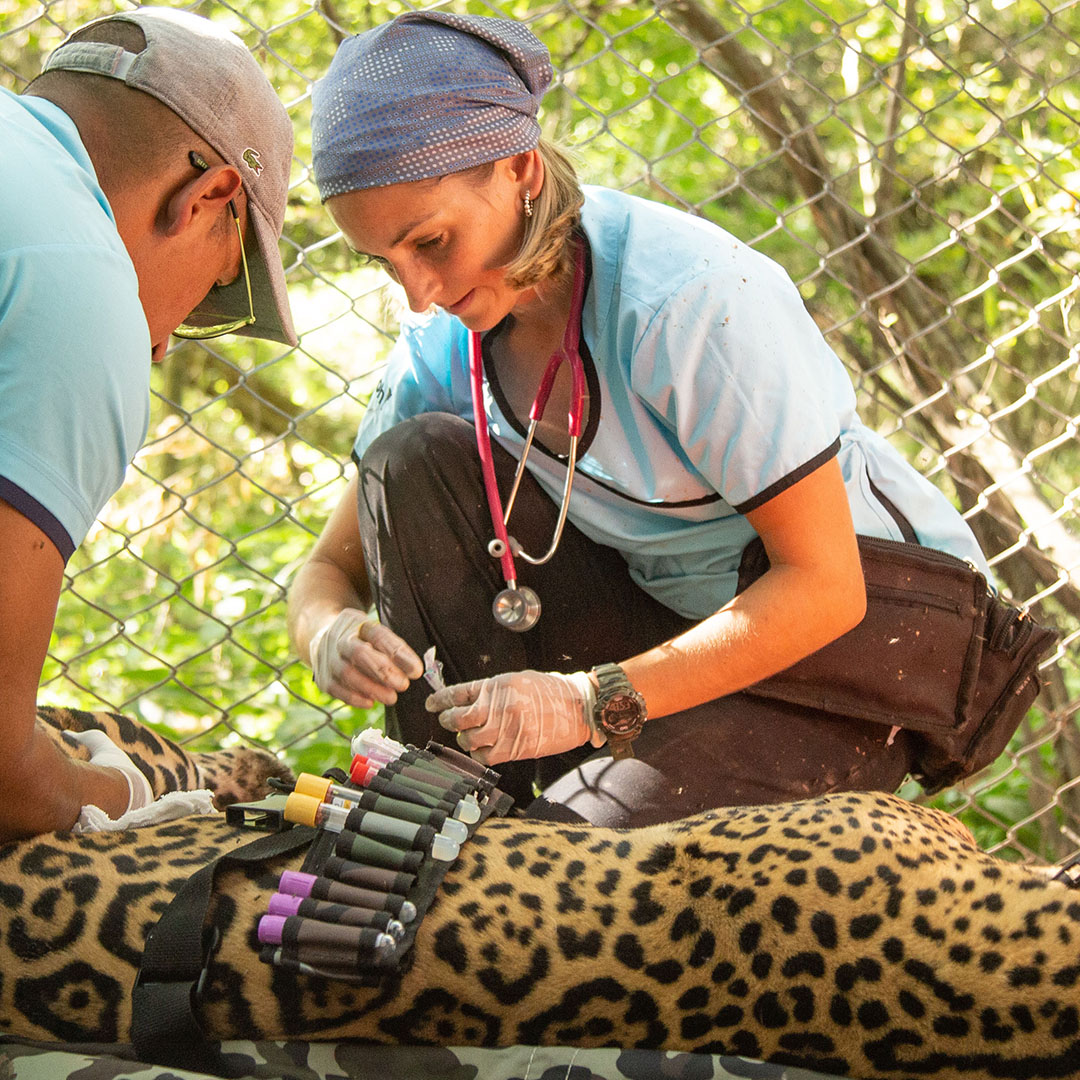
Ana Carolina Rosas
Veterinarian – iberá project.
Carito joined Fundación Rewilding Argentina in 2015 as the veterinary manager of the specimens entering the San Cayetano Quarantine and those released in Rincón del Socorro, San Alonso, and Carambola.

Valentina Ellis
Veterinari an – iberá project.
Valentina joined Fundación Rewilding Argentina in 2020 as the veterinary manager of the specimens entering the Paso de la Patria Quarantine and those released in Cambyretá, Yerbalito, and San Nicolás.
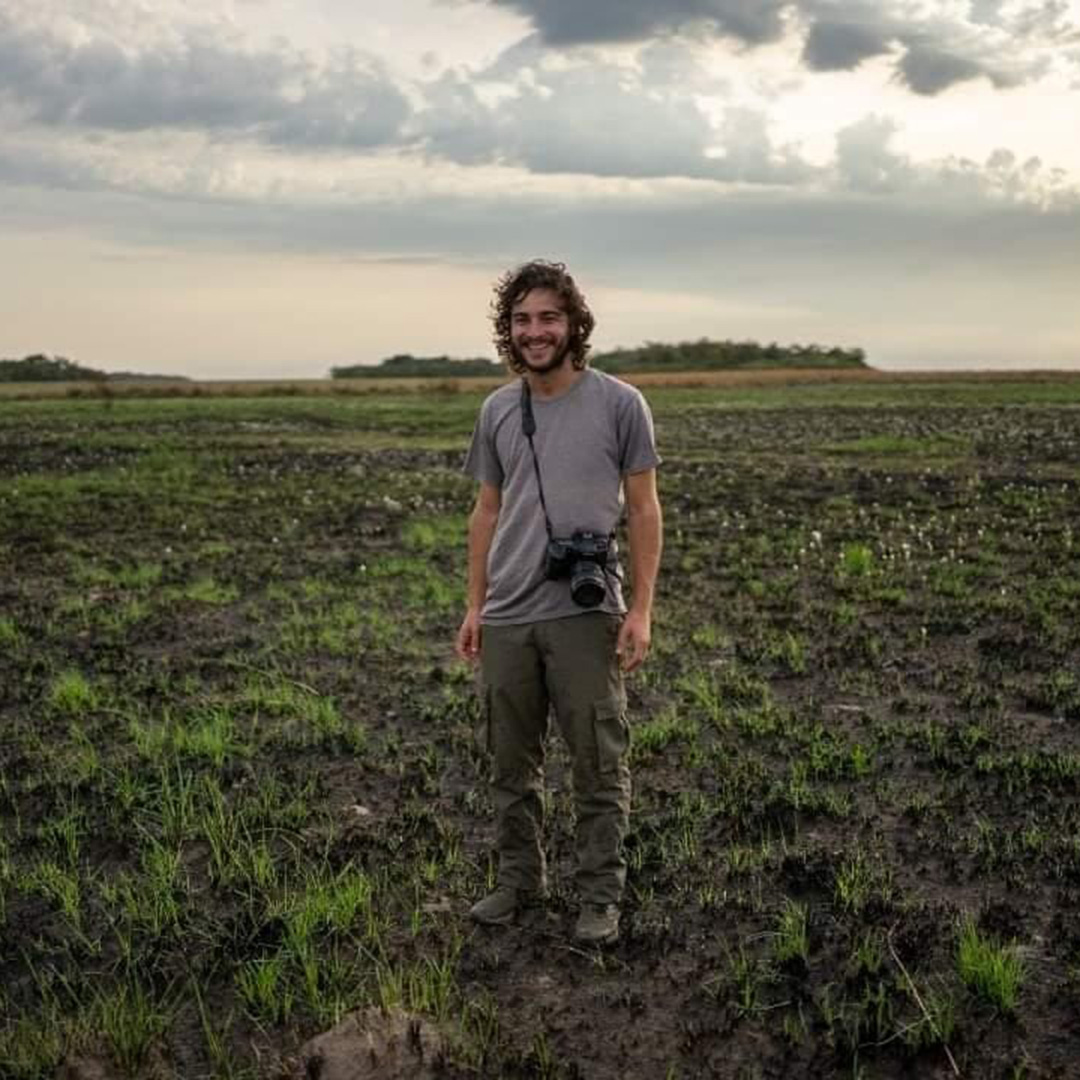
SEBASTIÁN NAVAJAS
Communications coordinator – iberá project.
Sebas joined Fundación Rewilding Argentina in 2022. He is responsible for collecting and editing communication pieces about Iberá’s reintroduction projects.
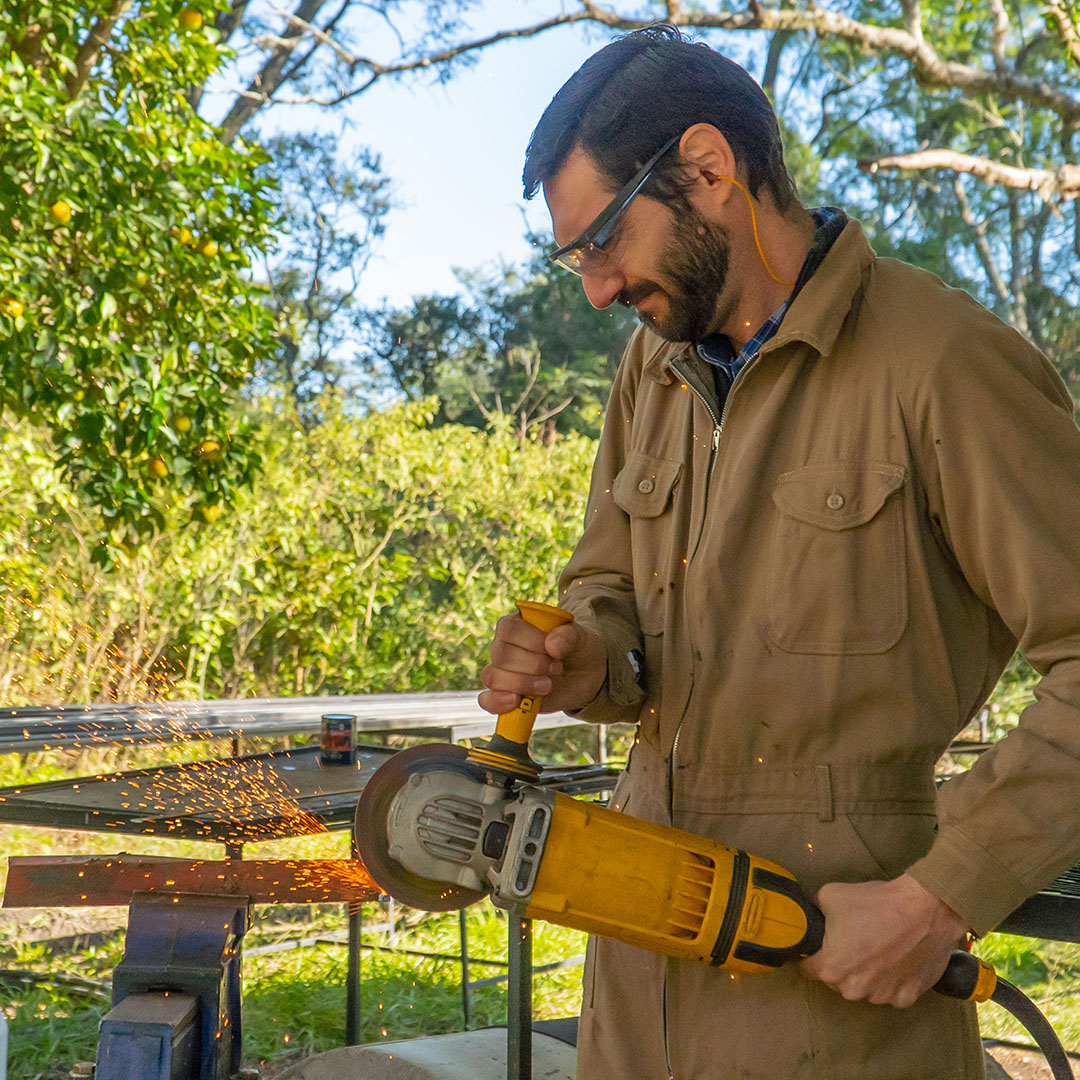
FEDERICO PONTÓN
Wildlife movement manager – iberá project.
Fede joined Fundación Rewilding Argentina in 2019. He is responsible for designing and building quarantine pens as well as boxes and trailers to move wildlife.
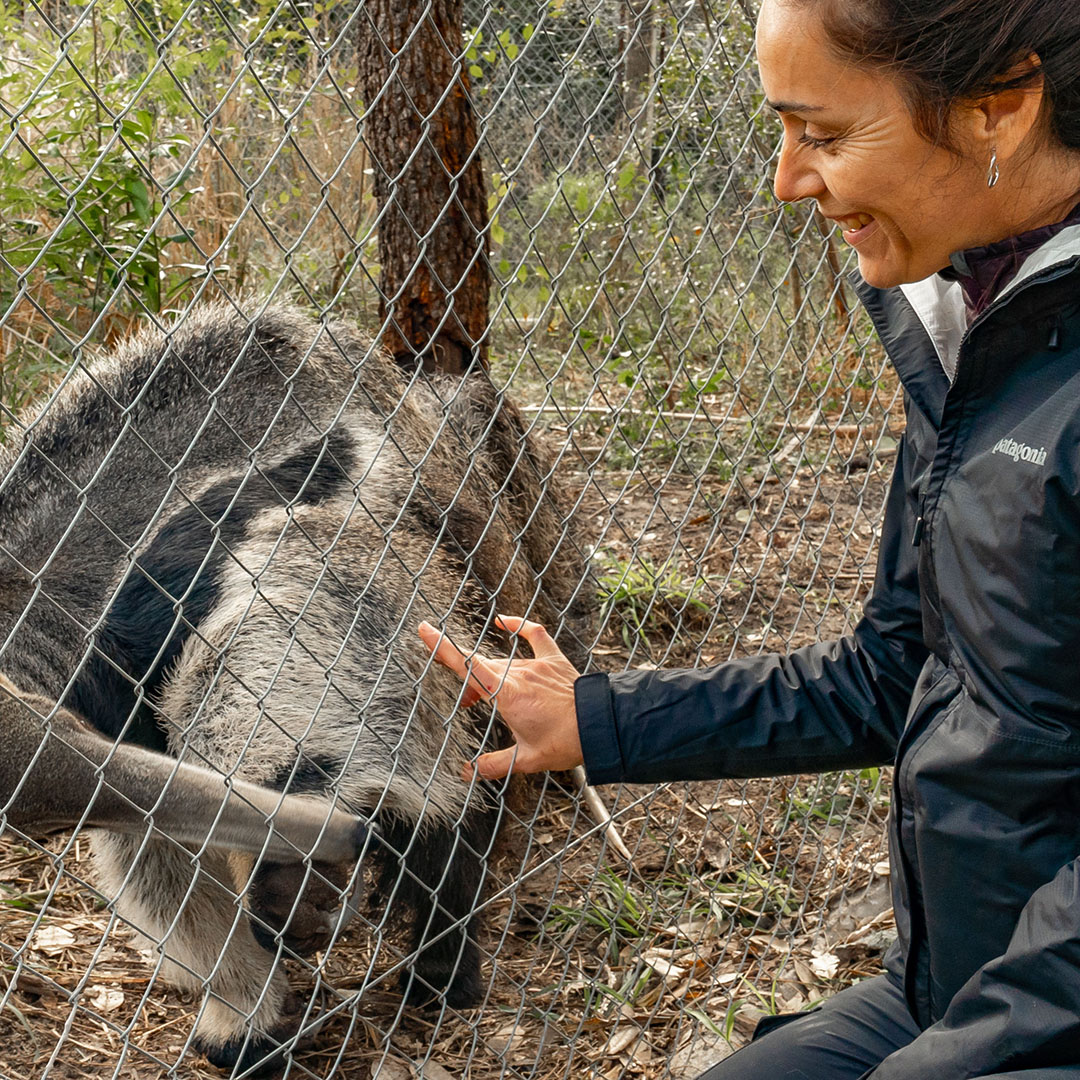
Alicia Delgado
San cayetano quarantine and giant anteater rescue center coordinator – iberá project.
Alicia joined Fundación Rewilding Argentina in 2006. She manages the jaguar and giant otters quarantine facilities and the Giant Anteater Rescue Center in San Cayetano.
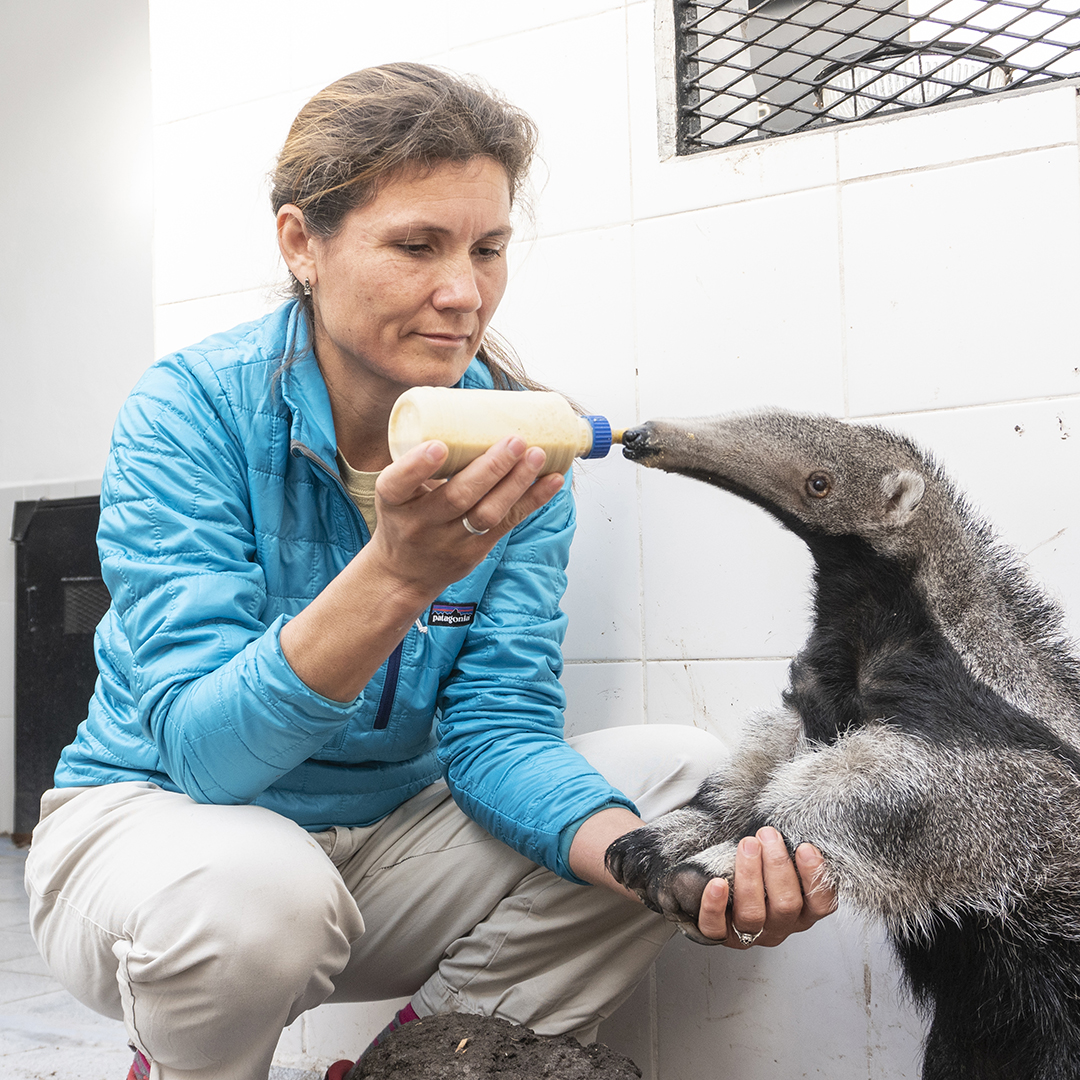
Giselda Fernández
Animal care at san cayetano quarantine – iberá project.
Gichi joined Fundación Rewilding Argentina in 2006. She takes care of jaguars and giant otters in the San Cayetano quarantine and giant anteaters who arrive at the Giant Anteater Rescue Center.
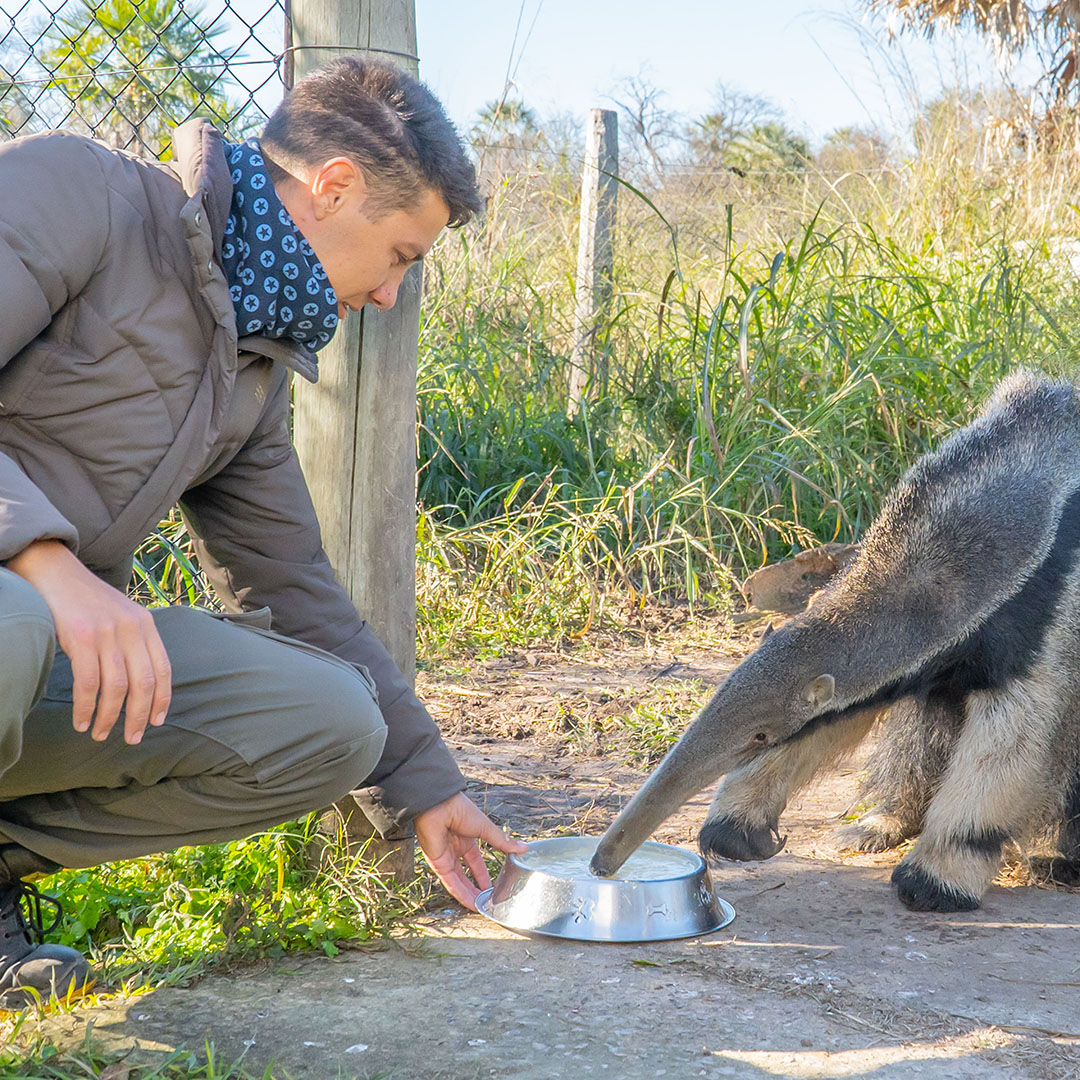
Rogelio Fernández
Roge joined Fundación Rewilding Argentina in 2016. He takes care of jaguars and giant otters in the San Cayetano quarantine and giant anteaters who arrive at the Giant Anteater Rescue Center.

Bárbara Pantanalli
Red-and-green macaw training at san cayetano quarantine – iberá project.
Barbi joined Fundación Rewilding Argentina in 2021. She takes care of collared peccaries, bare-faced curassows, red-legged seriemas, and red-and-green macaws at the Paso de la Patria Quarantine. She also trains the macaws before they’re moved to the release site.

Magalí Longo
Conservation coordinator at san alonso – iberá project.
Magalí joined Fundación Rewilding Argentina in 2016. She coordinates San Alonso’s wildlife reintroduction projects, including the pampas deer, giant anteater, collared peccary, jaguar, and giant otter. She also coordinates the island’s prescribed burns and the control of invasive alien species.
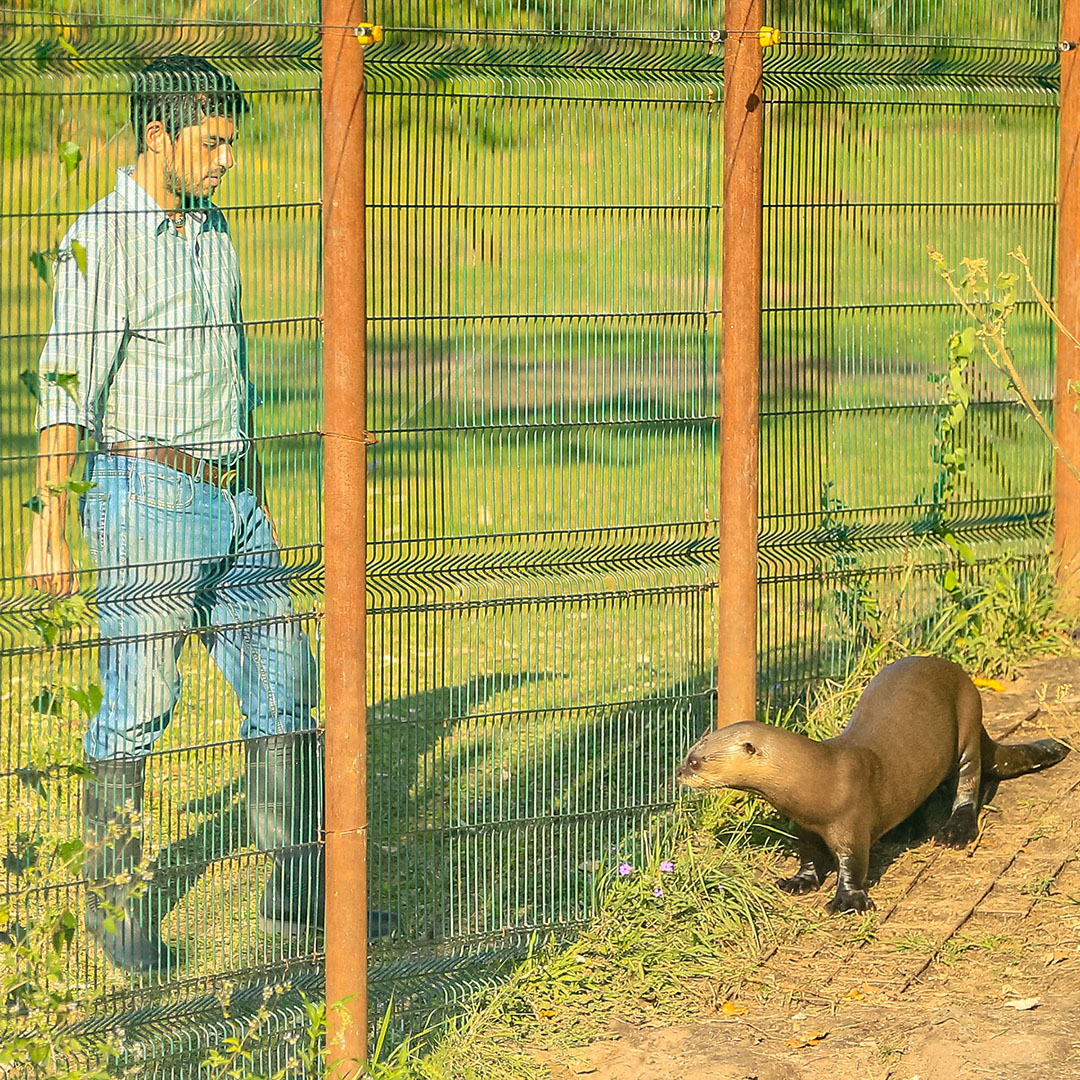
Matias Greco
Giant otter management at san alonso – iberá project.
Matías joined Fundación Rewilding Argentina in 2019. He manages the giant otters arriving at this species’ reintroduction project.

Pablo Cabrera
Conservation manager at san nicolás – iberá project.
Pablo joined Fundación Rewilding Argentina in 2019. He is primarily involved in monitoring and managing reintroduced pampas deer, giant anteaters, and collared peccaries.
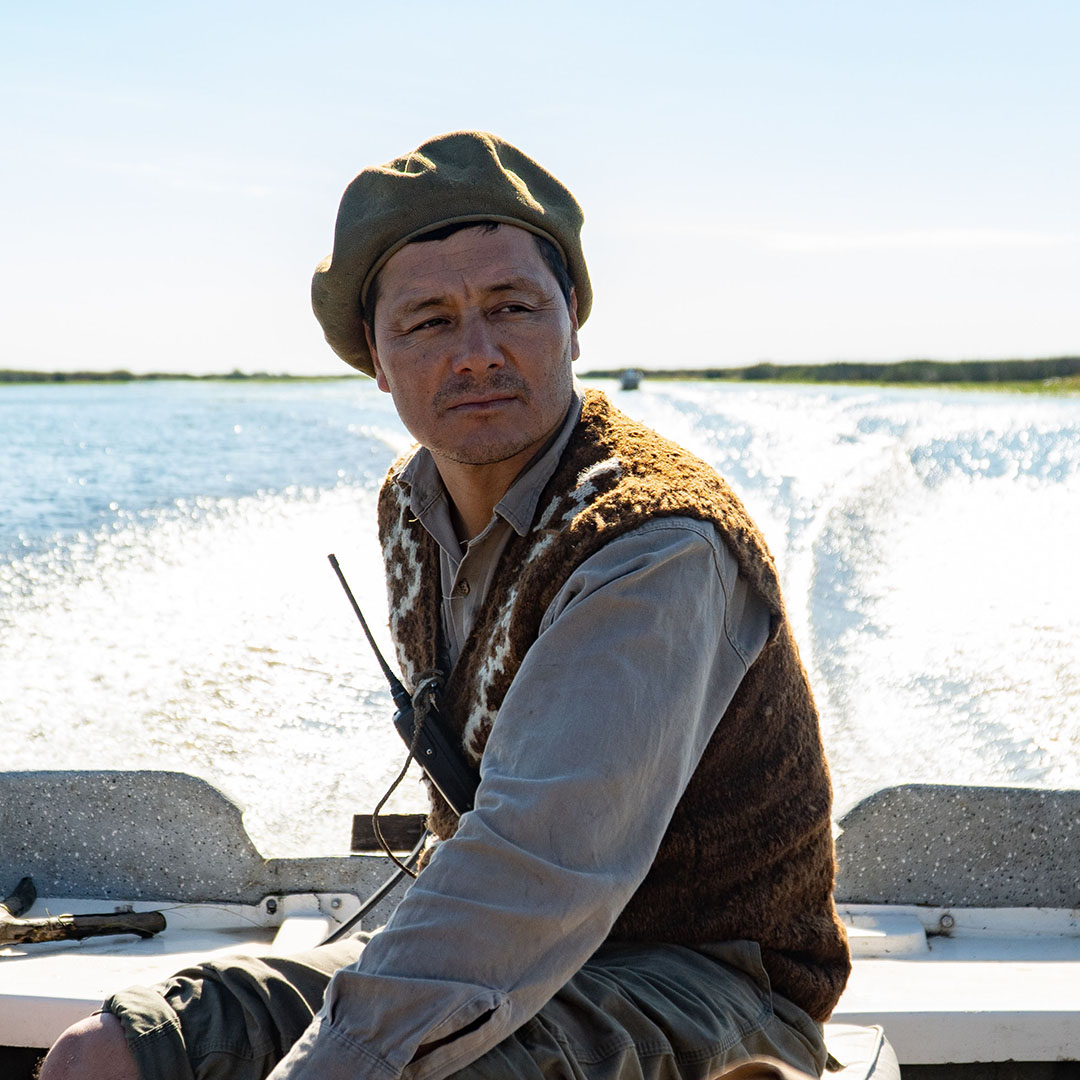
Héctor Ortíz
Operations and fire management at san alonso – iberá project.
Héctor joined Fundación Rewilding Argentina in 2013. He is responsible for logistics and operations, as well as carrying out prescribed burns in San Alonso.

Carlos Pucheta
Operations at san alonso – iberá project.
Carlín joined Fundación Rewilding Argentina in 2018. He is involved in logistics and operations in San Alonso.
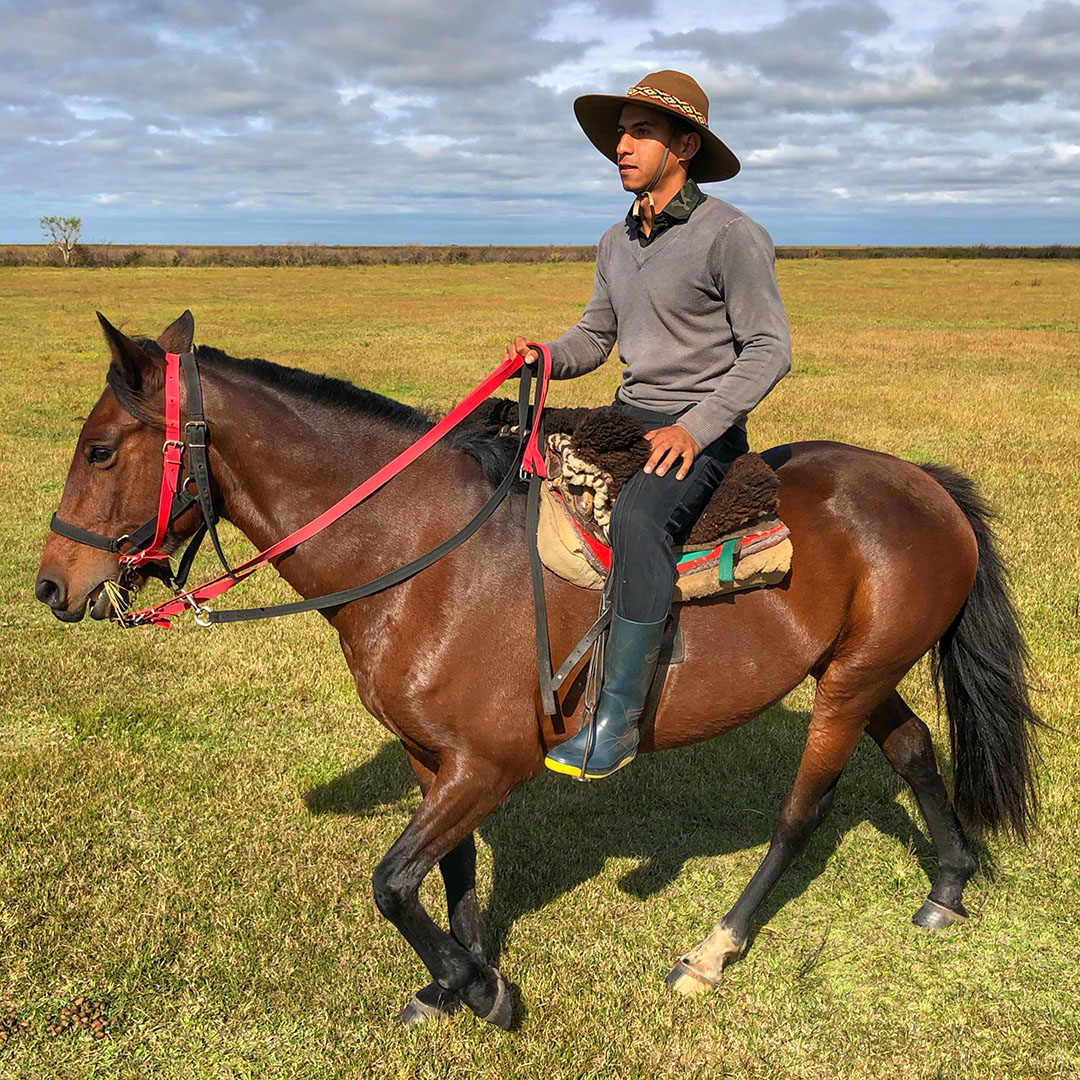
Victor Sotelo
Alien species control at san alonso – iberá project.
Victor joined Fundación Rewilding Argentina in 2019. He is responsible for controlling exotic animals such as feral pigs in San Alonso and assisting in prescribed burns.
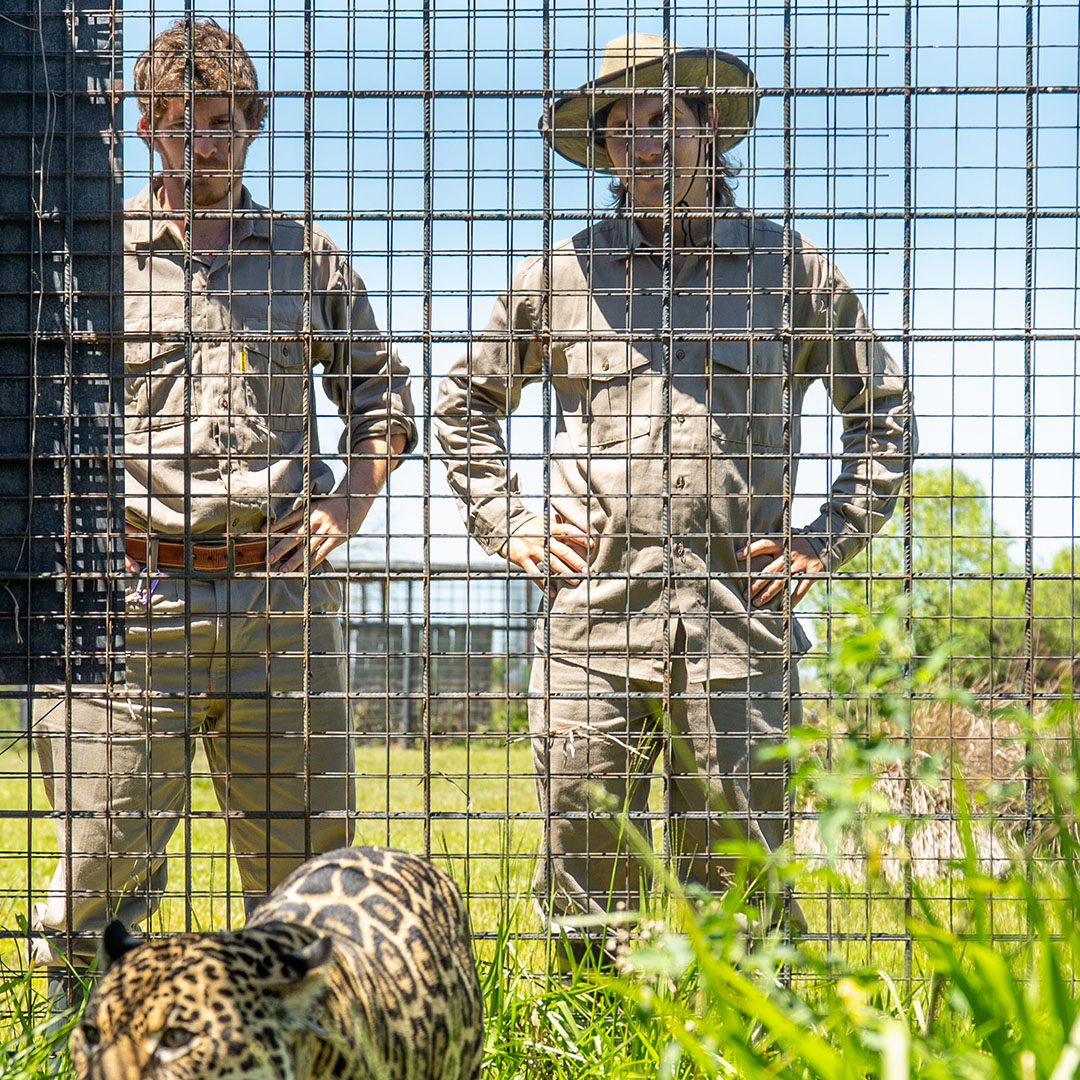
Alejandro Welschen
Iberá project.
Pipa collaborates with the monitoring of the ecological impacts of the jaguars released in San Alonso through the Asociación Civil Centro de Investigaciones del Bosque Atlántico (CEIBA).

Marianela Masat
Conservation manager at cambyretá – iberá project.
Mane joined Fundación Rewilding Argentina in 2014. She coordinates Cambyretá and Yerbalito’s wildlife reintroduction projects, including the bare-faced curassow, the red-and-green macaw, and the collared peccary.

Sofía Salazar
Conservation manager at yerbalito – iberá project.
Sofía joined Fundación Rewilding Argentina in 2020. She is involved in the monitoring and management of reintroduced bare-faced curassows, red-and-green macaws, and collared peccaries.

Fabián Yablonski
Conservation coordinator at carambola – iberá project.
Fabián joined Fundación Rewilding Argentina in 2017. He coordinates Carambola’s wildlife reintroduction projects, including the giant anteater and the collared peccary. He also coordinates prescribed burnings and alien species control in that portal.

Juan Cruz Minvielle
Monitoring of reintroduced wildlife at san nicolás – iberá project.
Juan Cruz joined Fundación Rewilding Argentina in 2020. He coordinates the wildlife reintroduction projects in San Nicolás, including the giant anteater and the collared peccary.
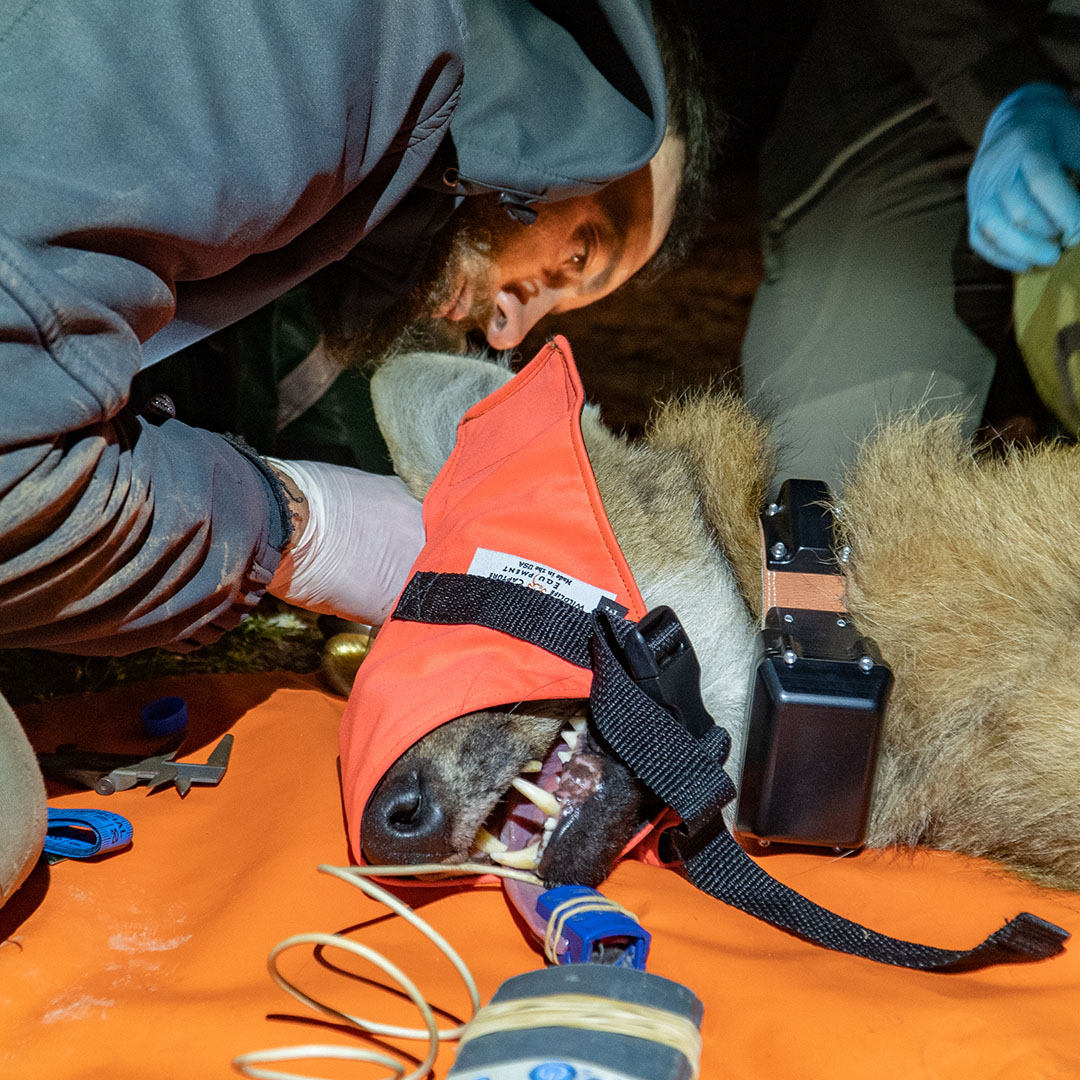
Augusto Distel
Conservation coordinator at rincón del socorro – iberá project.
Augusto joined Fundación Rewilding Argentina in 2018. He coordinates Rincón del Socorro’s wildlife reintroduction projects, including the pampas deer, giant anteater, collared peccary and red-legged seriema. He also plans and carries out prescribed burnings, and controls invasive alien species.

HERNÁN CASCO
Alien species control at rincón del socorro – iberá project.
Hernán joined Fundación Rewilding Argentina in 2022. He is responsible for controlling exotic animals such as feral pigs in Rincón del Socorro.

LUCIANO COLLI
Wildlife reintroduction management at rincón del socorro – iberá project.
Luciano joined Fundación Rewilding Argentina in 2023. He collaborates with the monitoring and management of the wildlife reintroduction projects in Rincón del Socorro, including the pampas deer, ocelot, giant anteater, the collared peccary.

DANIEL ROLDÁN
Aguará conservation center quarantine and red-and-green macaw training center manager – iberá project.
Daniel joined Fundación Rewilding Argentina in 2023. He manages the red-and-green macaw, bare-faced curassow and collared peccary quarantine facilities. He is also responsible for training the red-and-green macaws before they are released.
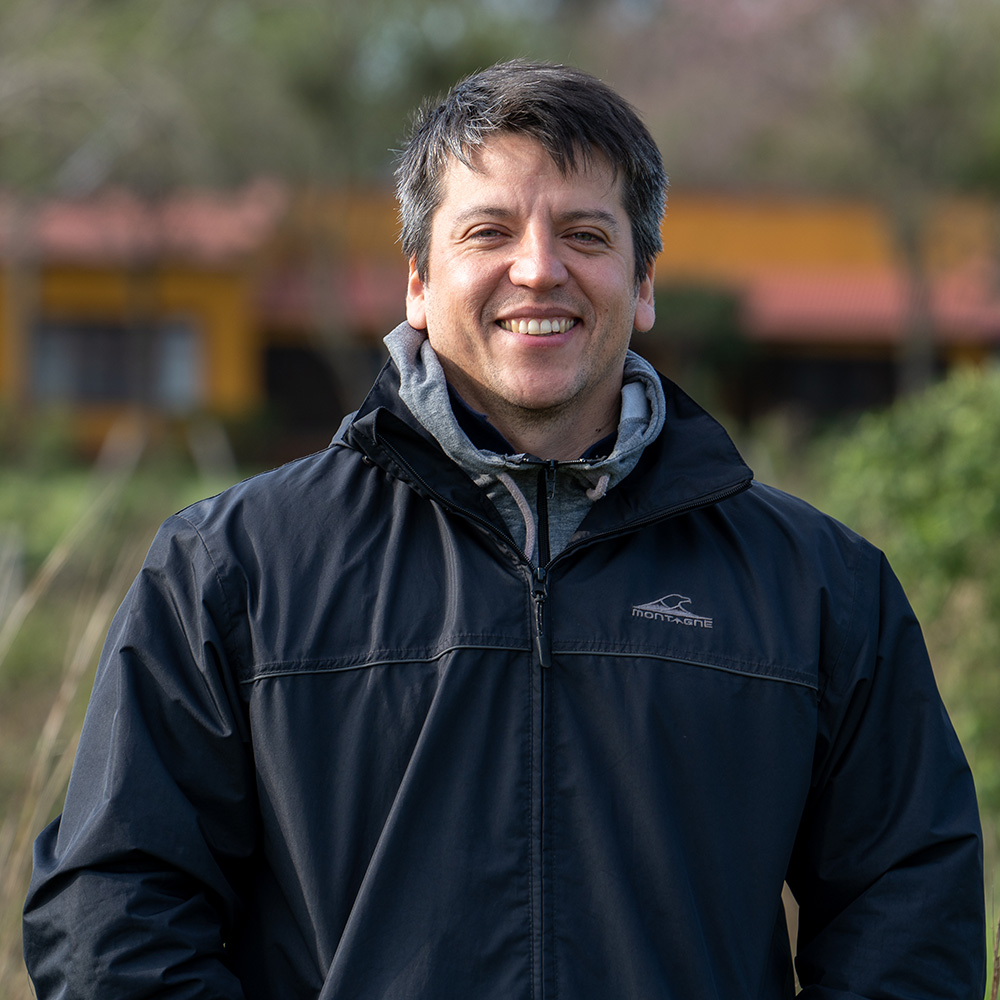
NICOLÁS GONZÁLEZ
Institutional relations with neighbors – iberá project.
Nicolás is originally from Mercedes, Corrientes. He is a veterinarian and joined Rewilding Argentina in 2022. He is responsible for maintaining institutional relationships with livestock and forestry producers surrounding Iberá Park. This is to inform them about reintroduction projects, with a focus on the jaguar, and to ensure a permanent connection with them.

CANDELA FRACCIA
Conservation – iberá project.
Candela joined Fundación Rewilding Argentina in 2023. She monitors and manages species, such as the bare-faced curassow, the red-and-green macaw, the giant anteater, and the collared peccary, at Portal Yerbalito.

DELFINA MARTIREN
Pilot – iberá project.
Delfina joined Fundación Rewilding Argentina in 2022. As a pilot, she is responsible for aerial operations, including flying our team and wildlife to remote areas and monitoring flights.

GRACIELA RÍOS
Graciela joined Fundación Rewilding Argentina in 2021 to work in the operations team at San Alonso Island. Native of Paraje Caimán (Corrientes), she has been in contact with nature since she was a little kid.
Coordinadora de Parques y Comunidades – Proyecto Iberá
Marisi López es correntina, y licenciada en Relaciones Públicas. En 2005 se suma al equipo de Tompkins Conservation para trabajar en el Parque Iberá. A lo largo de los años ha desempañando diferentes roles que le han otorgado una mirada abarcativa del proyecto. Actualmente lidera el proceso de apertura y donación de portales turísticos y uso público del Parque Iberá, generando alianzas estratégicas con actores políticos locales. Marisi es la referente ante la prensa, la sociedad civil y actores de la comunidad.
Coordinador en Portal Carambola – Proyecto Iberá
Pascual Pérez es correntino nacido en Mburucuyá, tierra del chamamé y del Parque Nacional Mburucuyá. Su curiosidad y amor por la naturaleza desde pequeño, sumados a su afinidad con los caballos y manejo del idioma guaraní, le han permitido desempeñarse con soltura en el Iberá profundo desde 2007 hasta 2016, pudiendo llegar a los corazones de pobladores locales y haciéndolos parte de los proyectos de la Fundación. Trabajó en la Administración de Parques Nacionales aportando sus conocimientos sobre Iberá antes de reincorporarse al equipo de Fundación Rewilding Argentina en 2022 para desempeñarse como Coordinador del Portal Carambola.
Encargada de desarrollo turístico y uso público del Portal Carambola – Proyecto Iberá
Nacida en Corrientes, Agustina se formó en turismo y hotelería. Trabajó en diversos proyectos de turismo de naturaleza hasta el año 2018, cuando se unió al equipo de desarrollo del uso público del Parque Nacional Iberá en Parques Nacionales. Convencida de que el turismo de naturaleza es una herramienta para la conservación, en el año 2023 se unió al equipo de Rewilding Argentina, donde trabaja para impulsar economías locales restaurativas en torno al Gran Parque Iberá.
Operaciones y logística – Proyecto Iberá
Nicolás es oriundo de Mburucuyá, Corrientes. Criado en el pueblo, se ha relacionado desde muy chico con los caballos y el trabajo rural. Maneja el idioma guaraní y es brigadista de incendios. En 2022 se unió a Rewilding Argentina, donde coordina la logística y tareas generales de mantenimiento de instalaciones, recorridas de los potreros y abastecimiento.
Anfitrión del Portal Carambola – Proyecto Iberá
Marcos es oriundo de Concepción del Yaguareté Corá, Corrientes. Es técnico en producción agropecuaria y desde el año 2022 forma parte del equipo de Rewilding Argentina. Actualmente es el anfitrión del camping Carambolita y otras áreas destinadas al turismo de naturaleza.
Puestero en Puesto Medina – Proyecto Iberá
Magno es oriundo de Concepción del Yaguareté Corá, Corrientes, pero pasó gran parte de su infancia en el Paraje Ñupy, estero adentro. Domina el guaraní y las artes relacionadas a los caballos y el botador. Se unió a Rewilding Argentina en 2022, donde se encarga de la vigilancia de la reserva natural, el control de especies exóticas y el mantenimiento y buen estado de alambrados, tareas que realiza en recorridas a caballo.
Tomás es nacido y criado en Concepción del Yaguareté Corá, Corrientes. Su pasión por la danza folclórica y la cultura correntina, su experiencia en trabajos rurales y su manejo del idioma guaraní resaltan el aspecto cultural ibereño que caracteriza al Portal Carambola. Se unió a Rewilding Argentina en 2023, para ser anfitrión del camping Carambolita, el refugio Lechuza Cuá y otras áreas destinadas al turismo de naturaleza.
Operaciones y tractorista – Proyecto Iberá
Mauricio nació y creció en Mburucuyá, Corrientes. Su experiencia como brigadista de incendios, albañilería y manejo de maquinaria lo hacen un excelente encargado de mantenimiento general y de cortafuegos del Portal Carambola. Se unió a Rewilding Argentina en 2023.
Operaciones y Puestero en Puesto Sofía – Proyecto Iberá
Jorge nació en San Miguel, Corrientes. Desde chico es un apasionado del campo y ha trabajado como peón rural en establecimientos de la zona. Se caracteriza por su manejo del idioma guaraní y por ser amansador de caballos, un trabajo que requiere paciencia y dedicación. Gran conocedor de los esteros, se unió en el 2023 a Rewilding Argentina para aportar sus conocimientos en el manejo y operaciones del Puesto Sofía.
Puestero en Puesto Sofía – Proyecto Iberá
Miguel es baqueano, nacido y criado en el Paraje Carambola de los Esteros de Iberá, Corrientes. Un gran conocedor del humedal, ha mantenido sus tradiciones y su lengua nativa, el guaraní. Se unió a Rewilding Argentina en 2022 y sus responsabilidades incluyen la vigilancia de la reserva natural, el control de especies exóticas y el mantenimiento y buen estado de alambrados, tareas que realiza en recorridas a caballo.
Operaciones – Proyecto Iberá
Pedro es guía baqueano oriundo del Paraje Carambola, en los Esteros de Iberá, Corrientes. Un gran conocedor del humedal, mantiene su lengua nativa, el guaraní, y sus tradiciones y costumbres. Se unió a la Fundación en el año 2008. Sus responsabilidades incluyen tareas generales de operaciones y logística, mantenimiento de instalaciones, recorridas de los potreros, abastecimiento para puestos
Puestero en Puesto Plumero – Proyecto Iberá
Donato es oriundo de Concepción del Yaguareté Corá, Corrientes, y desde siempre ha estado vinculado al estero, domina el guaraní y las artes relacionadas a los caballos y el botador. Se unió a la Fundación en 2010. Sus responsabilidades incluyen la vigilancia en la reserva natural, el control de especies exóticas y el mantenimiento del buen estado de los alambrados, tareas que realiza en recorridas a caballo y en canoa.
Portal Carambola – Proyecto Iberá
Juan es oriundo de Concepción del Yaguareté Corá, en Corrientes, y fue criado en el campo, lo que le permitió dominar el traslado a caballo y canoa desde joven. Se unió a la Fundación en el año 2020. Juan mantiene las relaciones institucionales con las comunidades de Carambola y Ñupy, asegurando un vínculo permanente con los pobladores, a quienes informa, mayormente en lengua guaraní, sobre los avances y novedades de los proyectos de reintroducción.
Coordinador de incorporación de individuos a los proyectos de reintroducción – Proyecto Iberá
Gustavo se unió a Fundación Rewilding Argentina en el año 2005. Es responsable del ingreso de individuos a los proyectos de reintroducción de especies, manteniendo una amplia red de contactos que incluyen a autoridades gubernamentales de fauna, zoológicos y centros de rescate en Argentina y el exterior.
Coordinado r de construcción de corrales y recintos – Proyectos Iberá e Impenetrable
Juampi se unió a Fundación Rewilding Argentina en el año 2017. Es responsable del diseño y construcción de corrales de presuelta, manejo y entrenamiento de los proyectos de reintroducción de fauna en Iberá e Impenetrable.
Veterinaria clínica – Proyecto Iberá
Carito se unió a Fundación Rewilding Argentina en el año 2015. Es responsable veterinaria de los ejemplares que ingresan a la cuarentena de San Cayetano y de los ejemplares que son liberados en Rincón del Socorro, San Alonso y Carambola.
Veterinari a clínic a – Proyecto Iberá
Valentina se unió a Fundación Rewilding Argentina en el año 2020. Es responsable veterinaria de los ejemplares de fauna que ingresan a la cuarentena de Paso de la Patria y de los ejemplares que son liberados en Cambyretá, Yerbalito y San Nicolás.
Coordinador de Comunicación – Proyecto Iberá
Sebastián se unió a Fundación Rewilding Argentina en el año 2022. Es responsable de la comunicación a través de las redes sociales y de colectar material audiovisual y armar contenidos para comunicar los proyectos de reintroducción de fauna en Iberá.
Federico Pontón
Coordinador de transporte de animales – proyecto iberá.
Fede se unió a Fundación Rewilding Argentina en el año 2019. Es responsable del diseño y construcción de cajas y tráileres para el transporte de animales, así como de la construcción de corrales de cuarentena.
Coordinadora de la Cuarentena en San Cayetano y Centro de Rescate de Osos Hormigueros – Proyecto Iberá
Alicia se unió a Fundación Rewilding Argentina en el año 2006. Es responsable de la gestión de la cuarentena de yaguaretés y nutrias gigantes, y del Centro de Rescate de Osos Hormigueros ubicados en San Cayetano.
Giselda Fernández
Cuidado de ejemplares en la cuarentena de san cayetano – proyecto iberá.
Gichi se unió a Fundación Rewilding Argentina en el año 2006. Está involucrada en el cuidado de ejemplares de yaguareté y nutria gigante en la cuarentena de San Cayetano, y de los ejemplares de oso hormiguero gigante que arriban al Centro de Rescate de Osos Hormigueros.
Rogelio Fernández
Roge se unió a Fundación Rewilding Argentina en el año 2016. Está involucrado en el cuidado de ejemplares de yaguareté y nutria gigante en la cuarentena de San Cayetano, y de los ejemplares de oso hormiguero gigante que arriban al Centro de Rescate de Osos Hormigueros.
Cuidado de ejemplares a ser reintroducidos y entrenamiento de guacamayos en la Cuarentena de San Cayetano – Proyecto Iberá
Barbi se unió a Fundación Rewilding Argentina en el año 2021. Está involucrada en el cuidado de ejemplares de pecarí de collar, muitú, chuña de patas rojas y guacamayo rojo en la cuarentena de Paso de la Patria, así como del entrenamiento de guacamayos previo a su liberación.
Coordinadora de Conservación en San Alonso – Proyecto Iberá
Magalí se unió a Fundación Rewilding Argentina en el año 2016. Es responsable de coordinar los trabajos de reintroducción de especies en San Alonso (Parque Iberá, Corrientes) los cuales incluyen al venado de las pampas, oso hormiguero gigante, pecarí de collar, yaguareté y nutria gigante. También se encarga de coordinar los trabajos de planificación y realización de quemas prescriptas y de control de exóticas invasoras (cerdo cimarrón y paraíso).
Manejo de nutrias gigantes en San Alonso – Proyecto Iberá
Matías se unió a Fundación Rewilding Argentina en el año 2019. Es responsable del manejo de los ejemplares de nutria gigante ingresados al proyecto de reintroducción de esta especie.
Coordinador de Conservación en San Nicolás – Proyecto Iberá
Pablo se unió a Fundación Rewilding Argentina en el año 2019. Está involucrado principalmente en el monitoreo y manejo de los ejemplares reintroducidos de venado de las pampas, oso hormiguero gigante y pecarí de collar.
Héctor Ortíz
Operaciones y manejo de fuego en san alonso – proyecto iberá.
Héctor se unió a Fundación Rewilding Argentina en el año 2013. Es responsable de la logística, operaciones, así como de la realización de quemas prescriptas en San Alonso.
Operaciones en San Alonso – Proyecto Iberá
Carlín se unió a Fundación Rewilding Argentina en el año 2018. Está involucrado en la logística y operaciones en San Alonso.
Victor Sotelo
Control de exóticas invasoras en san alonso – proyecto iberá.
Victor se unió a Fundación Rewilding Argentina en el año 2019. Es el responsable del control de fauna exótica como cerdos cimarrones y paraísos en San Alonso y de asistir en la realización de quemas prescriptas.
Proyecto Iberá
Pipa colabora con el monitoreo de impactos ecológicos de los yaguaretés liberados en San Alonso a través de la Asociación Civil Centro de Investigaciones del Bosque Atlántico (CEIBA).
Coordinadora de Conservación en Cambyretá – Proyecto Iberá
Mane se unió a Fundación Rewilding Argentina en el año 2014. Es responsable de coordinar los trabajos de reintroducción de especies en Cambyretá y Yerbalito, los cuales incluyen al muitú, guacamayo rojo y pecarí de collar.
Coordinadora de Conservación en Yerbalito – Proyecto Iberá
Sofía se unió a Fundación Rewilding Argentina en el año 2020. Está involucrada en el monitoreo y manejo de los ejemplares reintroducidos de muitú, guacamayo rojo y pecarí de collar.
Fabi á n Yablonski
Coordinador de conservación en carambola – proyecto iberá.
Fabián se unió a Fundación Rewilding Argentina en el año 2017. Es responsable de coordinar los trabajos de reintroducción de especies en Carambola, los cuales incluyen al oso hormiguero gigante y pecarí de collar. También se encarga de coordinar los trabajos de planificación y realización de quemas prescriptas y de control de exóticas invasoras (cerdo cimarrón y paraíso).
Manejo de fauna rentroducida en San Alonso – Proyecto Iberá
Juan Cruz se unió a Fundación Rewilding Argentina en el año 2020. Es responsable de coordinar los trabajos de reintroducción de especies en San Nicolás (Parque Iberá, Corrientes) los cuales incluyen al oso hormiguero gigante y pecarí de collar.

Coordinador de Conservación en Rincón del Socorro – Proyecto Iberá
Augusto se unió a Fundación Rewilding Argentina en el año 2018. Es responsable de coordinar los trabajos de reintroducción de especies en Rincón del Socorro, los cuales incluyen al venado de las pampas, oso hormiguero gigante, pecarí de collar y chuña de patas rojas. También se encarga de coordinar los trabajos de planificación y realización de quemas prescriptas y de control de exóticas invasoras (cerdo cimarrón, ciervo axis, paraíso y ligustro).

Control de especies exóticas invasoras en Rincón del Socorro – Proyecto Iberá
Hernán se unió a Rewilding Argentina en el año 2022. Es el responsable del control de fauna exótica, como cerdos cimarrones, ciervos axis y ciervos colorados, en el núcleo Rincón del Socorro.
Manejo de fauna reintroducida en Rincón del Socorro – Proyecto Iberá
Luciano se unió a Rewilding Argentina en el año 2023. Está involucrado en el monitoreo y manejo de aguarás guazús, pumas, venados de las pampas, ocelotes, osos hormigueros gigantes y pecaríes de collar.
Coordinador de Cuarentena del Centro de Conservación Aguará y del centro de entrenamiento y rehabilitación del guacamayo rojo – Proyecto Iberá
Daniel se unió a Rewilding Argentina en el año 2023. Es responsable de la cuarentena de guacamayo rojo y de muitú, además de la cuarentena de pecarí de collar. También es responsable del entrenamiento de los guacamayos rojos antes de ser liberados.
Relaciones Institucionales con vecinos – Proyecto Iberá
Nicolás es de Mercedes, Corrientes. Es veterinario y se unió a Rewilding Argentina en el año 2022. Allí se encarga de mantener relaciones institucionales con productores ganaderos y forestales que rodean al Parque Iberá, a fin de informar sobre los proyectos de reintroducción, con especial énfasis en el yaguareté, y asegurar un vínculo permanente con ellos.
Conservación – Proyecto Iberá
Candela se unió a Fundación Rewilding Argentina en el año 2023. Está involucrada en el monitoreo y manejo de especies en el Portal Yerbalito, entre ellas el muitú, guacamayo rojo, oso hormiguero gigante y pecarí de collar.
Delfina se unió a Fundación Rewilding Argentina en 2022. Es piloto y responsable de nuestras operaciones aéreas, que abarcan vuelos de monitoreo y traslados seguros de personal, fauna y equipos hacía áreas remotas y de difícil acceso.
Graciela se unió a la Fundación en el año 2021 y forma parte del equipo de operaciones y logística de la Isla San Alonso. Graciela es oriunda del Paraje Caimán (Corrientes) y desde muy pequeña ha estado en contacto directo con la naturaleza.
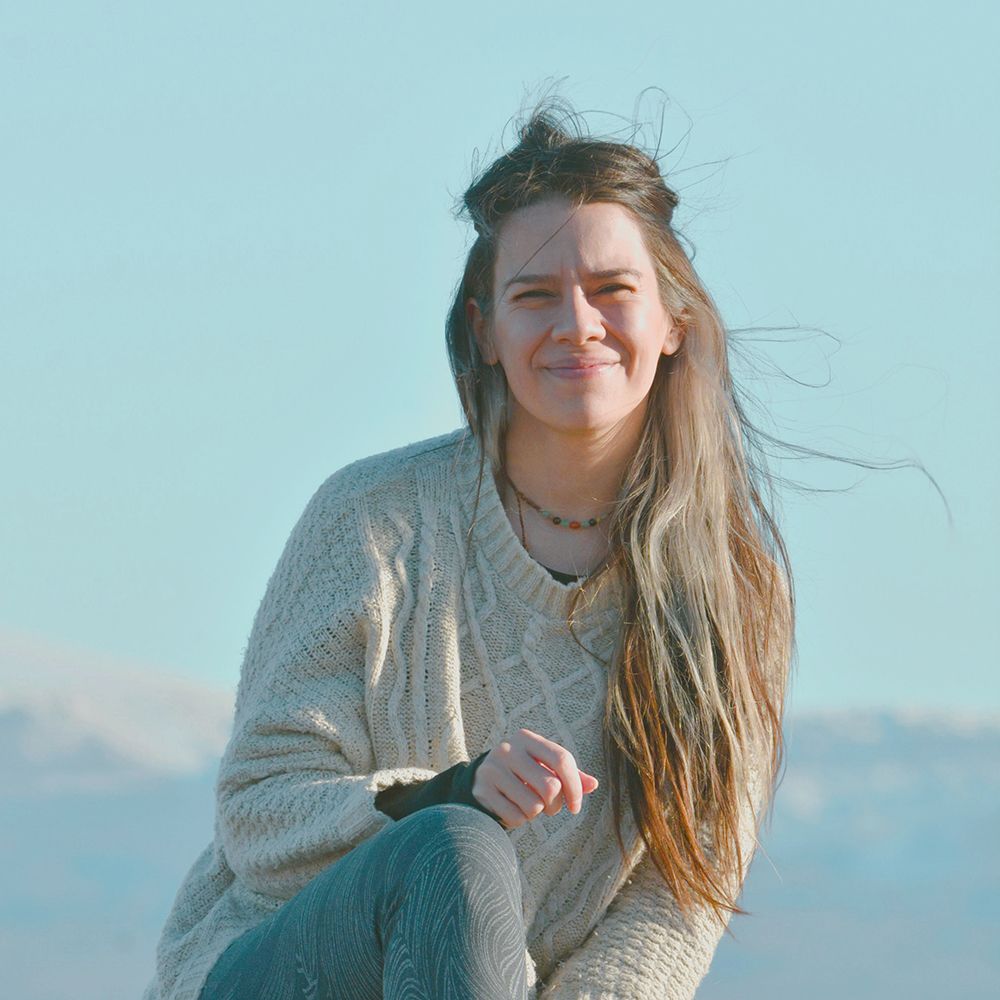
ROCÍO NAVARRO
Coordinadora de parque y comunidades – proyecto patagonia.
Nativa de Perito Moreno, Santa Cruz, Rocío es una activista comprometida con la tierra y las comunidades. Su formación en artes y su experiencia en espacios culturales y movimientos ecologistas la llevaron a unirse a Rewilding Argentina en 2018, inicialmente a cargo de la comunicación local del proyecto. Actualmente dirige relaciones institucionales con las comunidades adyacentes, forjando alianzas para la preservación ambiental.

HORACIO BARBIERI
Responsable de comunicación de parque y comunidades – proyecto patagonia.
Oriundo de Buenos Aires, desde 2016 Horacio se desarrolla como fotógrafo y realizador de videos para proyectos relacionados con la sustentabilidad, el trabajo social y el apoyo al cuidado y la conservación de la naturaleza. Desde 2021 colabora con la generación de material y contenido para comunicar los programas de Parque, Turismo y Comunidades del Proyecto Patagonia.
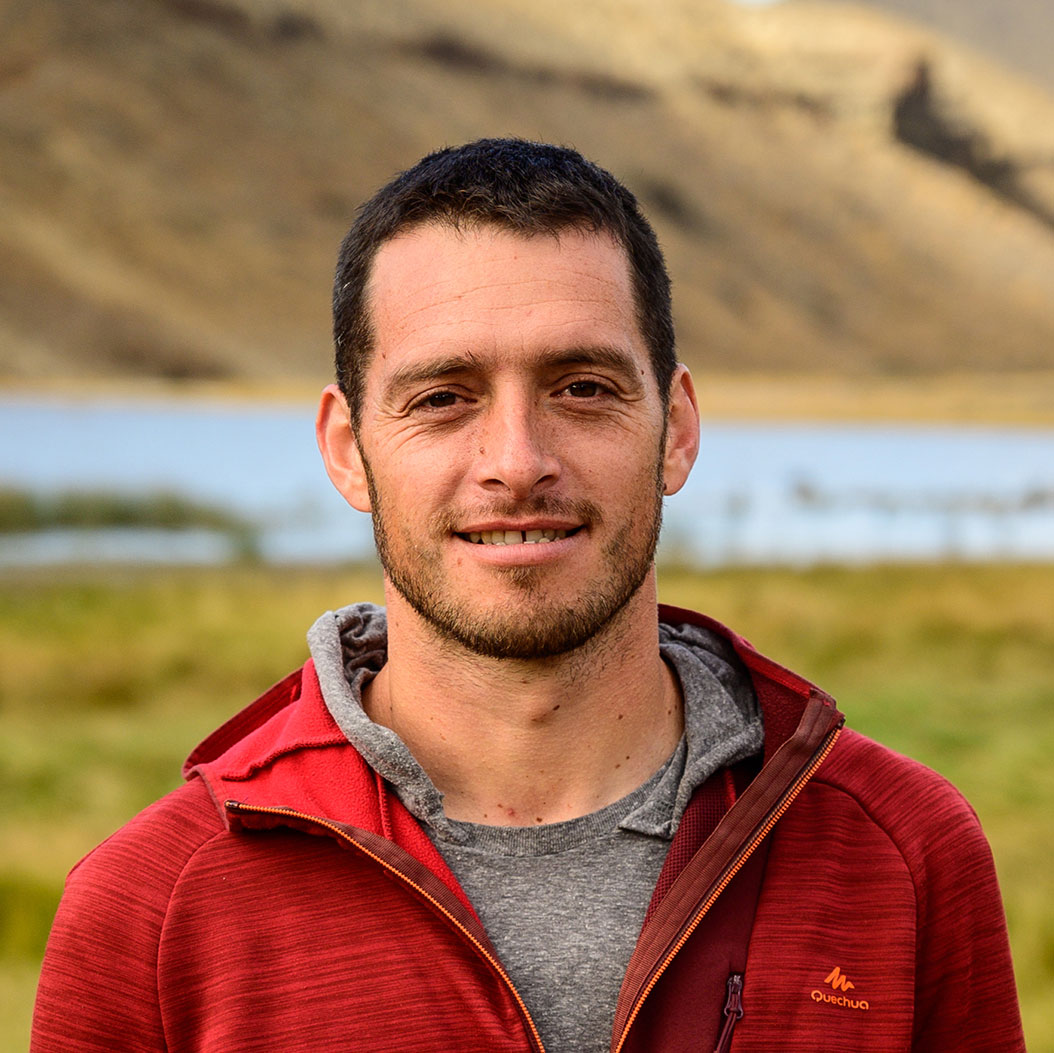
EMANUEL GALETTO
Coordinador de conservación – proyecto patagonia.
Emanuel es técnico guardaparque egresado de la Universidad Nacional de Misiones. Comenzó a vincularse con Rewilding Argentina como voluntario del proyecto de reintroducción del oso hormiguero gigante en Iberá en el año 2012. En el año 2013 comenzó a trabajar como asistente de campo en ese mismo proyecto, y en 2014 quedó a cargo de la coordinación de los proyectos de reintroducción de osos hormigueros, venados de las pampas, pecaríes de collar y tapires en Rincón del Socorro. En 2018 se trasladó a la provincia de Santa Cruz para coordinar los proyectos de restauración ecológica en el Parque Patagonia.
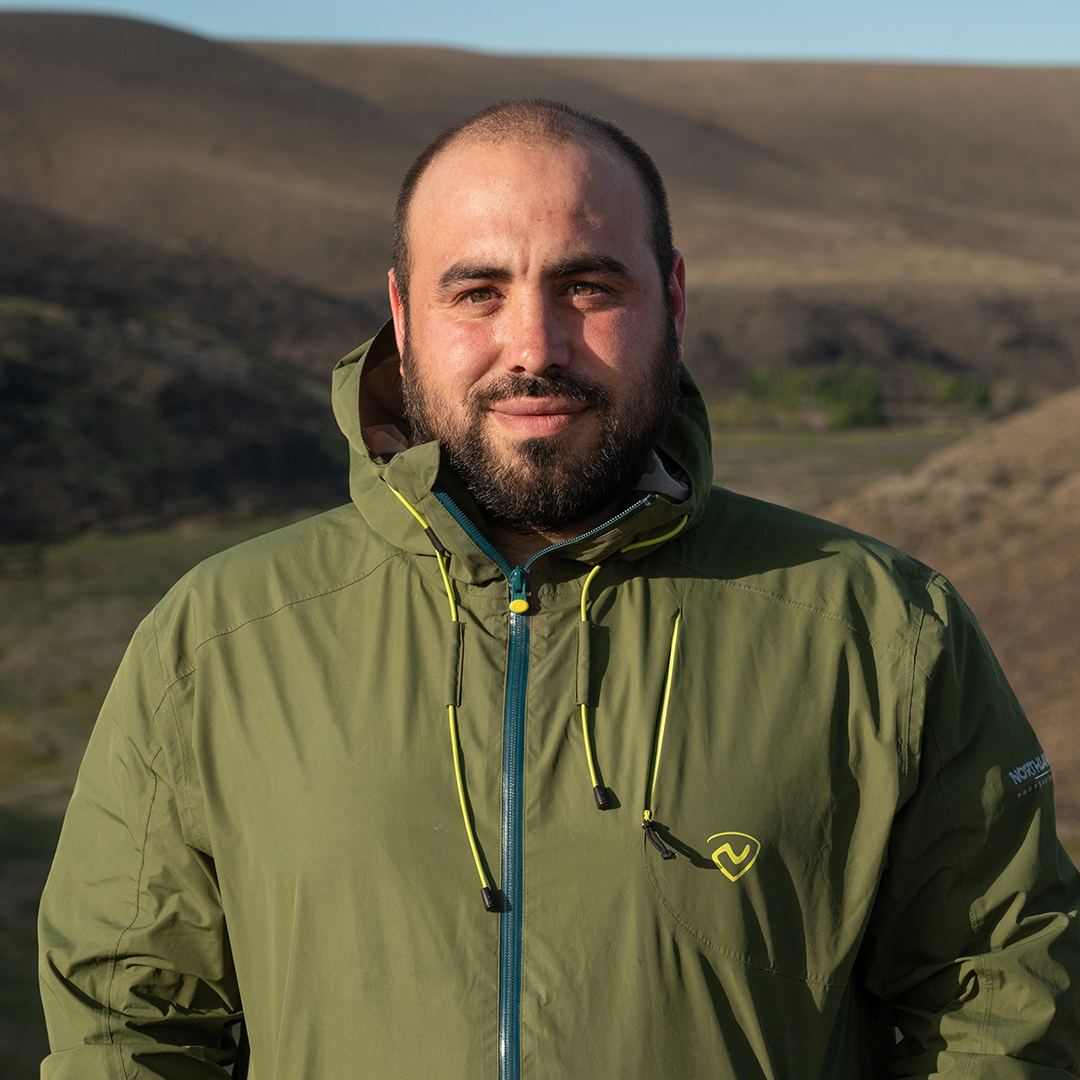
Franco Bucci – Fotógrafo
Responsable de comunicación del programa de conservación – proyecto patagonia.
El Turco proviene de una familia pionera en la región noroeste de Santa Cruz. Se unió a Rewilding Argentina en el año 2018. Es responsable de colectar material audiovisual y crear contenidos para comunicar los proyectos del programa de restauración ecológica del Parque Patagonia.

FELIPE IBANEZ
Asistente de operaciones en la estación biológica el unco – proyecto patagonia.
Felipe se unió a Rewilding Argentina en 2021 en el Proyecto El Impenetrable, en la provincia de Chaco. En 2023 se mudó a la estepa del Parque Patagonia, en Santa Cruz, para asistir en tareas de logística y mantenimiento en la Estación Biológica El Unco.

HERNÁN GIMÉNEZ
Coordinador de operaciones en la estación biológica el unco – proyecto patagonia.
Hernán fue voluntario en varios proyectos de Iberá, en Corrientes, antes de mudarse a Chaco y convertirse en el coordinador de operaciones del Portal Los Palmares del Proyecto El Impenetrable. En 2023 se trasladó a Santa Cruz para coordinar las operaciones de la Estación Biológica El Unco del Parque Patagonia Argentina.
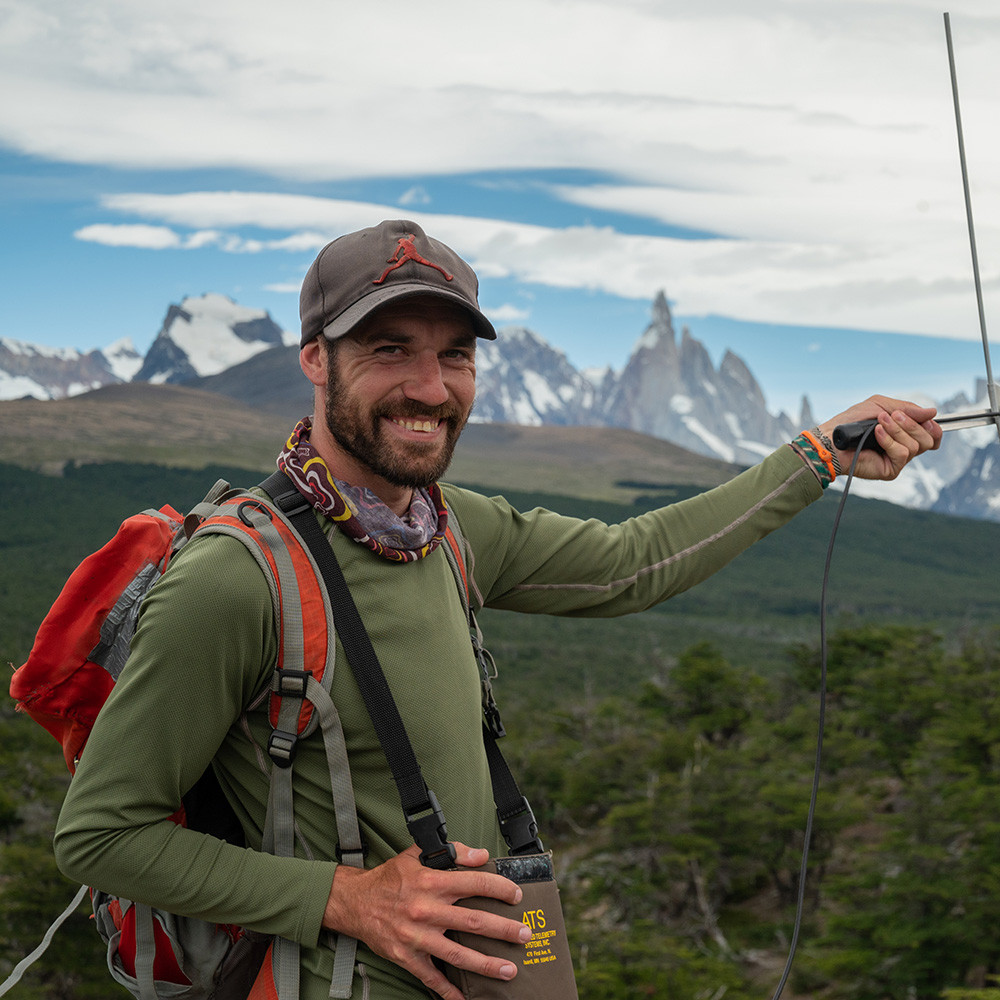
MATÍAS CHAMBÓN
Conservación – proyecto patagonia.
Nacido en la provincia de La Pampa, Matías fue voluntario en el Proyecto Patagonia en el año 2018. En 2021 se unió al equipo de conservación del proyecto, donde actualmente se desempeña como técnico de campo en el proyecto de conservación del puma.
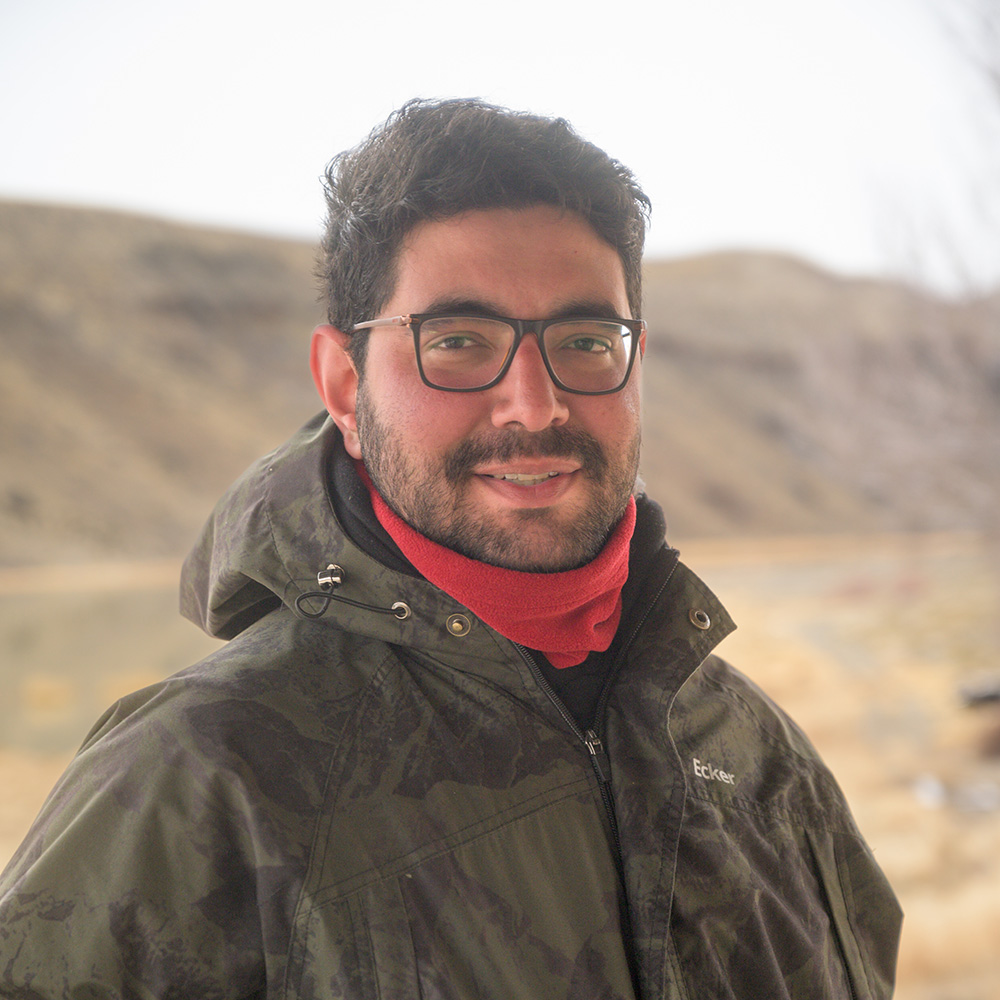
BRIAN MARCHESI
Nació en la provincia de Mendoza y se formó como Técnico en Conservación de la Naturaleza. Fue voluntario en el Proyecto Patagonia durante dos meses, antes de comenzar a trabajar como técnico de campo en el proyecto de control de especies exóticas, monitoreo de zorros y choiques.
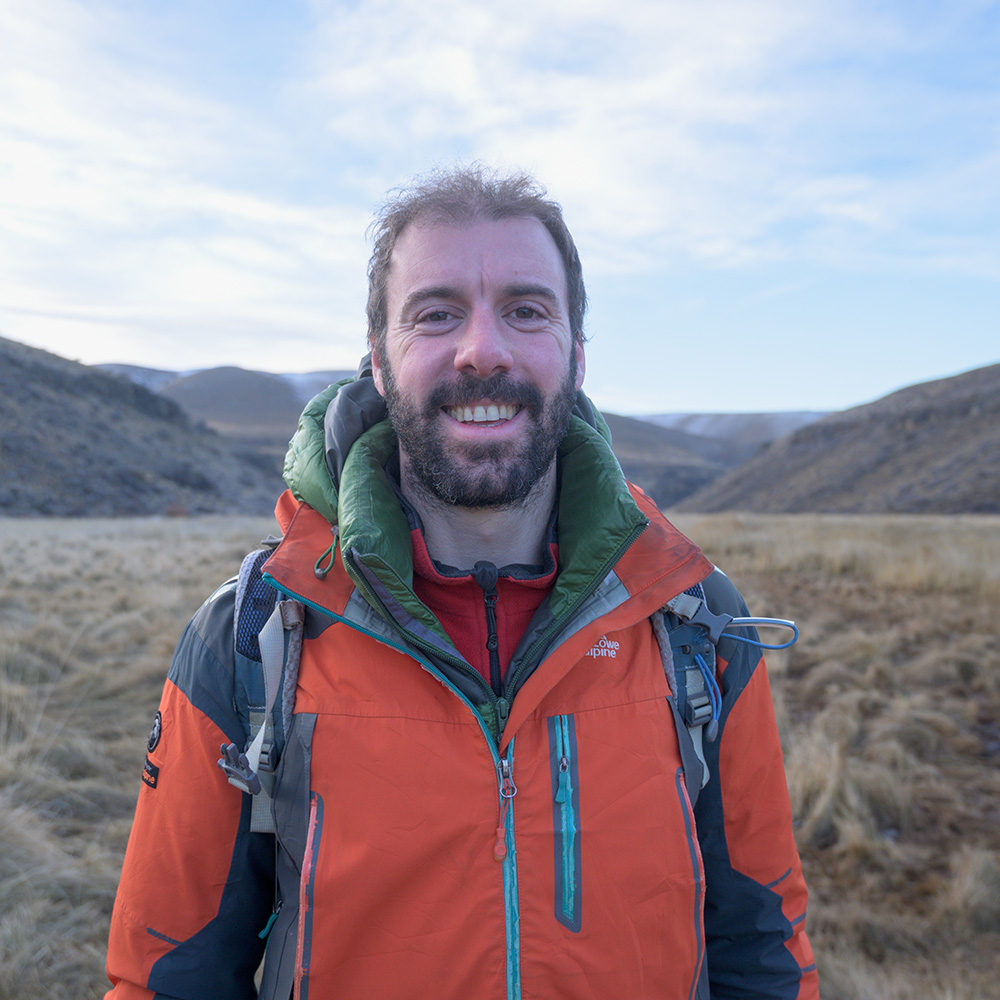
MARCOS TARAZAGA
Marcos nació en la provincia de San Luis y es ingeniero en recursos naturales. En 2021 se sumó al proyecto de conservación del huemul en El Chaltén. Actualmente trabaja en la Estación Biológica El Unco con tres especies: chinchillón anaranjado, coipo y gallineta austral.
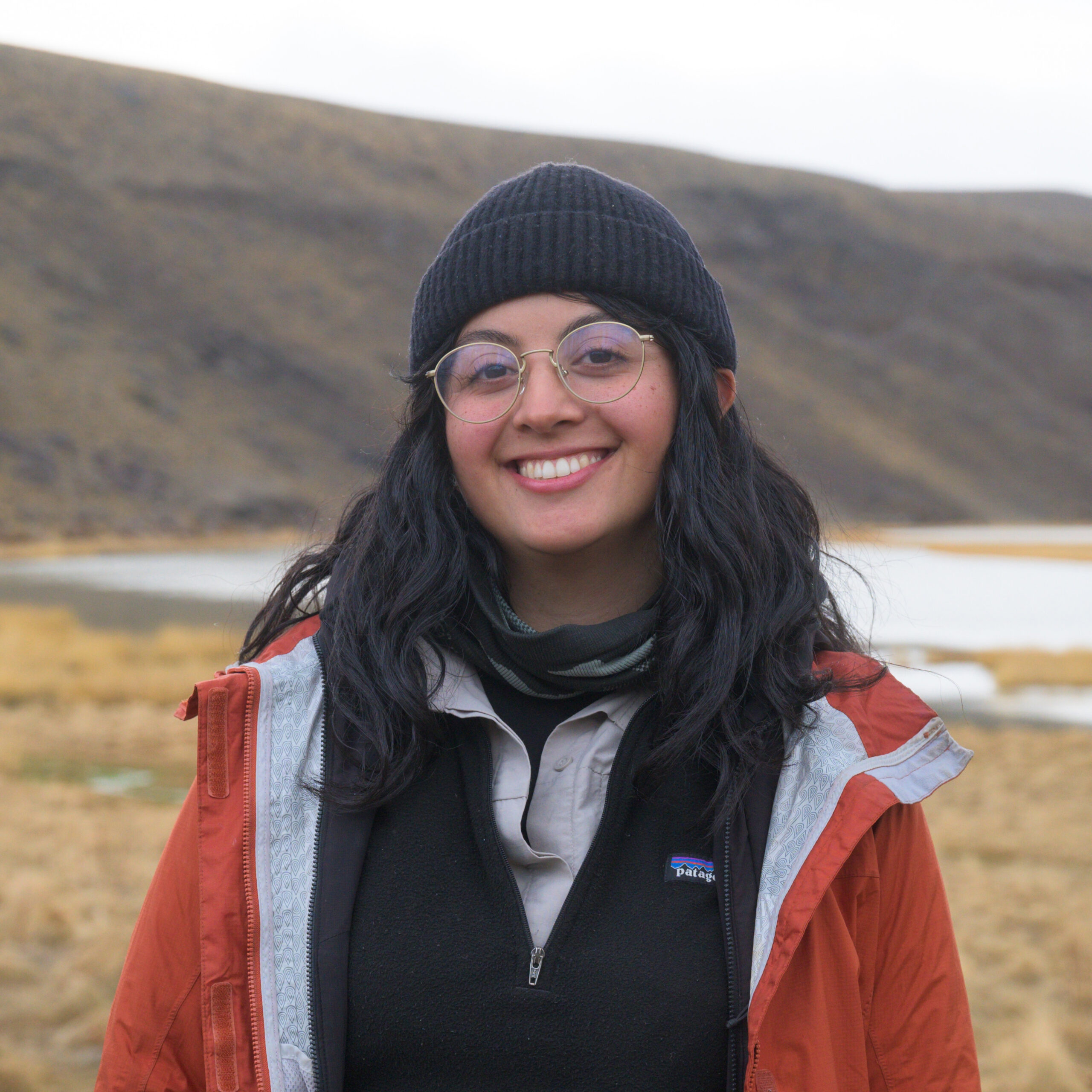
MARIANA AGUAS
Mariana es bióloga egresada de la Universidad Autónoma de Baja California en México. Fue voluntaria en el Proyecto Iberá en 2017 y, en 2022, en proyectos de reintroducción y monitoreo de fauna en los proyectos El Impenetrable y Patagonia. Actualmente trabaja analizando datos de los proyectos de restauración ecológica en Patagonia y Patagonia Azul.
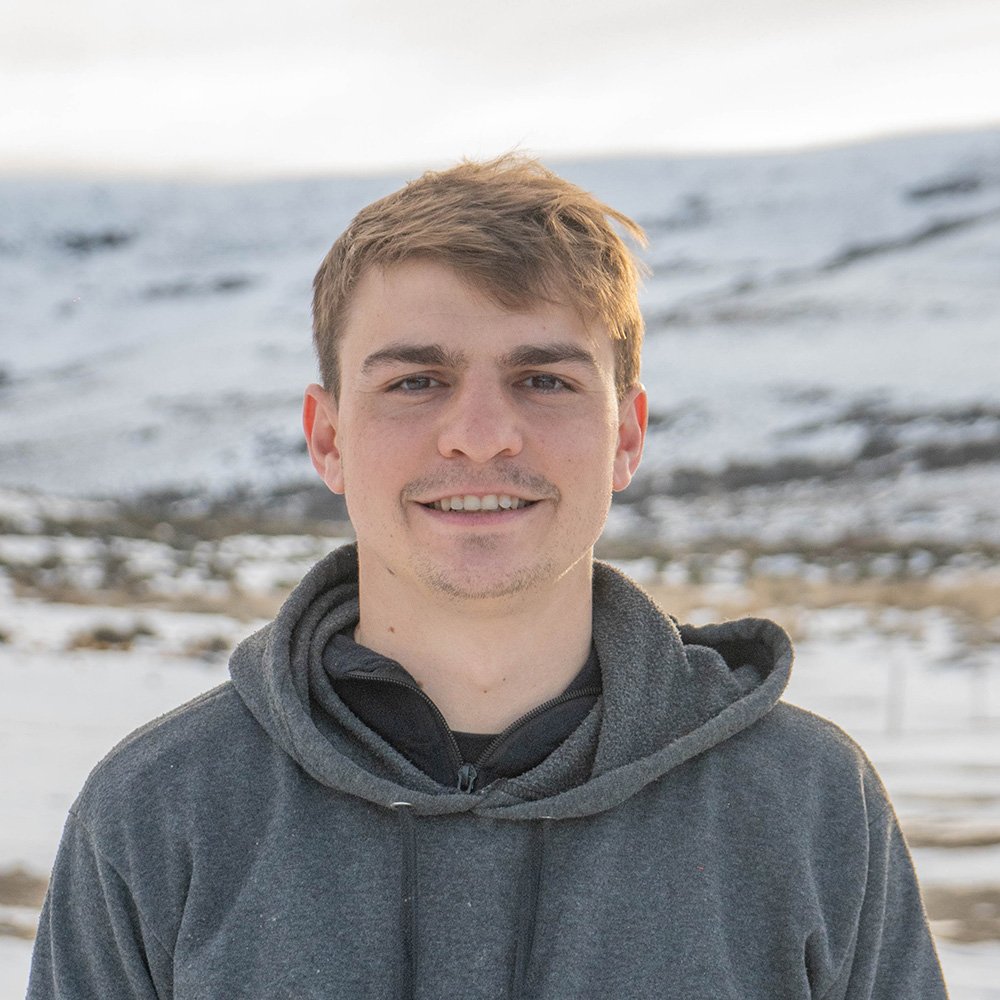
FERNANDO MASAT
Sendas e infraestructura – proyecto patagonia.
Fernando es oriundo de Guadalupe Norte, provincia de Santa Fe. Mientras cursaba la carrera de Ingeniería Eléctrica aprovechaba su tiempo libre para hacer trabajo voluntario en diversos proyectos de Iberá. Desde el año 2022 forma parte del equipo de sendas del Parque Patagonia.
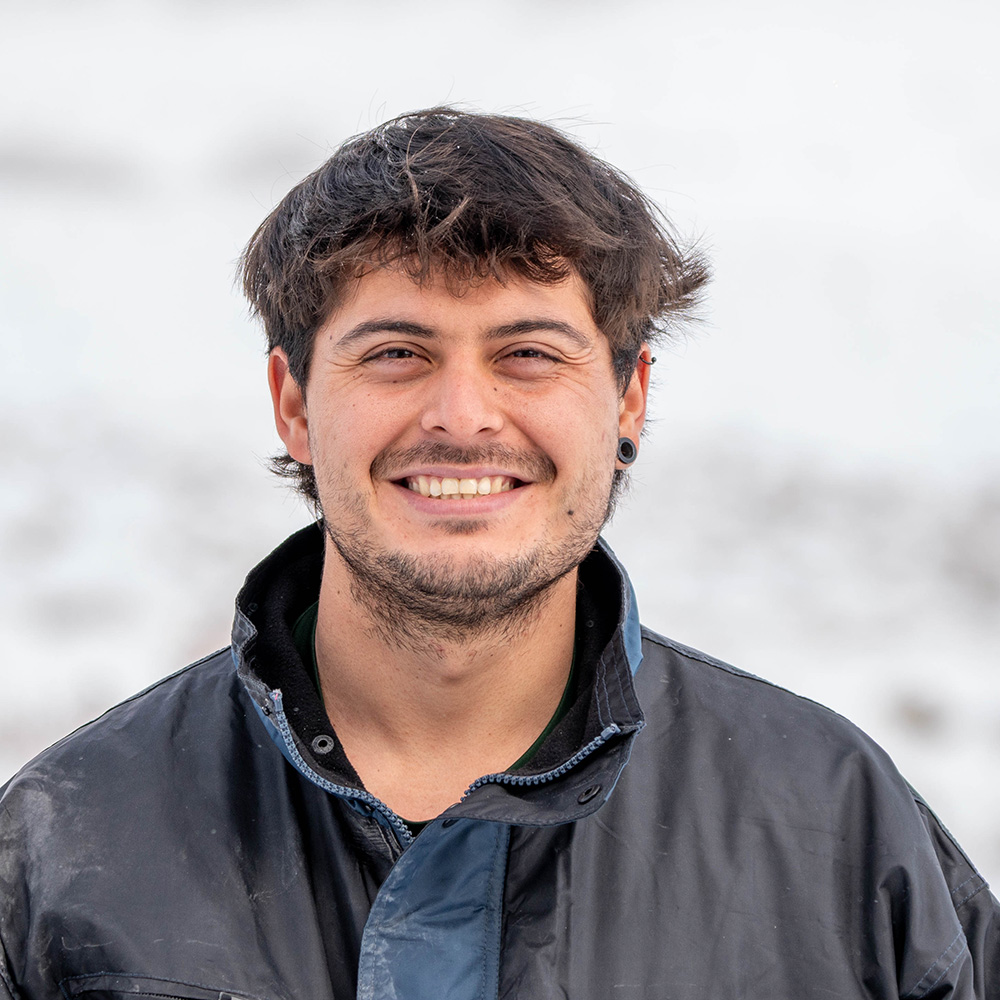
MATÍAS VENICA
Matías se crió en Guadalupe Norte, Santa Fe. En 2020 fue voluntario en el Proyecto de Reintroducción del Guacamayo Rojo en el Parque Iberá. Tiempo después, se sumó definitivamente al equipo de Rewilding Argentina, donde contribuyó con su alegría y entusiasmo característicos a diversos proyectos. Actualmente forma parte del equipo de sendas del Parque Patagonia.
GEORGINA KORODI BALMACEDA
Uso público – proyecto patagonia.
Georgi nació en Buenos Aires. En el año 2022 se sumó al equipo de uso público y hostería La Posta de Los Toldos del Parque Patagonia, donde el trabajo en contacto con la naturaleza le enseñó a disfrutarla y apreciar la importancia de cuidarla.
JULIANA GARCÍA
Juli es oriunda de Córdoba. Se formó como Guía de Turismo y Trekking; participó del primer programa de voluntariado del Parque Patagonia y en el año 2017 comenzó a trabajar con voluntarios en tareas de restauración del ecosistema. Realizó relevamientos en distintos proyectos de Rewilding Argentina antes de unirse al equipo de Uso Público del Parque Patagonia en el año 2023.
Park & Communities Coordinator – Patagonia Project
A native of Perito Moreno in Santa Cruz, Rocío, is an activist committed to the land and the communities. Her training in the arts and her experience in cultural spaces and environmental movements led her to join Rewilding Argentina in 2018, initially to manage the project’s communication. She currently directs institutional relations with local communities, forging alliances for environmental preservation.
Park and Communities Communication – Patagonia Project
Born in Buenos Aires, Horacio has been a photographer and filmmaker for sustainability, social affairs, and nature conservation projects since 2016. Since 2021, he has collaborated with generating content to communicate the Park, Tourism, and Communities programs of Patagonia Park, Argentina.
Conservation Coordinator – Patagonia Project
Emanuel is a park ranger who graduated from the National University of Misiones. In 2012, he volunteered at Rewilding Argentina’s giant anteater reintroduction project in Ibera. The following year, Emanuel became a field assistant in that same project. In 2014, he started coordinating the reintroduction projects for anteaters, pampas deer, collared peccaries, and tapirs in Rincón del Socorro. In 2018, he moved to the province of Santa Cruz to manage Patagonia Park Argentina’s ecological restoration program.
Wildlife Projects Communication – Patagonia Project
“Turco” comes from a family of pioneers in the northwestern region of Santa Cruz. He joined Rewilding Argentina in 2018 to collect audiovisual material and create content to communicate the projects of the Patagonia Park ecological restoration program.
Operations Assistant at El Unco Biological Station – Patagonia Project
Felipe joined Rewilding Argentina in 2021 when he worked at the El Impenetrable project in the province of Chaco. In 2023, he moved to the steppe of Patagonia Park in Santa Cruz to assist in logistics and maintenance tasks at El Unco Biological Station.
Operations Manager at El Unco Biological Station – Patagonia Project
Hernán volunteered in several Iberá projects in Corrientes before moving to Chaco and becoming Portal Los Palmares’ operations manager in the El Impenetrable project. In 2023, he moved to Santa Cruz to coordinate the operations of Patagonia Park’s El Unco Biological Station.
Conservation – Patagonia Project
Matías was born in the province of La Pampa. He was a volunteer at the Patagonia Project in 2018. In 2021 he joined the project´s conservation team, where he currently works as a field technician in the puma conservation project.
Brian was born in the province of Mendoza and trained as a Nature Conservation Technician. Prior to working as a field technician, he volunteered for two months at the Patagonia Project. Currently, he is involved in the exotic species control project, where he monitors foxes and lesser rheas.
Marcos was born in the province of San Luis and he is a natural resources engineer. In 2021 he joined the huemul conservation project in El Chaltén. He currently works at the El Unco Field Station with three species: Wolffsohn’s viscacha, coypu and austral rail.
Mariana is a biologist who graduated from the University of Baja California in Mexico. She volunteered for the Iberá project in 2017 and contributed to fauna reintroduction and monitoring projects in El Impenetrable and Patagonia in 2022. Currently, she analizes data from ecological restoration initiatives in Patagonia and Patagonia Azul.
Trails & Infrastructure – Patagonia Project
Fernando is a native of Guadalupe Norte, Santa Fe province. While studying Electrical Engineering, he used his free time to volunteer in various Iberá projects. Since 2022, he has been part of the Patagonia Park trail team.
Matías grew up in Guadalupe Norte, Santa Fe. In 2020, he volunteered at the Red-and-Green Macaw Reintroduction Project in Iberá Park. Later, he joined the Rewilding Argentina team, where he contributed with his characteristic joy and enthusiasm to various projects. He is currently part of Patagonia Park’s trail team.
Public Use Infrastructure – Patagonia Project
Georgi was born in Buenos Aires. In 2022, she joined the public use and lodge team in Parque Patagonia, Argentina, where working in contact with nature taught her to enjoy and appreciate the importance of caring for it.
Juli is originally from Córdoba. She trained as a Tourism and Trekking Guide, participated in the first Patagonia Park volunteer program, and in 2017, she began working with volunteers on ecosystem restoration tasks. Before joining the Patagonia Park Public Use team in 2023, she conducted surveys in different Rewilding Argentina projects.
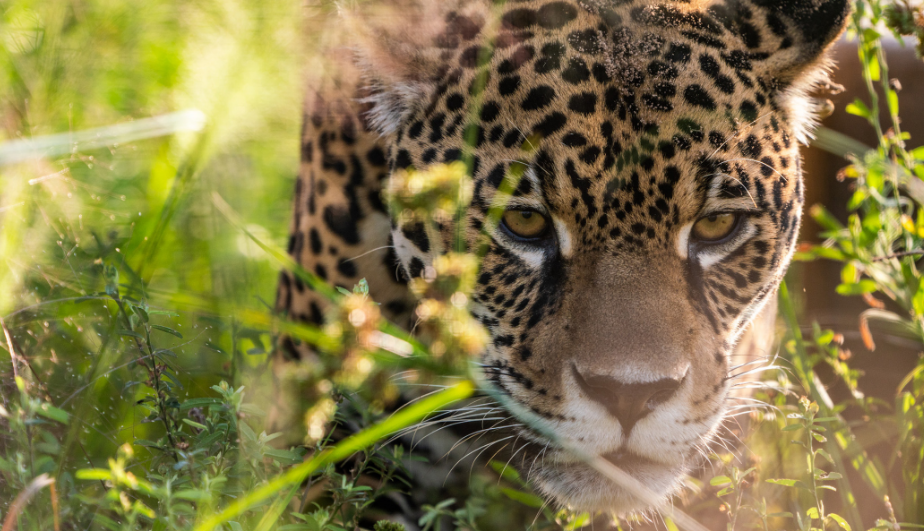
El yaguareté ( Panthera onca ) es el mayor felino de América y uno de los mamíferos más amenazados de Argentina, con una población estimada en 200 a 250 individuos en 2018. La especie se extinguió de la provincia de Corrientes a mediados del siglo XX debido a la cacería, la modificación del ambiente y la pérdida de sus presas naturales.
El yaguareté es una especie esencial para mantener la salud y la integridad de los ecosistemas silvestres, además de tener el potencial de convertirse en un atractivo de primer orden para los turistas que visitan Argentina en busca de su fauna silvestre y paisajes naturales.
El Parque Iberá reúne las mejores condiciones para llevar a cabo un proyecto de reintroducción de esta especie en el país porque cuenta con abundantes presas en un hábitat apto y la sociedad correntina apoya el retorno de este felino emblemático a la provincia.
El yaguareté fue declarado Monumento Natural en las provincias de Salta, Jujuy, Misiones y Chaco, y en Argentina en 2001.
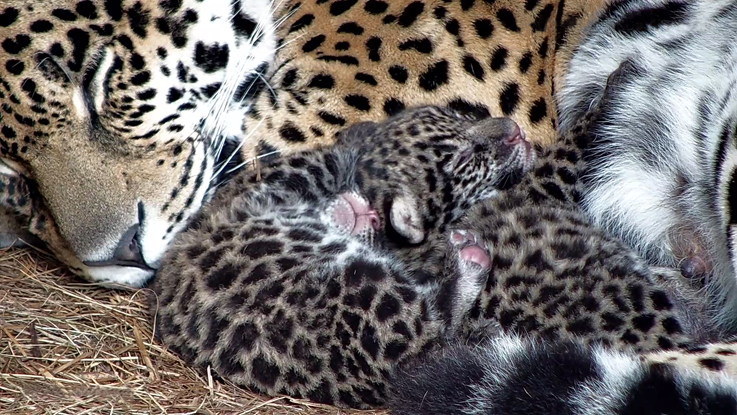
Línea de tiempo del proyecto
- En 2012 comenzó a funcionar el Centro de Reintroducción de Yaguareté (CRY) en la isla San Alonso, en el corazón de los Esteros del Iberá. Su objetivo es generar yaguaretés —nacidos allí o provenientes de otros orígenes silvestres— con las aptitudes necesarias para ser liberados y formar una población saludable de la especie que ayude a recuperar su rol como predador tope en este ecosistema.
- En el año 2015 llegó la primera hembra reproductora, Tobuna, seguida del primer macho, Nahuel, en 2016. Durante 2017, un macho y dos hembras —Chiqui, Tania e Isis— fueron donados y cedidos al proyecto por diferentes instituciones de Argentina, Paraguay y Brasil.
- En junio de 2018 , de la cruza de Chiqui y Tania nacieron Arami y Mbarete, los dos primeros yaguaretés nacidos en el CRY y en Corrientes luego de más de medio siglo de ausencia en la provincia.
- En enero de 2019 , Chiqui, el padre de los cachorros, regresó al Refugio Faunístico Atinguy (Yacyretá) en Paraguay tras cumplirse su etapa como reproductor.
- En febrero de 2019 arribaron al CRY Juruna y Mariua, dos hembras brasileñas nacidas en vida silvestre a principios de 2017. Luego de ser rescatadas tras la muerte de su madre en manos de cazadores, permanecieron en el Criadouro NEX No Extinction, cercano a Brasilia, con un mínimo contacto con humanos, hasta que fueron donadas al proyecto de reintroducción del yaguareté en Iberá.
- Hacia finales de 2019 llegó al CRY Jatobazinho, un macho proveniente de Corumbá, Brasil, donde fue rescatado casi sin vida por las autoridades locales. Tras su rehabilitación en el Centro de Rehabilitación de Animales Silvestres y luego en el Refugio Caiman, operado por la organización Onçafari, Jatobazinho emprendió su viaje hacia Corrientes y se unió al Proyecto Iberá.
- En 2020 , tras convivir en el mismo recinto con Jatobazinho, Mariua fue trasladada a un gran corral de 30 hectáreas en el que dio a luz a dos cachorros en septiembre de ese año. A través de las redes sociales, la gente los bautizó como Karai y Porã.
- A principios de enero de 2021 se abrió el recinto para permitir que esta familia de yaguaretés, conformada por dos cachorros y su madre, pudiera salir, transformándose en los primeros yaguaretés en vivir totalmente libres en Corrientes tras más de 70 años de ausencia de la especie en la provincia. El anuncio de la liberación lo realizó el Ministro de Ambiente y Desarrollo Sostenible de Argentina y fue destacado por el Gobernador de Corrientes. Desde ese momento, la familia se desplaza a sus anchas en el humedal correntino, donde su especie alguna vez reinó y donde, si todo marcha bien, volverá a dominar el paisaje. Gracias a un collar con tecnología GPS y conexión satelital que se le colocó a Mariua, se ha podido conocer sus desplazamientos desde su liberación. Dicho collar recoge datos de su ubicación varias veces al día y los envía a una computadora que los analiza y permite conocer sus patrones de movimiento. El collar también emite una señal de radio de frecuencia VHF, la cual mediante una antena desde tierra o aire permite conocer en forma muy precisa y en tiempo real dónde se encuentra.
- En diciembre de 2020 nacieron los cachorros de Juruna, bautizados Sagua’a y Sãso. Estos tres yaguaretés fueron liberados en abril de 2021 y desde entonces han ido explorando el nuevo territorio moviéndose pocos kilómetros al norte del sitio de liberación.
- En septiembre de 2021 las puertas del corral de 30 hectáreas del CRY se abrieron nuevamente para dar paso a la libertad a Arami, una de las dos primeras yaguaretés nacidas en el CRY.
- En diciembre de 2021 siguió la liberación de Jatobazinho, el yaguareté de origen silvestre proveniente de Brasil que se convirtió en el primer macho de esta especie en vivir libre en los Esteros de Iberá 70 años después de su completa extinción en Corrientes.
- En abril de 2022 , se incorporó como ejemplar reproductor a Malú, una hembra uruguaya de cautiverio proveniente de la Estación de Cría de Fauna Autóctona “Uruguay Tabaré González Sierra”. Con la llegada de esta hembra, Uruguay se sumó a Brasil y Paraguay en este proyecto.
- En septiembre de 2022 se sumaron tres yaguaretés al plantel de ejemplares liberables del CRY: una hembra, Keraná, y dos machos, Colí y Ñaró. Estos tres juveniles, donados por el Establecimiento Faro Moro en Paraguay, son huérfanos rescatados de vida silvestre, rehabilitados y donados al Proyecto. Su llegada fue posible gracias al trabajo conjunto con numerosas instituciones de Paraguay que se han involucrado fuertemente en el Proyecto; entre ellas el Ministerio de Medio Ambiente y Desarrollo (MADES) y el Servicio Nacional de Sanidad Animal (Senacsa). La cooperación entre países latinoamericanos resulta clave para conservar a esta y otras especies. Además, la incorporación de más ejemplares provenientes de diferentes países aumentará la variabilidad genética de esta población.
- A mediados de mayo de 2022 Arami dio a luz a los dos primeros cachorros concebidos y nacidos en libertad, bautizados por la gente como Jasy y Arandú.
- A finales de mayo de 2022 Mariua fue madre de dos nuevos cachorros. Esta vez sus cachorros nacieron en libertad, siendo la segunda camada concebidos y nacidos en libertad. En esta historia, la participación de Ramón Correa y Nicasio Cardozo, vecinos del norte de la isla San Alonso, ha sido clave. El territorio que eligió Mariua como lugar de nacimiento de sus cachorros se encuentra en las cercanías de sus terrenos y es un sitio casi inaccesible, por lo que estos vecinos colaboraron para llegar al lugar para colocar cámaras trampa. Gracias a su colaboración, Correa y Cardozo se han convertido en los protectores de estos nuevos yaguaretés, y los bautizaron Mombyry e Yvoty.
- A principios de noviembre de 2022 , se registró a Karai con un cachorro—había tenido dos pero uno fue depredador por un grupo de pecaríes— luego de haberla observado meses antes, mediante cámaras trampas, junto al macho Jatobazinho.
- Los cachorros que fueron liberados con pocos meses de vida junto a sus madres crecieron y se desarrollaron en total libertad, se independizaron de sus madres y pudieron obtener alimento por sus propios medios. Además, el evento confirmado de reproducción por parte de una de las hembras de esta generación, Karai, marca otro hito en el éxito del proyecto de reintroducción de la especie.
- En noviembre de 2022 Mbarete, quien había sido translocada en marzo a El Impenetrable (Chaco) para cruzarla con Qaramta, un macho silvestre, dio a luz a dos cachorros en septiembre y fue trasladada de regreso a Iberá (Corrientes) con sus dos cachorros. El objetivo de este cruzamiento es aumentar la variabilidad genética de la incipiente población en Iberá. Considerando el estado crítico del yaguareté en Argentina, acciones de manejo activo de este tipo resultan clave para la conservación de poblaciones y de los acervos genéticos de individuos silvestres, como Qaramta. A finales de 2022, 13 yaguaretés caminan libres por el Gran Parque Iberá.

Iberá: una oportunidad única para recuperar al yaguareté
Con una extensión de 1,3 millones de hectáreas, la Reserva Natural Iberá representa una oportunidad única para recuperar a este grandioso animal. Después de tres décadas de trabajo en conservación, esta reserva alberga grandes poblaciones de carpinchos, yacarés y ciervos de los pantanos que van a necesitar del rol regulador de un gran predador para mantener su salud a largo plazo.
Un estudio de un investigador del CONICET muestra que dentro del Iberá existe una superficie cercana a las 650 mil hectáreas donde los yaguaretés podrían vivir con abundante comida y mínimo contacto con los humanos y su ganado. Hay pocos lugares en América que reúnan tanto territorio apto para esta especie.
Con apoyo de la comunidad correntina, hacia el retorno del yaguareté
Un estudio realizado por una investigadora correntina muestra que el 95% de los correntinos, independientemente de su origen geográfico, apoya el retorno de la especie al Iberá. Más allá de este estudio, en conversaciones sobre este tema hemos detectado un sorprendente nivel de entusiasmo hacia la idea de recuperar la especie por parte de habitantes locales, estancieros, autoridades locales, empresarios turísticos y legisladores. Parece claro que los correntinos consideran al yaguareté no sólo como una parte importante de su patrimonio natural y cultural, sino también como una fuente potencial de riqueza y empleo a través del turismo de naturaleza.
Una región con los recursos humanos y técnicos necesarios para llevar a cabo este proyecto
El gobierno correntino y diferentes ONGs llevan más de veinte años trabajando por la conservación del Iberá. En lo que se refiere a la reintroducción de fauna localmente extinta, Rewilding Argentina lleva numerosos años trabajando para devolver la presencia del oso hormiguero y el venado de las pampas al interior del Iberá. Esto implica un compromiso financiero y organizativo de larga duración que se da en pocos lugares de la Argentina. Además, este compromiso ha permitido que la zona cuente con un grupo de profesionales con experiencia práctica en este tipo de proyectos. Como resultado de estos esfuerzos, ya existen nuevas poblaciones de venado de las pampas, oso hormiguero y pecarí de collar en el Iberá. Adicionalmente, en lo que respecta al yaguareté, se cuenta con la asesoría y el apoyo de algunos de los mejores expertos procedentes de Argentina y de otros países.
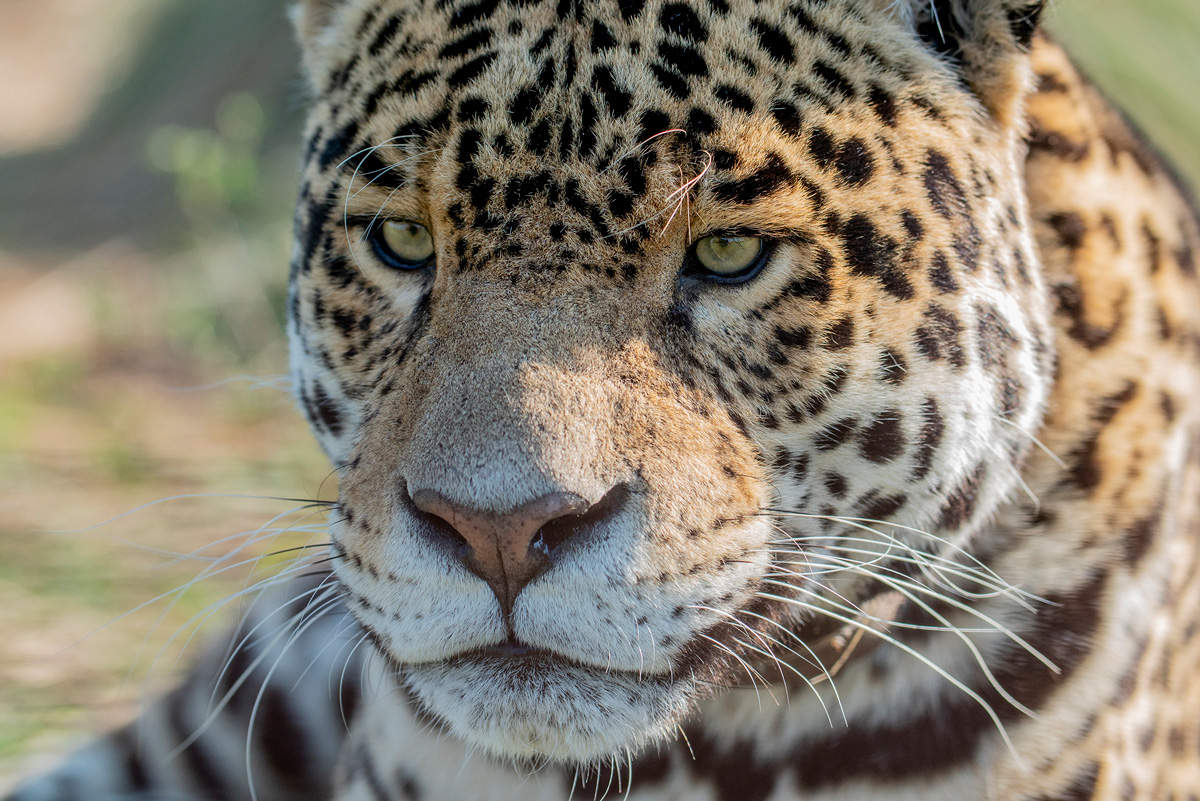
El retorno del yaguareté a Corrientes
El yaguareté, jaguar o tigre es el mayor felino de América. Históricamente se distribuía por todo el centro y norte argentino, habitando selvas, montes, pastizales y bañados hasta el río Negro en la Patagonia.
Durante los últimos siglos esta especie ha sufrido una dramática reducción de su distribución a unos pocos lugares del país. En Corrientes todavía se veían yaguaretés a mediados del siglo pasado, y en la región del Iberá aún viven personas que recuerdan cuando compartían el territorio con él.
En Argentina actualmente quedan solo tres poblaciones separadas de yaguareté en las ecorregiones de las Yungas, el Chaco y la Selva Paranaense. Todas estas poblaciones se enfrentan al grave peligro de desaparecer en las próximas décadas, lo que implicaría la total extinción de uno de los animales más bellos y emblemáticos de la Argentina.
Frente a esta situación, el Parque Iberá en Corrientes se destaca por reunir las que se estima que son las mejores condiciones en toda América para restaurar una población desaparecida de esta especie. Esto se debe a la existencia de 1.300.000 hectáreas de tierras protegidas que albergan extensas áreas despobladas de personas y ganado, y que además cuentan con abundantes animales silvestres que pueden sustentar una población de yaguaretés a largo plazo.
Los 5 sentidos del retorno del yaguareté
Sentido moral: La desaparición de una especie es una tremenda pérdida para cualquier sociedad, más aún cuando ésta es una de las más llamativas y emblemáticas. No existe una sola de las grandes religiones o de los grandes sistemas éticos mundiales que justifique la extinción de una especie por culpa de las actividades humanas.
Sentido cultural: El yaguareté forma parte esencial de la cultura del norte argentino. Su propio nombre tiene origen guaraní y el animal aparece como protagonista de innumerables leyendas, cuentos y canciones. En la provincia de Corrientes hay varias localidades que todavía usan el nombre yaguareté, como es el caso de Concepción de Yaguareté Corá en la región de Iberá. La desaparición de esta especie del acervo cultural correntino implica una pérdida enorme que empobrece nuestro idioma y nuestra apreciación de los paisajes silvestres y las costumbres de campo. Sin él desaparece buena parte de la magia de lo salvaje, junto con la humildad, el respeto y la reverencia con los que las personas se han aproximado tradicionalmente a la Naturaleza.
Sentido ecológico: El yaguareté es el mayor depredador natural de los ecosistemas correntinos, cuya salud depende de su presencia. Esto se explica porque al alimentarse de animales como carpinchos, ciervos o yacarés, y al eliminar habitualmente a los animales más débiles y enfermos, evita que sus poblaciones crezcan en exceso y sucumban a hambrunas o enfermedades catastróficas. Además de esto, los yaguaretés controlan las poblaciones de otros predadores de menor tamaño, como los zorros o los gatos de monte, lo que favorece la conservación de poblaciones de aves o pequeños animales silvestres y domésticos. Numerosos estudios internacionales han mostrado la importancia de los “predadores tope”, como es el caso del yaguareté, para mantener la máxima riqueza y diversidad de los ecosistemas naturales.
Sentido económico: Al ser uno de los animales más hermosos del continente y provocar reacciones de maravilla y misterio ante la gente, el yaguareté se convierte en un atractivo turístico de primer rango, comparable con la experiencia de ver las cataratas de Iguazú, o el glaciar Perito Moreno. En sitios donde hay una población importante de yaguareté, como es el caso del Pantanal brasileño, decenas de miles de turistas visitan el área anualmente con la esperanza de ver a este gran felino. Igualmente, en África y Asia los turistas invierten grandes sumas de dinero para poder ver animales similares como el león, el leopardo o el tigre. En Estados Unidos se reintrodujeron los lobos—otro gran carnívoro silvestre carismático—dentro del Parque Nacional de Yellowstone durante los años 90. Al principio se pensó que los visitantes apenas iban a ver los lobos, pero luego se comprobó que más de 100 mil personas lograban verlos cada año. Se estima que el incremento de visitación de turistas asociado a estos avistamientos implica ingresos añadidos anuales para la región de entre 32 y 85 millones de dólares norteamericanos.
Sentido legal y de política pública: El yaguareté es Monumento Natural Nacional y está oficialmente catalogado como especie en peligro de extinción para la Argentina. La convención de biodiversidad, firmada por la Argentina, urge a los estados signatarios a adoptar “medidas destinadas a la recuperación y rehabilitación de las especies amenazadas y a la reintroducción de éstas en sus hábitats naturales en condiciones apropiadas”. Dentro de este marco, el establecimiento de una población sustentable de yaguaretés en Iberá representaría un enorme aporte para la conservación de la especie en todo el país, y para asegurar la continuidad genética de las tres poblaciones que todavía quedan en Argentina.
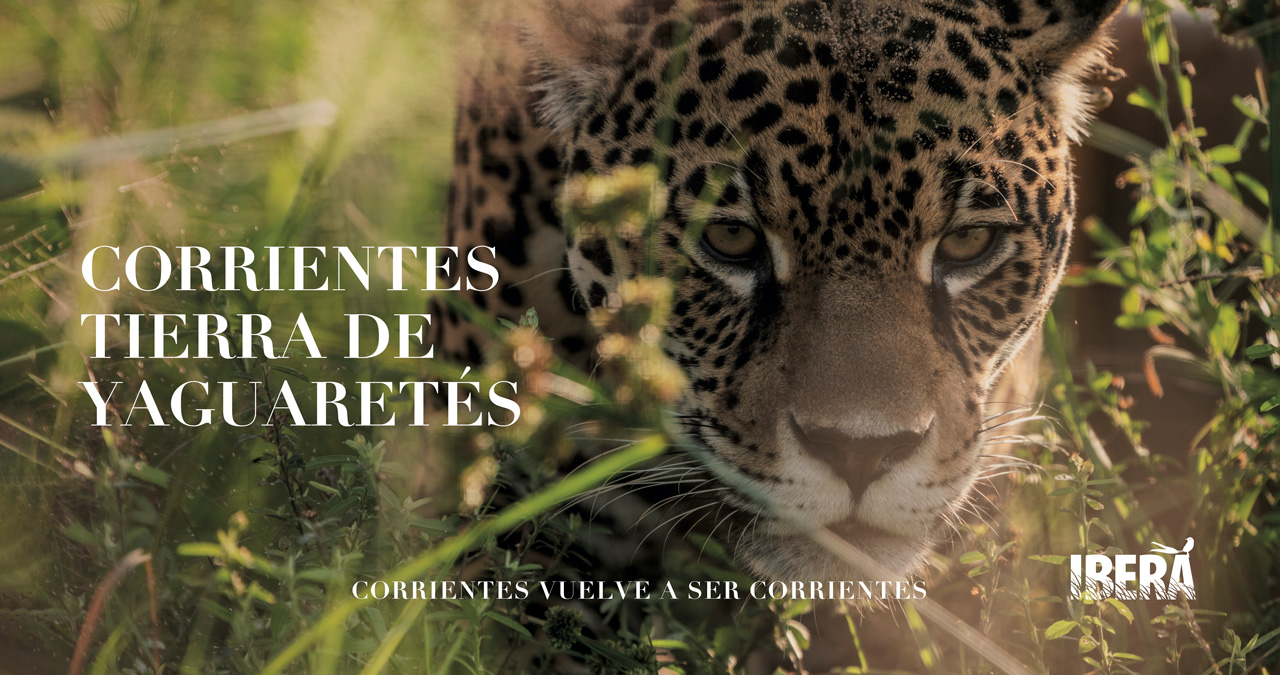
Corrientes, Tierra de Yaguaretés
En 2023, doce vecinos y vecinas del yaguareté compartieron historias sobre sus experiencias de encuentro con el gran felino, que reivindican el regreso del depredador tope a los esteros del Iberá y los beneficios que genera para el ecosistema y la cultura locales.
The jaguar ( Panthera onca ) is the largest feline in the Americas and one of the most threatened mammals in Argentina, with a population estimated at 200-250 individuals in 2018. The species became locally extinct in Correnties in the mid twentieth century due to hunting, alterations to the environment, and the lack of prey.
The jaguar is a key species to maintain the health and integrity of wild ecosystems in addition to its great potential as a first-class tourist attraction for wildlife-and-natural-landscape-seeking visitors to Argentina.
Iberá Park is the best place in the country to carry out a jaguar reintroduction project because there is plentiful prey and ideal habitat. In addition, the people of Corrientes are in favor of the return of this emblematic feline to the province.
The jaguar was declared a natural monument in the provinces of Salta, Jujuy, Misiones, and Chaco, and in Argentina in 2001.
Project Timeline
- In 2012 The Jaguar Reintroduction Center (CRY for its initials in Spanish) opened on San Alonso Island in the heart of the Iberá Wetlands. Its goal is to produce jaguars—either born there or other wild-caught jaguars—with the skills necessary to be released, and form a healthy jaguar population to help to recover its role as this ecosystem’s apex predator.
- In 2015 , Tobuna, the first breeding female arrived, followed by the first male, Nahuel, in 2016. In 2017 one additional male and two additional females—Chiqui, Tania, and Isis—were donated to the project by different institutions in Argentina, Paraguay, and Brazil.
- In June of 2018 , Chiqui and Tania mated, leading to the births of Arami and Mbarete, the first two jaguars born at CRY and in Corrientes after more than half a century.
- In January, 2019 , Chiqui, the cubs’ father was returned to the Refugio Faunístico Atinguy (Yacyretá) in Paraguay after mating.
- In February of 2019 , Juruna and Mariua, two wild-born females born in 2017 arrived to CRY from Brazil. They had been rescued after their mother was killed by a hunter, and raised in the NEX No Extinction Nursery, near Brasilia, with minimal human contact until they were donated to Iberá’s Jaguar Reintroduction Project.
- Towards the end of 2019 , Jatobazinho, a male jaguar, joined the project. Local authorities of Corumbá, in Brazil, had found Jatobazinho almost dead near the Paraguay River. He was rehabilitated at the Wild Animals Rescue Center (CRAS) and then at Refugio Caiman, run by Onçafari, before travelling to Corrientes to join our Jaguar Reintroduction Project in Iberá Park.
- In 2020 , after living in the same enclosure as Jatobazinho, Mariua was relocated to a large, thirty-hectare corral where she gave birth to two cubs in September of the same year. Followers on social media named them Karai and Porã.
- In early 2021 we opened the gates, so this family of two cubs and their mother could leave, thereby becoming the first jaguars to live freely in Corrientes after more than seventy years of the species’ absence in the province. The Argentine Minister of Environment and Sustainable Development announced their release and the governor of Corrientes also publicized it. Since release, the family roams the Corrientes wetlands, where their species once reigned, and where, if all goes well, they will once again rule the landscape. Thanks to Mariua’s GPS collar, we have been able to see her post-release movements. The collar collects information about her whereabouts several times a day and sends it to a computer for analysis that allows us to understand her movement patterns. Her collar also emits a VHF signal that allows us to locate her in real time.
- In December of 2020, Juruna had two cubs, named Sagua’a and Sãso. These three jaguars were released in April, 2021 and since then they have been exploring the territory a few kilometers to the north of their release site.
- In September 2021 the gates of the thirty-hectare CRY corral were opened once again to release Arami, one of the first two jaguars born at CRY.
- In December 2021 , we continued, with the release of Jatobazinho, the wild jaguar from Brazil, who became the first male of the species to live freely in the Iberá Wetlands seventy years after they disappeared completely in Corrientes.
- In April of 2022 , Malú, a captive-breeding female from Uruguay from the Native Wildlife Breeding Station, Uruguay Tabaré González Sierra. With her arrival, Uruguay joined Brazil and Paraguay in the reintroduction project.
- In September 2022 , three new jaguars were added to the CRY’s roster of releasable individuals, a female, Keraná, and two males, Colí and Ñaró. The Faro Moro Establishment in Paraguay donated and rehabilitated these wild-rescued orphans. Their arrival was possible thanks to the collaboration of many Paraguayan institutions including the Environment and Development Ministry (MADES for its name in Spanish) and the National Animal Health Service (Senacsa). Cooperation among Latin American nations is key for the conservation of this and other species. In addition, incorporating individuals from different countries will add to the genetic variability of the population.
- In mid-May 2022 , Arami gave birth to the first two wild–conceived-and-born cubs, who we named Jasy y Arandú.
- At the end of May, 2022 Mariua became a mother to two new cubs. This time her cubs were born wild, making them the second litter of wild-conceived-and-born jaguars. We are able to tell this story in large part due to the involvement of Ramón Correa and Nicasio Cardozo, neighbors from the north of San Alonso Island. They helped access the area and install camera traps where Mariua chose to give birth, a practically inaccessible place close to these two men’s properties. Thanks to their collaboration, Correa and Cardozo are the stewards of these new jaguars, and they have chosen to call them Mombyry and Yvoty.
- At the beginning of November, 2022 , we saw via camera traps Karai with one cub after having been seen months earlier in the company Jatobazinho. She had originally had two cubs, but one fell prey to a group of peccaries.
- The cubs that were released together with their mothers a few months after birth grew and developed in complete freedom, became independent and were able to hunt on their own. In addition, confirming that Karai—one of the females of this generation—had bred marks another milestone for the species’ reintroduction project.
- In November 2022 , Mbarete, who had been translocated to El Impenetrable (Chaco) in March to breed with Qaramta—a wild male—gave birth to two cubs in September and was returned to Iberá (Corrientes) with them. The goal of this breeding event was to increase the genetic variability of Iberá’s incipient jaguar population. Considering the critical state of jaguars in Argentina, this type of active management is essential for the conservation of these populations and gene pools of wild individuals, such as Qaramta.
- At the end of 2022, thirteen jaguars roamed freely in Iberá Park.
Iberá: a unique opportunity to recover the jaguar
With an area of 1.3 million hectares, the Iberá Natural Reserve presents an unparalleled opportunity to recover this great feline. After three decades of conservation work, this reserve is home to populations of capybaras, caimans, and marsh deer that are going to require the regulatory role of a large predator to maintain healthy populations in the long term.
A study by a CONICET researcher shows that Iberá has a patch of almost 650,000 hectares where jaguars could live with plentiful food and minimal human and livestock contact. There are few places in the Americas with so much jaguar-suitable territory.
With Corrientes’ community support, towards the return of the jaguar
A study conducted by a researcher from Corrientes shows that 95% of residents, regardless of their origin, are in favor of the jaguar’s return. Beyond this study, in day-to-day conversations on the topic we find a surprising level of enthusiasm for recovering the species among local residents, ranchers, local authorities, tourism entrepreneurs, and legislators. It appears that people from Corrientes consider the jaguar not just an important part of their natural and cultural heritage, but also a potential source of income and employment through nature-based tourism.
A region with the necessary human and technical resources to carry out this project
The government of Corrientes and different NGOs have been working on conservation in Iberá for more than twenty years. In terms of locally extinct wildlife, Rewilding Argentina has been working for many years to reintroduce the giant anteater and the pampas deer to Iberá. This involves a long-term financial and organizational commitment seen in few places in the country, which has allowed this area to rely on a group of professionals with practical experience. As a result, there are now new populations of pampas deer, giant anteaters, and collared peccaries in Iberá. Additionally, in the case of the jaguar, we have the advice and support of some of the best experts from Argentina and beyond.
What the return of the jaguar means to Corrientes
The jaguar is the largest feline in the Americas. It was historically distributed all over central and northern Argentina, living in jungles, forests, grasslands, and marshes to the Negro River line in Patagonia.
Over the last centuries, this species has suffered a dramatic distribution reduction, to just a few locations in the country. In Corrientes jaguars were still spotted until the middle of the last century, and in Iberá there are still people who remember sharing territory with jaguars.
Currently in Argentina only three isolated jaguar populations remain in the ecoregions of the Yungas, the Chaco, and the Paraná Jungle. All of these populations are in grave danger of disappearing in the next decades, which would cause the extinction of one of Argentina’s most beautiful and emblematic animals.
In light of this situation Iberá Park in Corrientes is notable for having probably the best conditions in the Americas for restoring a jaguar population. These conditions include that it is a vast, protected, nearly uninhabited area of 1.3 million hectares with no livestock, and abundant wildlife that can sustain a population of jaguars in the long term.
The five-part significance of the jaguar’s return
Moral significance: The disappearance of a species is a tremendous loss for any society, and even more so when the species in question is one of the most striking and emblematic. Not a single one of the world’s great religions or ethical systems justifies the extinction of a species due to human activities.
Cultural significance: The jaguar forms an essential part of the culture of northern Argentina, where it is the main character of many local legends, stories, and songs. The name yaguareté , which gives us the word “jaguar,” comes from Guaraní (the indigenous language of this area). Several towns of Corrientes incorporate the jaguar in their names, as in the case of Concepción de Yaguareté Corá in the Iberá region. The disappearance of this species from the cultural heritage of Corrientes represents a tremendous loss that weakens our language, our appreciation of wild landscapes, and the customs of this land. Without the jaguar, we lose much of the magic of the wild, along with the humility, the respect, and the reverence with which locals have traditionally approached nature.
Ecological significance: The jaguar is the largest natural predator of the ecosystems in Corrientes, the health of which depends on its presence. By feeding upon animals such as capybaras, deer, or caimans, and upon habitually culling the sickest and weakest of their species, it prevents overpopulation, which would lead to famines and catastrophic illnesses. In addition, jaguars control the populations of smaller predators like foxes and mountain lions, which helps protect birds, small wildlife, and domestic animals. Many international studies have shown the importance of apex predators such as the jaguar to maintain richness and diversity of natural ecosystems.
Economic significance: As one of the most beautiful animals on the continent, which causes awe and wonder, the jaguar becomes a first-rate tourism attraction, comparable with seeing the Iguazú Waterfalls or the Perito Moreno Glacier. In places where there is a significant jaguar population, as is the case in the Brazilian Pantanal, tens of thousands of tourists visit the area annually in hopes of catching a glimpse of this great feline. In Africa and Asia tourists invest large sums of money to see similar animals like the lion, leopard, and tiger. In the United States, wolves—another charismatic wild carnivore—were reintroduced in Yellowstone National Park in the 1990s. At the beginning it was assumed that visitors would barely see them, but it was later found that more than one hundred thousand visitors spot them yearly. It is estimated that the increase in tourism associated with these sightings leads to an annual revenue increase of from thirty-two to eighty-five million dollars for the region.
Legal and public policy significance. Jaguars are a National Natural Monument and are listed as an endangered species in Argentina. The biodiversity convention, which Argentina has signed, urges signatories to adopt “approaches aimed at the recovery and rehabilitation of endangered species and the reintroduction of the same in their natural habitats in appropriate conditions.” Within this framework, establishing a sustainable jaguar population in Iberá would represent an enormous contribution to the conservation of the species throughout the country, and also to ensure the genetic continuity of the three remaining populations in Argentina.
Corrientes, Land of the Jaguar
In 2023, twelve neighbors of the jaguar shared stories about their encounters with the fabulous feline. These stories reclaim the return of the Iberá Wetlands’ top predator and the benefits it generates for the local ecosystem and culture.
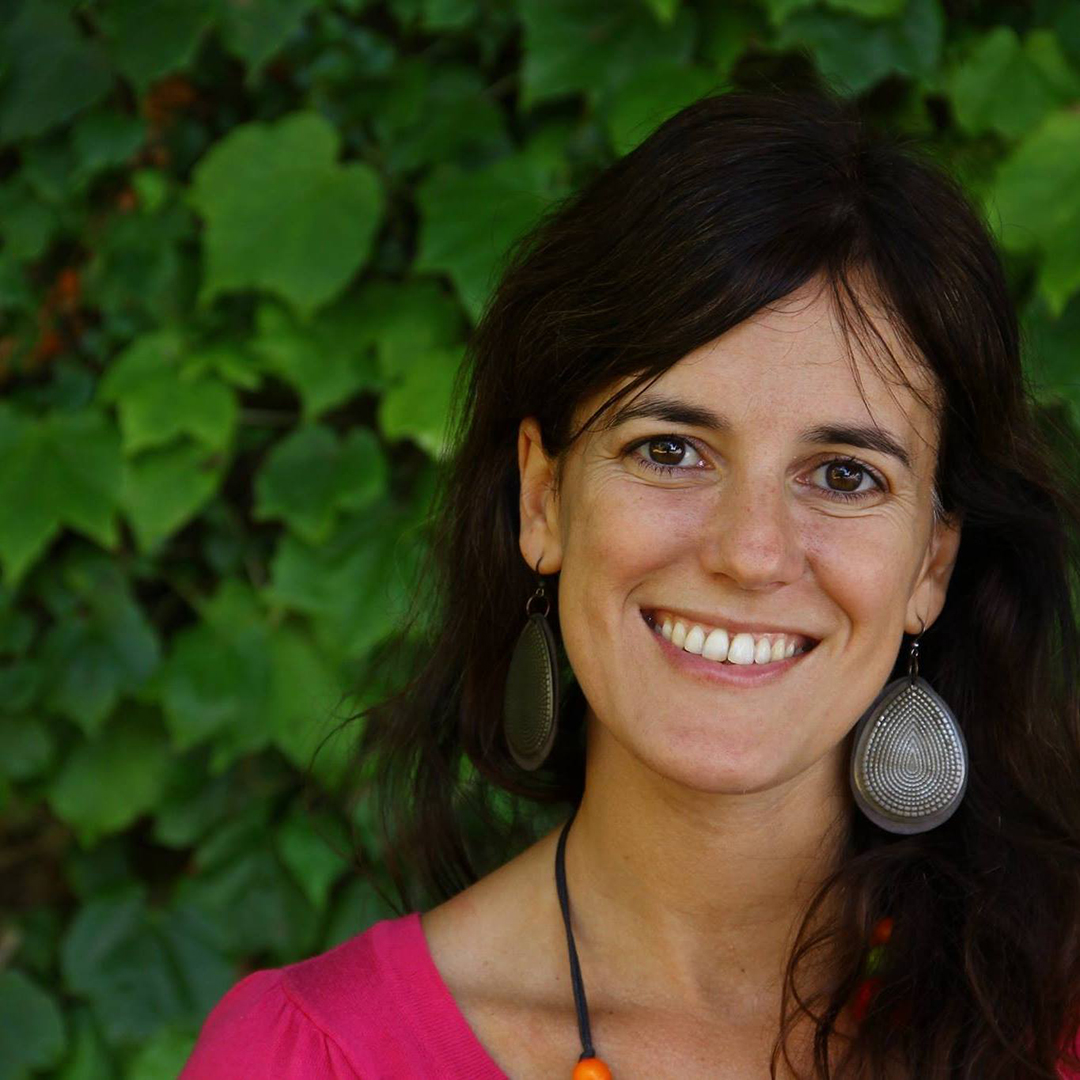
Teresita Iturralde
Legal affairs.
Teresita joined Fundación Rewilding Argentina in 2014. Since then, she has coordinated the foundation’s legal affairs, assessed its activities’ regulations, coordinated agreements, land-related topics, and oversaw judicial affairs.
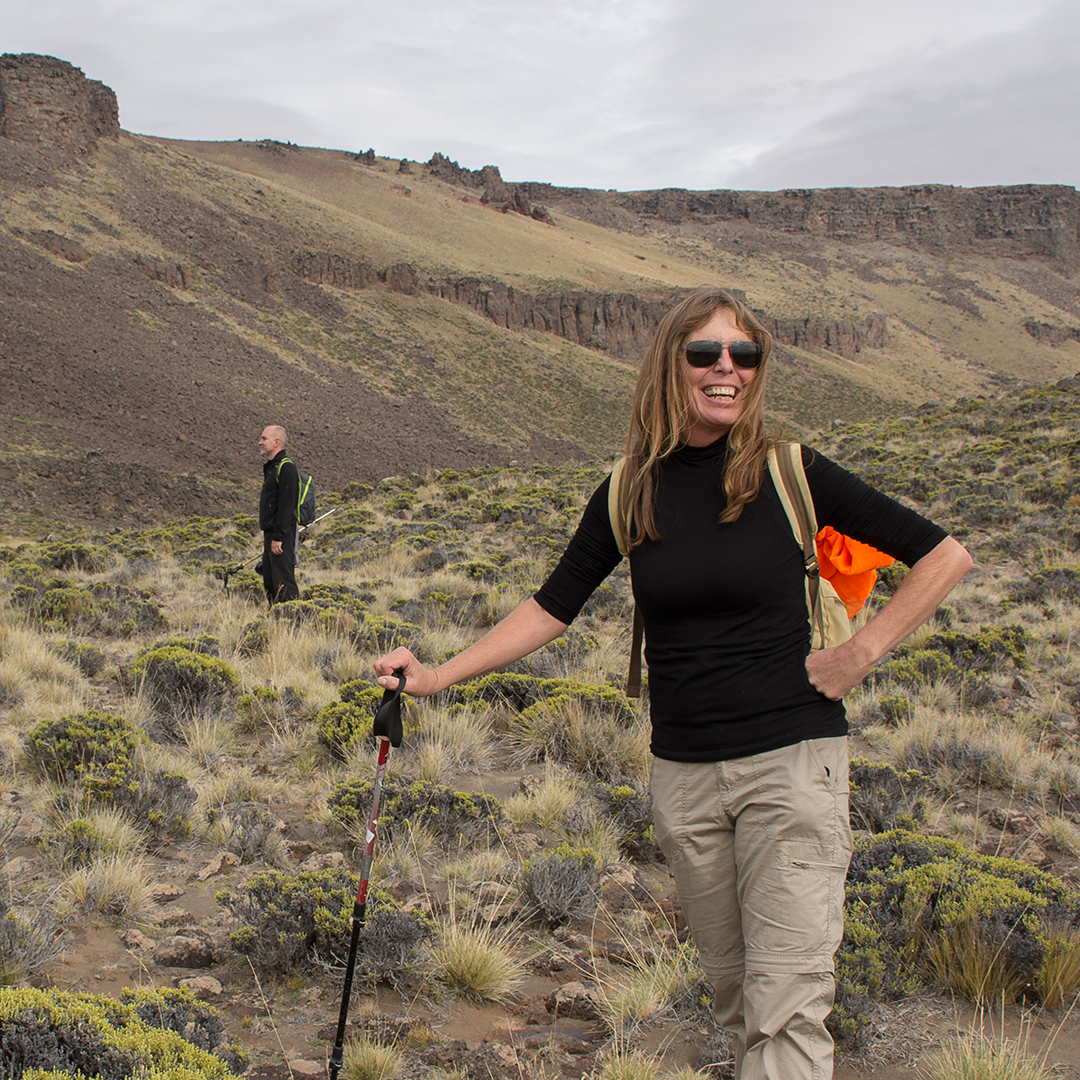
Marian Labourt
Press and tourist development.
Marian joined the foundation in 2011 to coordinate the press strategy and contribute to the development and positioning of all our projects’ tourist destinations.
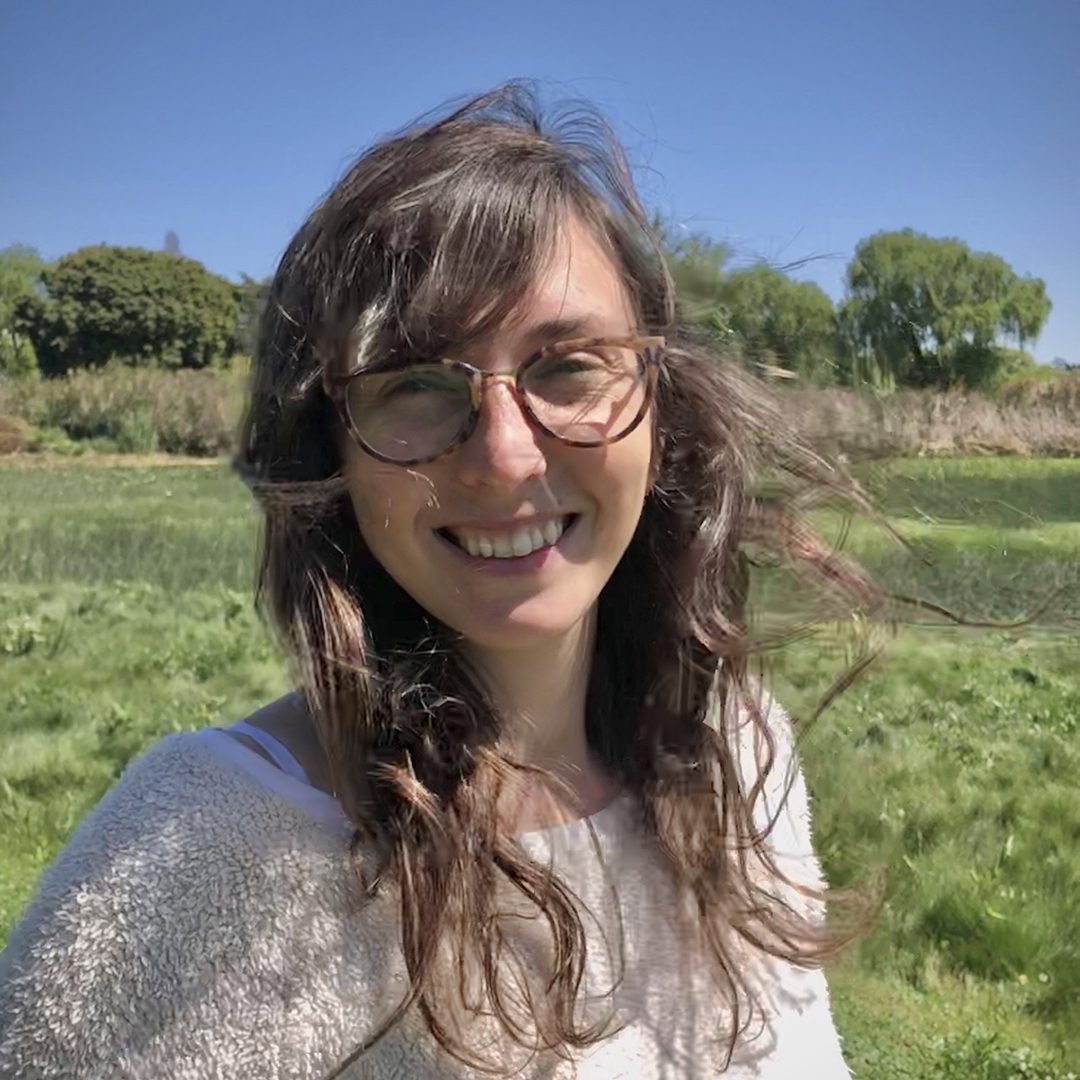
Laura Cambiaire
Press and tourism promotion.
Laura has worked in the foundation since 2019. She coordinates national and regional press articles and interviews, prepares materials to share with journalists and writers, and collaborates with promoting the foundation’s nature-tourism destinations.
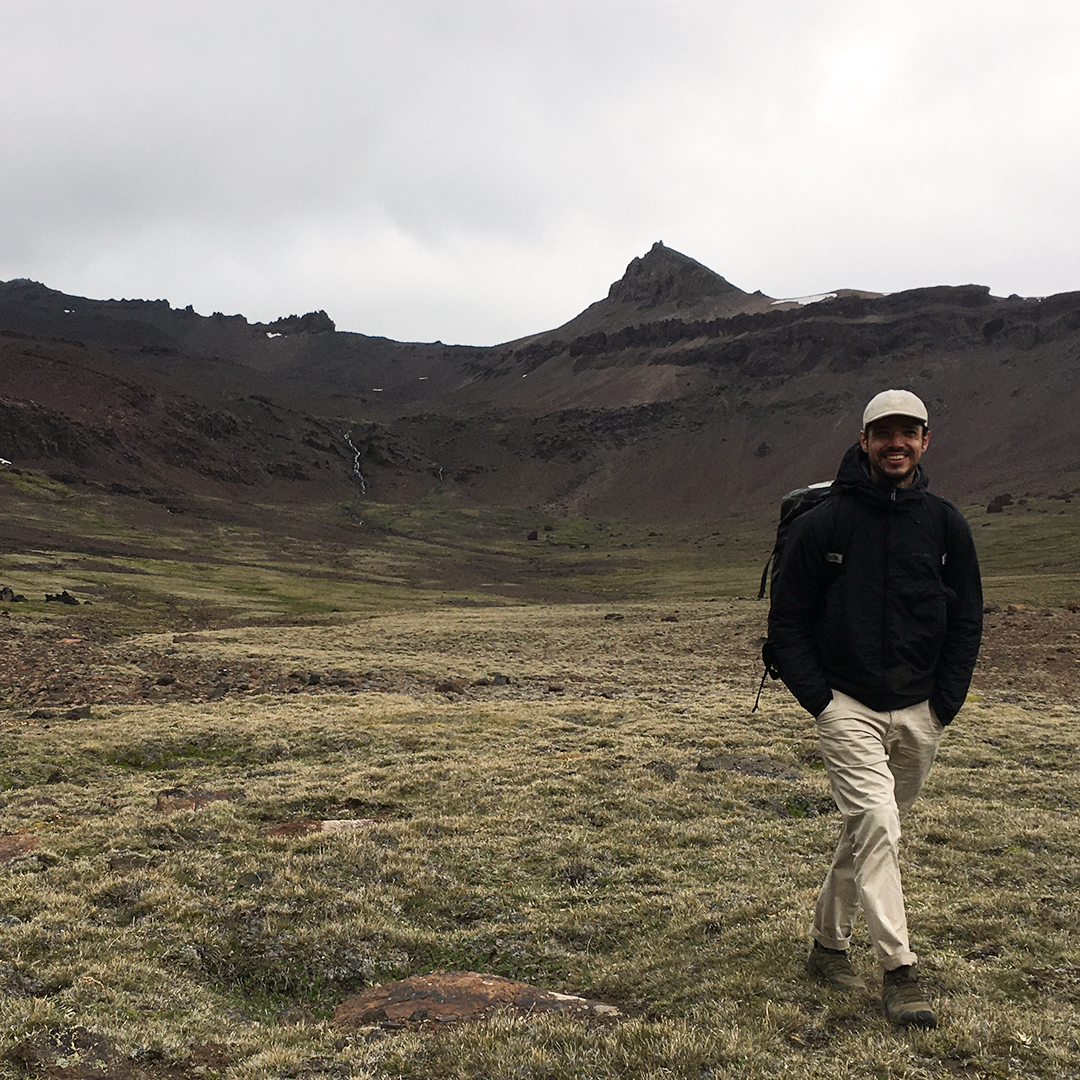
Nicolás Guastavino
Communication.
Nicolás joined the foundation in 2018. He oversees the institutional communication channels and materials and assists the local teams in implementing communication strategies and campaigns.
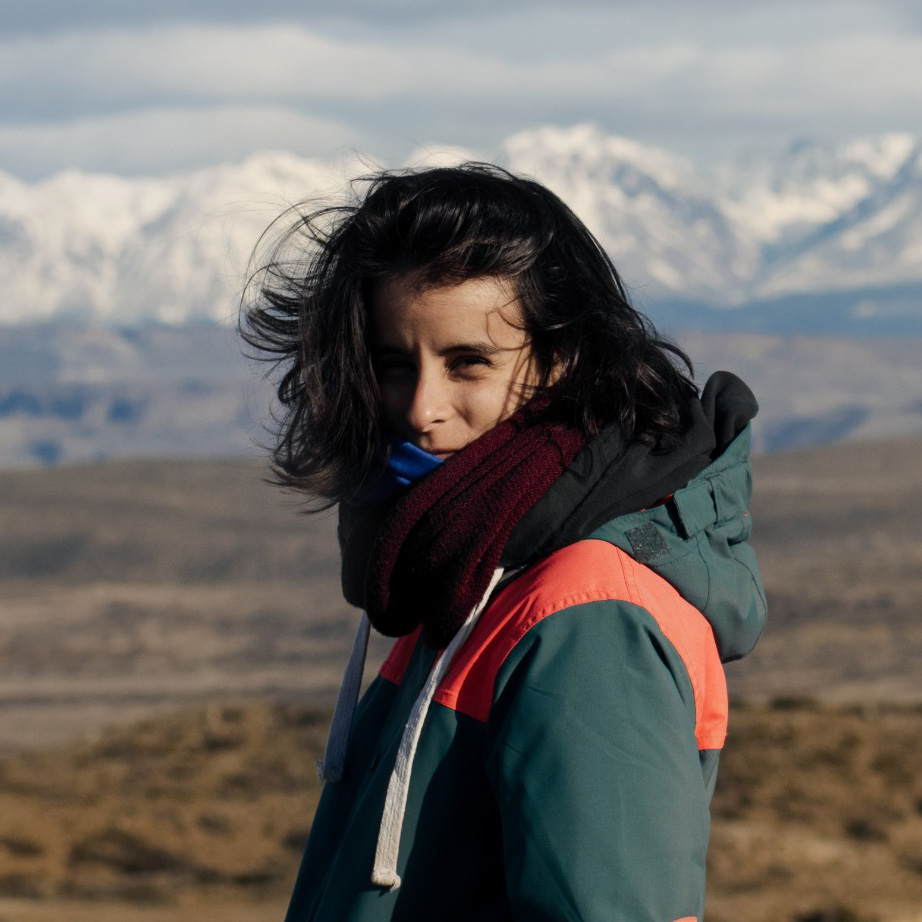
Andrea Villarreal
Graphic design & social media.
Andy collaborates with our foundation’s social media content and graphic design.
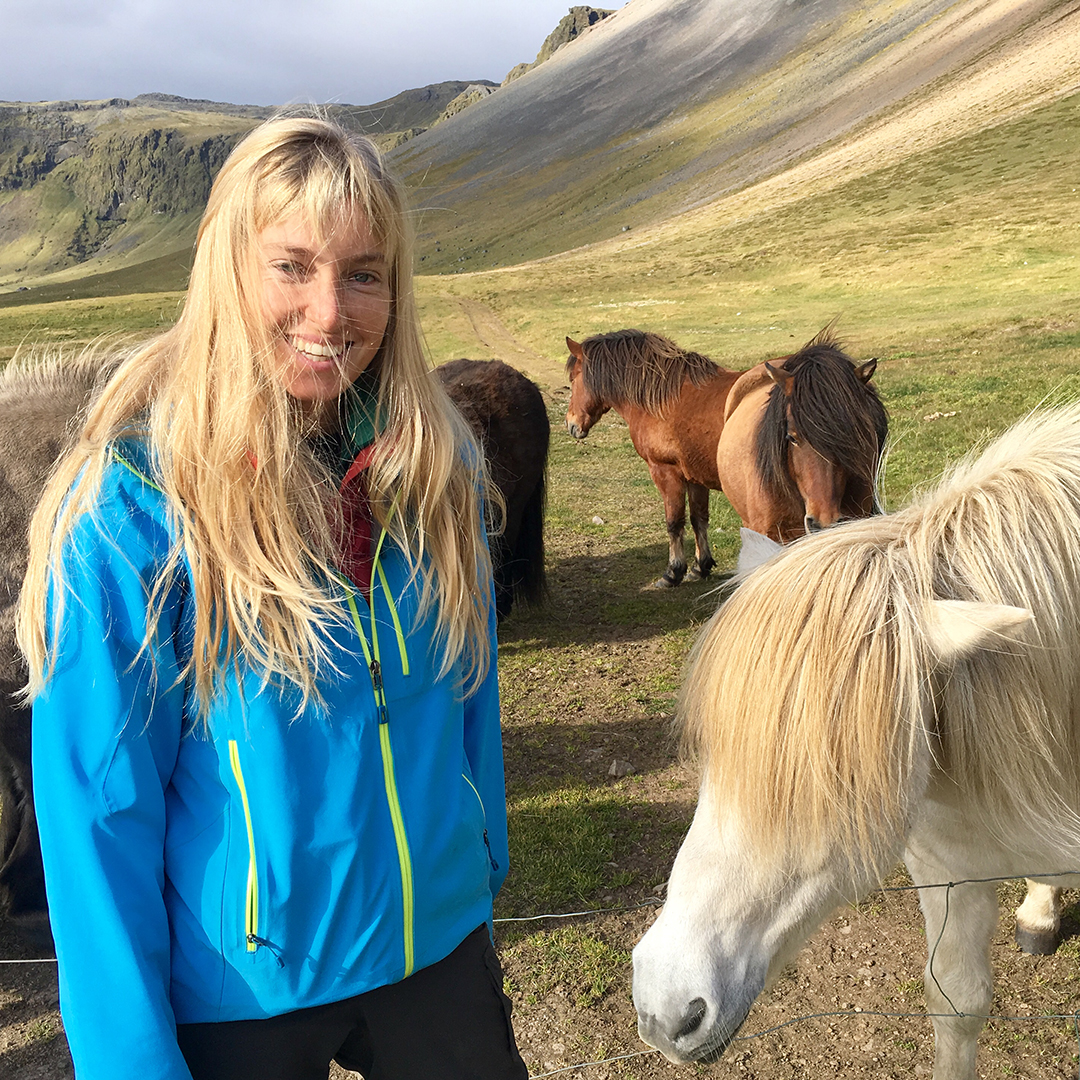
Guadalupe Ayerza
Strategy and partnerships.
Lupe joined the foundation’s Strategy and Partnerships team in 2019. She is busy building relationships with donors and developing strategic alliances, among other tasks.
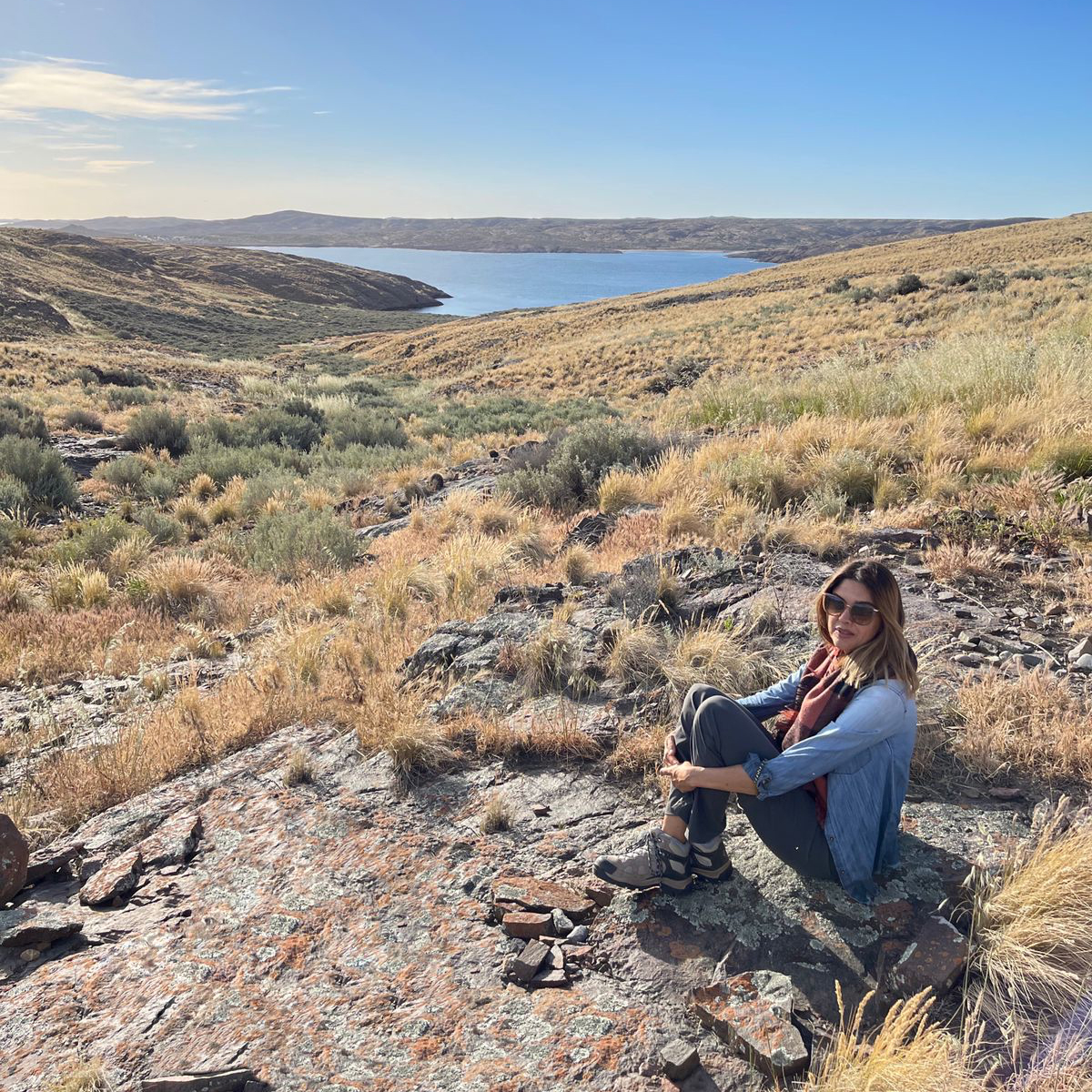
ÁNGELES MURGIER
Angie is a lawyer with over 20 years of experience assessing environmental and commercial law. She joined the foundation’s Strategy and Partnerships team in 2021 to help develop strategies, cultivate donor relationships, and provide legal support.
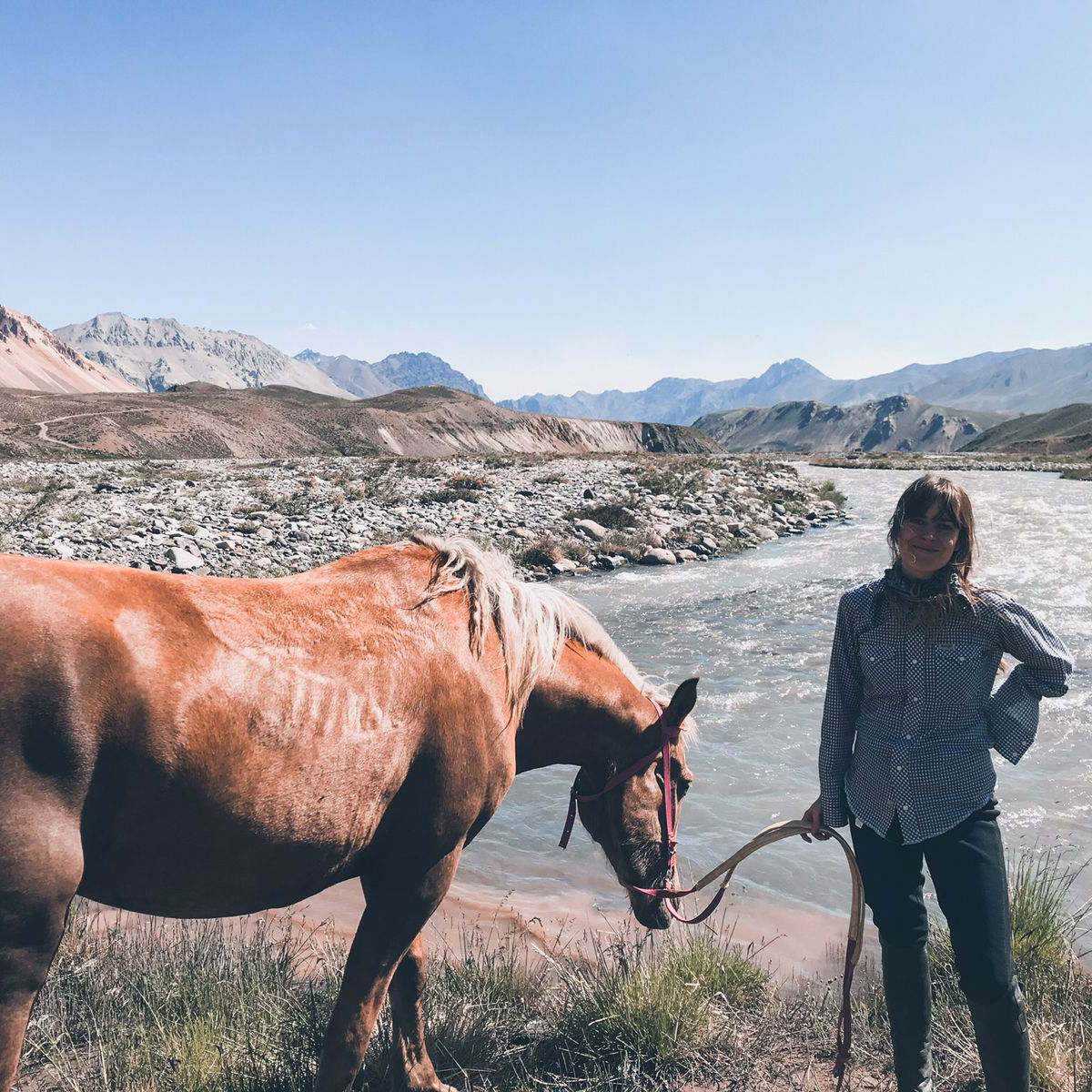
VICTORIA THOMAS
Vicky is a lawyer. She joined the foundation’s Strategy and Partnerships team in 2021 to compose donor reports detailing all our project’s progress.
Teresita IturraldE
Asuntos legales.
Teresita se unió a la Fundación en el año 2014. Desde entonces es coordinadora de asuntos legales, asesorando a la Fundación en la normativa que rige las actividades que realiza, coordinando la redacción de convenios y presentaciones ante autoridades, temas relacionados con tierras y supervisión de asuntos judiciales, entre otros.
Prensa y Desarrollo del Destino Turístico
Marian se unió a la Fundación en 2011. Desde entonces, coordina las acciones de prensa y contribuye al desarrollo de los destinos de turismo de naturaleza en los proyectos territoriales.
Prensa y Promoción de Turismo de Naturaleza
Laura trabaja en la Fundación desde 2019 y se desempeña en el área de relaciones con la prensa, coordinando notas y entrevistas en los medios nacionales y regionales, preparando contenidos y materiales para periodistas y redactores, y colaborando con la promoción de los destinos de turismo de naturaleza.
Comunicación
Nicolás se unió a la Fundación en 2018. Sus responsabilidades incluyen coordinar los materiales y canales de comunicación institucionales y asistir a los equipos en territorio en la implementación de estrategias y campañas de comunicación.
Diseño gráfico y Audiovisual
Andy colabora con el diseño gráfico y producción audiovisual para las redes sociales institucionales.
Estrategia y Alianzas
Lupe se unió al equipo de Estrategia y Alianzas de la Fundación en el año 2019. Mayormente se dedica al vínculo con donantes y al desarrollo de alianzas estratégicas.
Angie es abogada y cuenta con más de veinte años de experiencia asesorando en temas de derecho ambiental y comercial. Se unió al equipo de Estrategia y Alianzas de la Fundación en 2021. Sus responsabilidades incluyen el desarrollo de estrategias, vínculos con donantes y apoyo en aspectos legales.
Vicky es abogada y se unió al equipo de Estrategia y Alianzas de la Fundación en 2021. Desde entonces redacta reportes para los donantes detallando los progresos logrados en los proyectos.

Suscribite a nuestro newsletter
Subscribe to our newsletter, podés donar transfiriendo a nuestro alias., alias: oso.pecari.guaca, corrientes tierra de yaguaretés, corrientes land of the jaguar.
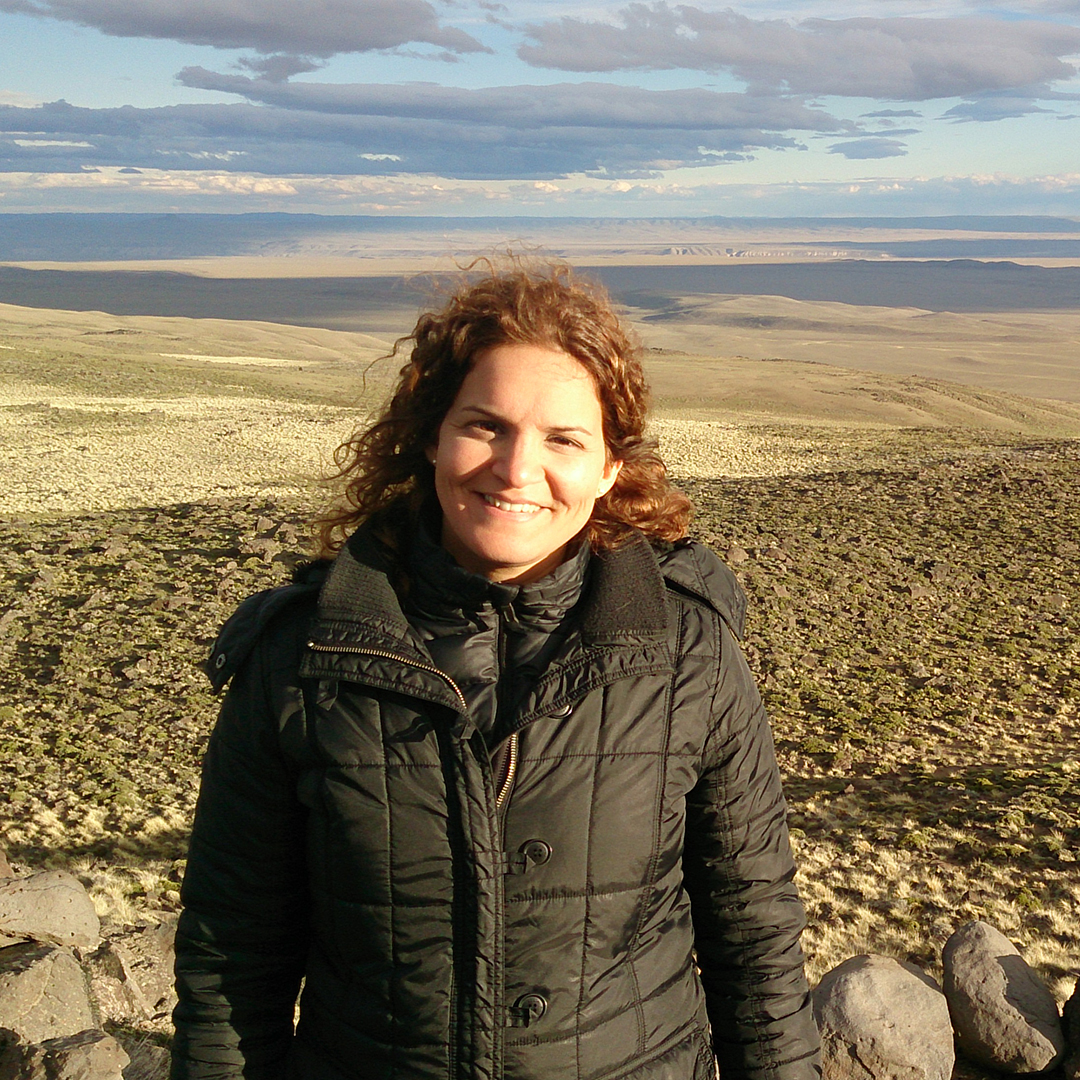
Valeria Gil
Administration director.
Valeria joined Rewilding Argentina’s team in 2003. She oversees the foundation’s financials, budgets, and commitments with donors and compliance with current regulations.
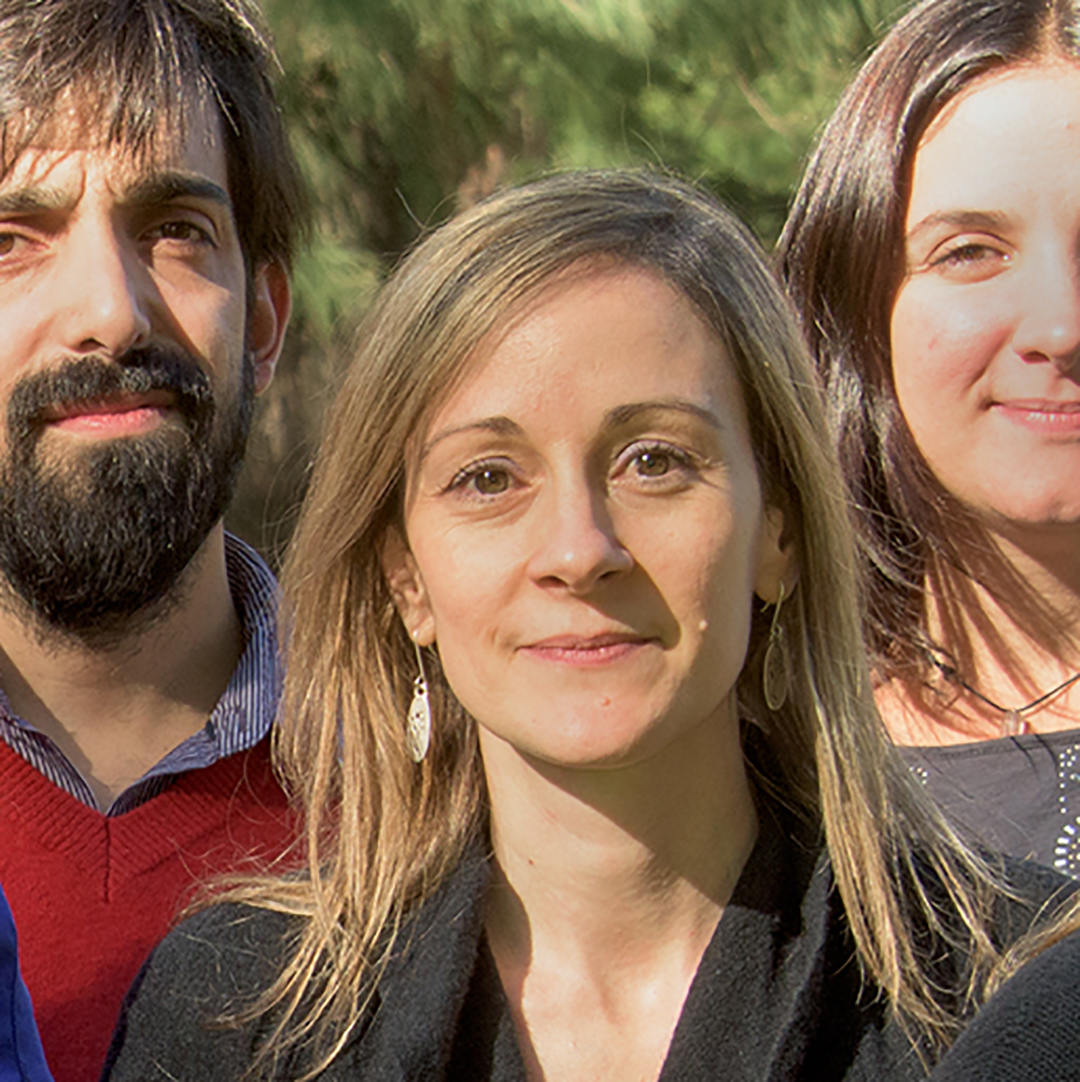
Verónica Angrisano
Human resources and taxes director.
Verónica has been part of our team since 2008 when she joined to oversee work affairs and compliance with tax regulations. She also coordinates the team at the office in Buenos Aires.
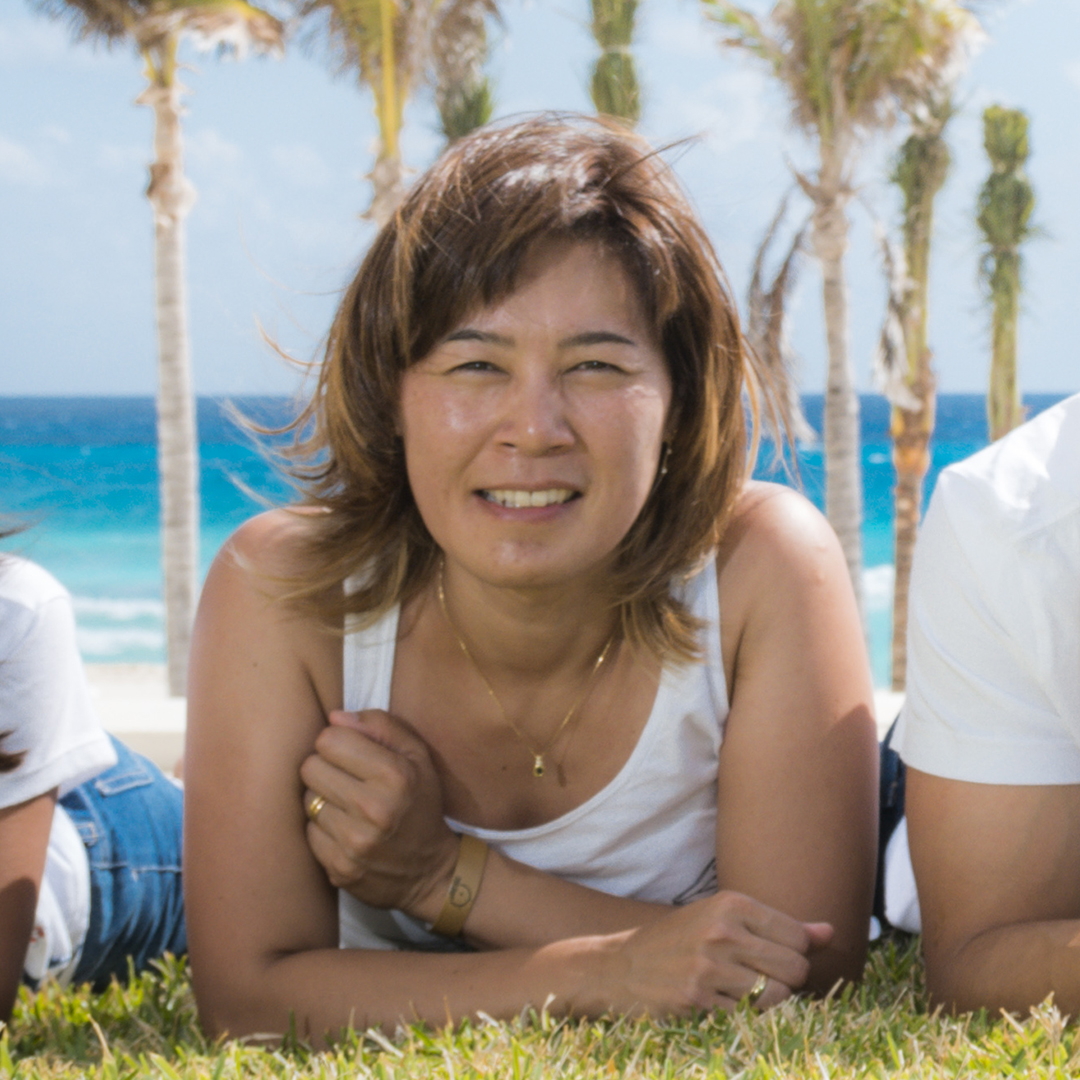
Marcela Mizutani
Marcela has collaborated with the foundation since the very beginning. She’s currently responsible for the foundation’s accounting, balances, and monthly reports.
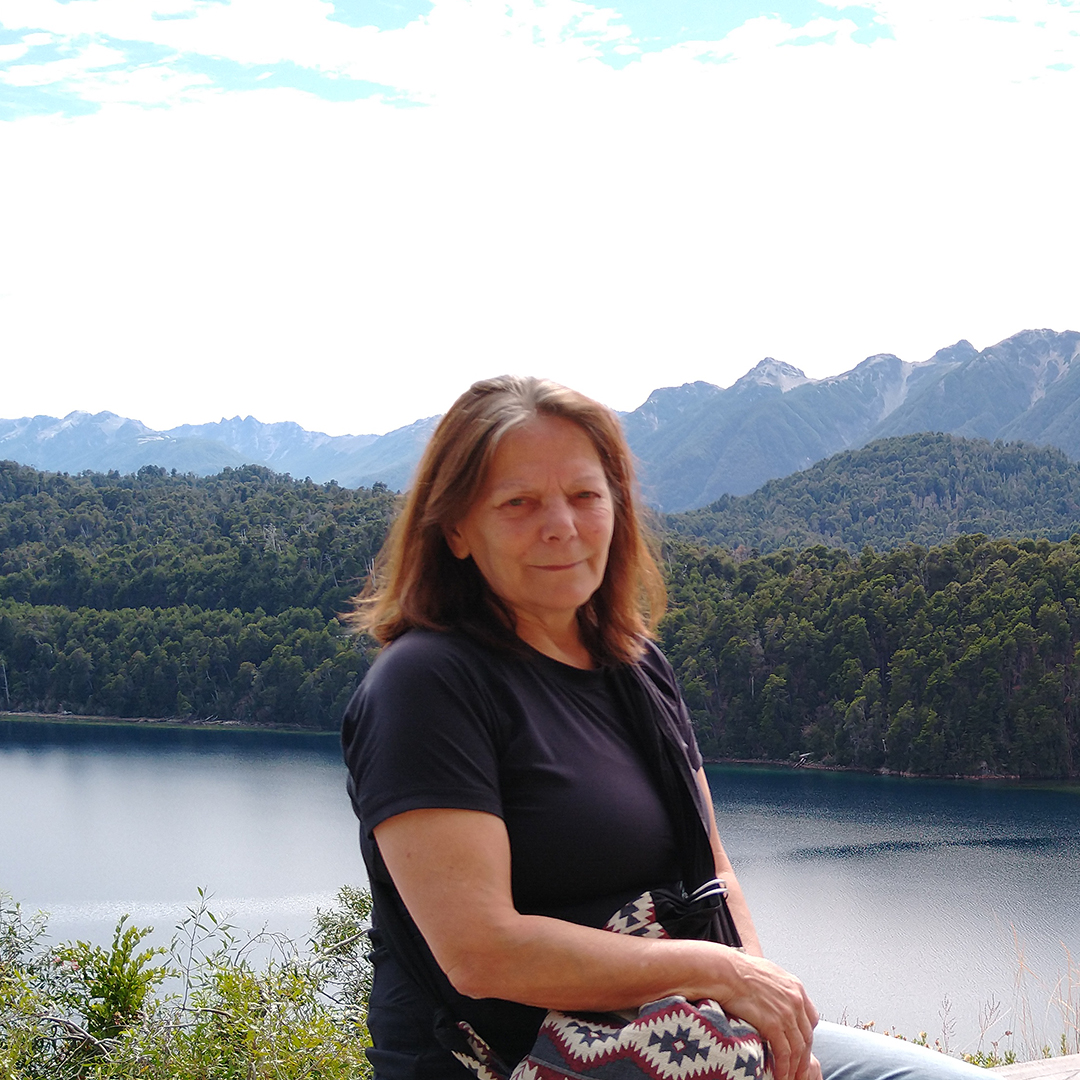
Acquisitions and Contracts
Since the foundation’s beginning, Elsa has supported team members in the field and assisted the high management. She collaborates with bank affairs, helps with equipment purchases and importations, and specific contracts.
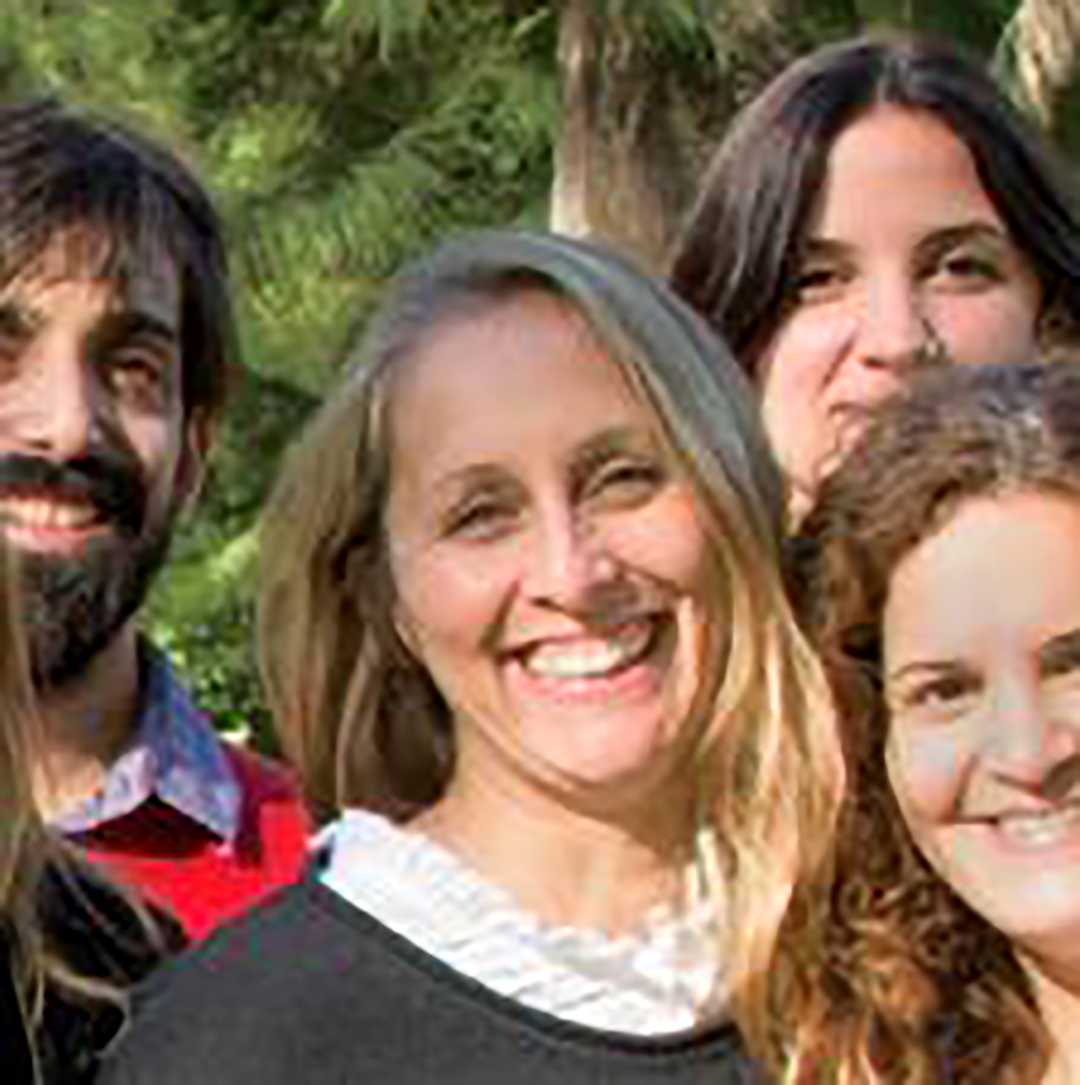
Gladys Scholles
Accounting and taxes.
Gladys joined the foundation in 2008. Today, she oversees the foundation’s southern projects payments and incomes, analyzes accounting, and assists in preparing monthly reports.
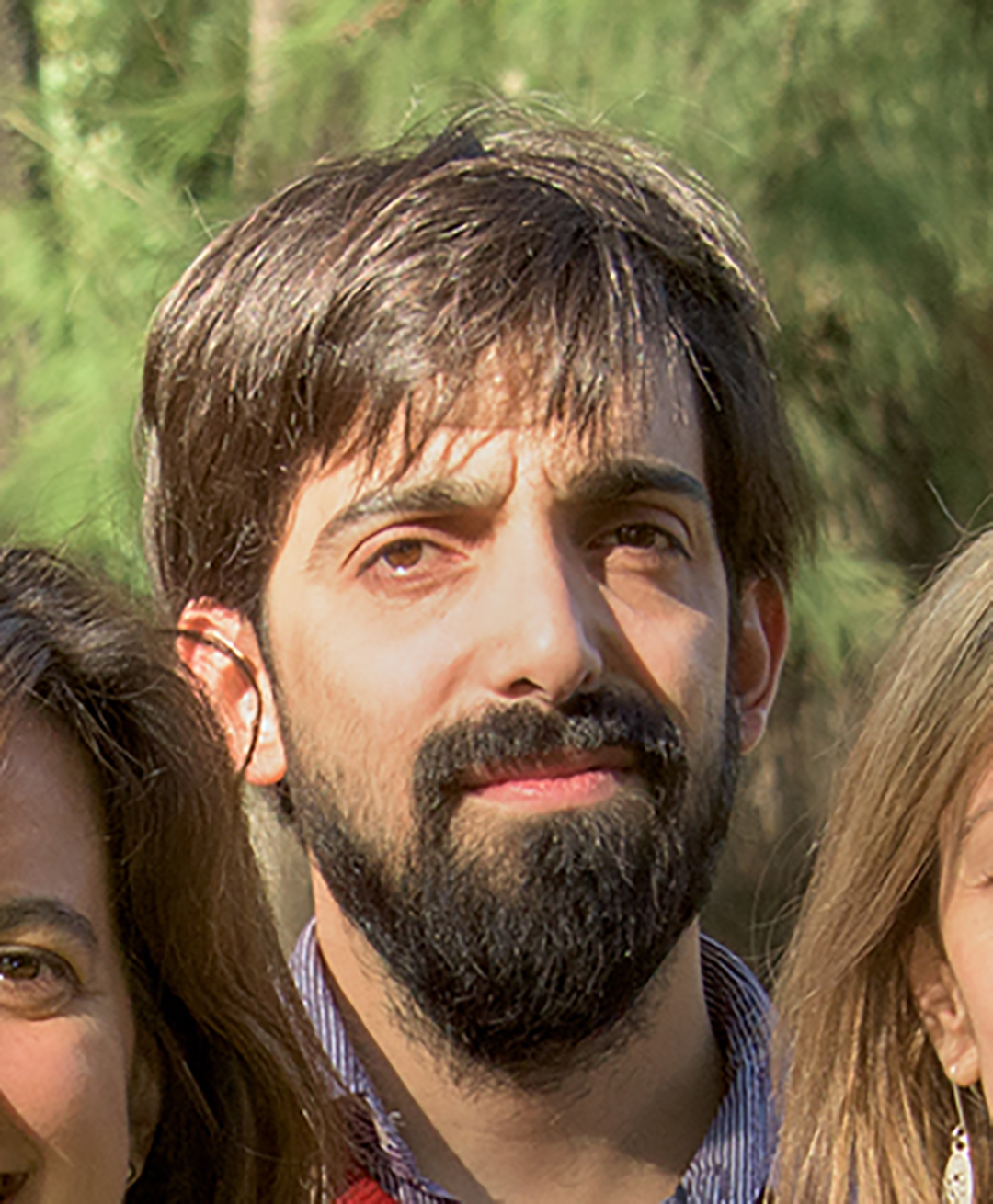
Alejandro Bertola
Accounting and suppliers.
Ale has worked with the foundation since 2009. He currently coordinates payments and incomes in our northern projects, analyzes accounting registrations, and oversees the accounting of tourist-related ventures.
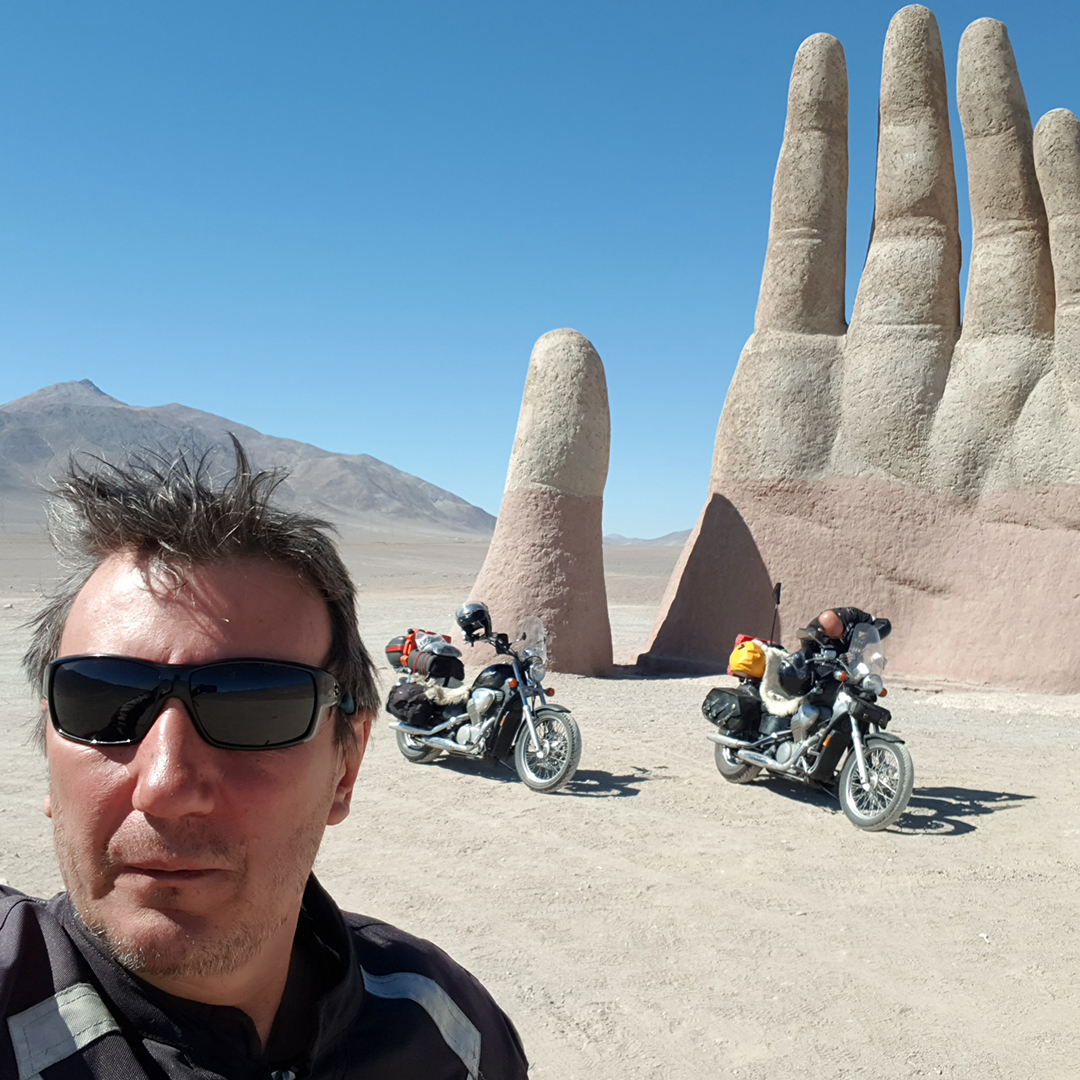
Andrés Delgado
Suppliers and transactions.
Andy joined the foundation’s team in 2004. Since then, he has provided support related to administrative procedures for teams in the field and collaborates in our northern projects’ suppliers’ payment system.
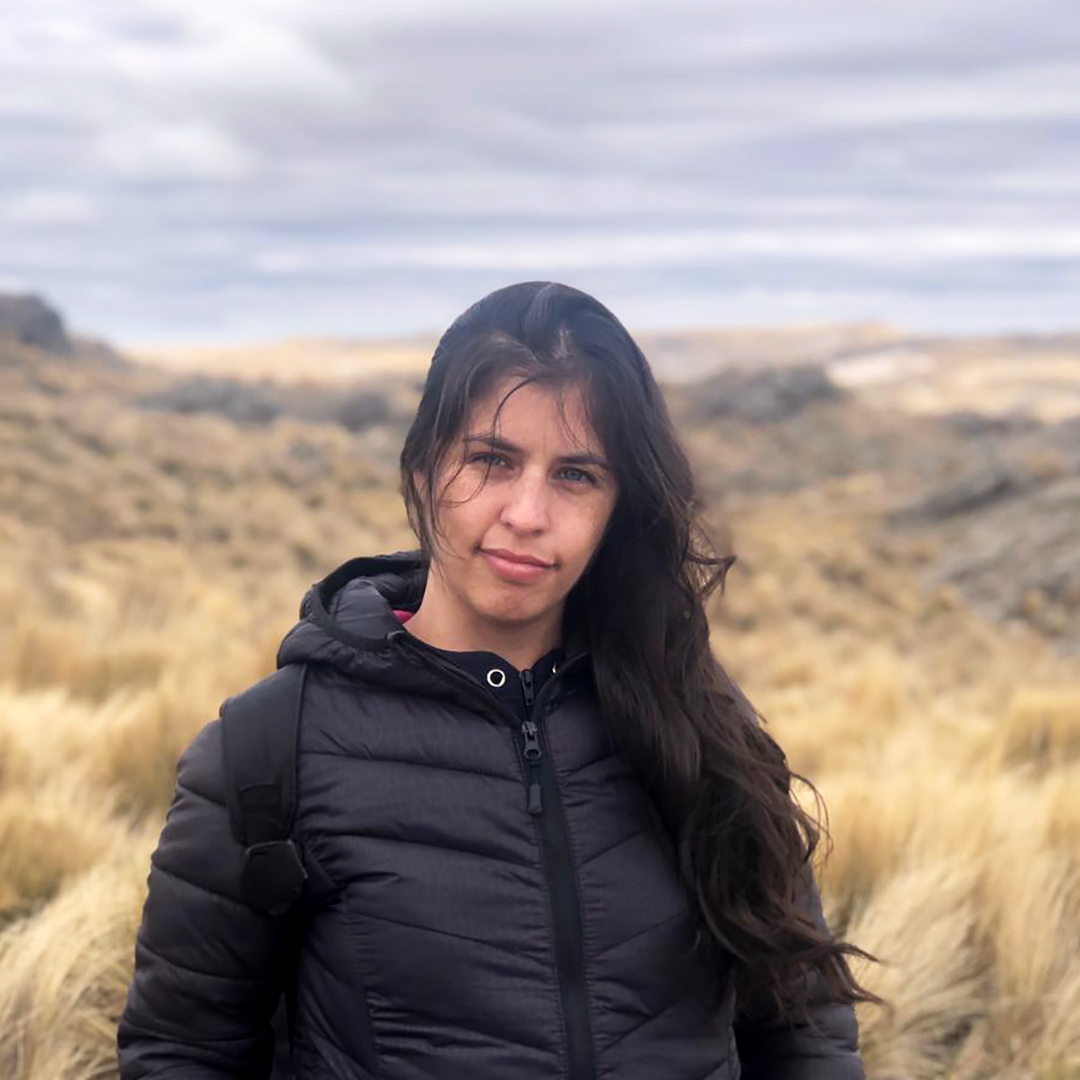
Lucía Scholles
Suppliers and accounting analysis.
Lulo has worked in the foundation since 2019. She assists the payments area and helps analyze accounting registrations.
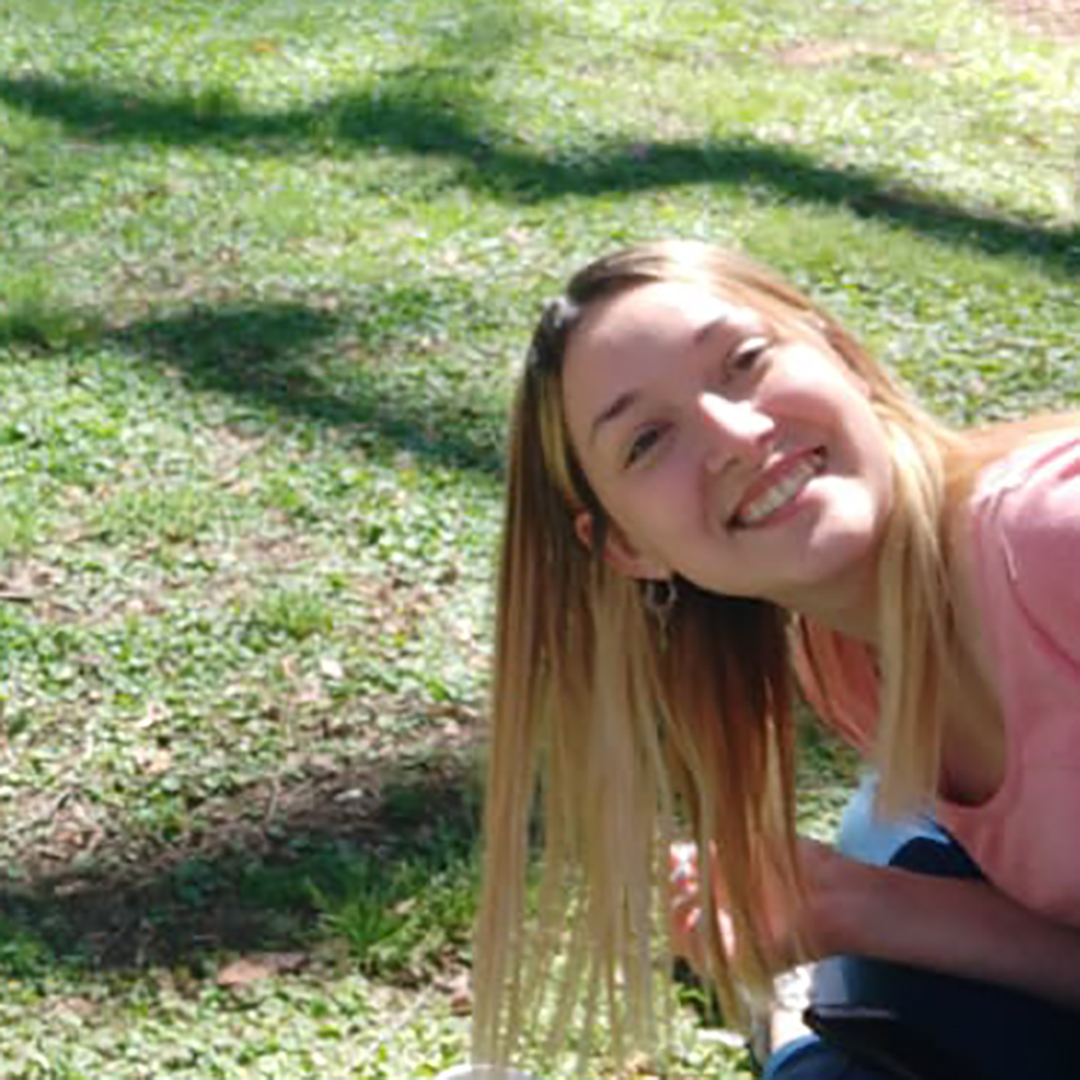
Camila Rodríguez
Invoicing and control of services provisions.
Cami has worked in the foundation since 2018. She oversees invoicing and the provision of services related to administrative aspects of entrepreneurial work.
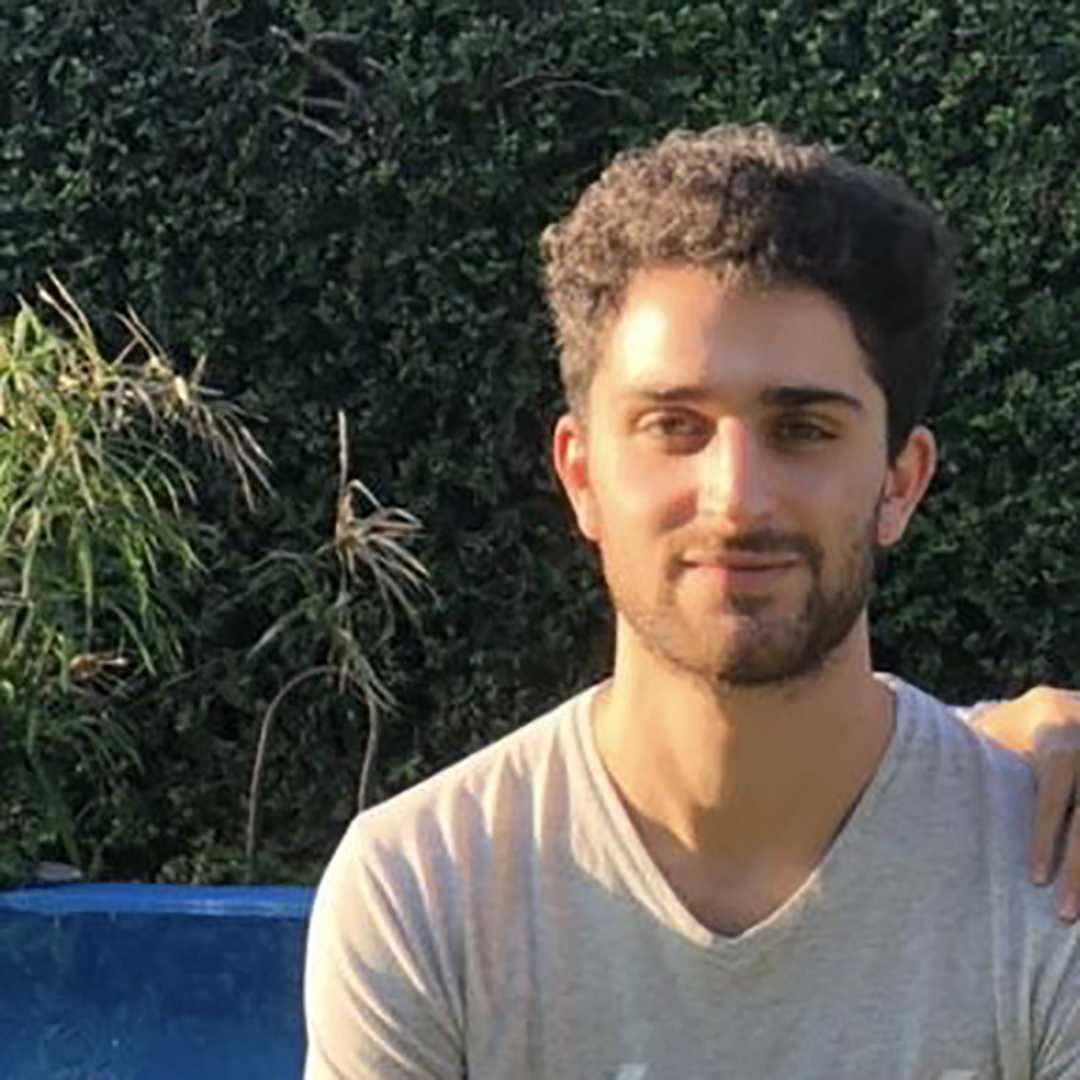
LUCIANO ADJEMIAN – Contador Público Nacional
Human resources.
Luciano joined Rewilding Argentina in 2019 to support the Human Resources area, assisting in salary liquidation, hiring, and tax analysis.
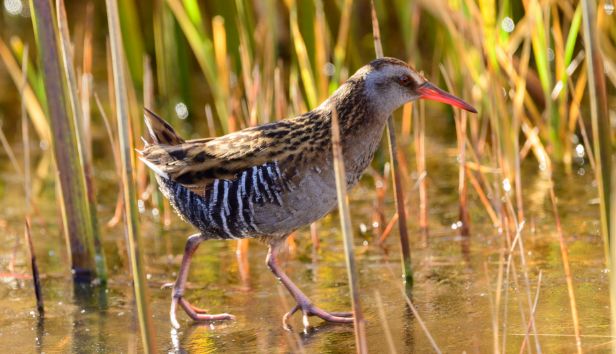
Una pequeña ave entre juncales
La gallineta austral ( Rallus antarcticus ) es un ave que habita en los humedales de la estepa patagónica, mayormente desconocida para la gente local. Se alimenta de invertebrados que encuentra entre los juncales que habita, que recorre caminando o con cortas carreras. En condiciones favorables logra sacar hasta dos camadas de pichones, durante el verano. Muy raramente se la ve volar y en inviernos de bajas temperaturas migra en dirección norte, con destinos poco conocidos.
En el Parque Patagonia Argentina estamos trabajando para recuperar los juncales degradados, de donde la gallineta austral ha desaparecido, para reintroducir individuos y generar nuevas poblaciones. Mediante el monitoreo de gallinetas se espera entender sus rutas migratorias y sus hábitos en Patagonia.
- En 2018 comienza el proyecto de monitoreo de gallineta austral por medio de cámaras trampas. El objetivo es conocer los requerimientos de hábitat de la especie para implementar acciones que ayuden a recuperar sus poblaciones.
- En 2019 capturamos y marcamos con anillos identificadores a 10 individuos en el juncal de la Estación Biológica El Unco.
- En 2020 comenzamos la restauración del juncal en el cañadón Caracoles, mediante la recanalización de vertientes y el retiro de terraplenes. En pocos meses, el juncal pasó de tener 8 hectáreas a 27 hectáreas.
- Al 2022 , 43 gallinetas australes fueron capturadas e identificadas. Los trabajos de restauración de los juncales de la Estación Biológica El Unco permitieron aumentar la abundancia de la especie en ocho veces.
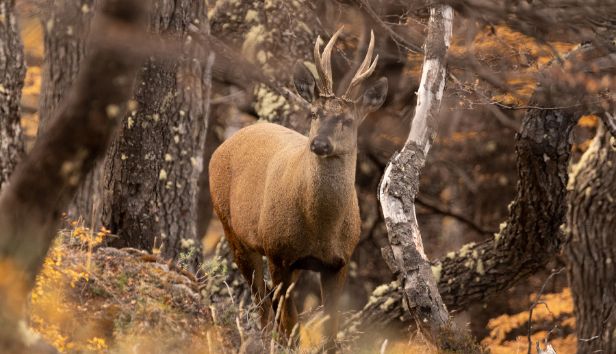
The native deer of the steppe
Together with the guanaco, the huemul ( Hippocamelus bisulcus ) is one of the great herbivores of Patagonia. In the past it populated the Patagonian Steppe, including the Pinturas Canyon, where numerous explorers who traveled through this area noted its presence.
Due to human hunting, competition for food, and diseases introduced by domestic cattle, the huemul has been relegated to hard-to-reach areas of the Andes in the south of Chile and Argentina, where the last 2000 individuals barely survive.
Project timeline
- In 2021 we began the huemul monitoring project by capturing and fitting satellite collars on eleven individuals in Argentina’s Los Glaciares National Park, in the Los Huemules Private Reserve, and in Río Toro Ranch.
- By 2022 our team has collared fourteen huemuls in Santa Cruz, who are providing important information about the ecology and biology of the species to help to develop efficient management and conservation strategies.
El ciervo nativo de la estepa
Junto con el guanaco, el huemul ( Hippocamelus bisulcus ) es el otro gran herbívoro de Patagonia. Habitó en el pasado la estepa patagónica, incluyendo el cañadón del río Pinturas, donde su presencia fue común hasta fines del 1800 como atestiguan numerosos exploradores que recorrieron esta zona.
Debido a una gran presión de caza, a la competencia y a las enfermedades introducidas por el ganado doméstico, el huemul quedó relegado a zonas poco accesibles de la Cordillera de los Andes en el sur de Chile y Argentina, donde a duras penas subsisten los últimos 2000 individuos.
- En 2021 comienza el proyecto de monitoreo de la población de huemules con la captura y colocación de collares satelitales a 11 individuos en el Parque Nacional Los Glaciares, Reserva Privada Los Huemules y Establecimiento Río Toro.
- Al año 2022 , nuestro equipo lleva 14 huemules equipados con collares satelitales en Santa Cruz, que están brindando importante información acerca de la ecología y biología de la especie, que ayudan al desarrollo de estrategias eficientes de manejo y conservación.
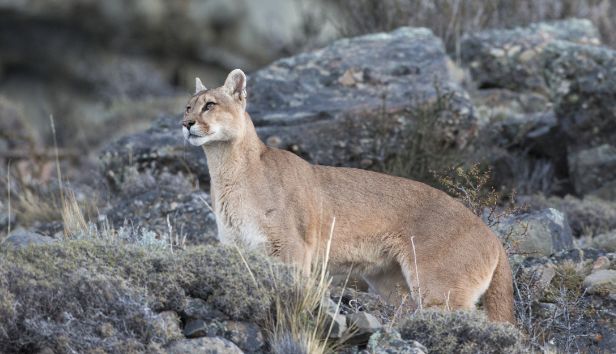
The architect of the ecosystem
The puma ( Puma concolor ) is a large feline—it can weigh up to ninety kilos— capable of adapting to different environments and prey, which have allowed it to become the most widely distributed carnivore in the Americas. An excellent ambush hunter, its main prey in Patagonia is the guanaco.
The puma’s presence ensures the appropriate condition and good functioning of the ecosystem by regulating the number of herbivores and medium-sized carnivores, with a positive impact on the flora and fauna of the region. In the Pinturas Canyon we are working to learn about and value the ecological role of this large predator and turn it into an anchor for local development through wildlife observation tourism.
- In 2018 we began the puma monitoring project using camera traps to identify sites with the most puma activity in Patagonia Park, Argentina.
- In 2019 we began capturing and fitting eight individuals with satellite collars.
- In 2020 we began cluster surveys to understand the species’ trophic ecology.
- As of 2022 , our team has fitted satellite collars on twenty-five pumas. This year the first five collars remotely dropped off of the pumas. We also began to monitor survival and puma cub dispersal.
The data obtained from cluster surveys—areas where pumas stay for several hours—suggest that guanacos constitute 72% of this large feline’s diet, followed by the lesser rhea (13%), other species (10%), and domestic sheep (5%), though this last figure corresponds to just five specific pumas.
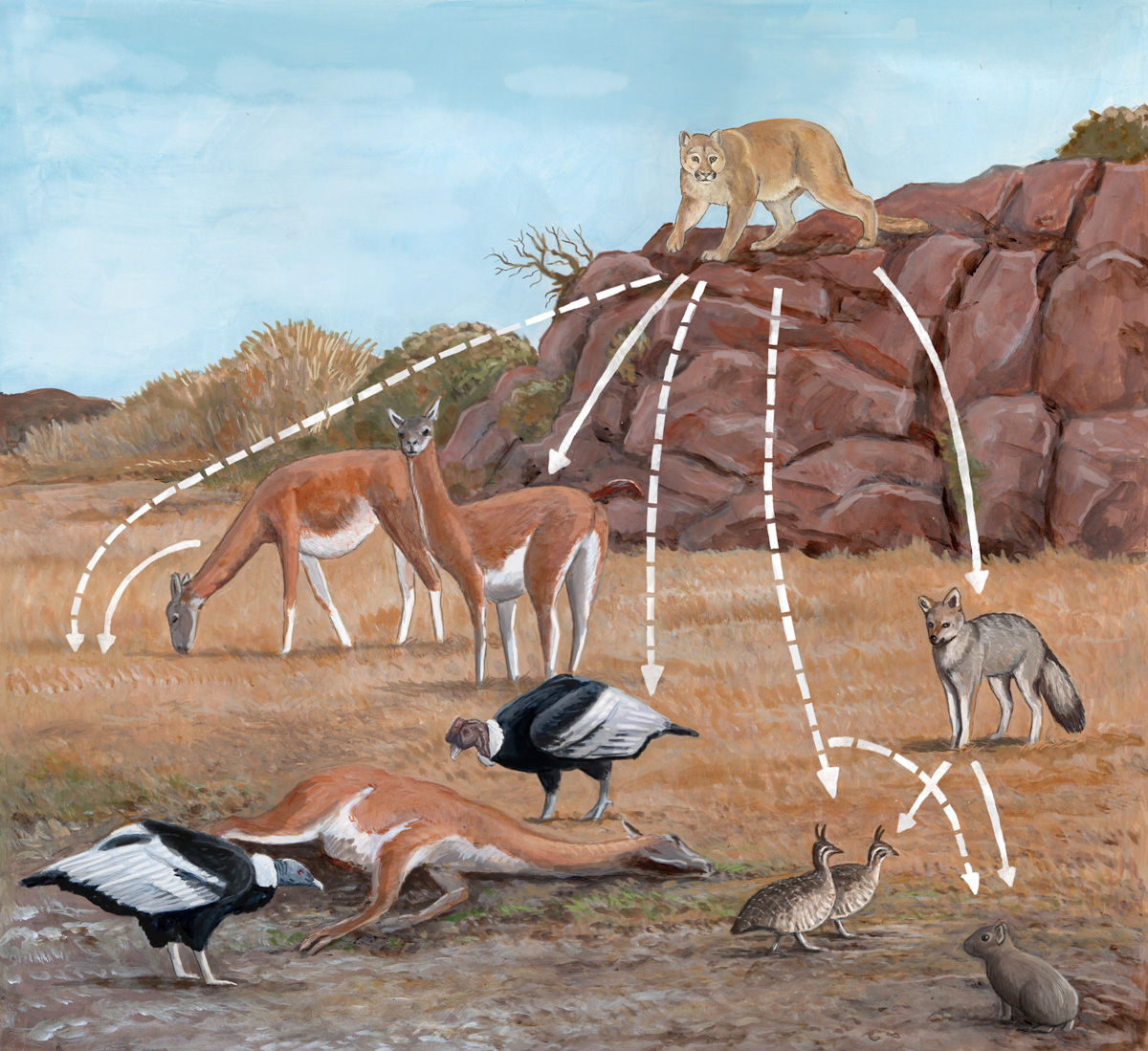
Keystone species often exert their ecological roles through interaction in the food chain. An apex predator such as the puma—which is at the top of this chain—will determine the distribution and abundance of its prey (the guanaco) thereby indirectly influencing the condition of the vegetation by regulating grazing intensity. This affects the diversity of life in the grasslands, the condition of the soil, and the rate of carbon sequestration through photosynthesis. The puma also subsidizes scavengers such as the Andean condor, which feeds on hunting remains. Pumas also regulate—whether via predation or competition—the number and behavior of medium-sized carnivores such as the gray fox, which then indirectly affects the numbers of that species’ prey. These regulation mechanisms through interactions with the food chain are called trophic cascades. Illustration: Marcelo Canevari. The solid arrows indicate direct relationships while dotted arrows indicate indirect relationships.
Apex predators and trophic cascades
A large number of studies show that apex predators such as pumas fulfill fundamental functions of the ecosystems they inhabit. Apex predators help to maintain the abundance and diversity of mammals, birds, reptiles, and invertebrates, in some cases regulating the populations of herbivores, which would otherwise overgraze vegetation, leading to a simplification of the landscape. Grazing intensity can be controlled by decreasing the number of herbivores by predation (trophic cascades). This includes the herbivores’ behavior, as they avoid grazing in areas where they could more easily be hunted. These types of trophic cascades are called “behavior-mediated.” For example in the Andes mountain range in San Juan, Argentina, vicuñas avoid certain areas where the risk of being preyed upon by pumas is high. In these areas, the vegetation prospers and the grasses produce more biomass and seeds, with potential beneficial effects on organisms such as small mammals, birds, and insects who seek shelter and food in this well-preserved vegetation.
Apex predators also regulate the populations of medium-sized predators. When apex predators disappear a phenomenon known as mesopredator release occurs: medium-sized predators such as foxes, Geoffroy’s cats, raccoons, and coatis proliferate the the absence of large carnivores such as pumas and jaguars, applying tremendous predation pressure on their prey, some of which may even disappear. For example, it has been suggested that in Iberá the absence of the jaguar led to the increase in fox population, which over-predated grassland bird nests, such as those of the strange-tailed tyrant.
In addition, apex predators subsidize other animals’ diets, as with scavengers. In areas of the Andes with little human impact, condors feed in large part on the carcasses of vicuñas and guanacos that have been hunted by pumas. Without the availability of carrion, the condor could not subsist, or its population numbers would decline.
At the same time, apex predators are involved in limiting the spread of pathogens, such as viruses and bacterias, and thereby, the diseases they cause. In the eastern United States, the disappearance of apex predators such as pumas and wolves has led to an increase in the coyote population and therefore a decrease in the amount of their prey, including foxes. At the same time, the decreased number of foxes has led to an overproliferation of small mammals that are hosts to the ticks that cause Lyme disease in humans, which can be fatal.
Apex predators’ effect on the trophic cascade also increases vegetation and soil carbon sequestration, and therefore helps to mitigate global climate change. Moose predation by wolves in the northern forests of North America reduces the rate at which the vegetation is grazed. Therefore, trees fix more carbon through photosynthesis and the dead leaves fall to the ground, where microbial activity is slow due to low temperatures. In this way, the organic material decomposes slowly and the carbon is stored in the ground rather than returning to the atmosphere.
It is evident that recovering ecologically effective densities of apex predators is essential to maintain the structure and functioning of ecosystems and to cope with the three major climate crises ravaging the earth, which are biodiversity loss, the emergence of pandemics, and global climate change. It is therefore clear that we must undertake every necessary effort to restore and maintain apex predator populations in their respective habitats.
El arquitecto del ecosistema
El puma ( Puma concolor ) es un gran felino capaz de adaptarse a distintos ambientes y presas, característica que lo ha convertido en la especie de carnívoro con mayor distribución en el continente americano. Puede alcanzar los 90 kilos, y es un excelente cazador de emboscada. Su principal presa en Patagonia es el guanaco.
La presencia del puma determina el buen estado y funcionamiento del ecosistema al regular el número de herbívoros y carnívoros medianos, con un impacto positivo sobre la flora y fauna de la región. En el Cañadón Pinturas estamos trabajando para conocer y poner en valor el rol ecológico de este gran depredador y convertirlo en un aliado para el desarrollo local a través del turismo de observación de fauna.
- En 2018 comienza el proyecto de monitoreo de pumas por medio de cámaras trampas para identificar sitios con mayor actividad de la especie en el Parque Patagonia Argentina.
- En 2019 se inician las capturas para equipar con collares satelitales a ocho individuos.
- En 2020 comienza el relevamiento de clústeres para comprender la ecología trófica de la especie.
- Al año 2022 , nuestro equipo lleva marcados 25 pumas con collares satelitales. Ese año se activa el mecanismo drop-off —liberación remota del collar— de los primeros cinco collares colocados. También iniciamos el monitoreo de supervivencia y dispersión de cachorros.
Los datos obtenidos a través del relevamiento de clústeres —sitios donde los pumas permanecen varias horas— sugieren que el guanaco constituye el 72% de la dieta del gran felino, seguido por el choique (13 %), otras especies (10%) y ganado ovino (5%), este último únicamente en el caso de cinco pumas.
Las especies clave suelen ejercer sus destacados roles ecológicos a través de interacciones en la cadena alimentaria. Un depredador tope como el puma, que se encuentra en la cima de esa cadena, va a determinar la distribución y abundancia de su presa (el guanaco) e indirectamente va a influir en las condiciones de la vegetación al regular la intensidad de pastoreo. De esta forma incide en la diversidad de vida que albergan los pastizales, en el estado del suelo o en la tasa de secuestro de carbono a través de la fotosíntesis. El puma también subsidia a poblaciones de carroñeros como el cóndor andino que se alimentan de los restos de sus presas y, finalmente, regula por depredación o competencia el número y comportamiento de carnívoros medianos como el zorro gris y de esta forma influye indirectamente en la abundancia de sus presas. Estos mecanismos de regulación a través de interacciones en la cadena alimentaria se denominan cascadas tróficas. Ilustración: Marcelo Canevari. Las flechas completas indican relaciones directas y las punteadas, indirectas.
Depredadores Tope y Cascadas tróficas
Un importante número de estudios muestra que los depredadores tope como el puma cumplen funciones fundamentales en los ecosistemas que habitan. Los depredadores tope ayudan a mantener la abundancia y diversidad de mamíferos, aves, reptiles e invertebrados, en algunos casos regulando las poblaciones de herbívoros que de otra forma consumen en exceso la vegetación y simplifican el paisaje. La intensidad del pastoreo puede controlarse disminuyendo el número de herbívoros por depredación (es decir a través de cascadas tróficas). También modificando la conducta de los herbívoros y haciendo que estos eviten pastorear en ambientes donde resulta más fácil ser depredados. A estas cascadas tróficas se las denomina “mediadas por el comportamiento”. Por ejemplo, en la Cordillera de San Juan, Argentina, las vicuñas evitan ciertos sectores donde el riesgo de ser atacadas por pumas es muy alto. En estos sectores la vegetación prospera y los pastos producen más biomasa y semillas con potenciales efectos beneficiosos sobre otros organismos como pequeños mamíferos, aves e insectos que obtienen refugio y alimento en esta vegetación bien conservada.
Los depredadores tope también regulan las poblaciones de depredadores medianos. Por eso, cuando los tope desaparecen se produce un fenómeno denominado liberación de los mesopredadores: carnívoros medianos como zorros, gatos monteses, mapaches y coatíes proliferan en ausencia de grandes carnívoros como pumas y yaguaretés, imponiendo altísimas tasas de depredación sobre sus presas, algunas de las cuales pueden incluso desaparecer. Por ejemplo, se ha sugerido que en Iberá la ausencia del yaguareté resultó en un aumento de la abundancia de zorros, quienes depredan excesivamente sobre nidos de aves de pastizal amenazadas, como el yetapá de collar.
Los depredadores tope, además, subsidian con alimento a otras especies, como ocurre con los carroñeros. En zonas de la Cordillera de los Andes poco impactadas por actividades humanas, los cóndores se alimentan en buena medida de las carcasas de vicuñas y guanacos depredados por el puma. Sin esta disponibilidad de carroña el cóndor no podría subsistir, o sus números poblacionales serían notablemente menores.
Asimismo, los depredadores tope están involucrados en limitar la proliferación de patógenos, como virus y bacterias y, por lo tanto, las enfermedades que causan. En el este de Estados Unidos la desaparición de depredadores tope como pumas y lobos ha conducido a un aumento en la abundancia de coyotes y la consecuente reducción del número de sus presas, incluyendo los zorros. A la vez, los bajos números de zorros han provocado la proliferación de pequeños mamíferos que son importantes huéspedes de las garrapatas que contienen la bacteria que causa la enfermedad de Lyme en humanos, que puede ser mortal.
El aumento del almacenamiento de carbono por parte de la vegetación y del suelo y por lo tanto la mitigación del cambio climático global es otro de los servicios provistos por depredadores tope mediante cascadas tróficas. La predación de alces por parte de lobos en los bosques boreales de Norteamérica disminuye la tasa de consumo de la vegetación; de esta forma, los árboles fijan más carbono a través del proceso de la fotosíntesis y las hojas muertas caen al suelo, donde la actividad microbiana es mínima debido a las bajas temperaturas. Así, la materia orgánica sufre menos descomposición y el carbono termina almacenándose en el suelo en vez de volver a la atmósfera.
Es claro que la recuperación de densidades ecológicamente efectivas de depredadores tope es fundamental para mantener la estructura y función de los ecosistemas y para hacer frente a las tres grandes crisis climáticas que asolan a la tierra, como son la pérdida de biodiversidad, la aparición de pandemias y el cambio climático global. Esta información indica que se deben realizar todos los esfuerzos necesarios para restaurar y mantener poblaciones de depredadores tope en sus respectivos hábitats.
Una especie clave en peligro de extinción
El yaguareté ( Panthera onca ) se encuentra virtualmente extinto en el Chaco argentino. Investigadores especulan que sobreviven entre 15 y 20 individuos en un territorio muy extenso. Los últimos registros de la especie corresponden a machos solitarios, varios de los cuales ya fueron cazados.
El yaguareté es una especie esencial para mantener la salud y la integridad de los ecosistemas silvestres al regular, mediante la depredación, las poblaciones de especies de depredadores medianos y grandes herbívoros, con posibles efectos incluso sobre la vegetación. Además, tiene el potencial de convertirse en un atractivo de primer orden para los turistas que visitan Argentina en busca de su fauna silvestre y paisajes naturales.
En el Parque Nacional El Impenetrable trabajamos desde 2019 en un proyecto para recuperar las poblaciones del yaguareté y así contribuir a revertir su extinción en la región chaqueña argentina.
- En septiembre de 2019 se detectaron huellas de un yaguareté en el Parque Nacional El Impenetrable por primera vez desde su creación. Una rápida reacción permitió obtener un registro de video realizado con trampas cámara y capturar al individuo para colocarle un collar satelital. Desde ese día, este macho, llamado Qaramta, es monitoreado diariamente con tecnología satelital, observándose que utiliza las tierras de la ex estancia La Fidelidad en Chaco (el actual Parque Nacional El Impenetrable) y Formosa.
- Un proyecto aprobado en junio de 2020 permitió realizar el apareamiento de Qaramta con Tania, una yaguareté proveniente de cautiverio. El objetivo fue comenzar a generar una población sustentable en el Parque Nacional El Impenetrable a partir de uno de los últimos ejemplares que habitan la región chaqueña argentina.
- Entre el 17 y el 21 de septiembre de 2021 , Tania y Qaramta finalmente se juntaron en un recinto especialmente diseñado para ello. Luego del encuentro, Qaramta retornó a la libertad y, cien días más tarde, Tania fue madre de dos cachorros saludables, Takajay y Nalá.
- Al año de edad, los cachorros fueron separados de su madre para que terminen de independizarse. Desde sus primeros días, crecieron con la mínima intervención humana posible, aprendiendo de su madre las habilidades de caza. Cuando alcancen la edad adulta serán liberados, trayendo esperanzas al futuro de la especie en el Impenetrable chaqueño.
- En 2022 se trasladó a la yaguareté correntina Mbarete al Parque Nacional El Impenetrable para aparearse con Qaramta, de cuya unión nacieron los yaguaretés Chaco y Taragüi. Luego, Mbarete regresó a su hogar en el Parque Nacional Iberá junto a sus dos crías, donde serán liberadas. Los cachorros llevan a Iberá los genes de su padre, Qaramta, lo que aumentará la diversidad genética de esa población incipiente.
- En 2023 , como producto de la cruza de Tania y Qaramta, nacieron tres nuevos cachorros. Al igual que con Nalá y Takajay, se espera que puedan ser liberados en el Parque Nacional para aumentar la población de la especie en esta área protegida.
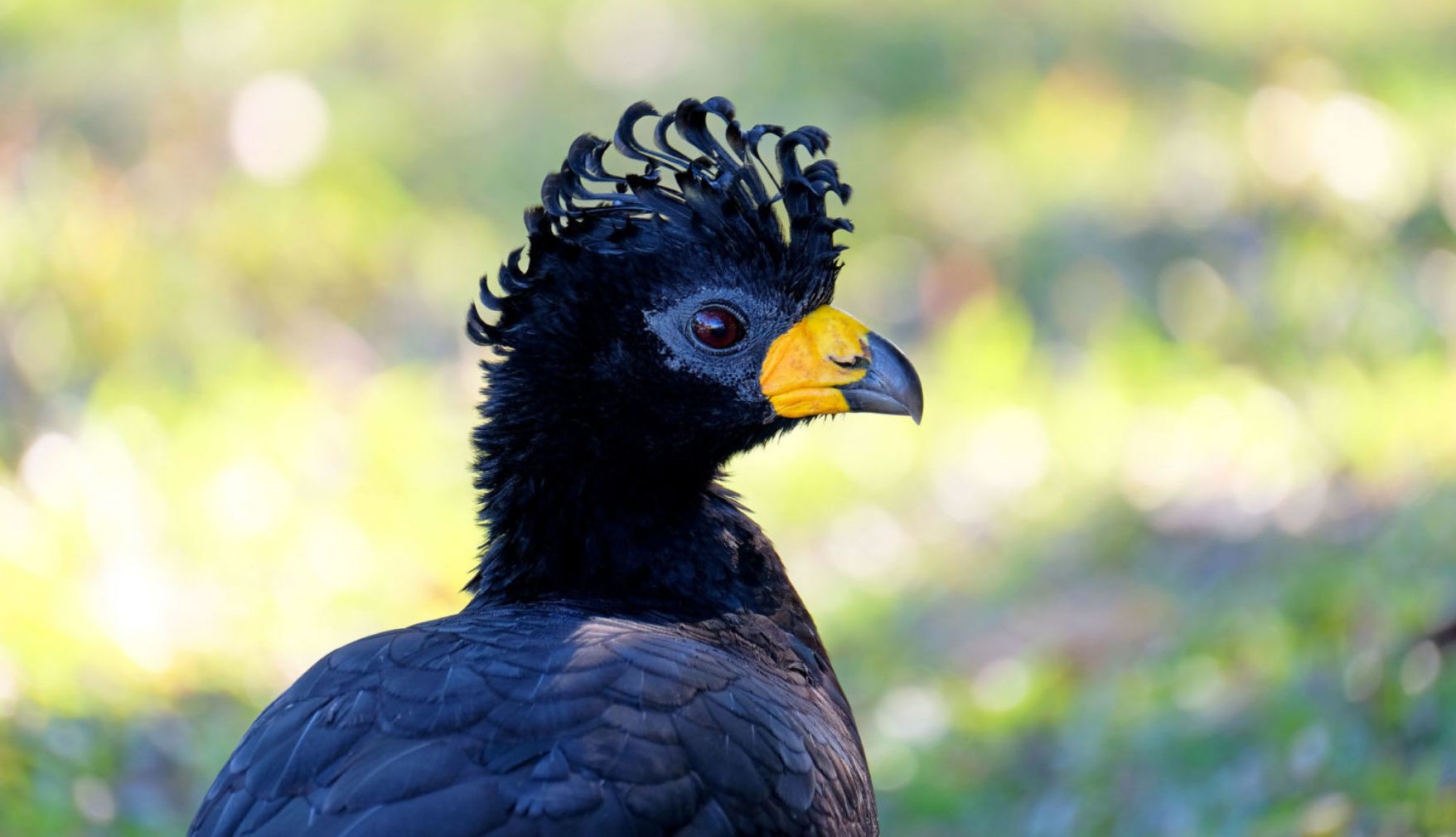
The bare-faced curassow ( Crax fasciolata ) is the largest landfowl in Argentina. It once inhabited the northeast of our country, but due to being hunted for meat and changes to the forests where it lived, it disappeared in the provinces of Santa Fe, Corrietes, and Misiones and only survives in small numbers in specific areas of the east of Chaco and Formosa. It is a significant consumer and disperser of fruits and seeds, which helps to regenerate the forests where it lives. We are currently in the initial phase of reintroducing the bare-faced curassow to Iberá Park.
The return of the bare-faced curassow to Corrientes and to Iberá will help to improve the species critical conservation status, to recover its ecological role in forest regeneration in Iberá, and will contribute to local development, helping to further position Iberá as an international tourist destination for wildlife observation.
The bare-faced curassow’s return began in 2019 with the arrival of the first individuals from the Bella Vista Refuge (Foz do Iguaçu, Brazil), which is managed by the Itaipú Binational Company. After quarantine, the birds were brought to Iberá, where they remained during an acclimatizing period in a pre-release aviary. The design of this twelve-meter high enclosure allows sheltering several animals at once and has trees inside where the birds sleep. After a few months of acclimatizing, the birds were released into the reserve.
The released bare-faced curassows are fitted with VHF transmitters which allows for their movements and locations to be monitored from time to time. After a period of exploring their new territory, a few of the birds flew quite far within their forest patches. Two pairs formed and they began to build nests, and then laid eggs, though they did not hatch, which was likely due to parental inexperience.
Soon after, both of the pairs laid eggs again, which hatched in February 2021 , resulting in the first three chicks hatched in the project. The chicks soon abandoned their nests but remained close to their parents for several weeks until they could fend for themselves.
In the 2021-2022 reproductive season, the bare-faced curassows laid many clutches, leading to thirteen chicks. However, none of them survived as most fell prey to a small wildcat (Geoffroy’s cat).
Due to the wildfires in the Province of Corrientes in January 2022 , we released two juveniles and two pairs of breeding adults in the Yerbalito Reserve, while other juveniles were evacuated to Aguará Center. Once the fires were out, we repaired the pre-release enclosures and returned the juvenile bare-faced curassows. The pairs were also recaptured. Unfortunately, one of the juveniles freed during the fires was preyed upon by another animal.
In the reproductive season of 2022-2023, three pairs have already laid a half a dozen eggs and three chicks have hatched.
We are hopeful that we can bring more individuals from Brazil and Paraguay to consolidate a population nucleus of the species in Iberá.

A threatened bird in Argentina
The bare-faced curassow is considered vulnerable and a species of high conservation priority worldwide. In Argentina the species is considered endangered owing to the drastic population and distribution range decrease, in addition to ongoing threats such as poaching and the loss or degradation of their habitat from selective logging or changes to waterways.
The number of adults is estimated at 2,500. The most viable populations are in gallery forests in the east of Formosa and in isolated, rare groups in the far northeast of Chaco near the Wet Chaco. It is extinct in the rest of its historical range in the provinces of Corrientes, Misiones, and Santa Fe.
An important ecological role
The bare-faced curassow lives in forests and neighboring areas, often in gallery forests associated with streams or rivers. It is a mainly fruit-eating species that feeds on fallen fruit, sprouts, and seeds and even flowers and invertebrates. Like other birds in the Cracidae family, the bare-faced curassow can disperse tree seeds with fleshy fruit, especially large ones that cannot be ingested by other birds or mammals. They are also able to process hard seeds, due to the particularities of their digestive tracts. For these reasons they are considered to fulfill a key ecological role of regenerating and restoring forests, which helps maintain their ecological function and biodiversity.
Records of the species in Iberá
There is evidence that the species lived in the north of the Province of Corrientes. The last records date to thirty or forty years back and cite an area along the Paraná River, close to Ituzaingó—near the Yacretá dam—and in the north of the Ibera Wetlands, near Villa Olivari. While there are no records farther south, it is likely that the species also lived in other sectors of Iberá and Aguapey, which have similar environments of neotropical seasonal dry forests suitable for the species.
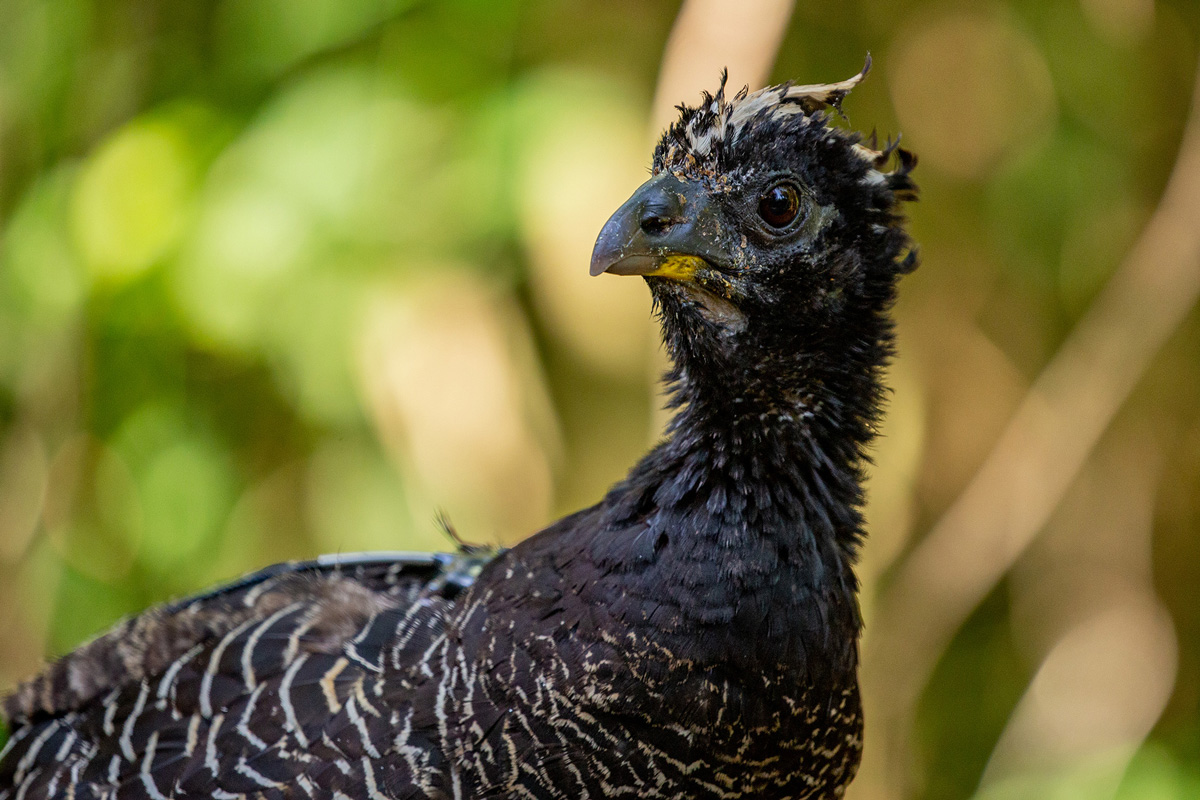
The opportunity to recover one of the great seed dispersers of Iberá
Recovering the bare-faced curassow would allow us to increase the population of a species that has lost a large part of its original distribution and recover its ecological role as a forest regenerator. In addition, its reintroduction is an important resource for the wildlife watching-based economy of nature that is already under development in the region.
The first site we chose for release is the Yerbalito gateway in the north of the Iberá Reserve. Yerbalito is home to the largest patches of Paraná Forest in the region, in addition to having grasslands, flooded grasslands, and marshes. These forests are part of the seasonal dry forests that continue onto the Atlantic Forest, westward into the forests of the Wet Chaco and the valleys of the Paraná and Paraguay Rivers, and northward into the forests of eastern Paraguay that include the Ñeembucú, a region similar in many ways to Iberá.
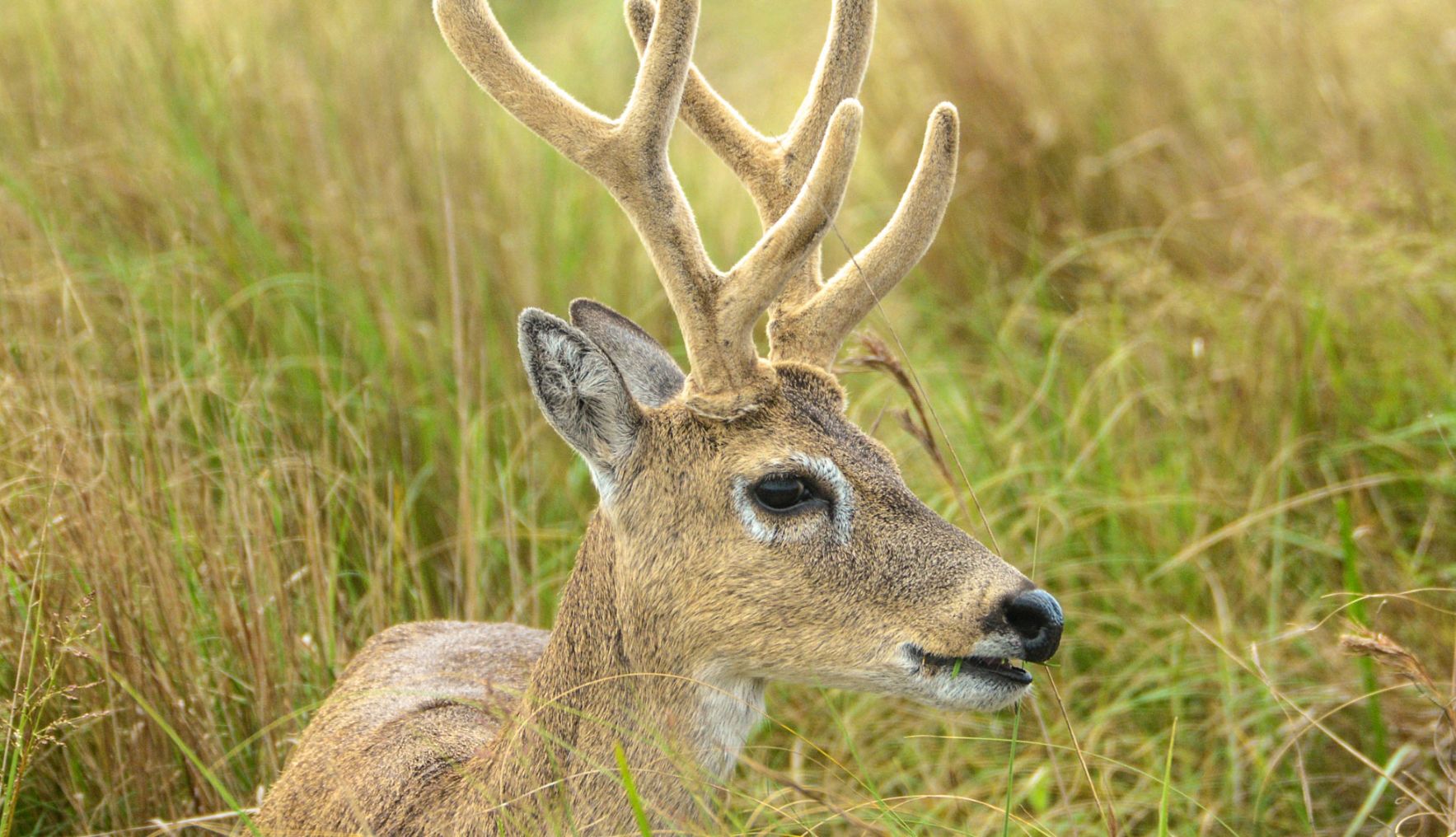
The pampas deer ( Ozotoceros bezoarticus ) is an herbivore that was abundant in Argentina’s grasslands. Due to hunting, destruction of its environment, and the introduction of pathogens from domestic cattle their numbers have fallen at an alarming rate.
Currently there are only four isolated pampas deer populations totalling 2,000 individuals in the country. In Corrientes there is one such population, located on private land near the Aguapey marshes.
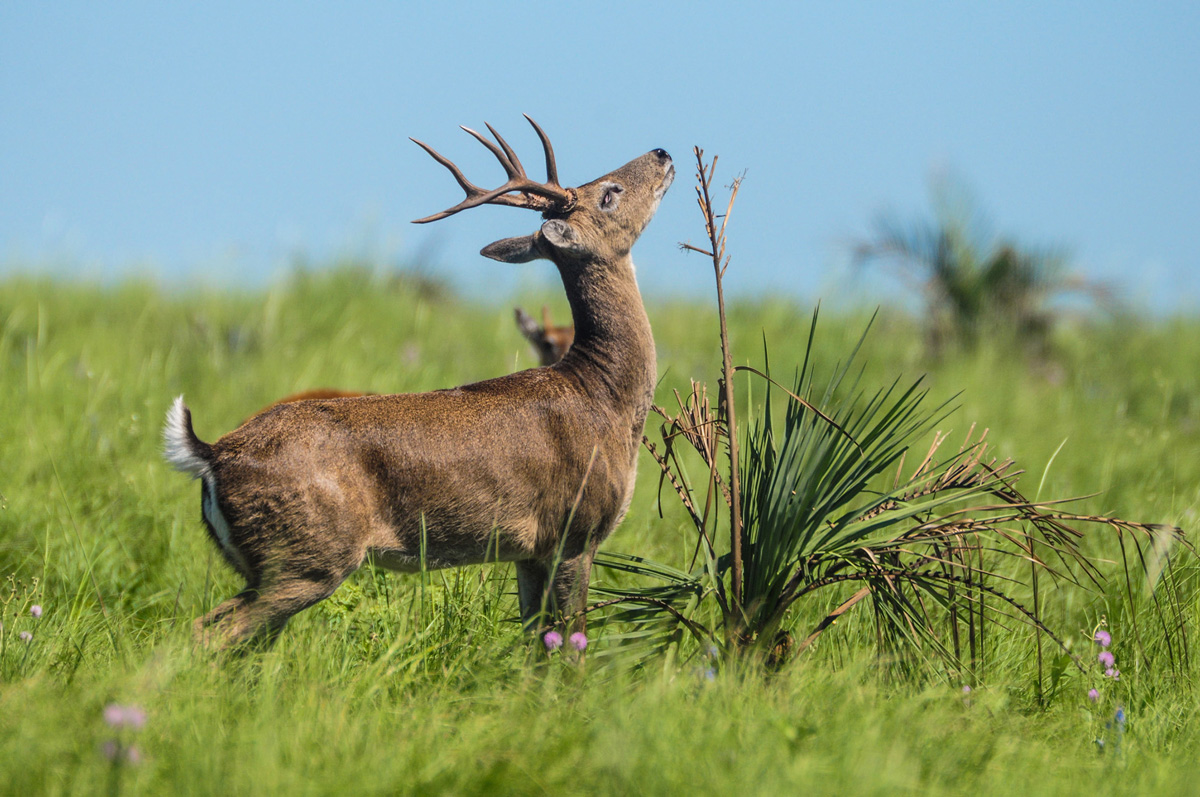
- Since 2006 we have conducted periodic censuses to collect data on exact distribution and specimen numbers near Aguapey. At the same time, we have developed activities to promote and raise awareness of the need to conserve the species, including talks and meetings with ranch owners and staff, designing and disseminating educational audiovisual material, and even producing a puppet show.
- One of the great milestones of the project was Rewilding Argentina’s purchase of 535 hectares of land to create the Guasutí Ñu (deer field in Guaraní), making this the first protected area primarily dedicated to deer conservation in the Aguapey region.
- In 2009 a team of Argentine and Brazilian veterinarians captured and translocated the first pampas deer in Corrientes. This was done to restore the population on a 10,000-hectare healthy grassland area on San Alonso Island, within Iberá Park. This is the fifth population nucleus of pampas deer in the country and quadruples the area strictly dedicated to its conservation of Argentina.
- In 2015 we began the process to establish a second population in the Rincón del Socorro Reserve, near the town of Colonia Carlos Pellegrini.
- By 2022 the population on San Alonso Island, started with twenty-two individuals translocated from Aguapey, now numbers 120 to 150 individuals. In addition, we also began a second nucleus in the Rincón del Socorro Reserve, which is now considered self-sustaining. In both cases, new fawns are born every year.
Reintroduced deer in Iberá are now the fifth population nucleus in the country, the third largest, and the largest on protected land.
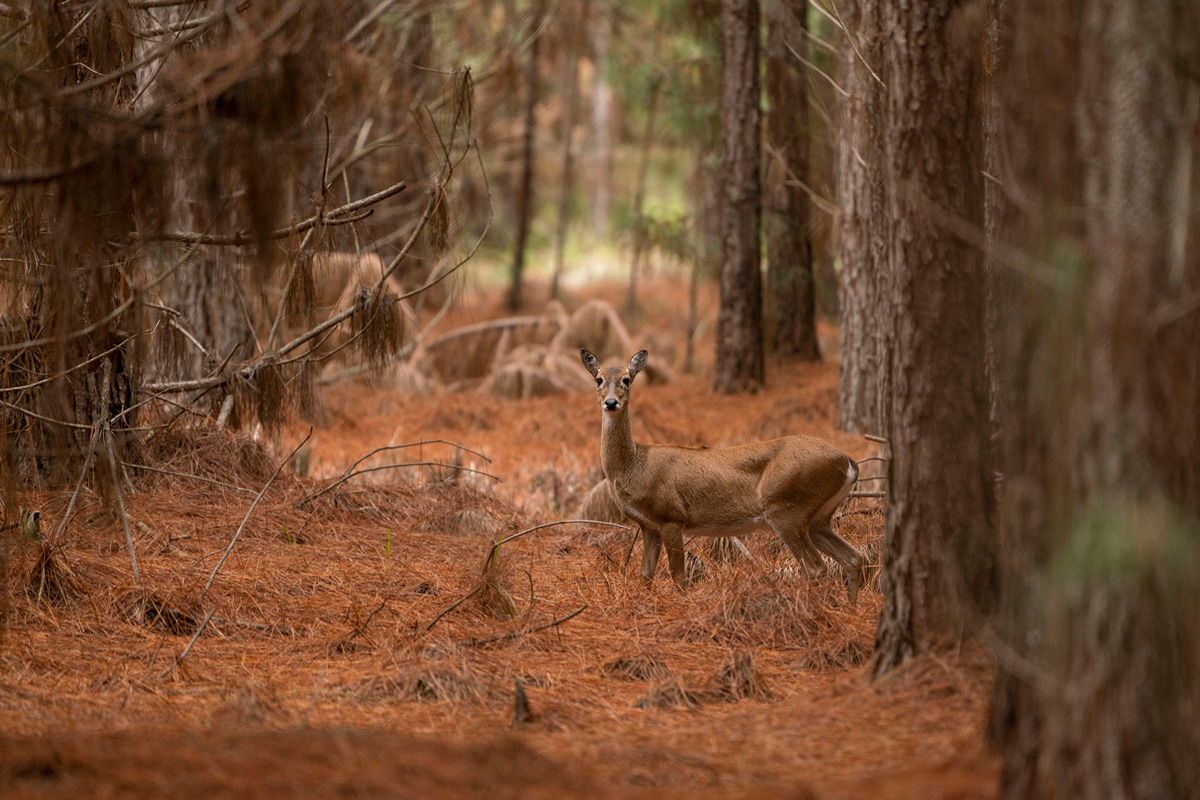
The pampas deer in Corrientes: A National Monument under threat
Until the beginning of the twentieth century, the pampas deer was one of the most abundant and characteristic mammals of the natural grasslands of northern and central Argentina. Chronicles of the 1800s describe them as numbering in the thousands in the vast Argentina pampas, but the dizzying transformation of their natural habitat into livestock and agricultural areas left the deer with almost no place to live.
Currently it is believed that there are some 2,000 individuals spread out among four isolated, remaining populations located in the provinces of Buenos Aires, San Luis, Corrientes, and Santa Fe. The Corrientes deer population is the largest in Argentina of the subspecies O. b. leucogaster , of which there are a few in Santa Fe, but none in the other two provinces. In recognition of its importance, the province declared the deer a Natural Monument of Corrientes, meaning both the animals and their habitat must be protected.
According to studies in Corrientes, the pampas deer’s distribution is limited to the grasslands between the sandy hills bordering the Iberá Wetlands and the Aguapey Marshes. The problem is that the forestry industry has identified this land for planting invasive pines, which are quickly encroaching on the deer’s habitat. In other cases, the presence of dogs or intensive livestock use can scare the deer away. Poaching is also a threat.
If these events continue in the same vein, they could lead to the deer’s disappearance from the area of Aguapey, which would not be the first time, as at the end of the last century a population near Concepción del Yaguareté Corá went extinct after pine and eucalyptus were planted.
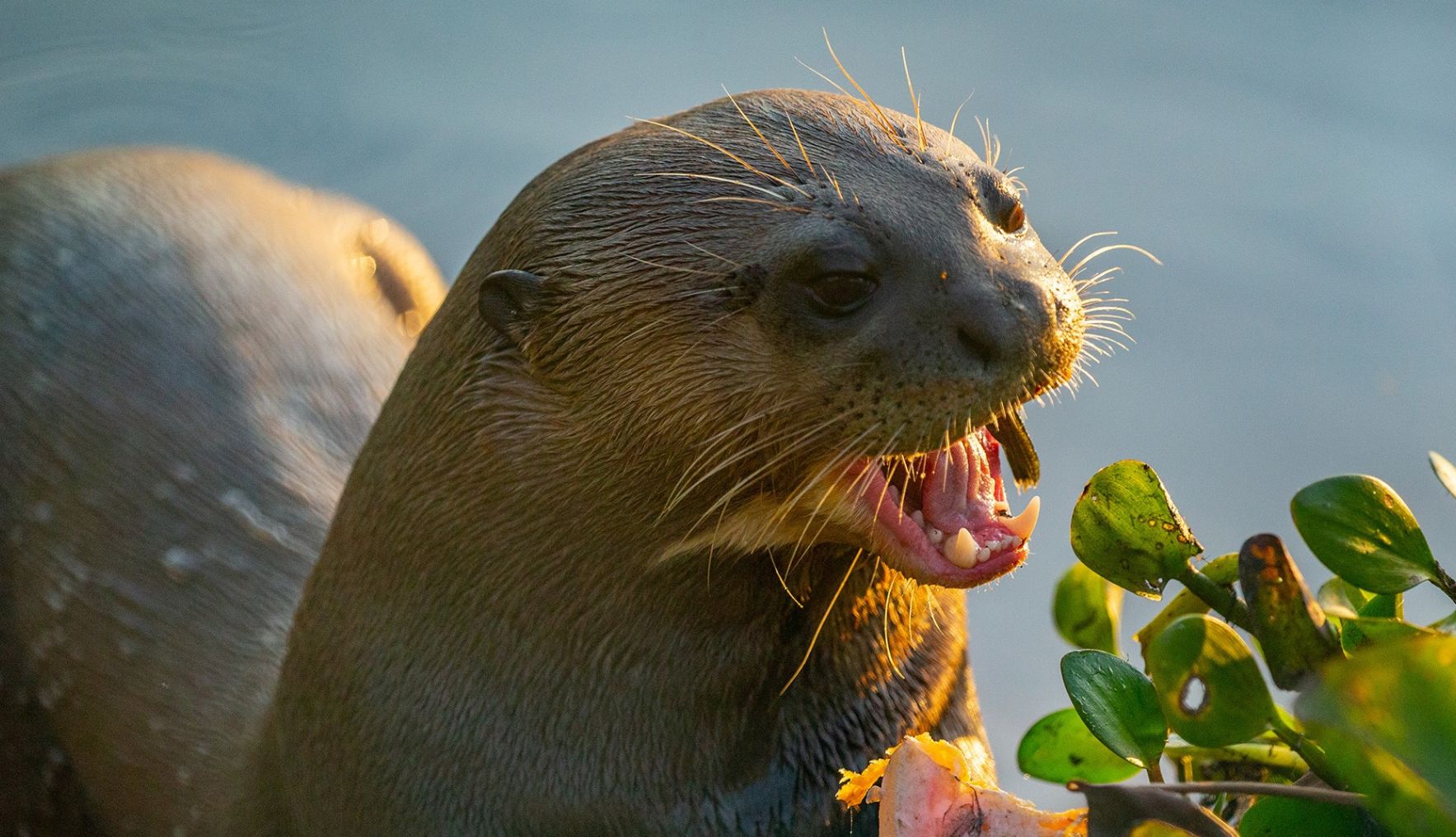
The giant river otter ( Pteronura brasiliensis ) is the largest otter species in the world—it can reach up to 1.8 meters in length. It was the apex predator of Corrientes’ aquatic ecosystems, where it fed on fish and caimans. Until the middle of the twentieth century, it could be seen in the Paraná River, near the provincial capital. Its presence has been confirmed in Iberá on the basis of a skull found on one of its islands. This spectacular mammal is extinct in Corrientes and Argentina.
The bulk of the giant river otter’s diet is made up of fish, although it may also eat crustaceans, mollusks, and land vertebrates such as young caimans, birds, and rodents. Due to its diet, this carnivore tends to be an apex predator in the food chains of the waterways where it lives, which makes it an essential species in these ecosystems.
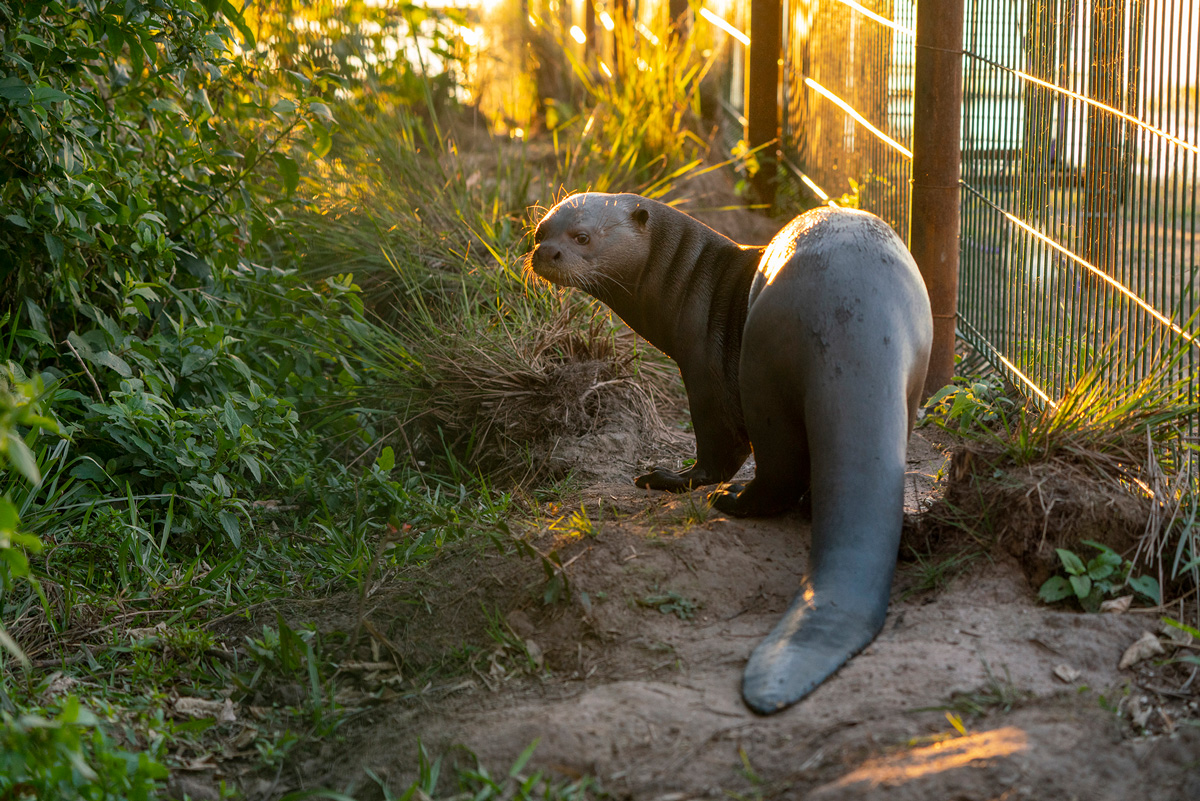
- In 2019 Alondra, the project’s first giant river otter arrived to Iberá, donated by the Budapest (Hungary) Zoo. After her quarantine period, Alondra was transported to a species-specific, pre-release corral on the shores of the Paraná Lagoon, on San Alonso Island in Iberá Park. The corral occupies a forest area with plant cover and an aquatic area.
- Towards the end of 2019 the male named Coco, donated by the Givskud Zoo (Norway) became part of the project. After successfully completing quarantine, he was taken to San Alonso Island where he shared the pre-release corral with Alondra. There they were offered live native fish, so they could practice their fishing techniques.
- In May of 2021 , after the two giant otters mated, Alondra gave birth to three pups, named Yvera, Ipegua, and Chiru . They were the first family group to live in the country since they became extinct in Argentina.
- Also in May of 2021 , Nanay, a male donated by the Parken de Eskilstuna Zoo (Sweden) also arrived. Post-quarantine in Corrientes, Nanay was transported to San Alonso, where he remains in a pre-release corral similar to that of Coco and Alondra, which combines land and aquatic environment, also on the shores of the Paraná Lake.
- In January, 2022 , Ariranha, a female from Doué-la-Fountaine (France) Bio park was added to the project. Post-quarantine in Corrientes, in March of that year she was added to Nanay’s pre-release corral. They seem to have bonded and we are hopeful that they will form a family group.
- In 2022 Alondra died of a bacterial lung infection, possibly due in part to the stress of being affected during the catastrophic wildfires that took place that year, in addition to the fact that at eleven years old, she was close to the life expectancy for females of that species. Despite the fact that her death left her family of Coco and the three pups without a reproducing female, the family is thriving, and another female has arrived from Spain to join them.
Population decline in South America
The giant river otter is considered endangered internationally, critically endangered in most countries where it is present, and considered to likely be extinct throughout Argentina according to the International Union for Conservation of Nature (IUCN). The Argentine Society for Mammal Study (SAREM for its name in Spanish) considers it to be in critical danger of extinction and finds that there are no records of a stable population or adults with steady territories in Argentina in the last thirty years. A combination of factors are probably to blame for the population’s decline, including habitat modification, pollution, poaching, and human-wildlife conflict.
Historically, the species’ distribution was expansive. It included Guyana, Venezuela, and Colombia to the north of Argentina and Uruguay and areas east of the Andes. Currently, most of the giant river otter populations are fragmented through the Pantanal, Brazilian Amazon and areas immediately adjacent, like French Guiana, Suriname, and Guyana. It is also present in Peru, Colombia, Ecuador, Paraguay, and Bolivia.
In Argentina the giant river otter lived in the basins of the Paraná and Uruguay Rivers, including the Iberá Wetlands. It could also be found in the Chaco Region near rivers such as the Bermejo and arrived as far west as Jujuy. The last records of the species date back more than twenty years in the basins of the Iguazú and Paraná Rivers and the Urugua-í stream in the Misiones Province with just one more recent sighting in the upper Iguazú River near the area called the Garganta del Diablo.

Historic presence of the giant river otter in Iberá
In the Province of Corrientes there are records—mainly along the Paraná and Uruguay Rivers—dating to 1993. There are also unconfirmed records in the Ituzaingó and Paso de los Libres Departments. In the Iberá Wetlands, which are connected with the Paraná River via the Corriente River and with the Uruguay River via the Miriñay river, the most well-known record of the species is through a skull found in the Fernández Lagoon. There are also reports of its presence in the area of the Rincón del Diablo, Capitá Miní, Yahaveré, Laguna Itatí Rincón, Laguna Misteriosa, Arroyo Sánchez (a few kilometers north of the town of Colonia Carlos Pellegrini), and in the Miriñay Marshes, west of the town of Tapebicuá.
The chance to recover the wetland’s largest aquatic predator
The absence of apex predators in Iberá, such as the jaguar and the giant river otter, along with their role as regulators of prey species, cause an imbalance in the ecosystem. In addition to the ecological effect that restoring an apex predator would have on the ecosystem, reintroducing the giant river otter also represents another important resource for the ecotourism-based economy of nature being developed in the region. Given the foregoing, and based on the recommended species to reintroduce in Iberá, we propose the project to reintroduce the giant river otter. Together with the jaguar, these two species respectively represent the apex predators of this ecosystem on water and land.
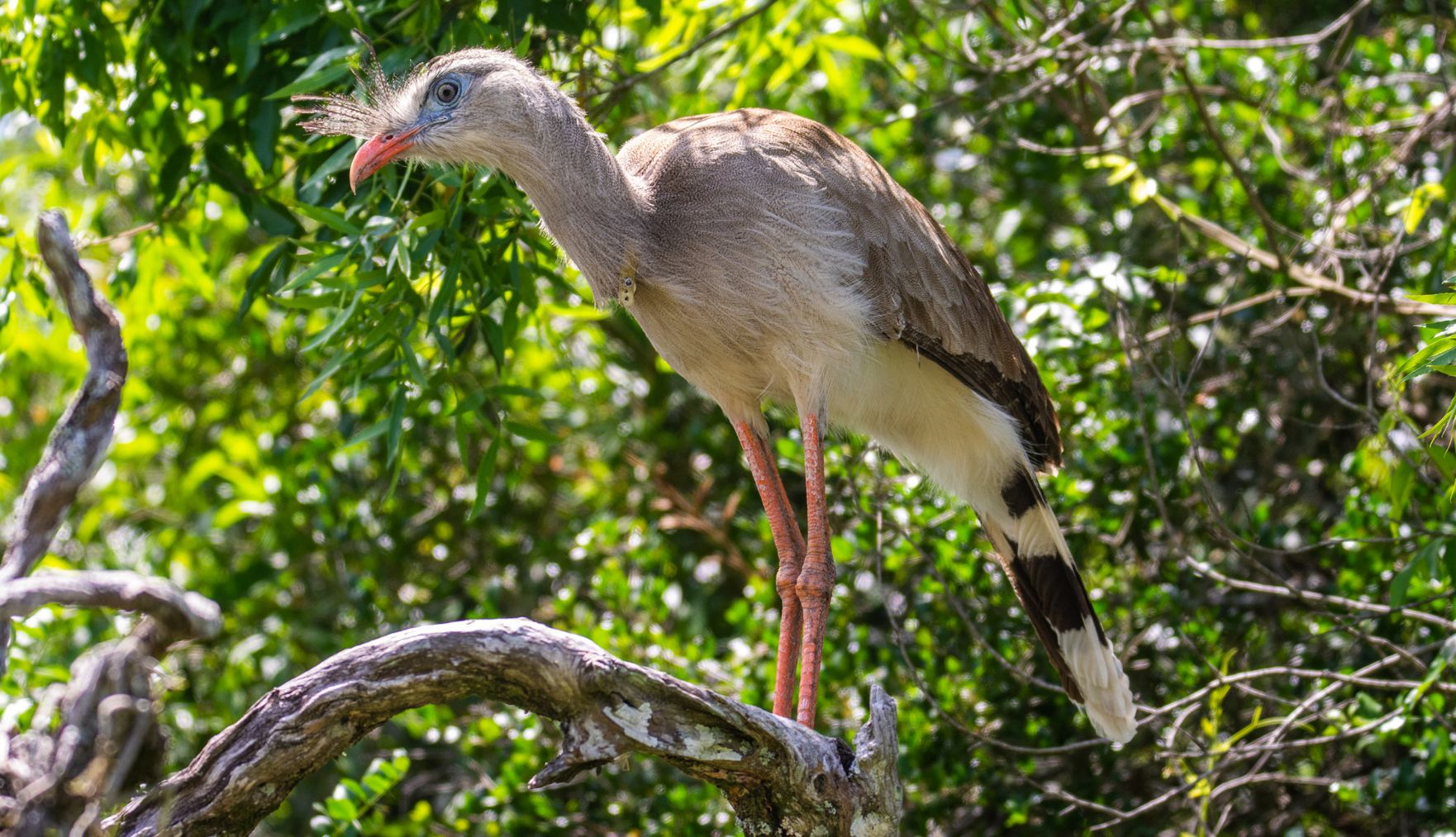
La chuña de patas rojas ( Seriema cristata ) es un ave principalmente caminadora de sectores abiertos de las regiones chaqueña y del espinal. Se alimenta de lombrices, arañas, insectos y pequeños vertebrados como lagartijas, ofidios y roedores, cuyas poblaciones controla.
La chuña de patas rojas desapareció de amplios sectores del centro y norte del país, incluyendo la provincia de Corrientes, donde sobrevive en el rincón sureste. En Rincón del Socorro (Parque Iberá) comenzó un proyecto experimental de reintroducción de la especie en el año 2018.
Los primeros tres individuos se encuentran en un jaulón de presuelta en la reserva Rincón del Socorro. Dos de ellos formaron pareja y han tenido eventos reproductivos, construyendo un nido e, incluso, haciendo puestas, aunque aún no han habido nacimientos. Se espera sumar más ejemplares para comenzar un núcleo inicial de la especie en ese lugar.
Si bien la especie aún se encuentra presente en Iberá, se pretende ayudar a reforzar dicha población con la reintroducción de poblaciones en zonas del Parque donde se encuentra ausente, como Rincón del Socorro.
El muitú ( Crax fasciolata ) es el ave galliforme más grande de Argentina. Habitó el noreste de nuestro país pero debido a la caza para obtener su carne y a la modificación de las selvas donde vivía desapareció de las provincias de Santa Fe, Corrientes y Misiones y sólo subsiste en bajas cantidades en sectores localizados del este de Chaco y Formosa. Es un gran consumidor y dispersor de frutos y semillas, ayudando en la regeneración de los bosques que habita. En la actualidad nos encontramos en la fase inicial del proyecto de reintroducción de la especie en el Parque Iberá.
La vuelta del muitú a Corrientes y al Iberá contribuye a mejorar el estado crítico de conservación de la especie, a recuperar su rol ecológico de regenerador de bosques en Iberá y a aportar al desarrollo local y consolidar a Iberá como un destino turístico de nivel internacional para la observación de fauna silvestre.
El retorno del muitú comenzó a gestarse en el año 2019 con el arribo de los primeros individuos del Refugio Bella Vista, ubicado en la localidad de Foz do Iguaçu, Brasil, y gestionado por la empresa Itaipú Binacional. Luego de atravesar los chequeos de cuarentena las aves fueron llevadas a Iberá, donde permanecieron durante un período de aclimatación en un aviario de presuelta. Este recinto de 12 metros de altura fue diseñado para albergar varios ejemplares y cuenta con árboles en su interior que ellos utilizan para dormir. Tras algunos meses de aclimatación, los individuos fueron liberados en la reserva.
Los muitús liberados llevan un transmisor VHF que permite monitorear sus movimientos y ubicaciones periódicamente. Tras una fase de exploración de su nuevo territorio, algunos individuos se desplazaron distancias considerables dentro de los parches de bosque. Dos parejas se consolidaron y comenzaron a construir nidos, tras lo cual pusieron huevos que no lograron eclosionar, probablemente por la inexperiencia de los padres.
Poco tiempo después ambas parejas volvieron a hacer puestas de huevos que eclosionaron en febrero de 2021 , cuando nacieron los tres primeros pichones del proyecto. Los pollos enseguida abandonaron el nido y permanecieron con sus padres durante varias semanas hasta que pudieron valerse por sí mismos.
En la temporada reproductiva 2021-2022 , los muitús habían realizado varias puestas de las que nacieron 13 pichones. Sin embargo, todos murieron, principalmente depredados por un gato montés.
En enero de 2022 , debido a los incendios que azotaron la provincia de Corrientes, en la Reserva Yerbalito se liberaron dos juveniles y dos parejas de adultos reproductores y se debieron evacuar a otros juveniles hacia el Centro Aguará. Pasado el fuego, se repararon los recintos de pre-suelta afectados y se trasladó a los muitús juveniles de regreso. Asimismo, se recapturaron las parejas. Lamentablemente, uno de los juveniles liberados por los incendios fue depredado.
En la temporada reproductiva 2022-2023 tres parejas ya han puesto media docena de huevos y han nacido tres pichones.
Se espera traer más individuos desde Brasil y Paraguay para consolidar un núcleo poblacional de la especie en Iberá.
Un ave amenazada en el país
El muitú se encuentra categorizado como Vulnerable a nivel global y como especie de Alta Prioridad de Conservación. En Argentina la especie se encuentra categorizada En Peligro debido a la drástica reducción de sus poblaciones y de las áreas de ocupación, sumado a la continuidad de las amenazas como la caza furtiva y la degradación o pérdida de hábitat por tala selectiva o alteraciones en los cursos de agua.
Se estima que el número de individuos maduros no supera los 2500. Las poblaciones más viables se encuentran en los bosques en galería del este de Formosa y de manera aislada y escasa en el extremo noreste de Chaco, en la región del Chaco Húmedo. Se encuentra extinto en el resto de su distribución histórica en las provincias de Corrientes, Misiones y Santa Fe.
Un rol ecológico importante
El muitú habita bosques y zonas aledañas, muchas veces en galería (asociados a riachos o ríos). Es una especie principalmente frugívora que se alimenta de frutos caídos, brotes, semillas e, incluso, de flores e invertebrados. Como otros crácidos, el muitú tiene la capacidad de dispersar las semillas de árboles con frutos carnosos, especialmente aquellos de gran tamaño que no pueden ser ingeridos por otras aves o mamíferos, y son predadoras de semillas duras por la acción digestiva de sus estómagos. Por estas razones se considera que cumple un rol ecológico clave en el mantenimiento de las funciones ecológicas y la biodiversidad de los bosques que habita, pudiendo intervenir en procesos de regeneración y restauración de los bosques.
Registros de la especie en Iberá
Existen evidencias de que la especie habitó el norte de la provincia de Corrientes. Los últimos registros datan de unos 30 a 40 años atrás y se ubican a lo largo del río Paraná, cerca de la localidad de Ituzaingó—en la zona de la represa Yacyretá— y en el norte de los Esteros del Iberá —cerca de Villa Olivari—. Si bien no se conocen registros más al sur de la provincia, es probable que la especie haya habitado otros sectores del Iberá y del Aguapey, que cuentan con ambientes similares de bosques secos estacionales neotropicales que son aptos para su desarrollo.
La oportunidad de recuperar a uno de los grandes dispersores de semillas en Iberá
La recuperación del muitú permitirá aumentar el número poblacional de una especie que se ha perdido en gran parte de su distribución original y recuperar su rol ecológico de regenerador de bosques. Además, su reintroducción representa un recurso importante más para la producción de naturaleza que se viene desarrollando en la región basada en el ecoturismo y el avistaje de fauna.
El primer sitio de liberación elegido es el Portal Yerbalito, al noroeste de la Reserva Iberá. Yerbalito alberga los mayores parches de bosque paranense de la región, además de pastizales, pajonales inundables y bañados. Estos bosques corresponden a la formación de Bosques Secos Estacionales que continúan hacia el este en la Mata Atlántica, hacia al oeste en los bosques del Chaco Húmedo y los valles fluviales del Paraná y Paraguay, y hacia el norte hacia los bosques del Paraguay Oriental que incluyen al Ñeembucú, que es una región de características similares a Iberá.

El guacamayo rojo ( Ara chloropterus ) es un ave de plumaje vistoso y colorido y de gran tamaño, que solía habitar las selvas del noreste de Argentina, incluyendo las selvas en galería del río Paraná y zonas aledañas del norte y centro del Parque Iberá. Su presencia en Corrientes fue citada por diferentes exploradores. Actualmente se encuentra extinta en toda la Argentina. Es un ave frugívora, por lo que juega un papel crucial en el funcionamiento de las selvas al dispersar frutos y semillas de gran tamaño de varias especies nativas de árboles, palmeras y enredaderas. Además, su belleza y su porte la convierten en un gran atractivo turístico.
A finales de 2022 existe un núcleo de guacamayos rojos liberados en el Portal Cambyertá y otro en la Reserva Yerbalito, ambos sitios en el norte del Parque Iberá, lo que representa la primera reintroducción de un ave extinta en Argentina. Estos animales provienen de cautiverio y han tenido que superar una fase intensiva de entrenamiento de vuelo, reconocimiento de frutos nativos y orientación y evasión de depredadores, como gatos monteses y zorros, antes de poder ser liberados.
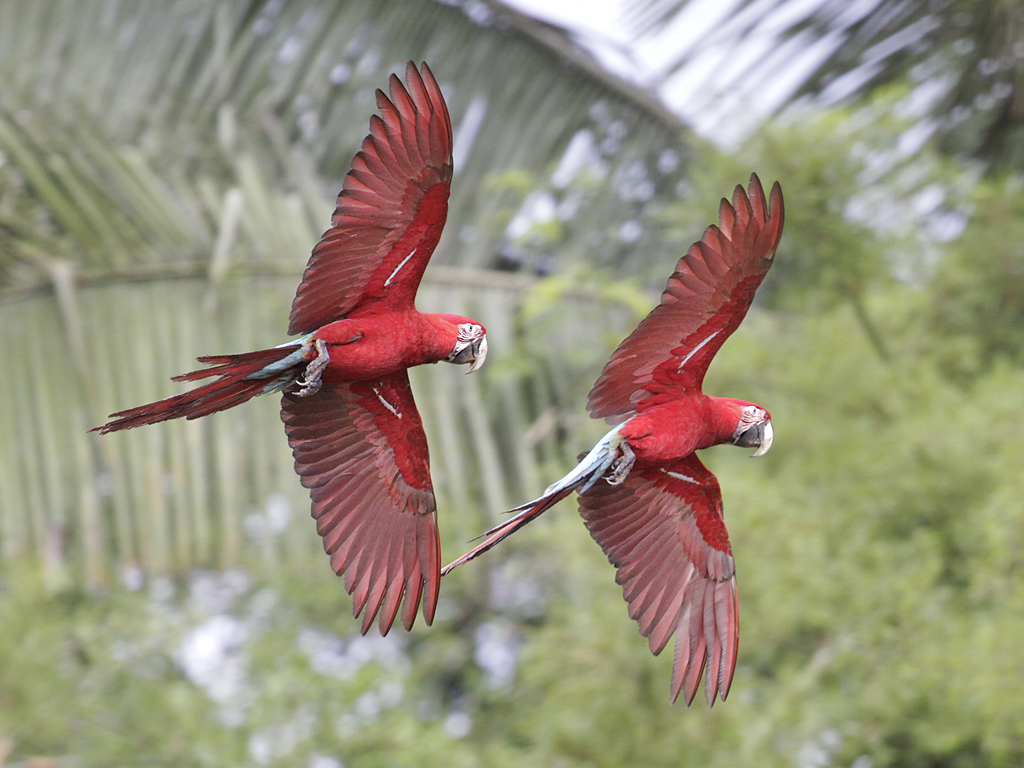
- En 2019 dos parejas establecidas en el Portal Cambyretá comenzaron a utilizar y defender cajas nido en diferentes parches de bosque, donde realizaron puestas que son los primeros eventos reproductivos registrados en el proyecto. Si bien los huevos fueron rotos días posteriores, probablemente aplastados por los padres inexpertos, se constató que eran fértiles. Resulta común en la especie que parejas primerizas no tengan éxito en sus primeros intentos.
- En mayo de 2020 llegaron los primeros cinco guacamayos a la Reserva Yerbalito para ser liberados, iniciando así un segundo núcleo de la especie en Iberá. Se trata de individuos criados por Temaikèn y Ecoparque para el proyecto.
- En septiembre de 2020 una de las parejas de Cambyretá depositó tres huevos que eclosionaron un mes después. Si bien suelen depositar esa cantidad de huevos, los guacamayos rojos raramente logran sacar adelante más de un pichón. En este caso, lograron sacar adelante a dos. Tiempo después se constató que se trataba de dos hembras, que fueron alimentadas por sus padres con la ayuda del personal de Rewilding Argentina, quien asistió a los padres primerizos durante los primeros meses.
- A mediados de enero de 2021 las pichonas comenzaron a realizar sus primeras incursiones de vuelo. Con 91 días de vida, la hermana más grande salió del nido y realizó su primer intento de vuelo de unos 500 metros; a los días siguientes comenzó a pasar las noches fuera del nido y voló en compañía de su padre varios kilómetros hacia un monte de la zona. Cinco días más tarde la hermana menor se sumó a los aprendizajes de vuelo y junto a su padre volaron varios kilómetros en cercanías del monte donde nacieron. Se espera que los padres alimenten a los pichones durante un tiempo más hasta que logren encontrar frutos por sí mismos y se independicen. Ambas fueron provistas de collares VHF que permiten monitorearlas y conocer sus movimientos y ubicaciones diariamente.
- A principios de octubre de 2021 tres parejas pusieron varios huevos en Cambyretá, de los cuales nacieron tres y sobrevivieron dos pichones. Uno de estos pichones no estaba siendo bien alimentado por sus padres por lo que debió ser retirado del nido y criado a mano y se lo fue colocando progresivamente junto al otro pichón para que los padres lo adopten y lo críen como propio (esta técnica suele realizarse en otros proyectos y ha resultado efectiva). Hacia finales de diciembre hubo más puestas de huevos. Sumando todas las puestas de esta temporada, totalizaron una docena de huevos, seis nacimientos y cuatro pichones que pasaron las 48 horas de vida.
- Entre noviembre y diciembre de 2021 en Yerbalito se formó una pareja y se instaló una caja nido.
- En enero de 2022 se iniciaron diferentes focos de incendio que afectaron gran parte del Parque Iberá, incluidos los montes de Cambyretá donde estaban las parejas reproductoras con crías. Cuatro pichones debieron ser evacuados y llevados al Centro Aguará, dos de ellos con sus padres. Los dos más pequeños tenían los pulmones afectados por el humo y murieron después de un mes y medio de tratamiento. Los padres volvieron a la libertad luego de casi dos meses. Los otros dos pichones lograron sobrevivir y en el Centro se los crió con marionetas para evitar el contacto con humanos, aprendieron a volar mediante entrenamiento en un túnel de vuelo, a reconocer nativas y a reconocer y escapar de depredadores mediante entrenamiento aversivo antipredatorio. Luego de ocho meses de recuperación, ambos regresaron al parque para ser liberados. Actualmente vuelan en libertad pero siguen siendo suplementados.
- Los incendios del verano de 2022 también afectaron los montes de Yerbalito y quemaron parte de un jaulón de pre-suelta de los guacamayos, el cual debió ser reparado. A lo largo del año 2022 , se liberaron varios guacamayos en esta área y, al día de hoy, ya hay 11 volando libremente.
- En octubre de 2022 , dos hembras se sumaron al plantel de guacamayos de Cambyretá, provenientes de Ecoparque de Buenos Aires. En la temporada reproductiva actual hay tres parejas y se espera que pronto tengan pichones.

Los guacamayos: Habitantes históricos del Iberá
Debido a su vistoso plumaje, los guacamayos han sido perseguidos por los humanos desde tiempos históricos. En Corrientes habitaban al menos dos especies de estas grandes aves: el guacamayo violáceo ( Anodorhynchus glaucus ) o “guaá-hovy’’, que se extinguió por completo en el mundo, y el guacamayo rojo ( Ara chloropterus ) o “guaá-pytá’’, que desapareció de la provincia y del resto de Argentina.
Los guacamayos habitaron los campos con isletas de selva, palmares y las selvas de galería de Corrientes y otras provincias como Formosa, Chaco, Santa Fe, Misiones y Entre Ríos. En la actualidad, las poblaciones de guacamayo rojo más cercanas a Corrientes se encuentran a más de 300 kilómetros hacia el norte, en los estados de Mato Grosso do Sul y Paraná (Brasil), en el extremo norte de Paraguay y en el sudeste de Bolivia, en zonas que no se hallan protegidas adecuadamente.
A escala global, el guacamayo rojo está catalogado en la lista roja de UICN (Unión Internacional para la Conservación de la Naturaleza) como una especie de Preocupación Menor. En Argentina está catalogada formalmente como una especie Críticamente Amenazada, aunque no existen registros recientes y se la considera extinta.
Registros históricos que muestran la existencia y posterior desaparición del guacamayo rojo en el norte argentino
Unas de las pocas menciones acerca del guacamayo rojo en nuestro país fueron las de Alcides D´Orbigny (1945), quien en 1827 lo capturó en sus viajes por Corrientes, más exactamente durante una navegación por el río Paraná a la altura de Ita Ibaté. Antes, Félix de Azara (1809) contaba cómo entre 1781 y 1801 la especie habitaba los alrededores de la ciudad de Asunción y todo el sur de Paraguay en Ñeembucú, mencionando al norte de Argentina hasta los 28 grados de latitud como su área de distribución. También Sánchez Labrador menciona la presencia en el sur del Paraguay.
En 1881, el Comandante Fontana lo registra en tierras chaqueñas, como también lo hace Enrique Lynch Arribalzaga en su publicación sobre “Las aves del Chaco” de 1920. Sin embargo, en 1895, Eduardo Holmberg comenta “se trae en cantidad del Paraguay; recuerdo haberlo visto en el Chaco; pero González trajo dos del Pilcomayo”. En Junio de 1891, Bertoni (1901) comentó la captura de un ejemplar en el alto Paraná del siguiente modo: “Lo maté cuando estaba comiendo frutas de Esenbeckia guatambu , con tres individuos más del mismo tamaño (…) A menudo se ve a esta especie cruzar el río Paraná; parece que duerme en la costa argentina para pasar a comer todos los días a la costa paraguaya”. Esto último corresponde a algún punto en la costa argentina en el noroeste de Misiones. Existen también registros de 1883 para Santa Ana, departamento Candelaria, provincia de Misiones, hasta que tal vez en 1917 fue cazado uno de los últimos individuos silvestres en Argentina, en la provincia de Formosa (Chebez, 2008).
El panorama que muestran todos estos relatos históricos es el de una especie que vivía perfectamente en los bosques de la región, ya que se mencionan como árboles para alimentación o nidificación especies muy abundantes como el timbó y la palmera mbocayá, entre otros. Pero, asimismo, resulta notable que la mayoría de los comentarios de los naturalistas son sobre el uso de los guacamayos para alimento y para mascota u ofrendas. Considerando esto en coincidencia con el auge del poblamiento humano en la región entre Asunción y Corrientes, y la gran actividad ganadera que se desarrollaba en el 1700 y 1800, resulta sencillo entender por qué esta especie resultó fuertemente afectada hasta su extinción.
Para tener una idea del impacto de las actividades humanas en la región noroeste de Corrientes se puede considerar que las cabezas de ganado de aquella época equivalen casi al total de cabezas de ganado que se encuentran hoy en día en la provincia. Sumado a esto, ha sido mencionado el impacto negativo de las guerras y guerrillas que asolaron la región norte de Corrientes durante todos esos años.
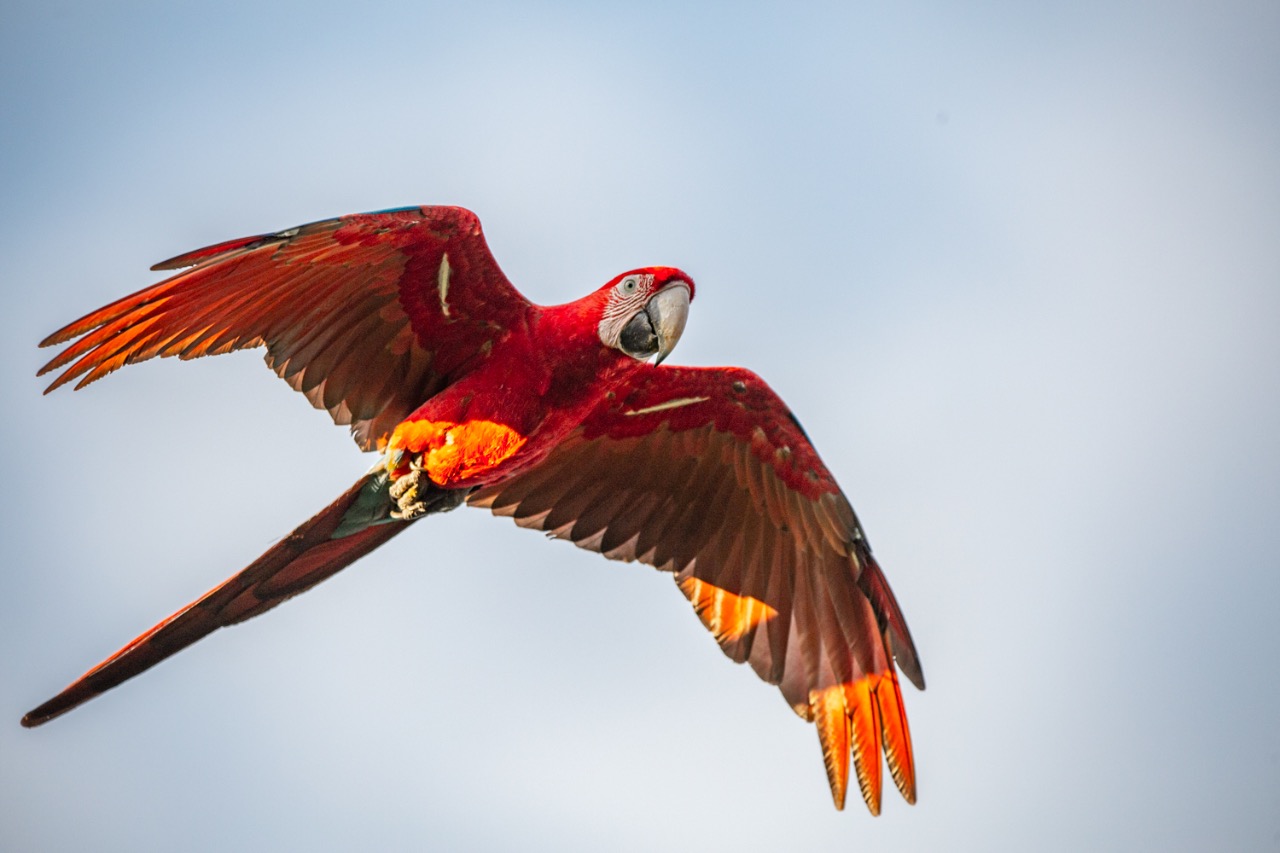
La oportunidad de recuperar a un ``grande``
La Reserva Natural Iberá representa una oportunidad casi única para recuperar la presencia de esta auténtica “joya del aire” en nuestro país. En la actualidad, la reserva cuenta con una gran extensión de hábitat protegido con suficientes islas de bosque que permitirían albergar una población estable de guacamayo rojo tanto en el parque provincial de propiedad pública como en las reservas bajo propiedad privada. Además, Iberá cuenta con un conjunto de instituciones y expertos en la restauración de poblaciones extintas y amenazadas, como el oso hormiguero gigante, el venado de las pampas y el pecarí de collar.
Las razones para recuperar al guacamayo rojo incluyen cumplir un rol clave en el funcionamiento de las islas de bosques al controlar y dispersar los frutos y semillas de mayor tamaño de los árboles nativos; implicar la recuperación de una especie extinta en Argentina y la conservación de una población silvestre al sur de la distribución geográfica global de la especie; representar un atractivo turístico de primer orden por ser una de las aves más espectaculares de América, contribuyendo al desarrollo de las comunidades locales; recuperar un valor cultural de los correntinos que permanece presente en expresiones artísticas y relatos históricos, como en las pinturas de la cúpula del icónico teatro Vera en Corrientes.
Del cautiverio a la libertad en el Iberá
Nuestro proyecto se nutre de guacamayos rojos cautivos provenientes de diferentes zoos y centros de cría de todo el país. Estos animales se trasladan hacia el Centro de Reasilvestramiento Aguará en la provincia de Corrientes, donde se consolidan los grupos de individuos y se realizan todos los chequeos sanitarios necesarios para descartar enfermedades que puedan ser incorporadas en el ambiente silvestre tras su liberación. Una vez finalizados los chequeos sanitarios, los guacamayos comienzan con un entrenamiento intensivo que permite desarrollar sus habilidades en el vuelo y ejercitar la musculatura alar. Desde que arriban al centro, también reciben frutos nativos para que puedan reconocerlos como alimento cuando sean libres.
Antes de su traslado al lugar de liberación se les coloca un pequeño transmisor de radio que permite el seguimiento de cada individuo en el campo. Posteriormente, son trasladados al sector de la reserva conocido como Cambyretá, portal de acceso norte del Parque Iberá, ubicado al sur de Ituzaingó y Villa Olivari. Allí son alojados en pequeños jaulones móviles ubicados en el interior de diferentes parches de bosque para que puedan aclimatarse al nuevo entorno durante un par de días. Dichos jaulones son abiertos progresivamente, colocando bandejas de alimentación cercanas para que los animales comiencen a explorar el entorno. Las mismas son alejadas cada vez más del jaulón de liberación para fomentar el aumento en la distancia de vuelo y exploración de las aves, hasta que el proceso de independencia es total. Luego de su liberación y según amplían su área de acción, los guacamayos son monitoreados por personal del proyecto para comprobar su adaptación al ambiente natural, su reproducción y su supervivencia a largo plazo. También se colocan cajas nido artificiales en distintos árboles altos de los bosques para permitir que las parejas las utilicen para nidificar hasta que aprendan a encontrar oquedades naturales en los árboles y palmeras de la zona.
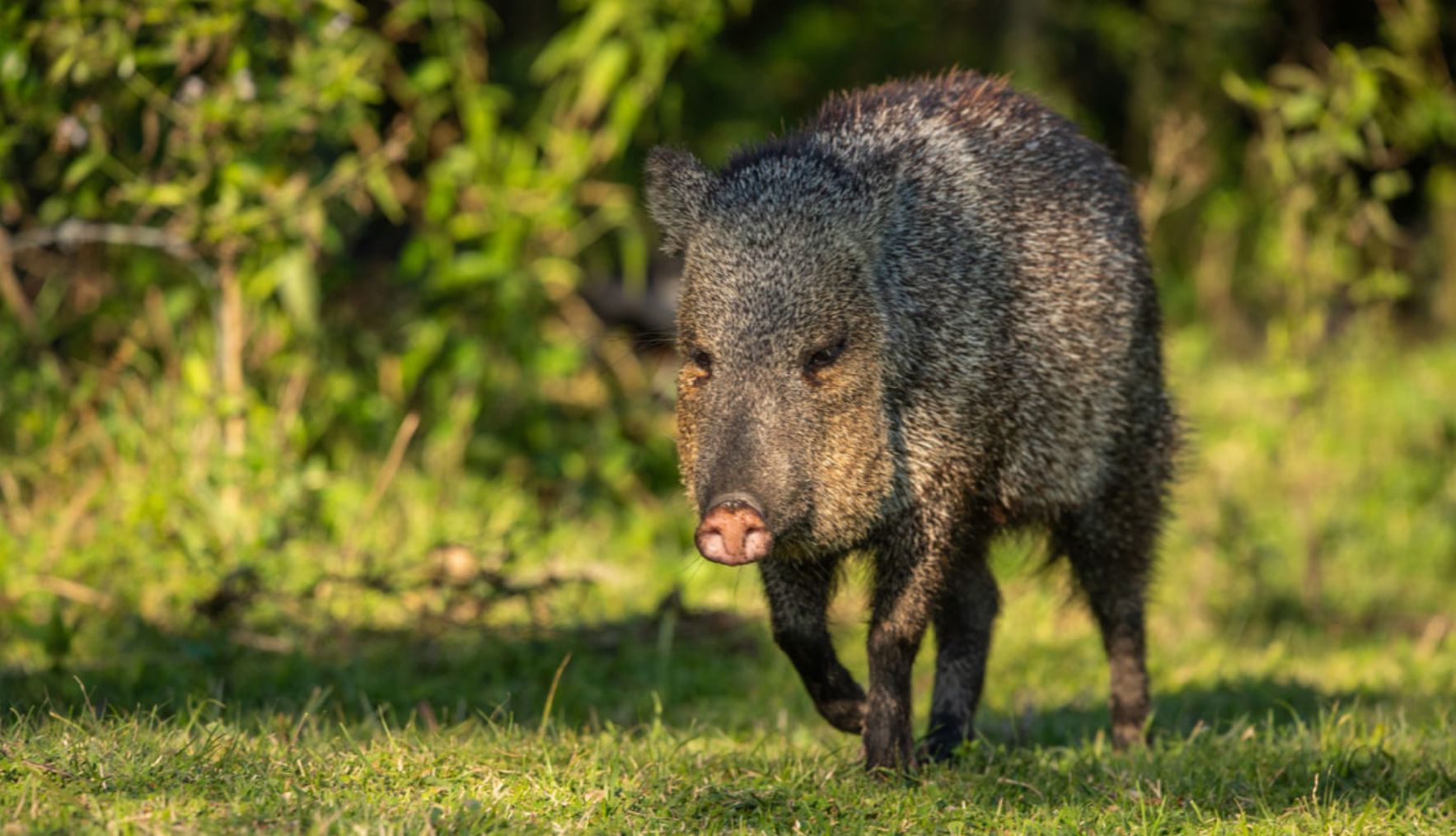
El pecarí de collar ( Pecari tajacu ) es un pariente lejano de los cerdos y cumple un rol importante en la dispersión de frutos y semillas de plantas nativas. Se extinguió en amplios sectores del centro y norte del país, incluyendo la provincia de Corrientes, en donde hoy ya existen varias poblaciones reintroducidas las reservas Rincón del Socorro, San Alonso, Carambola y San Nicolás, dentro del Parque Iberá.
Al año 2022 , pecaríes provenientes de cautiverio donados por instituciones de otras provincias, como Buenos Aires, Tucumán, Salta, La Rioja, Córdoba y Mendoza, han sido liberados en las Reservas Rincón del Socorro desde 2015 y en San Alonso desde 2017 , conformando poblaciones autosustentables. Dos núcleos fueron iniciados en 2018 en las reservas San Nicolás y Carambola y otro en Yerbalito en 2021 . Actualmente, se continúa con la liberación de más individuos y se registran nuevas crías todos los años.

Un mamífero adaptable extinto en el Iberá
El pecarí de collar o morito es un tayassuido (la familia a la que pertenecen los cerdos silvestres o “jabalíes” de América) de amplia distribución que se encuentra desde el sur de Estados Unidos hasta el centro de Argentina. Se trata de un mamífero ampliamente adaptable que habita desiertos, bosques secos y selvas húmedas desde el nivel del mar hasta los 2400 metros. Aunque también habita pastizales abiertos, parece necesitar una cierta cobertura arbórea o arbustiva que le sirva de refugio y de fuente de alimento. Su dieta es bastante amplia y está compuesta por frutos, hojas, tubérculos y, en menor medida, de otros animales.
El pecarí de collar ha mostrado una importante capacidad de adaptación a la presencia de humanos y a la transformación moderada de sus ecosistemas naturales. Por ejemplo, en Estados Unidos no resulta raro verlos en el interior de las ciudades y áreas periurbanas. Como los otros pecaríes, el de collar es un animal sociable que vive en grupos cuyo tamaño varía desde los dos a los 30 ejemplares. Sus áreas de campeo varían entre 24 y 800 hectáreas.
La especie se considera como extinta en Corrientes, Entre Ríos, buena parte de Santa Fe, sur de Córdoba y el sudeste de Santiago del Estero, mientras que todavía es relativamente abundante en algunos sectores de Santa Fe, el centro norte de Misiones, Chaco, Formosa, Tucumán, norte de Santiago del Estero, este de Jujuy, Salta, sudeste de Catamarca, sur de La Rioja, este de San Juan, oeste y norte de Córdoba, San Luis y noreste de Mendoza.
Dentro de la región del Iberá se cita su presencia histórica en las isletas de selva de Puerto Valle (al noreste de la Reserva Natural Iberá) de donde desapareció, principalmente por la cacería y los desmontes, a mediados del siglo XX. El explorador francés D’Orbigny señaló que la especie era frecuente en los bosques de la provincia de Corrientes hacia 1820.
En resumen, el pecarí de collar es un mamífero altamente adaptable que vive en grupos de tamaño variable, que requieren territorios de decenas a unos pocos cientos de hectáreas en ecosistemas con cierta cobertura boscosa. En Argentina todavía se encuentran poblaciones abundantes y saludables de esta especie, aunque también ha desaparecido de varias regiones, incluyendo la provincia de Corrientes.
El venado de las Pampas ( Ozotoceros bezoarticus ) es un herbívoro que supo ser muy abundante en los pastizales argentinos. Debido a la caza, la destrucción del ambiente donde habitaba y la introducción de enfermedades con el ganado doméstico sus números cayeron en forma alarmante. En la actualidad subsisten solo cuatro poblaciones aisladas con alrededor de 2000 individuos en todo el país. Corrientes todavía cuenta con una de estas poblaciones dentro de campos privados situados en cercanías de los bañados del Aguapey.
- Desde el año 2006 realizamos censos periódicos para estimar la distribución precisa y la abundancia de la especie en la región del Aguapey. De manera simultánea se han desarrollado actividades de promoción y sensibilización de la necesidad de conservar la especie, entre las que se incluyen conversaciones y reuniones con los dueños y el personal de estancias, diseño y difusión de material audiovisual educativo, e incluso la realización de una obra de títeres.
- Uno de los grandes hitos del proyecto fue la compra por parte de nuestra fundación de un campo de 535 hectáreas para crear la reserva Guasutí Ñu (“campo de venados” en lengua guaraní), siendo ésta la primera área protegida dedicada fundamentalmente a la conservación del venado en la región del Aguapey.
- En 2009 un equipo de veterinarios y biólogos de Argentina y Brasil realizó la primera captura y translocación de venados de las pampas en Corrientes. Ésta sirvió para restaurar una población de la especie en la isla San Alonso, que cuenta con 10 mil hectáreas de pastizales de primera calidad, situada dentro del Parque Iberá. Este grupo de venados constituye ya la quinta población de la especie en el país y multiplicaría por cuatro el área de reserva estricta dedicada a su conservación en Argentina.
- En 2015 se inició el proceso de establecimiento de una segunda población en la reserva Rincón del Socorro, junto a la localidad de Colonia Carlos Pellegrini.
- Al 2022 , la población de la isla San Alonso, fundada con 22 animales translocados desde Aguapey, cuenta con unos 120 a 150 individuos. Además, un segundo núcleo fue también iniciado en la reserva Rincón del Socorro y ya es considerado autosustentable. En ambos sitios se registran varias crías nuevas cada año.
Los venados reintroducidos en Iberá constituyen hoy la quinta población del país, la tercera más numerosa y la más grande resguardada en un área protegida.
El venado de las pampas en Corrientes: un Monumento Natural, amenazado
Hasta principios del siglo XX, el venado de las pampas era uno de los mamíferos más abundantes y característicos de los pastizales naturales del norte y centro de Argentina. Las crónicas del 1800 describen que los venados se contaban por miles en las extensas pampas argentinas, pero el vertiginoso proceso de transformación de su hábitat natural en campos ganaderos y de cultivo lo dejó prácticamente sin lugar donde vivir.
En la actualidad se considera que quedan unos 2000 ejemplares repartidos en cuatro poblaciones relictuales y aisladas, situadas en las provincias de Buenos Aires, San Luis, Corrientes y Santa Fe. La población de venados de Corrientes es la mayor del todo el país para la subespecie O. b. leucogaster , que cuenta con unos pocos ejemplares en Santa Fe, pero no en las otras dos provincias. Como reconocimiento de su importancia, Corrientes declaró al venado como Monumento Natural correntino, lo que implica tanto la protección de los animales como de su hábitat.
Estudios sobre los venados de las pampas en la provincia de Corrientes muestran una distribución limitada a las áreas de pastizales ubicadas entre las lomadas arenosas que bordean a los Esteros de Iberá y los bañados del Aguapey. El problema es que esta zona ha sido elegida por la industria forestal como área prioritaria para el establecimiento de plantaciones de pinos exóticos, lo que está haciendo desaparecer el hábitat de los venados muy rápidamente. En otros casos, la presencia de perros y una alta carga ganadera pueden espantar a los venados de un área. A esto se añaden algunos casos de cacería furtiva que todavía se dan en la zona.
Si estos procesos continúan avanzando de la manera desmesurada en que lo han hecho en estos últimos años podrían llevar a la desaparición de la especie en la zona del Aguapey. No sería la primera vez que algo así sucede en la provincia: a finales del siglo pasado se extinguió una población que habitaba los alrededores de Concepción del Yaguareté Corá por causa de la llegada de plantaciones de pino y eucalipto.
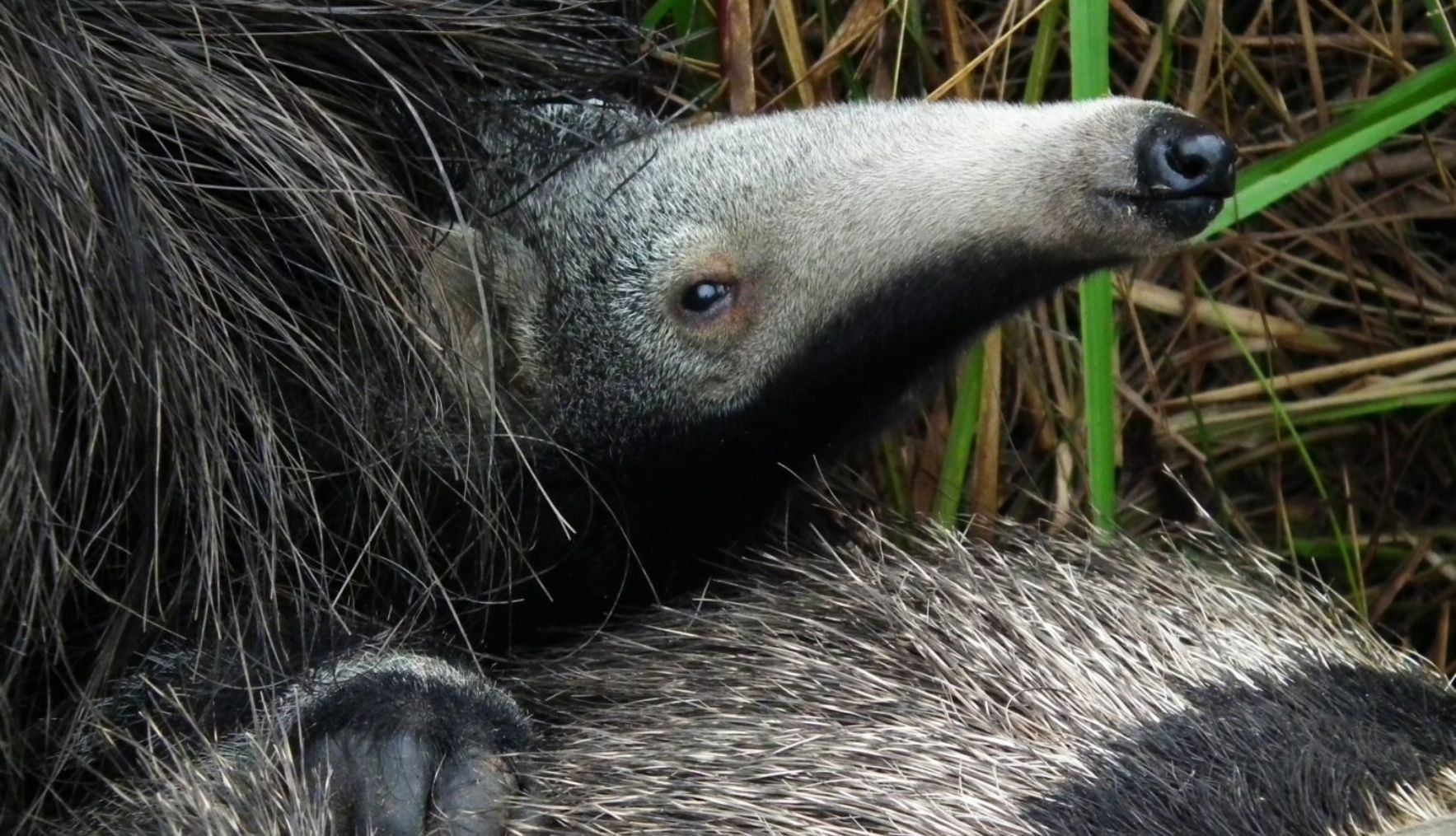
El oso hormiguero o yurumí ( Myrmecophaga tridactyla ) posee un hocico alargado desprovisto de dientes con una extensa lengua con la cual se alimenta de hormigas y termitas. Estos mamíferos, que se extinguieron en Corrientes a mediados del siglo XX, pueden medir hasta 2 metros de longitud y pesar alrededor de 50 kilogramos.
Fue la primera especie con la que comenzamos a trabajar en el programa de rewilding en Iberá. En 2007 se liberó la primera pareja de osos hormigueros en la reserva Rincón del Socorro, donde ya existe una numerosa población autosustentable. Luego de años de trabajo, además de esta población se cuenta con otro núcleo iniciado en 2013 en Isla San Alonso, que también es considerado autosustentable, un núcleo en la Estancia Don Pablo en 2016 , esta última afuera del Parque Iberá, dos núcleos iniciados en 2018 en el sector Carambola y San Nicolás y uno en Yerbalito en 2022 .
La mayor parte de los animales liberados son crías huérfanas rescatadas en otras provincias del norte del país, cuyas madres fueron víctimas de la caza furtiva. Desde el inicio del proyecto en 2007 se han rescatado más de 130 osos hormigueros huérfanos de distintas provincias del norte argentino. Actualmente, las poblaciones de Iberá en conjunto alcanzarían alrededor de 200 individuos, e incluso se registraron osos que se han dispersado y establecido a varios kilómetros de distancia de las reservas.
La nutria gigante ( Pteronura brasiliensis ), o lobo gargantilla, es la especie de nutria más grande del mundo, pudiendo alcanzar una longitud de hasta 1,8 metros. Era un depredador tope de los ecosistemas acuáticos de Corrientes, donde se alimentaba de peces y yacarés. Hasta mediados del siglo XX era posible verla en el río Paraná, cerca de la capital de la provincia, y se ha comprobado su presencia en Iberá en base a un cráneo hallado en una de sus islas. Este espectacular mamífero está extinto en Corrientes y en toda la Argentina.
La mayor parte de la dieta de la nutria gigante está compuesta por peces, aunque puede incluir crustáceos, moluscos y vertebrados terrestres como yacarés sub-adultos, aves o roedores. Por sus características alimenticias, este carnívoro suele ser predador tope en las cadenas tróficas de los cursos de agua donde habita, siendo una especie clave en dichos ecosistemas.
- En 2019 arribó a Iberá Alondra, la primera hembra de nutria gigante incorporada al proyecto, donada por el Zoológico de Budapest, Hungría. Tras atravesar la fase de cuarentena en las instalaciones de San Cayetano, Alondra fue trasladada a un corral de pre-suelta a orillas de la laguna Paraná, en la isla San Alonso del Parque Iberá, diseñado especialmente para alojar individuos de la especie. El corral alberga una porción elevada de tierra con árboles y vegetación y una porción de agua.
- A finales de 2019 se incorporó al proyecto Coco, un macho donado por el Zoológico Givskud, Dinamarca. Tras atravesar exitosamente la fase de cuarentena, a principios de 2020 fue llevado a la isla San Alonso, donde compartió el corral de pre-suelta con Alondra. Allí, ambos recibieron diariamente peces nativos de la zona, que fueron ofrecidos vivos con el fin que puedan practicar sus técnicas de pesca.
- En mayo de 2021, producto de la unión de Coco y Alondra, nacieron tres cachorros de nutria gigante, llamados Yvera, Ipegua y Chiru . Ellos conformaron el primer grupo familiar de la especie luego de su extinción en Argentina. Se espera que la familia sea liberada pronto en el Parque Iberá.
- En ese mismo mes de 2021 arribó al proyecto Nanay, un macho donado por el Zoológico Parken de Eskilstuna, Suecia. Luego de atravesar el correspondiente periodo de cuarentena en Corrientes, Nanay viajó a la isla San Alonso, donde permanece en un corral de pre-suelta similar al de Coco y Alondra, ocupando una porción terrestre y una acuática, también a orillas de la laguna Paraná.
- En enero de 2022 se sumó al proyecto Ariranha, una hembra de nutria gigante proveniente de Biopark Fontaine de Doué, Francia. Tras atravesar exitosamente el periodo de cuarentena en Corrientes, en marzo de 2022 Ariranha se unió al corral de pre-suelta donde se encuentra el macho Nanay. El encuentro entre ambos resultó positivo y se espera que formen un núcleo familiar.
- En 2022 se la encuentra muerta a Alondra. La causante de su muerte fue una bacteria que afectó sus pulmones. No se descarta que el estrés sufrido por la evacuación durante los incendios catastróficos de ese año, sumado a su edad de 11 años que es la expectativa de vida aproximada para las hembras de esta especie, hayan influido en su deceso. A pesar de que la ausencia de Alondra dejó a la familia (Coco y sus tres cachorros) sin una hembra reproductora, la familia se encuentra en perfectas condiciones y se espera la llegada de otras hembras provenientes de Madrid y Estados Unidos.
El retroceso de sus poblaciones en Sudamérica
La nutria gigante está catalogada como amenazada a nivel internacional, críticamente amenazada en la mayoría de los países donde se distribuye, e incluso considerada probablemente extinta en toda Argentina según la UICN (Unión Internacional para la Conservación de la Naturaleza). La Sociedad Argentina para el Estudio de los Mamíferos (SAREM) la considera En Peligro Crítico de Extinción y menciona que no hay registros de una población estable o individuos adultos con territorios estables en la Argentina en al menos los últimos 30 años. Es probable que una combinación de factores incluyendo la modificación del hábitat, la contaminación, la caza furtiva y los conflictos con humanos hayan provocado la retracción de sus poblaciones en Argentina.
En el pasado, la distribución de la especie era muy amplia: abarcaba desde Guyana, Venezuela y Colombia hasta el norte de Argentina y Uruguay y zonas orientales de los Andes. Actualmente, la mayor parte de las poblaciones de nutria gigante se distribuyen de manera discontinua en el Pantanal, Amazonas brasileño y las regiones inmediatamente adyacentes a esta área, Guyana francesa, Surinam y Guayana. La especie también está presente en Perú, Colombia, Ecuador, Paraguay y Bolivia.
En Argentina la nutria gigante habitaba las cuencas de los ríos Paraná y Uruguay, e incluía los Esteros del Iberá. También penetraba en la región Chaqueña a través de ríos como el Bermejo y llegaba por el oeste incluso hasta Jujuy. Los últimos registros de la especie en el país datan de más de dos décadas en las cuencas de los ríos Iguazú, Paraná y el arroyo Urugua-í en la provincia de Misiones, con un único avistamiento ocasional reciente en el año 2010 en el río Iguazú superior, en la zona de Garganta del Diablo.
Presencia histórica de la nutria gigante en Iberá
En la provincia de Corrientes existen citas principalmente a lo largo de los ríos Paraná (incluso hasta el año 1993) y Uruguay. También existen registros no confirmados en los departamentos de Ituzaingó y Paso de los Libres. En los Esteros del Iberá, que se conectan con el río Paraná a través del río Corriente y con el río Uruguay a través del río Miriñay, la cita más conocida de la especie es un cráneo hallado en la Laguna Fernández. Existen también relatos de la presencia de la especie en la zona de Rincón del Diablo, Capitá Miní, Yahaveré, laguna Itatí Rincón, laguna Misteriosa, arroyo Sánchez (unos kilómetros al norte de la localidad de Colonia Carlos Pellegrini) y en los esteros del Miriñay, al oeste de la localidad de Tapebicuá.
La oportunidad de recuperar el mayor depredador acuático de los esteros
La ausencia de predadores tope en el Iberá, tales como el yaguareté y la nutria gigante, implica un desbalance en el ecosistema al perderse sus roles como reguladores de las poblaciones de presas. Sumado al efecto ecológico de restaurar un predador tope en el ecosistema, la reintroducción del lobo gargantilla representa otro recurso importante para la producción de naturaleza que se viene desarrollando en la región basada en el ecoturismo. En este contexto y en base a las especies recomendadas a ser reintroducidas en Iberá es que se plantea el proyecto de reintroducción de la nutria gigante que junto al yaguareté representan los dos predadores topes en los ecosistemas acuáticos y terrestres de la zona, respectivamente.
Este proyecto recibe el apoyo de National Geographic Society.
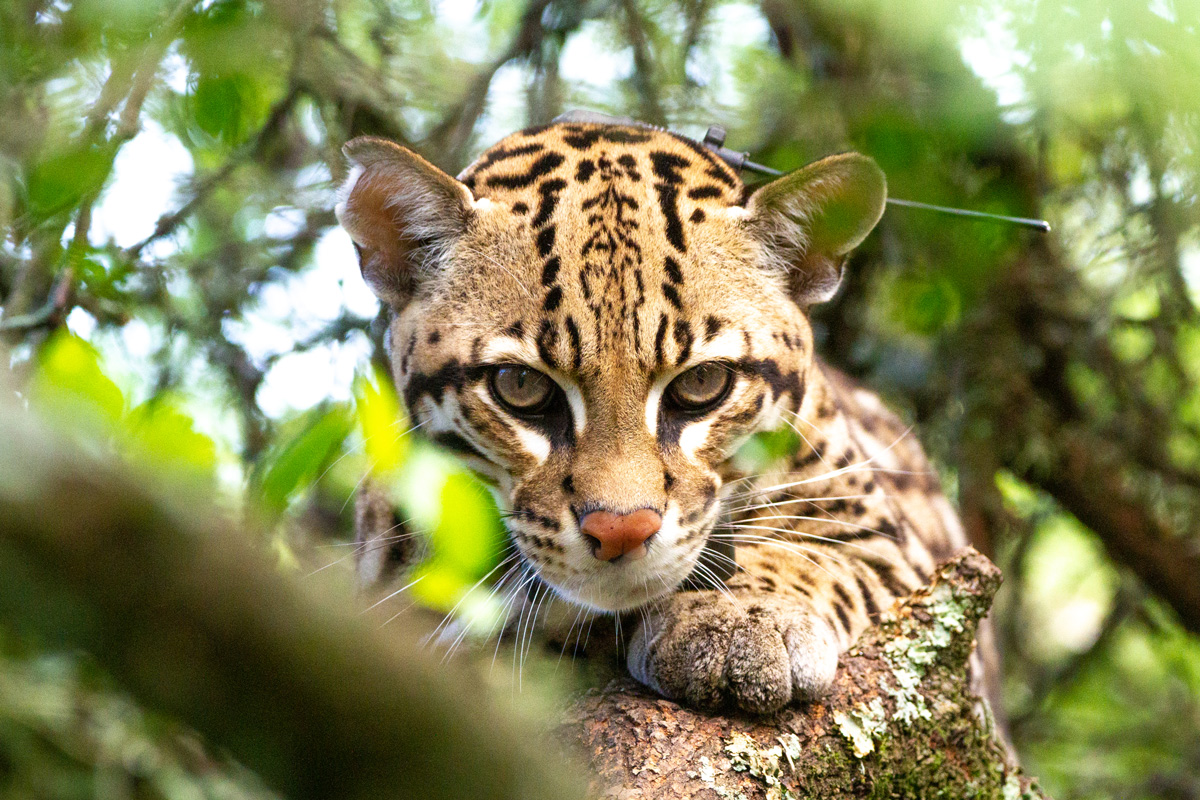
El ocelote ( Leopardus pardalis ) es el más grande de los pequeños felinos manchados de América y el tercer felino más grande del continente americano, después del yaguareté y el puma. Esta especie, considerada vulnerable a la extinción, originalmente tenía una amplia distribución en América, pero actualmente habita desde el sur de Texas, en Estados Unidos, hasta el norte de Argentina, donde se encuentra principalmente en las ecorregiones de las Yungas, la Selva Paranaense y el Chaco.
Las principales causas de disminución de su área de distribución son la caza y la destrucción del hábitat. En la provincia de Corrientes existen escasos registros de la especie en algunos sitios puntuales, siendo los más recientes en isletas de bosque en la zona noreste, en el departamento de Santo Tomé. Sin embargo, ha desaparecido de gran parte del territorio provincial, incluyendo Iberá, donde hubo un último registro en el año 2015. La presencia de este felino es vital para mantener a raya las poblaciones de sus presas, por lo que su reintroducción significa un gran aporte a la salud y funcionalidad del ecosistema.
Distintas entidades públicas y privadas, como centros de cría y de rescate de fauna, bioparques y zoológicos, crían o rescatan a estos animales y luego los donan para que se incorporen al proyecto. Gracias a este trabajo en conjunto con estas instituciones ya hay cinco individuos que se encuentran en etapa de pre-aclimatación, preparándose para la vida en libertad, en corrales de pre-suelta en la Reserva Rincón del Socorro, cerca del Paraje Uguay.
- En 2021 arribó Balam, un macho nacido y criado en el establecimiento La Peregrina, ubicado en la provincia de Buenos Aires, de donde proviene como donación. Luego de finalizar la fase de cuarentena en las instalaciones de San Cayetano, fue trasladado a un corral ubicado en la Reserva Rincón del Socorro.
- En noviembre de 2021 llegaron al proyecto Luna y Lanaya, dos hembras también provenientes del establecimiento La Peregrina. Ambas fueron trasladadas a Rincón del Socorro a mediados de 2022.
- A comienzos de 2022 llegaron los machos Tomi y Vilca, el primero proveniente del Parque de la Biodiversidad, Córdoba, y el segundo del Centro de Atención de la Fauna Autóctona, Jujuy. Tomi ingresó a los corrales del Rincón del Socorro en julio y Vilca en septiembre.
SOFÍA HEINONEN
Sofía Heinonen nació y creció en Buenos Aires (Argentina), donde se formó como bióloga. Activista por naturaleza, lleva más de treinta años diseñando proyectos de gran escala y largo plazo para la creación de áreas protegidas y la restauración de ecosistemas. Formó parte de Fundación Vida Silvestre y la Administración de Parques Nacionales antes de sumarse en 2005 al Proyecto Iberá, liderado por Doug y Kris Tompkins (CLT Argentina), que luego sería continuado por Rewilding Argentina. Actualmente es Directora Ejecutiva en Rewilding Argentina, donde lidera cuatro proyectos que abarcan más de un millón de hectáreas y un equipo de más de doscientas personas. En 2022 fue reconocida por la BBC como una de las cien mujeres más influyentes del planeta.
Sofía Heinonen was born and raised in Buenos Aires (Argentina), where she trained as a biologist. An activist by nature, she has spent more than thirty years designing large-scale and long-term projects to create protected areas and restore natural ecosystems. Sofía was part of Fundación Vida Silvestre and the National Parks Administration before joining the Iberá Project in 2005, led by Doug and Kris Tompkins (CLT Argentina), which Rewilding Argentina would later continue. She is currently the Executive Director at Rewilding Argentina, where she leads four projects that cover more than one million hectares and a team of more than 200 people. In 2022, the BBC recognized her as one of the 100 most influential women on the planet.
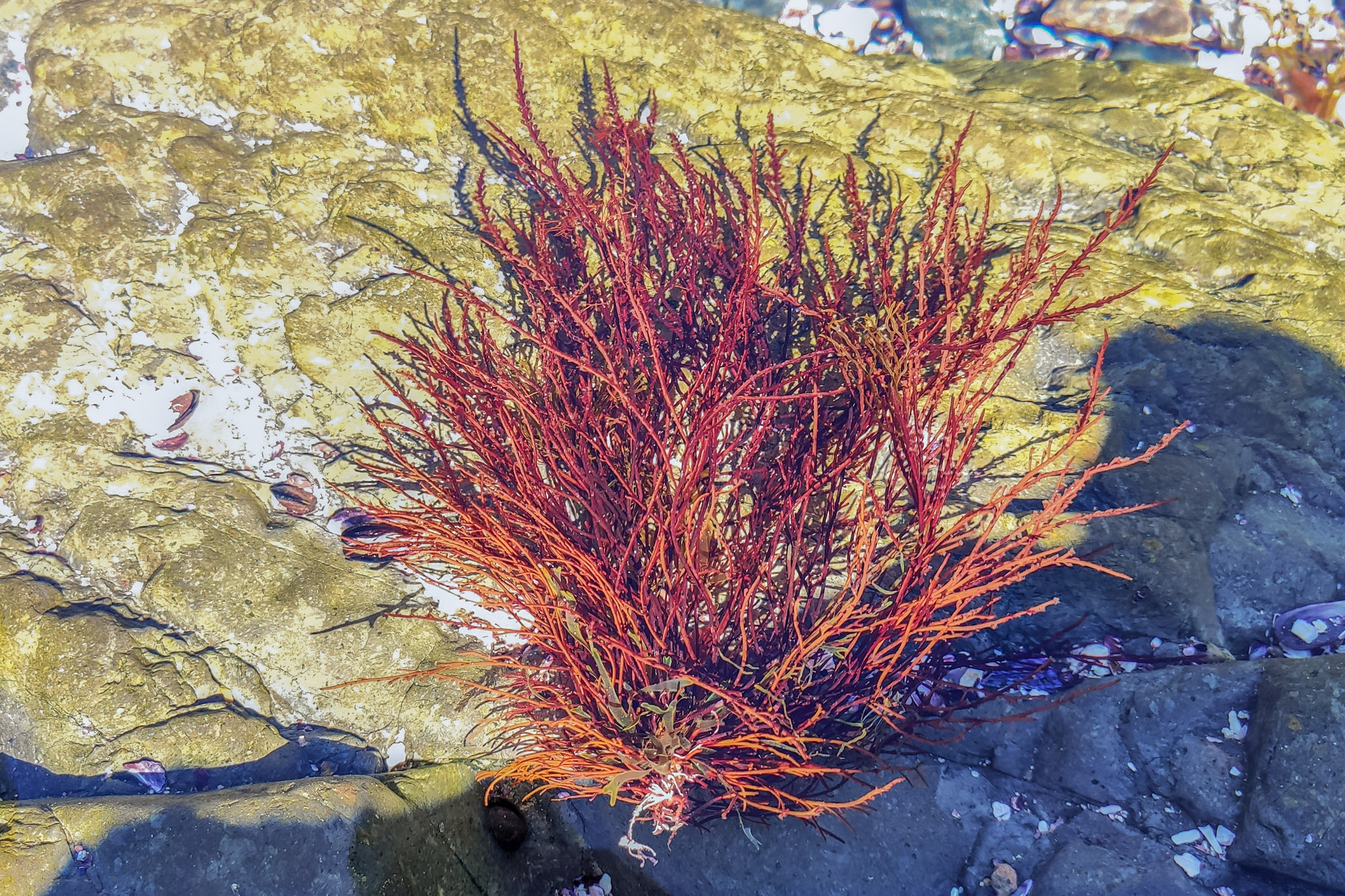
Gracilaria algae
Gracilaria ( Gracilaria gracilis ) is a seaweed native to Patagonia that forms extensive meadows that cover the soft mobile seabeds, which are not generally covered by other seaweed species. It prevents erosion and provides shelter for fish and marine invertebrates such as crabs, starfish and snails.
Until about 20 years ago it was a seaweed of high economic interest, from which a gelling and thickening product known as agar, used in the pharmaceutical, cosmetic and food industries was extracted. Initially it was harvested in large quantities when it detached naturally and washed ashore in events called arribazones . As these events diminished, it was harvested directly from the sea, and over time its abundance diminished so severely that it was no longer economically viable to process it, which led to the disappearance of this activity.
Currently, our team is working to regenerate gracilaria meadows by replanting it in sites where it is sparse, in a slow and laborious process that must be done manually by divers. Worldwide, it is one of few projects aimed at restoring algae meadows for conservation purposes.
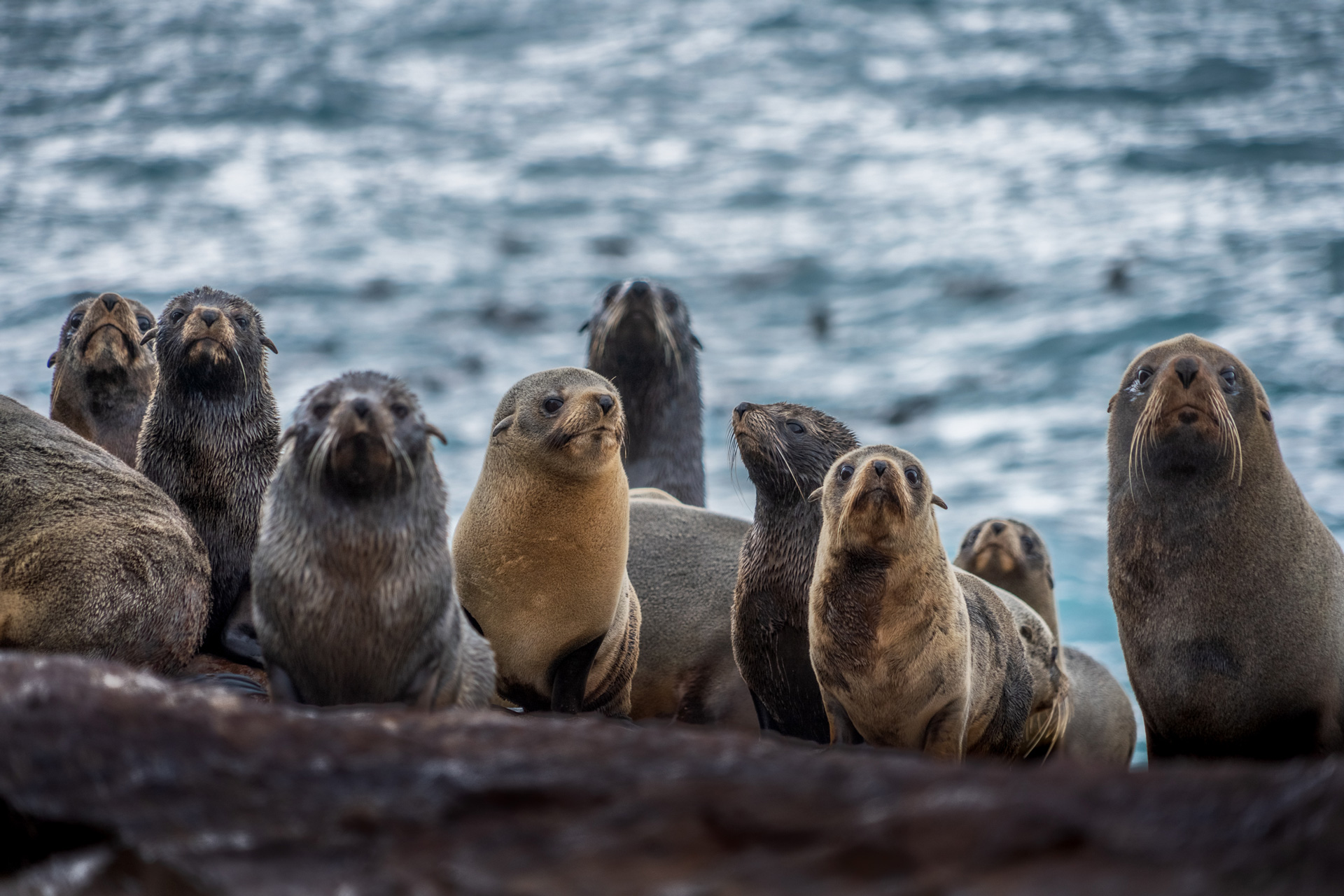
South American fur seal
The South American fur seal ( Arctophoca australis ) is a marine mammal with distribution along the coasts of Chile, Argentina, Uruguay and Brazil. Males are larger than females: they can measure two meters and weigh 200 kilograms, and have a small mane around their neck.
Their name in Spanish, lobo marino de dos pelos (two-haired sea lion) refers to the fact that their fur has two layers. Their pelts were highly valued from the 16th century until the beginning of the 20th century by the fur industry, which decimated their population. As a consequence, its original distribution was reduced to small, scattered colonies within the limits of the area it once occupied. Today, the extensive overlap of the areas used by sea lions and fisheries is their greatest threat.
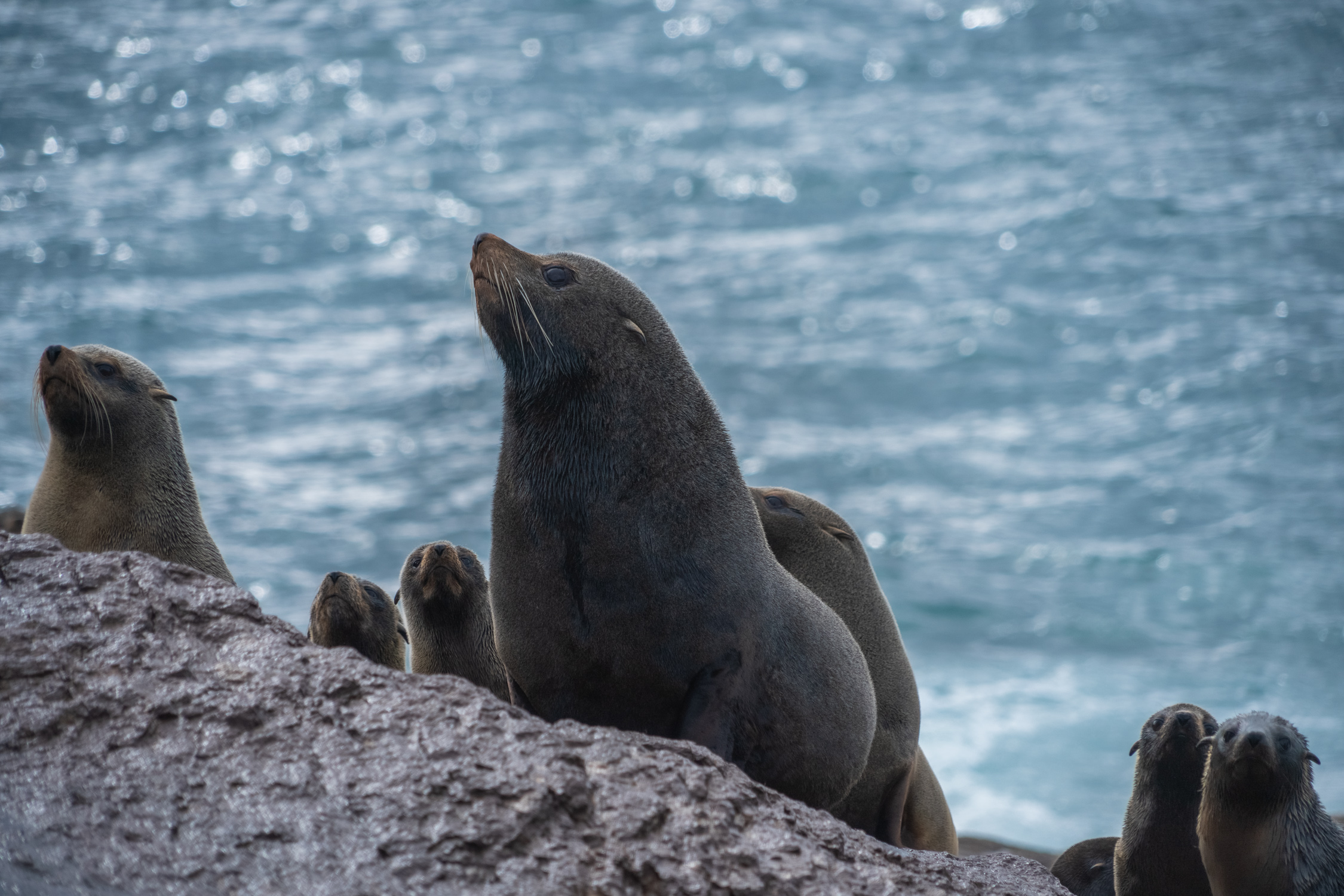
In Argentina, the most populous colony is located on Isla Rasa, near Camarones, in Chubut. This island plays a key role in the population recovery of the species as it contains 60% of the total breeding population in Argentina; however, it is not protected due to its distance from the continent. Extending the protection of the coastal-marine zones of Patagonia Azul to include Isla Rasa and the sea that surrounds it is a pending matter.
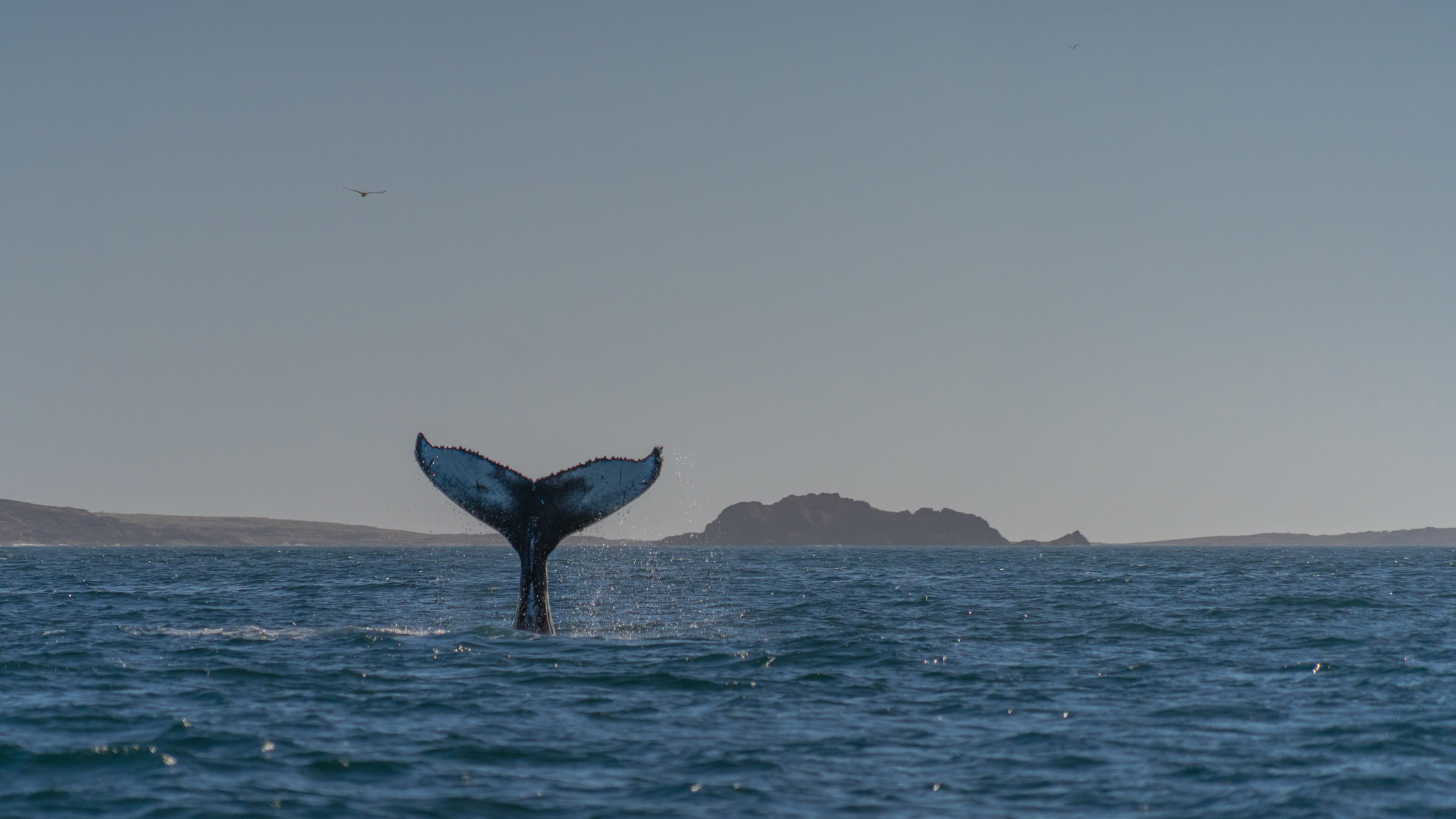
Humpback whale
The humpback whale ( Megaptera novaeangliae ) is a large marine mammal that can measure up to 16 meters and weigh 30 tons. It is found in all of the world’s oceans, however, depending on the availability and quality of food, it is more commonly found in particular areas, such as Patagonia Azul.
Here, since 2021 in the spring and summer, individuals have been observed consuming lobsters and schools of anchovies, We began to record these events to observe their feeding techniques in the area and take photos, particularly of their tails, whose rough profile and spots generate unique patterns that can be used to identify each individual, much like a human fingerprint. These images were uploaded to an international database and provided information on 14 individuals that had never before been recorded.
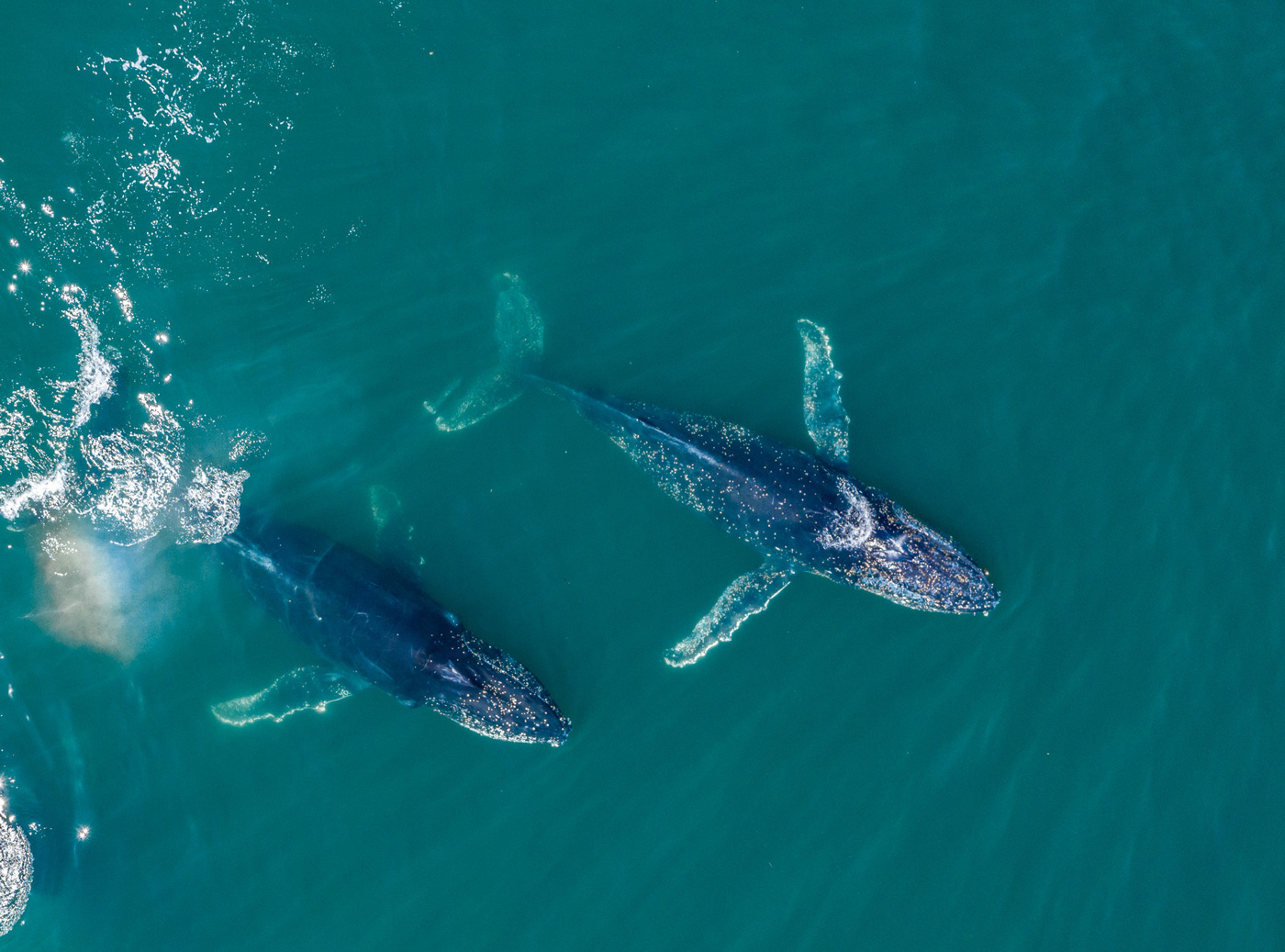
In addition to continuing to record this information, we are preparing to record and research their extensive, complex songs, which are used during mating and feeding. Identifying and monitoring each individual allows us to learn more about the abundance and migratory patterns of the species in the area, to later develop strategies to help conserve their numbers.
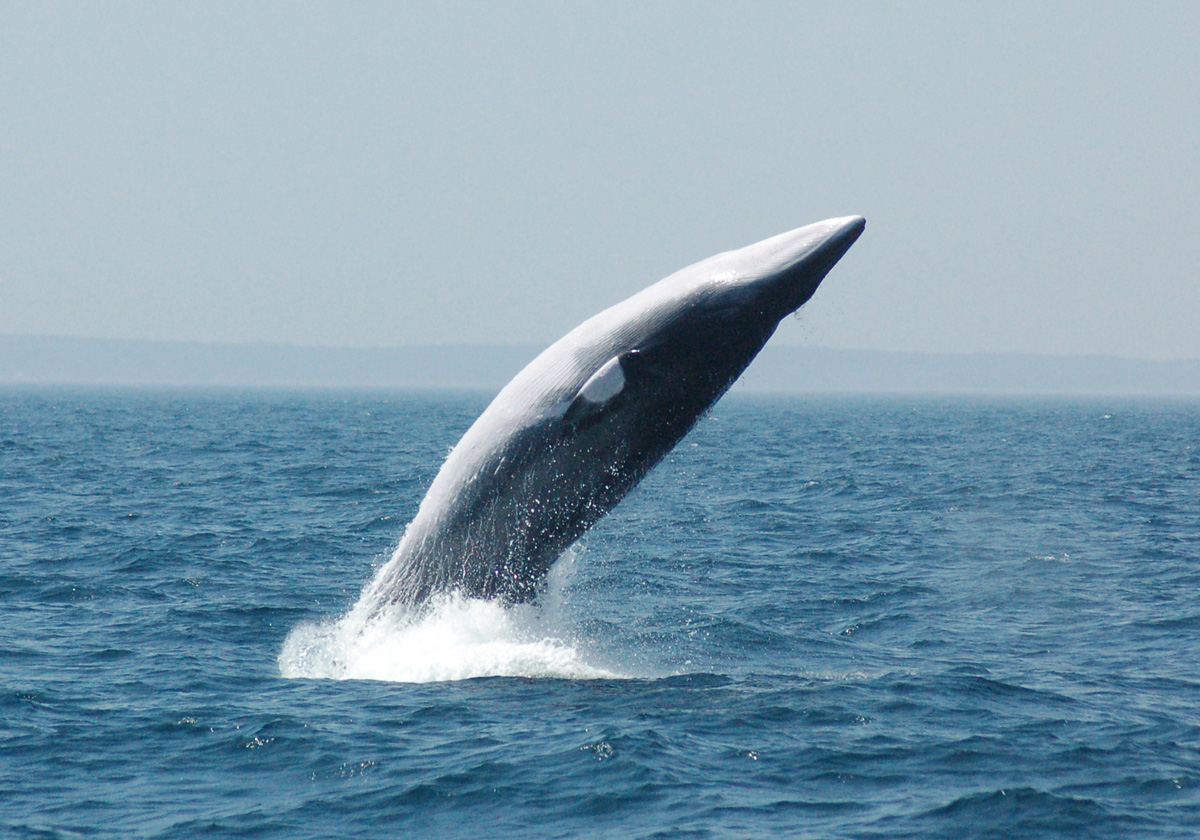
Antarctic Minke whale
The Minke whale ( Balaenoptera bonaerensis ) belongs to the fin whale family, one of the most abundant and diverse of the cetaceans, and is easily recognized by its large body size with small dorsal fin, flat head and grooves in the throat and chest that expand when they swallow water to feed on plankton, which is filtered by their baleen.
The minke whale was intensively hunted until the middle of the 20th century by whaling fleets in expeditions that captured thousands of individuals. Although hunting it now is illegal, it does happen on occasion. In addition, these fin whales face other threats such as noise pollution in the seas and the reduction of sea ice sheets due to global warming. Krill, the main food source of Minke whales, reproduces in these ice sheets.
Although the minke whale is an oceanic species that migrates between the Antarctic and southern Brazil, it is sometimes sighted in the coastal waters of Patagonia Azul. Moreover, in recent years it has begun to be observed there more frequently, sometimes in groups, but also solitary individuals. Because of this, there is much uncertainty about the species. It is not known how many individuals exist, the conditions of the population, nor where in the Argentine Sea it most commonly circulates.
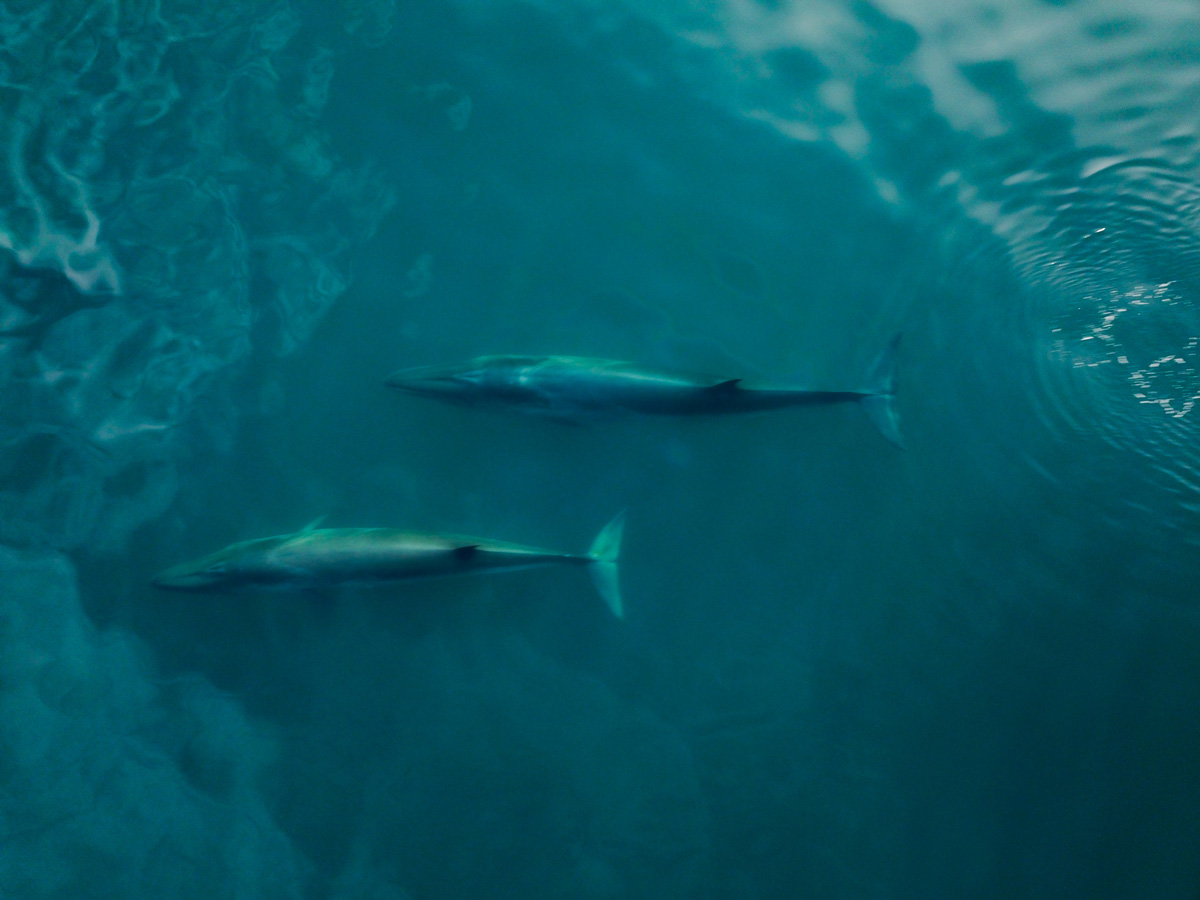
The Sei whale ( Balaenoptera borealis ) is a fin whale found around the world and has two subspecies, one in the Northern Hemisphere, and one in the Southern Hemisphere. The southern sei whale is found seasonally along the coast. It migrates through the Argentine Sea from subpolar areas where it feeds in the summer, to the south of Brazil, where it breeds in winter.
Like the Minke, the Sei whale was heavily hunted until a few decades ago. It is considered endangered because the world population has declined by more than 80% within the last three generations. Today, its recovery depends on its protection. Although there is no formal data on current population trends, the latest records indicate that the population is slowly increasing along the Argentine coast.
Its variable migratory routes and intermittent presence during some months of the year make it difficult to monitor the population. Since 2019 their presence has been recorded in Patagonia Azul, mainly during autumn in moderately deep coastal areas, where they have been observed feeding or resting. From these records, we hope to gain a better idea about their abundance, behaviors and habitat use in the Patagonia Azul area.
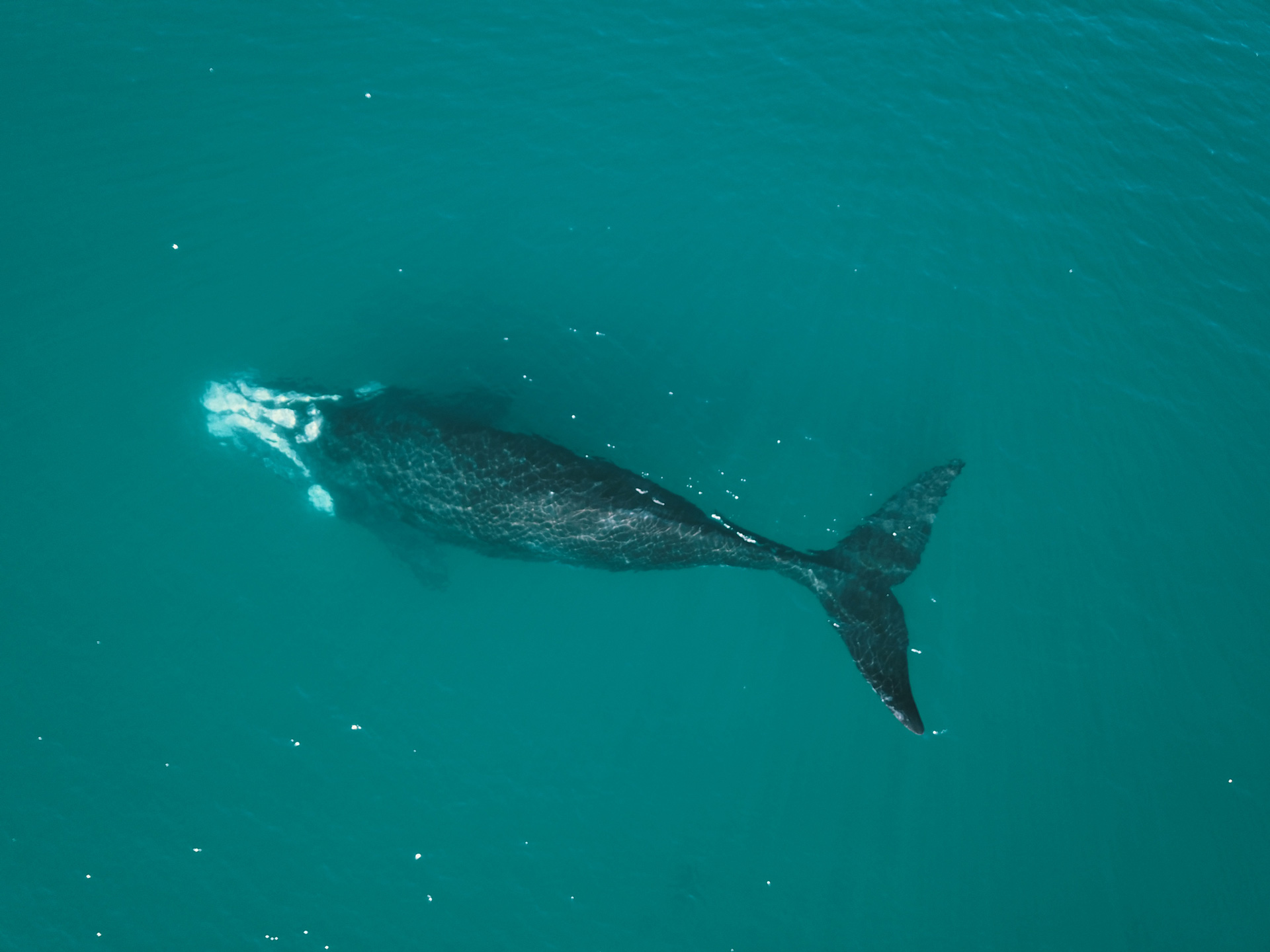
Southern right whale
The southern right whale ( Eubalaena australis ) can measure up to 16 meters and weigh about 40 tons. It inhabits the oceans of the Southern Hemisphere; the Atlantic population usually migrates between feeding areas near Antarctica in summer and breeding areas further north in winter, where they concentrate mostly in the Valdes Peninsula and reach as far as Uruguay and Brazil. On these migratory journeys, Patagonia Azul is a regular stop for the southern right whale.
It is a very trusting and curious species and therefore frequently approaches vessels. In the past, this characteristic made the southern right whale an easy target and it was heavily hunted.
With its global population decimated, the southern right whale slowly recovered once commercial whaling was banned in the 1980s. Today its use as a resource for whale watching depends on the existence of a healthy population. These friendly encounters between these giants of the ocean and humans occur by chance in the transit waters that bathe the coasts of Patagonia Azul.

Broadnose sevengill shark
The broadnose sevengill shark ( Notorynchus cepedianus ) is one of the large sharks that inhabit the Argentine Sea. It can reach up to three meters in length, weigh more than 100 kilograms and has numerous white and gray spots, which give it its name in Spanish tiburón gatopardo (leopard shark).
It plays a fundamental ecological role as an apex predator in the Patagonian marine ecosystem. Its diet is varied: it consumes fish, invertebrates and crustaceans; it also consumes animal remains and is capable of preying on dolphins, sea lions, elephant seals and even other sharks.
Even so, this species is vulnerable: its population has decreased by 60% in recent years and its conservation state is critical. The main reason for this is their capture, both in unregulated sport fishing in coastal areas and as bycatch in offshore commercial fisheries.
Our team is working to compile information through underwater cameras and collect data on its distribution and use of Patagonia Azul’s coasts, in order to protect its breeding sites and ensure its survival.
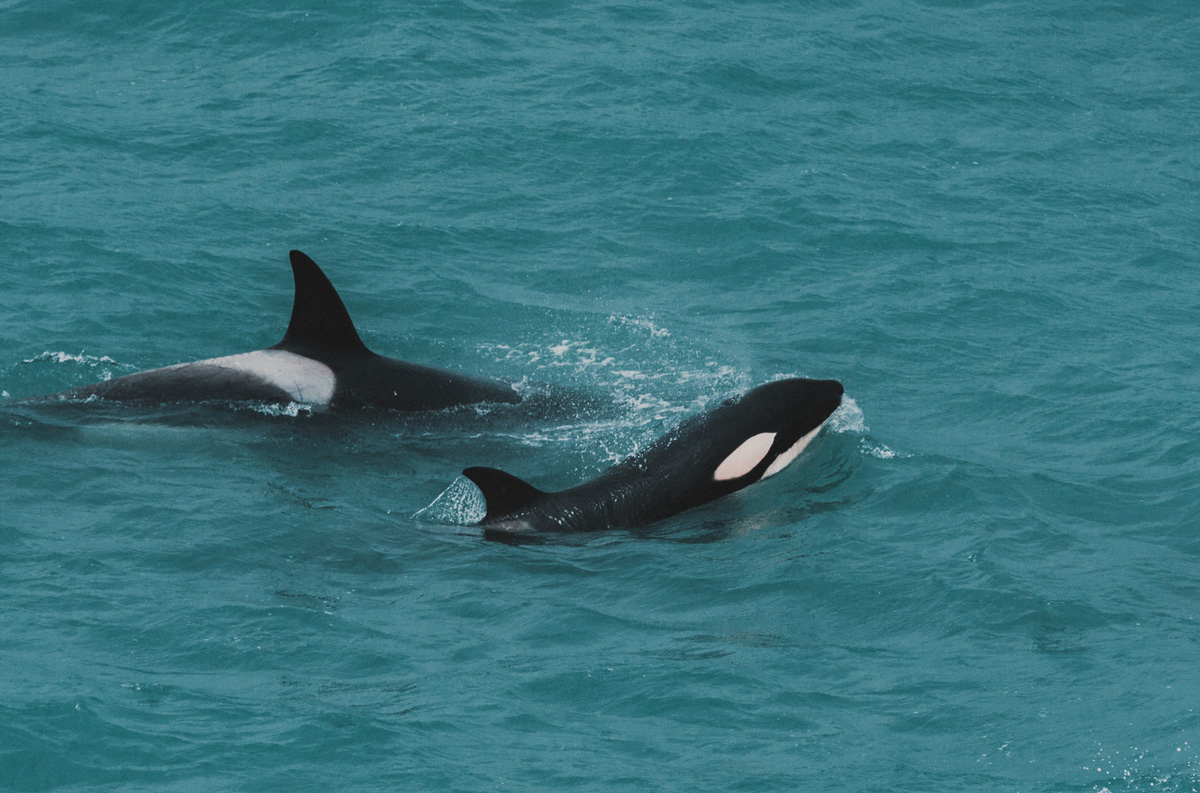
At over five tons in weight and nine meters long, the orca ( Orcinus orca ) is the largest existing dolphin, although little is known about the species. Although there are populations all over the world, each family maintains fidelity to a site that it usually patrols throughout the year. They swim long distances, and return to feeding sites just when their food sources are most abundant.
The orca is a family-based, social species in which immediate offspring and grandchildren are guided by a female leader. Their ability to communicate with specific dialects and the transmission of their songs from generation to generation reveal a cultural education similar to that of humans.
These cetaceans play an important role as top marine predators that help maintain healthy populations of their prey, which they capture together by coordinating different behaviors. In Patagonia Azul there are several islands that host prey populations, where visitors can experience a wild encounter with orcas.
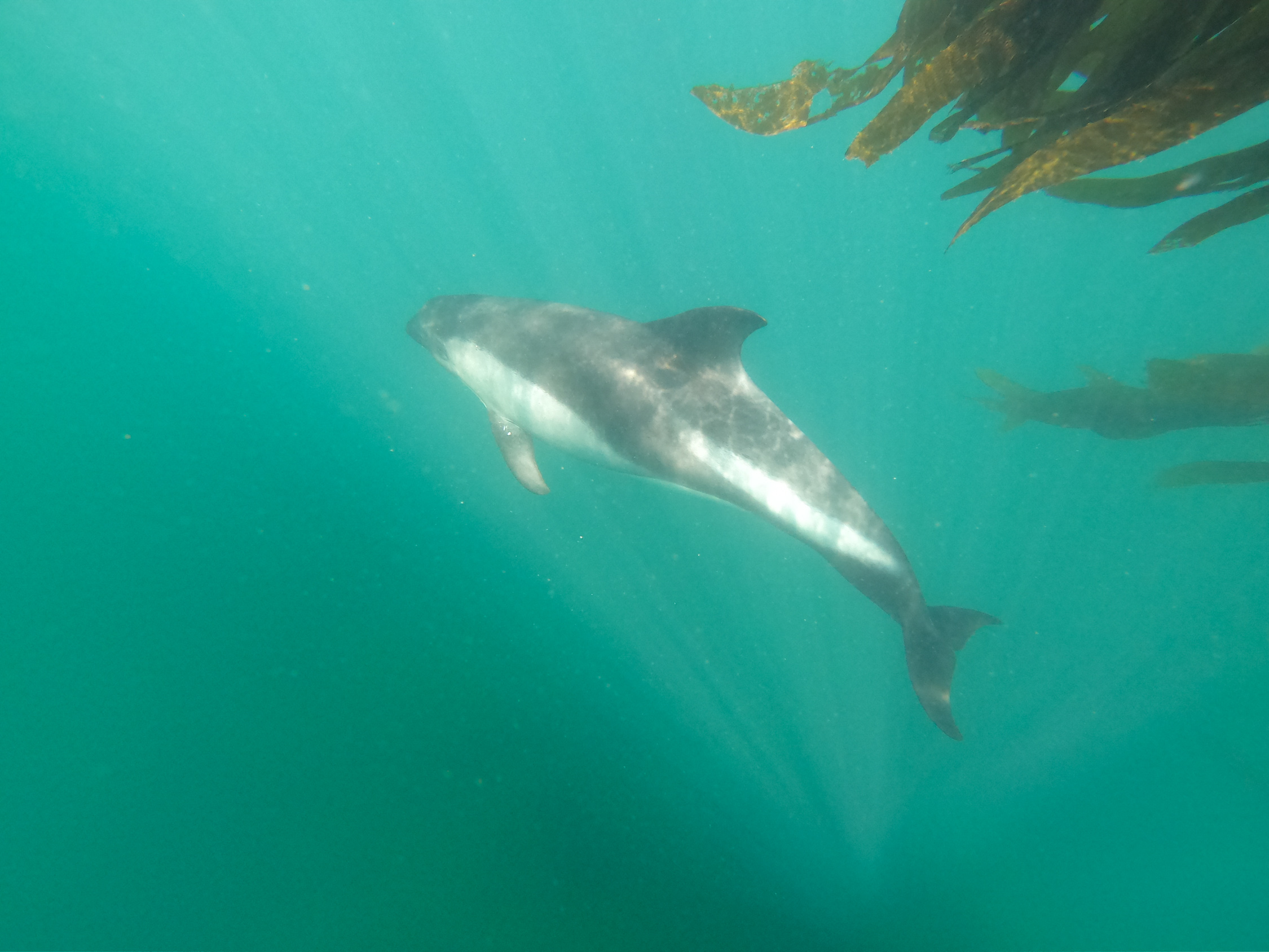
Peale's dolphin
The southern dolphin ( Lagenorhynchus australis ) is a robust dolphin that is found only along the southern coasts of South America, weighing up to 115 kilograms and measuring slightly over two meters. Its dark coloration with grayish bands on its sides and its dark head, which ends in the shape of a short rounded “beak” differentiate it from other dolphins. In the Atlantic Ocean its range reaches Antarctica and the South Atlantic Islands; it appears frequently on the coasts of Patagonia Azul, although it is usually sighted offshore on the continental shelf.
The southern dolphin is commonly found in small groups, swimming among kelp forests or in areas of fast moving waters such as channels and straits, which they often leave to follow boats, jumping at full speed. However, when they are with their young they tend to stay close to the coast, in safe, shallow bays, and avoid socializing.
The presence of this marine predator is essential to fulfill its ecological niche and promote a new restorative economy based on wildlife sighting tourism in Patagonia Azul.
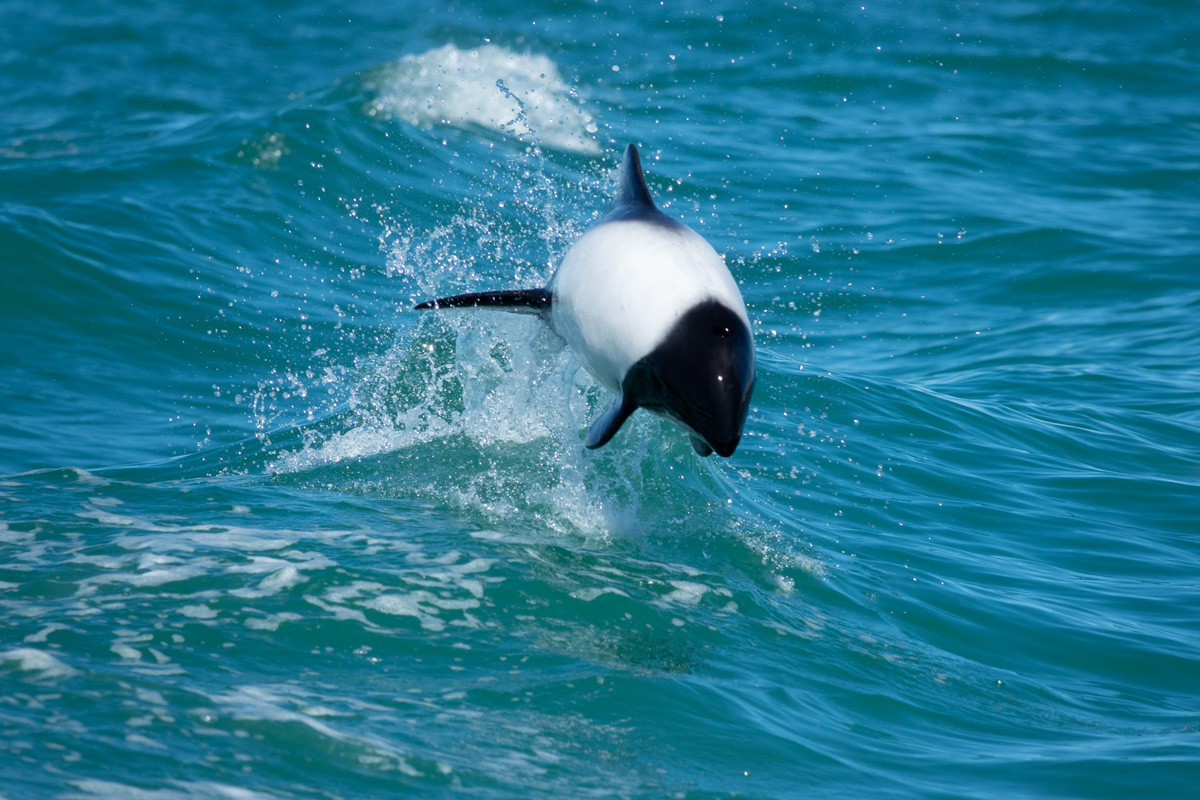
Commerson's dolphin
The Commerson’s dolphin ( Cephalorhynchus commersonii ) is a small cetacean that does not exceed 1.5 meters in length and weighs a maximum of 60 kilograms. Its range is from the north of the province of Chubut in Argentine Patagonia, including the waters of the Islas Malvinas/Falkland Islands, to the southernmost fjords of Chile, including the Strait of Magellan. Patagonia Azul is one of the sites where most of the individuals are concentrated .
In groups ranging from five to 20 individuals, these charismatic and active animals repeatedly breach and jump when they encounter a boat. Due to their trusting and sociable behavior, they tend to interact with fisheries, where they are caught in nets as bycatch.
This elusive species has not yet been studied like other Patagonian marine mammals. Undoubtedly, the development of nature tourism activities and the contributions of citizen science, such as filming and photography during recreational boat outings, can provide valuable information for certain biological studies on their distribution patterns, site fidelity, and life history.
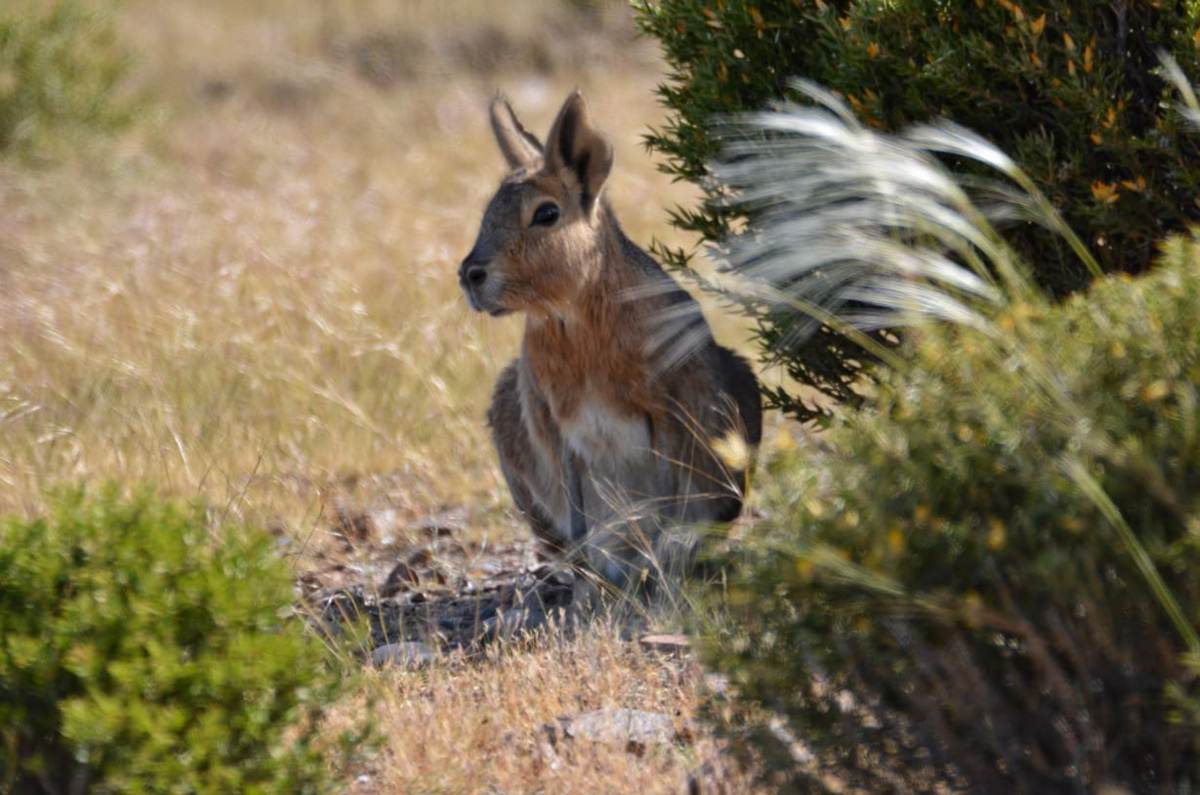
Although it is known as the “Patagonian hare”, the mara ( Dolichotis patagonum ) is not part of the lagomorph family to which hares and rabbits belong, but to that of rodents; in fact, it is the second largest rodent in the world after the capybara. Although it resides only in Argentina and has a broad distribution, its populations are vulnerable because of habitat loss due to the advance of agricultural and livestock activities and competition with introduced herbivores, such as sheep and the European hare. For this reason, mara sightings are rare throughout their range.
One of the most striking characteristics of this terrestrial mammal is that it digs burrows that it shares with other pairs of maras during the breeding season and that function as shelters for other species. In addition, its presence in the ecosystem favors seed dispersal throughout its wide range, which contributes to the regeneration of the habitat.
Since 2020, at Patagonia Azul we have begun to monitor the mara in sites where cattle ranching has been withdrawn. Despite the short period of time that has elapsed, we have already observed changes in their behavior: human presence is increasingly unnoticed and it is easy to spot pairs with their young. Monitoring these individuals provides us with useful, essential information, since there is little long-term data on the species over time.
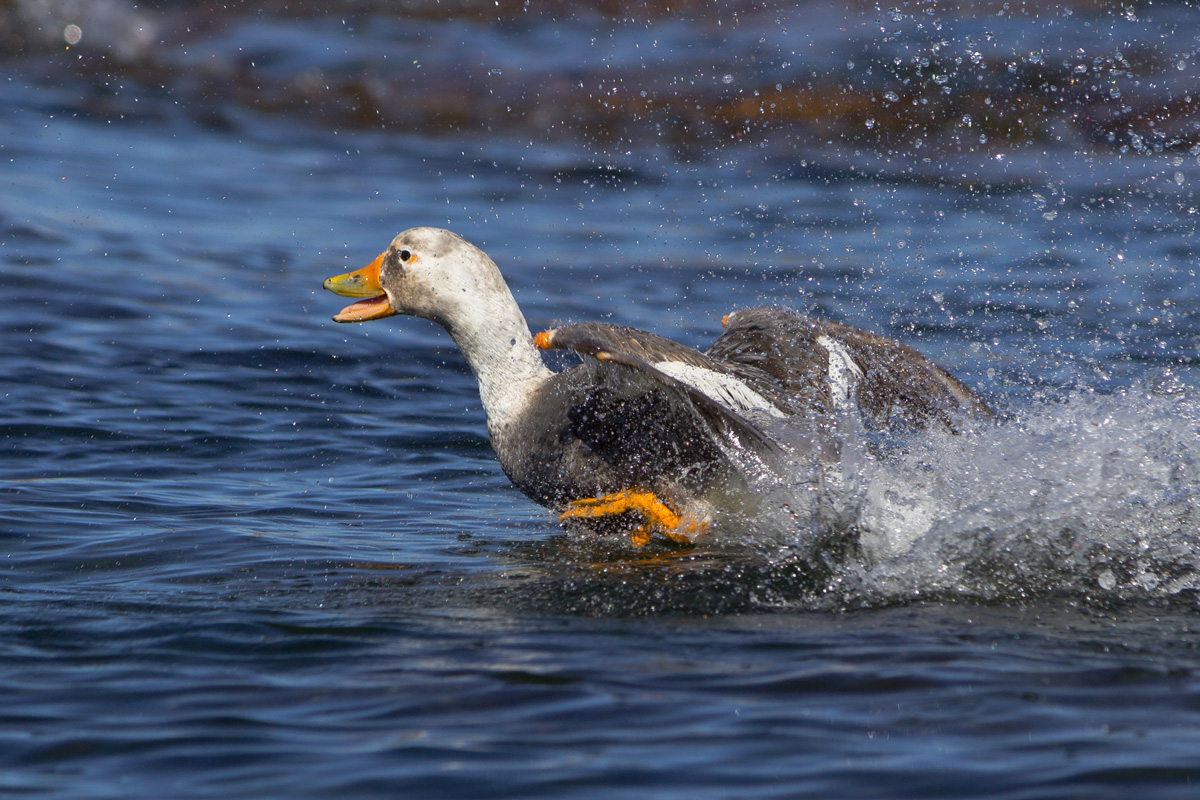
Chubut steamer duck
The white-headed steamer duck ( Tachyeres leucocephalus ) is a robust seabird that inhabits only the coasts of the province of Chubut and northern Santa Cruz, mainly at Patagonia Azul. Due to its declining population status, it is considered a vulnerable species.
Its name refers to the way it moves through the ocean: it uses its small wings, which cannot lift its heavy body, to propel itself through the water, reminiscent of the paddles of a steamship. This is how it is able to move swiftly across the water’s surface when it feels threatened or to defend its mate or its territory.
The islands of Patagonia Azul have exclusive breeding sites for the white-headed steamer duck away from mainland predators. The ducks build their nests on the ground, well-hidden among the vegetation, where the chicks are born and protected to ensure the success of each breeding season. Because of its reduced range and small population size, conserving these areas of Patagonia Azul is crucial for the species’ population recovery.
La gracilaria ( Gracilaria gracilis ) es un alga nativa de Patagonia que forma extensas praderas que cubren los fondos blandos móviles, que no suelen ser cubiertos por otras especies de algas, evitan su erosión y generan refugio para peces e invertebrados marinos como cangrejos, estrellas de mar y caracoles.
Hasta hace unos 20 años fue un alga de importante interés económico, de la cual se extrajo un producto gelificante y espesante conocido como “agar”, utilizado en las industrias farmacéutica, cosmética y alimentaria. Inicialmente se la recolectó en grandes cantidades cuando se desprendía naturalmente y se depositaba en las costas en eventos llamados “arribazones”. Frente a la disminución de estos eventos se la cosechó directamente del mar, y con el tiempo su abundancia se redujo tanto que no llegó a cubrir los costos de su procesamiento, lo que hizo desaparecer la actividad.
Actualmente, nuestro equipo trabaja para regenerar las praderas de gracilaria replantando individuos en sitios donde la abundancia es muy baja, en un proceso lento y laborioso que debe hacerse de forma manual y buceando. Es uno de los pocos trabajos a nivel mundial de restauración de praderas de algas con fines de conservación.
Lobo marino de dos pelos
El lobo marino de dos pelos ( Arctophoca australis ) es un mamífero marino que se distribuye en las costas de Chile, Argentina, Uruguay y Brasil. Los machos son más grandes que las hembras: pueden medir dos metros y pesar 200 kilogramos, y poseen una pequeña melena alrededor de su cuello.
Su nombre alude a que presenta dos capas superpuestas de pelo. Su piel fue muy apreciada desde el siglo XVI hasta principios del siglo XX por la industria peletera, que diezmó sus poblaciones. Como consecuencia, su distribución original se redujo a pequeñas colonias esparcidas dentro de los límites del área que antes ocupaba. Hoy, el gran solapamiento entre las áreas utilizadas por los lobos y las pesquerías es su mayor amenaza.
En Argentina la colonia más importante se encuentra en Isla Rasa, próxima a Camarones, en Chubut. Esta isla juega un rol clave para la recuperación poblacional de la especie al concentrar el 60% del total de la población reproductiva de Argentina; sin embargo, no se encuentra protegida debido a su distancia al continente. Ampliar la protección de las zonas costero-marinas de Patagonia Azul para incluir a Isla Rasa y su mar circundante es una asignatura pendiente.
Ballena jorobada
La ballena jorobada ( Megaptera novaeangliae ) es un gran mamífero marino que puede medir hasta 16 metros y pesar 30 toneladas. Se distribuye en todos los océanos del planeta aunque, según la disponibilidad y calidad de alimento, su presencia es más frecuente en algunos sitios como Patagonia Azul.
Aquí, desde 2021 se han observado individuos consumiendo bogavantes y cardúmenes de anchoítas durante la primavera y el verano. Por ello, comenzamos a registrar estos eventos para observar sus técnicas de alimentación en la zona y tomar fotos particularmente de su cola, cuyo perfil rugoso y manchas generan patrones únicos que sirven para identificar cada individuo, similar a lo que ocurre con la huella digital humana. Estas imágenes fueron cargadas a una base internacional de datos y aportaron información sobre 14 individuos que nunca antes habían sido registrados.
Además de continuar con estos registros, nos preparamos para grabar e investigar sus extensos y complejos cantos, que utilizan para aparearse y durante su alimentación. Identificar y monitorear cada individuo nos permite conocer más sobre la abundancia y los patrones migratorios de la especie en la zona, y luego desarrollar estrategias para ayudar a conservarla.
Ballena Minke
La ballena Minke ( Balaenoptera bonaerensis ) pertenece a la familia de los rorcuales, una de las más abundantes y diversas dentro del grupo de los cetáceos, que se diferencia por sus individuos de gran tamaño con una pequeña aleta dorsal, cabeza aplanada y pliegues en la garganta y el pecho que se expanden cuando tragan agua para alimentarse del plancton, que es filtrado por sus barbas.
La ballena Minke fue intensamente cazada por flotas balleneras que capturaron miles de individuos en expediciones que persistieron hasta mediados del siglo XX. Si bien hoy la cacería es ilegal, ocurre esporádicamente. Además, estos rorcuales enfrentan otras amenazas como la contaminación acústica en los mares y la reducción de las capas de hielo marino a causa del calentamiento global. En estas capas de hielo se reproduce el krill, el alimento principal de las ballenas Minke.
Aunque la ballena Minke es una especie oceánica que migra entre la zona antártica y el sur de Brasil, a veces es avistada en las aguas costeras de Patagonia Azul. Más aún, en los últimos años su presencia allí comenzó a observarse con mayor frecuencia, a veces en grupos, pero también individuos solitarios. Por ello, existen muchas incertidumbres sobre la especie: no se conoce cuántos individuos existen, en qué estado se encuentra su población, ni qué lugares del Mar Argentino utiliza más frecuentemente.
Ballena Sei
La ballena Sei ( Balaenoptera borealis ) es un rorcual que se encuentra en todo el mundo y posee dos subespecies, una en el Hemisferio Norte y otra en el Sur. La del Hemisferio Sur tiene una presencia estacional a lo largo del litoral: migra por el Mar Argentino desde zonas subpolares donde se alimenta en el verano hacia el sur de Brasil, donde se reproduce en invierno.
Igual que la Minke, la ballena Sei fue intensamente cazada hasta hace algunas décadas. Se la considera en peligro de extinción dado que la población mundial disminuyó en más del 80% en las últimas tres generaciones. Hoy, su recuperación depende de su protección. Aunque no existen datos formales sobre las tendencias poblacionales actuales, los últimos registros indican que en la costa argentina la población está aumentando lentamente.
Sus recorridos migratorios variables y la presencia esporádica en algunos meses del año dificultan el seguimiento de la población. Desde 2019 se registra su presencia en Patagonia Azul, principalmente durante el otoño en zonas costeras medianamente profundas, donde se las ha observado alimentándose o descansando. A partir de estos registros, se busca tener una mejor noción sobre la abundancia, comportamientos y uso de hábitat en la zona de Patagonia Azul.
Ballena franca austral
La ballena franca austral ( Eubalaena australis ) puede medir hasta 16 metros y pesar cerca de 40 toneladas. Habita los océanos del Hemisferio Sur; la población del Atlántico suele migrar entre áreas de alimentación cerca de la Antártida en verano y áreas de reproducción más al norte en invierno, donde se concentran mayormente en la Península Valdés y llegan hasta Uruguay y Brasil. En estos viajes migratorios, Patagonia Azul es una parada habitual de la ballena franca austral.
Es una especie muy confiada y curiosa y por ello es característico su acercamiento a embarcaciones. En el pasado, esta cualidad hizo de la ballena franca austral un blanco fácil y fue intensamente cazada.
Con sus poblaciones globales diezmadas, a partir de la prohibición de su caza comercial en la década de 1980 la ballena franca austral se recuperó lentamente. Hoy, su aprovechamiento por el turismo embarcado para su avistaje depende de una población saludable. Estos encuentros amistosos entre estas gigantes del océano y los humanos se dan casualmente en las aguas de tránsito que bañan las costas de Patagonia Azul.
Tiburón gatopardo
El tiburón gatopardo ( Notorynchus cepedianus ) es uno de los grandes tiburones que habitan el Mar Argentino. Puede alcanzar tres metros de largo, pesar más de 100 kilogramos y posee numerosas manchas blancas y grises, que le dan su nombre.
Desarrolla un rol ecológico fundamental como depredador tope del ecosistema marino patagónico. Su dieta es amplia: consume peces, invertebrados y crustáceos; también aprovecha restos de animales muertos y es capaz de depredar delfines, lobos y elefantes marinos e incluso otros tiburones.
Aun así, esta especie es vulnerable: su población disminuyó en un 60% en los últimos años y se encuentra en estado crítico. Las causas principales son su captura, tanto en la pesca deportiva desregulada en áreas costeras como su captura incidental en la pesca comercial mar adentro.
Nuestro equipo trabaja para recopilar información mediante cámaras subacuáticas y obtener datos sobre su distribución y el uso que hace de las costas de Patagonia Azul, y así proteger sus sitios de reproducción y garantizar su supervivencia.
Con más de cinco toneladas de peso y nueve metros de largo, la orca ( Orcinus orca ) es el delfín más grande que existe, aunque poco se sabe de la especie. Si bien existen poblaciones en todo el mundo, cada familia tiene fidelidad a un sitio que suele patrullar durante todo el año. Nadan grandes distancias, volviendo a los sitios de alimentación en el momento adecuado, justo cuando sus fuentes de alimento se encuentran en mayor abundancia.
La orca es una especie social que desarrolla su vida en familias, en las cuales hijos y nietos son guiados por un hembra líder. Su capacidad de comunicación con dialectos particulares y la transmisión de sus cantos de generación en generación revelan una enseñanza cultural similar a la humana.
Estos cetáceos cumplen un importante rol como depredadores tope marinos que ayuda a mantener saludables las poblaciones de sus presas, que capturan trabajando coordinadamente a través de diferentes comportamientos. En Patagonia Azul existen varias islas que albergan poblaciones de presas, donde es posible experimentar el encuentro en estado salvaje con estos animales.
Delfín austral
El delfín austral ( Lagenorhynchus australis ) es un robusto delfín exclusivo de las costas del sur de Sudamérica que llega a pesar 115 kilogramos y medir un poco más de dos metros. Su coloración oscura con bandas grisáceas a sus costados y su cabeza oscura, que termina en forma de “pico” corto redondeado, lo diferencian de otros delfines. Su distribución en el Océano Atlántico llega hasta Antártida e Islas del Atlántico Sur; en las costas de Patagonia Azul aparece frecuentemente, aunque suele avistarse mar adentro en la plataforma continental.
Es común encontrar al delfín austral en grupos pequeños, nadando entre los bosques de algas cachiyuyo o en zonas de aguas en movimiento intenso como canales y estrechos, que suelen abandonar para seguir las embarcaciones dando saltos a toda velocidad. Sin embargo, cuando están con crías suelen permanecer cerca de la costa, en bahías seguras y poco profundas, y evitan socializar.
La presencia de este depredador del ecosistema marino es esencial para cumplir su rol ecológico y promover una nueva economía restaurativa basada en el turismo de observación de fauna en Patagonia Azul.
Tonina overa
La tonina overa ( Cephalorhynchus commersonii ) es un pequeño delfín que no supera el metro y medio y pesa, como mucho, 60 kilogramos. Habita desde el norte de la provincia de Chubut en la Patagonia argentina, incluyendo las aguas de las Islas Malvinas, hasta los fiordos más australes de Chile, incluyendo el Estrecho de Magallanes. Patagonia Azul es uno de los sitios donde se concentran más individuos.
En grupos de entre cinco y 20 individuos, estos animales carismáticos y activos realizan numerosos saltos acrobáticos cuando se encuentran con una embarcación. Por su comportamiento confiado y sociable tienden a interactuar con las pesquerías, donde son capturados en las redes de manera incidental.
Esta especie escurridiza no pudo ser estudiada como otros mamíferos marinos de la Patagonia. Sin duda, el desarrollo de actividades de turismo de naturaleza y la contribución de la ciencia ciudadana, como la captura de imágenes durante las navegaciones recreativas, pueden aportar información valiosa para ciertos estudios biológicos sobre sus patrones de distribución, la fidelidad a sitios y la historia de vida.
Aunque es conocida como “liebre patagónica”, la mara ( Dolichotis patagonum ) no pertenece a la familia de las liebres y conejos —los lagomorfos— sino a la de los roedores; de hecho, es el segundo roedor más grande del mundo después del carpincho. Si bien reside únicamente en Argentina pero en un extenso rango, sus poblaciones son vulnerables debido a la pérdida de hábitat por el avance de actividades agrícolas y ganaderas y a la competencia con herbívoros introducidos, como la oveja y la liebre europea. Por ello, hoy en día resulta difícil avistar maras en todo su rango de distribución.
Una de las características más llamativas de este mamífero terrestre es que cava madrigueras que comparte con otras parejas durante la época reproductiva y que funcionan como refugios para otras especies. Además, su presencia en el ecosistema favorece la dispersión de semillas por sus amplios radios de acción, colaborando en la regeneración del hábitat.
Desde 2020, en Patagonia Azul comenzamos a monitorear a la mara en sitios donde se retiró la ganadería. Pese al breve período transcurrido ya se observan cambios en su comportamiento: la presencia humana pasa cada vez más inadvertida y resulta fácil avistar parejas con sus crías. El seguimiento que hacemos de estos individuos nos brinda información útil y necesaria, ya que existen pocos datos sobre la especie sostenidos en el tiempo.
Pato vapor de cabeza blanca
El pato vapor cabeza blanca ( Tachyeres leucocephalus ) es una robusta ave marina que habita únicamente las costas de la provincia de Chubut y el norte de Santa Cruz, concentrándose mayormente en Patagonia Azul. Dado el estado decreciente de su población se la considera una especie vulnerable.
Su nombre hace referencia a su forma de desplazarse en el mar: utiliza sus pequeñas alas, que son incapaces de elevar su pesado cuerpo, para impulsarse en el agua, recordando a las paletas de un buque a vapor. Así logra moverse velozmente por la superficie cuando se siente amenazado y para defender a su pareja o su territorio.
Las islas de Patagonia Azul ofrecen sitios exclusivos para la reproducción del pato vapor de cabeza blanca lejos de los depredadores del continente. Allí construye su nido en el suelo, bien escondido entre la vegetación, donde nacen los pichones que luego protege para garantizar el éxito de cada temporada reproductiva. Por su restringido rango de distribución y su reducido tamaño poblacional, conservar estas áreas de Patagonia Azul resulta crucial para la recuperación poblacional de la especie.
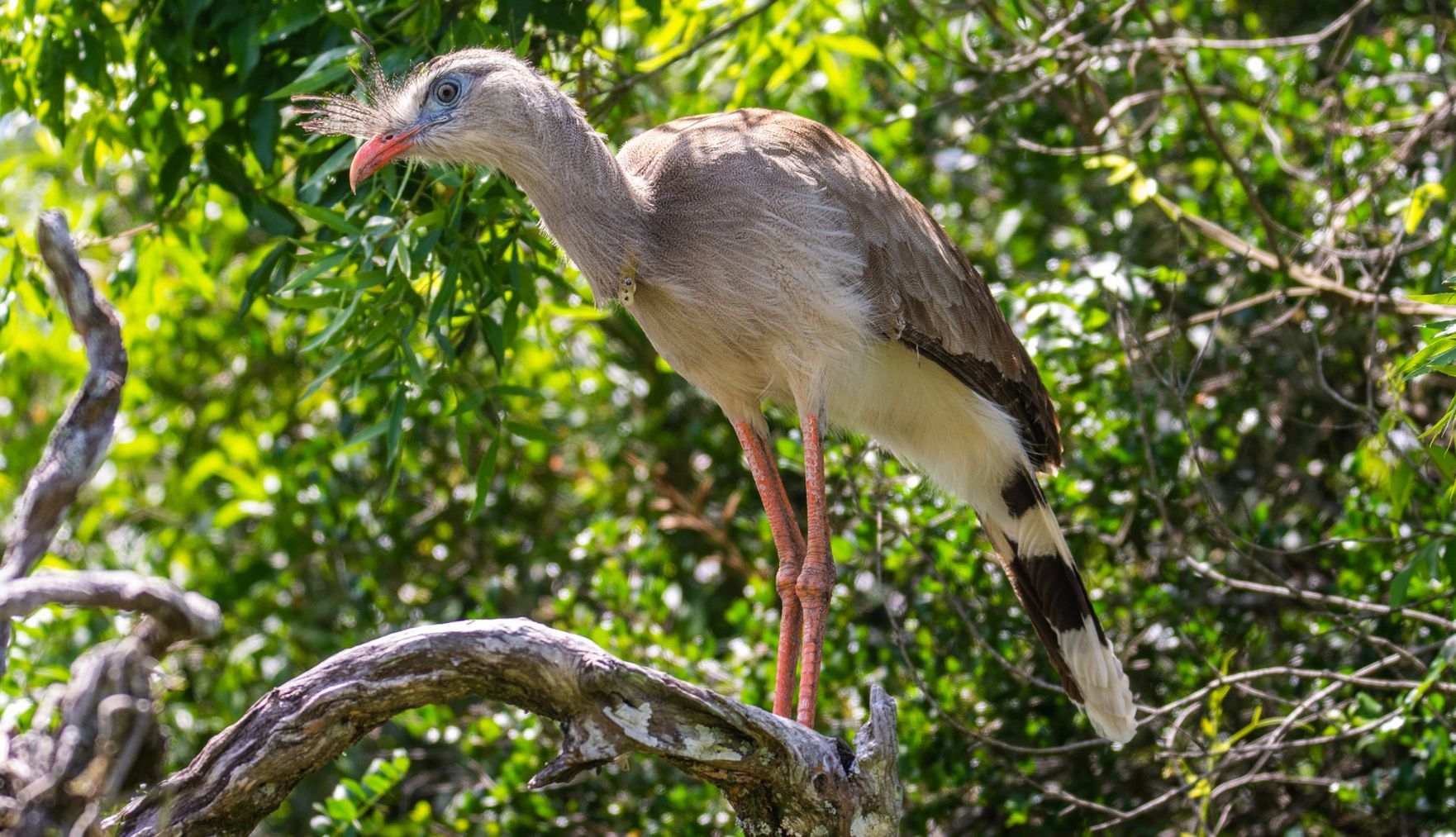
The red-legged seriema ( Seriema cristata ) is a landbird of open spaces in the Chaco region and the Espinal Forest. It feeds on worms, spiders, insects, and small vertebrates such as lizards, snakes, and rodents, which serves to control their populations.
The red-legged seriema disappeared from wide swaths central and northern Argentina, including the Province of Corrientes, where it survives in the southeastern corner. In Rincón de Socorro (in Iberá Park) we began an experimental project to reintroduce the species in 2018.
The first three individuals are in a large, pre-release cage in the Rincón del Socorro Reserve. Two of them are a pair and have attempted to reproduce, building a nest and even laying eggs, although there still have not been any hatchlings. We are hoping to add more individuals to start an initial nucleus of the species there.
Although the species is still present in Iberá, we are hoping to reinforce that population with the reintroduction of populations in areas of the park where none are found, such as in Rincón del Socorro.
The red-and-green macaw ( Ara chloropterus ) is a large bird with eye-catching, colorful plumage, which used to be found in the jungles of northeastern Argentina, including in gallery forests of the Paraná River and nearby areas in the north and center of Iberá Park. Its presence in Corrientes was recorded by numerous explorers. Currently it is extinct nationwide in Argentina. It is a frugivore, which means it plays an important role in the functioning of the jungle as it disperses large native fruit and nuts, including those of trees, palms and vines. In addition, the species’ large size and beauty make it of great interest for tourism.
As of the end of 2022, there is a nucleus of released red-and-green macaws at Cambyretá Gateway and another in Yerbalito Reserve, both in the north of Iberá Park, which represent the first reintroduction attempt of an extinct bird in Argentina. These captive-bred individuals had to go through intensive training before they could be released, which included acquiring flight and orientation techniques, learning how to recognize native fruits, and avoiding predators such as wild cats and foxes.
- In 2019 two established pairs at Cambyretá Gateway began to use and defend nesting boxes in different patches of forest, where they laid clutches, considered the first reproductive events of the project. While the eggs were broken a few days later, likely by the inexpert parents, we had proof that they had been fertilized. In this species it is common for first-time parents to have an unsuccessful first breeding attempt.
- In May of 2020 the first five red-and-green macaws—this time raised by Temaikèn and Ecoparque for the reintroduction project—arrived at the Yerbalito reserve for release, thus beginning the second nucleus of the species in Iberá.
- In September 2020 , one of the Cambyretá pairs laid three eggs that hatched a month later. While this number of eggs is not uncommon, it is unusual for more than one red-and-green macaw chick to hatch per brood. In this case, two hatched, and they were later found to be females. Their parents fed them, with assistance from Rewilding Argentina staff, who were there to support the first-time parents during the first months.
- In mid-January 2021 the chicks began to make their first attempts at flight. At ninety-one days old, the older sister left the nest and made her first flight attempt of about 500 meters; soon she began to spend her nights outside the nest and she and her father flew together for several kilometers towards a nearby forest. Five days later the younger sister was also able to fly and flew with her father several kilometers near the forest where they were born. We expect the parents to feed the chicks for some time until they are able to find fruit on their own and become independent. Both fledglings were fitted with VHF collars to monitor their movements and locations daily.
- At the beginning of October 2021 three red-and-green macaw pairs laid a number of eggs in Cambyretá, and of those, three hatched, with two surviving chicks. One of them was not being properly fed by its parents and had to be removed from the nest and hand-fed, and was then placed with another chick so its parents would adopt it and raise it as their own (this technique has been effective in other projects). Until the end of December, more eggs were laid. In all there were a dozen eggs laid, six chicks hatched, and four of them made it to the forty-eight hours mark.
- Between November and December of 2021 in Yerbalito, another pair formed and we installed a nesting box.
- In January 2022 several fires broke out that affected a large part of Iberá Park, including the forests in Cambyretá where the reproducing pairs and their chicks were located. Four chicks had to be evacuated and brought to Aguará Center, two of them with their parents. The two smallest chicks suffered smoke inhalation and died after a month and a half of veterinary care. The parents were released after two months. The other two chicks survived and the center raised them with puppets to avoid human contact. They learned to fly via training through a flight tunnel and to recognize and escape predators through aversive antipredatory training. After eight months of recovery, both chicks returned to the park to be released. They are currently free but feeding is still supplemented.
- The 2022 summer wildfires also affected the Yerbalito forests and burned part of a large pre-release cage, which had to be repaired. Throughout 2022, several red-and-green macaws were released in this area.
- · In October of 2022 , two females were added to the Cambyretá macaw flock, from Ecoparque in Buenos Aires. There are three pairs in the current breeding season and we are hopeful that they will soon have chicks.
Red-and-green macaws: Historical residents of Iberá
Red-and-green macaws have been hunted by humans for their showy plumage since historic times. In Corrientes there were at least two species of these large birds, the glaucous ( Anodorhynchus glaucus) , “guaá-hovy” in Guaraní, which is now extinct the world over, and the red-and-green macaw ( Ara chloropterus ), “guaá-pytá’’ in Guaraní, which became extinct in the province and nationwide.
The red-and-green macaw inhabited Corrientes’ jungle islets, palm groves, and gallery forests as well as those of other provinces like Formosa, Chaco, Santa Fe, Misiones, and Entre Ríos. Currently the populations of red-and-green macaws closest to Corrientes are more than 300 kilometers farther north, in Mato Grosso do Sul and Paraná (Brazil), in the far north of Paraguay, and in the southeast of Bolivia, all areas which are not adequately protected.
On a global scale, the red-and-green macaw is on the IUCN’s red list as a species of least concern, although in Argentina they are considered to be critically endangered even though there are no recent records of it and it is considered extinct.
Historical records that show the presence and subsequent disappearance of the red-and-green macaw in northern Argentina
Of the few mentions of the red-and-green macaw in our country are those made by Alcides D´Orbigny (1945), who captured one in 1827 during an excursion on the Paraná River near Ita Ibaté. Prior to that, Félix de Azara (1809) noted that between 1781 and 1801 the species lived near the city of Asunción and in all of Paraguay in Ñeembucú, and also mentioned its distribution in northern Argentina to twenty-eight degrees latitude. Sánchez Labrador also mentions its presence in southern Paraguay.
In 1881, Commander Fontana records it in Chaco, as does Enrique Lynch Arribalzaga in his 1920 publication “Birds of Chaco.” However, in 1895, Eduardo Holmberg noted “it is brought in quantity from Paraguay; I remember having seen it in Chaco; but González brought two from the Pilcomayo.” In June 1891, Bertoni (1901) commented on the capture of a specimen in the upper Paraná as follows: “I killed it while it was eating Esenbeckia guatambu fruits, with three other individuals of the same size (…) This species is often seen crossing the Paraná River; seeming to sleep on the Argentine coast and eating on the Paraguayan coast.” This note refers to a place on the Argentine coast in the northwest of Misiones. There are also records from 1883 for Santa Ana, in the department of Candelaria, and the Province of Misiones, until possibly 1917 when one of the last wild individuals was hunted in Argentina, in the Province of Formosa (Chebez, 2008).
What we learn from these historical accounts is that the species lived well in these regions forests, since there is mention of abundant species such as the timbó (pacara earpod tree) and the macaúba palm for food and nesting. But at the same time, it’s notable that the naturalists mention the macaws for food or for use as pets or offerings. Taking this together with the boom in human settlement in the area between Asunción and Corrientes, and the livestock activity that took place in the 1700s and 1800s, the reasons that led to the species’ extinction are evident.
To get an idea of how human activities have affected the northwest of Corrientes, one only need consider that the number of cattle at the time in that specific area is almost equal to that found in the whole province nowadays. It’s also important to point out the ways in which wars and guerrilla activity have ravaged the northern region of Corrientes since then.
The chance to recover one of the greats
The Iberá Natural Reserve represents a seldom-seen opportunity to recover this species in our country. Currently the reserve has a large expanse of protected habitat with enough forest islands to support a stable population of red-and-green macaws both in the provincial park and in the privately-owned reserves. In addition, Iberá has a number of institutions and experts in restoration of extinct and threatened species such as the giant anteater, the pampas deer, and the collared peccary that they can rely on.
Reasons to recover the red-and-green macaw include that they fulfill a key role in the functioning of the forest islands by controlling the supply of and dispersing the large fruits and seeds from native trees. It also would mean recovering a species that is extinct in Argentina and conserving a wild population south of the species’ global geographic distribution. As one of the most spectacular birds in the Americas, it would represent a major tourist attraction, contributing to the development of local communities, while also recovering a cultural value of the people of Corrientes that remains present in art and historical accounts, including paintings on the dome of the iconic Vera Theater in Corrientes.
From captivity to freedom in Iberá
Our project is populated by red-and-green macaws that come from different zoos and breeding centers around the country. These individuals are transferred to Aguará Center in the Province of Corrientes, where we consolidate groups and do the necessary health checks to prevent spread of disease at release sites. After the health checks, the red-and-green macaws begin intensive training that helps them to develop their flight skills and flying muscles. From the moment they arrive at the center, they are also given native fruit so they can recognize it as food when they are released.
Before they are brought to the release site, they are fitted with small radio transmitters that allow us to track each individual in the countryside. They are then transported to Cambryretá, a gateway to the north of Iberá Park, located south of Ituzaingó and Villa Olivari. There they are housed in small mobile cages located within different forest patches for a couple of days so they can acclimate to their new environment. These cages are left open, with trays of food nearby that encourage them to explore the environment. The trays are progressively placed farther from the release cage until they become fully independent. Post release, and as they fly farther, the macaws are monitored by project staff members to ensure a successful adaptation to the natural environment, and to track their reproduction and long-term survival. We also place artificial nests in different tall trees of the forest for pairs to use until they learn to find hollows in the trees and palms nearby.
The collared peccary ( Pecari tajacu ) is a distant relative to pigs and fulfills an important role in the dispersal of native fruit and seeds. They became extinct in many parts of the center and north of the country, including the Province of Corrientes where there are now several reintroduced populations in the Rincón de Socorro Reserve, San Alonso, Carambola, San Nicolás, and Yerbalito, inside of Iberá Park.
By the year 2022, peccaries born in captivity, donated from institutions in other provinces such as Buenos Aires, Tucumán, Salta, La Rioja, Córdoba, and Mendoza, have been released in the Rincón de Socorro Reserve (beginning in 2015 ) and San Alonso Reserve (beginning in 2017 ), where there are now self-sustaining populations. Two nuclei were begun in 2018 in the San Nicolás and Carambola Reserves and another one in 2021 in Yerbalito. Currently, more releases are underway and births are recorded every year.
An adaptable mammal extinct in Iberá
The collared peccary is from the tayassuidae family, to which wild boars also belong, and is widely distributed between southern United States and central Argentina. It is a very adaptable mammal that can live in deserts, dry forests, and rain forests from sea level up to 2400 meters. Although they also live in open grasslands, they seem to need a certain amount of tree or plant cover to shelter and feed on. Their varied diet consists of nuts, leaves, tubers, and to a lesser extent, other animals.
The collared peccary is very adaptable to human presence and also resistant to moderate changes in its environment. For example, in the United States it is not unusual to find them in cities and transitional areas. As with other peccaries, the collared peccary is a sociable species that lives in groups that vary from two to thirty individuals. Their ranges vary from 24 to 800 hectares.
The species is considered extinct in Corrientes, Entre Ríos, most of Santa Fe, southern Córdoba, and southeastern Santiago del Estero, though it is still relatively abundant in some sectors of Santa Fe, north-central Misiones, Chaco, Formosa, Tucumán, northern Santiago del Estero, eastern Jujuy, Salta, southeastern Catamarca, southern La Rioja, eastern San Juan, western and northern Córdoba, San Luis, and northeastern Mendoza.
It was historically noted in the jungle islets of Puerto Valle (northeast of the Iberá Nature Reserve) within the Iberá region, from where it disappeared in the mid twentieth century mainly due to hunting and logging. In 1820 the French explorer D’orbigny noted that the species was frequently seen in the forests of the Province of Corrientes.
In summary, the collared peccary is a highly adaptable mammal that lives in variably-sized groups that require territories ranging from dozens to a few hundred hectares in ecosystems with a certain amount of tree cover. In Argentina there still are abundant, healthy populations of these species although it has also become extinct in several regions, including the Province of Corrientes.
A small bird among the reeds
The austral rail ( Rallus antarcticus ) is a bird mostly unknown to locals that lives in the wetlands of the Patagonian Steppe.. It explores the reeds where it lives by walking or in small bursts of speed, where it feeds on invertebrates. In favorable conditions it can have two broods of chicks in the summer. It is rarely seen flying and in extremely cold winters it migrates to unknown locations in the north.
In Patagonia Park, Argentina, we are working to recover the degraded reed beds from which the austral rail has disappeared to reintroduce individuals and generate new populations. Through monitoring, we hope to learn about this species’ migratory routes and habits in Patagonia.
- In 2018 began the austral rail monitoring project, using camera traps, with the goal of understanding the species habitat requirements to implement changes to help them recover their populations.
- In 2019 we captured and tagged ten individuals in the reed bed at El Unco Biological Station.
- In 2020 we began to restore the reed bed in Caracoles Canyon, by rerouting streams and removing embankments. In just a few months, the reed area grew from eight to twenty-seven hectares.
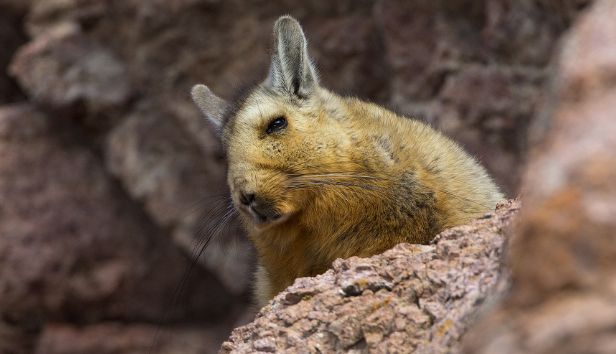
The sentinel of the canyon
The Wolffsohn’s viscacha ( Lagidium wolffsohni ) is a rodent weighing up to 3.5 kilograms with a distribution limited to the west of Santa Cruz and nearby areas in Chile. It lives in rocky areas and canyon cracks or cliffs, feeding on the small plants found near their shelters. During the day individuals come out of hiding to bask in the sun in open areas. They are more active at night.
In Patagonia Park, Argentina, we are working to recover the populations of these species in the rocky walls from which they have disappeared due to human activity, mainly hunting.
- In 2018 we began the monitoring project of Wolffsohn’s viscacha with camera traps in Patagonia Park.
- In 2019 we captured and tagged ten individuals with VHF collars to collect information about the biology and ecology of this emblematic species.
- In 2020 we translocated the first family group—a male, a female, and one pup—from the Pinturas Canyon to the Caracoles Canyon.
- As of 2022 , forty-eight Wolffsohn’s viscacha were captured and fitted with monitoring devices. Of these, thirty-two were translocated to eleven walls in different sectors of the Caracoles Canyon within Patagonia Park.
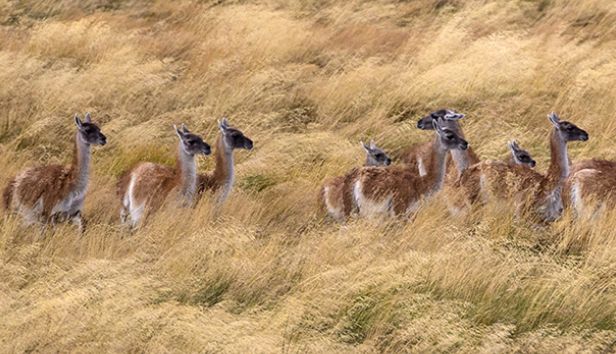
The ancestral Patagonian migrator
The guanaco ( Lama guanicoe ) is a diurnal South American camelid and the largest herbivore in Patagonia, weighing up to 130 kilograms. During the summer it forms small family groups with one adult male, several females, and their young. In winter they can be seen in groups numbering a few hundred despite their notable population decline in recent decades.
The guanco is of crucial importance to the human occupation of the region, where it shaped the culture of the native people for millennia. Hundreds of petroglyphs etched by ancestral guanaco hunters, whose representations of landscapes and large herds of these species that defined this culture remain in good condition, remain on the Buenos Aires Lake Plateau.
In Patagonia Park we work to recover the spectacle of the great guanaco migrations between their summering sites on the plateaus and their wintering sites in the canyons.
- In 2019 we began the guanaco population monitoring project, capturing sixteen guanacos near Patagonia Park and fitting them with satellite collars.
- As of 2022 , our team has collared forty-one guanacos. Some of them have contributed three years of data on the spatial ecology of the species.

La Ascensión Gateway
The La Ascensión Gateway is one of the best-known access points for Patagonia Park, Argentina. It stands at the site of a historic sheep ranch, where over the years we have renovated the installations for public use. An old school was reimagined as the visitor center, a cultural center was created in the former shearing shed, and workshops are now used by local entrepreneurs who offer nature-based tourism.
The gateway also offers a wide array of trails of varying difficulty, which connect the visitor center with Buenos Aires Lake and the plateau of the same name, home to lagoons where the threatened hooded grebe nests.
This area is home to guanacos, foxes, skunks, and pumas in addition to being an excellent place for birdwatching. Lesser rheas, tinamous, tyrants, wrens, meadowlarks, thrushes, upland geese, and black-faced ibis are easily seen in different areas of this sector. Birds of prey, and in the lagoons a wide variety of ducks, swans, flamingos, coots, and grebes are also found.
This gateway also has a wild campground close to Buenos Aires Lake, called Caburé, with barbecue areas Moreover, two historical ranch posts have been refurbished into shelters for overnight stays and visitor camping. Visitors should consult with the National Parks Administration about the use of the Caburé campground and the shelters at the La Ascensión Gateway.
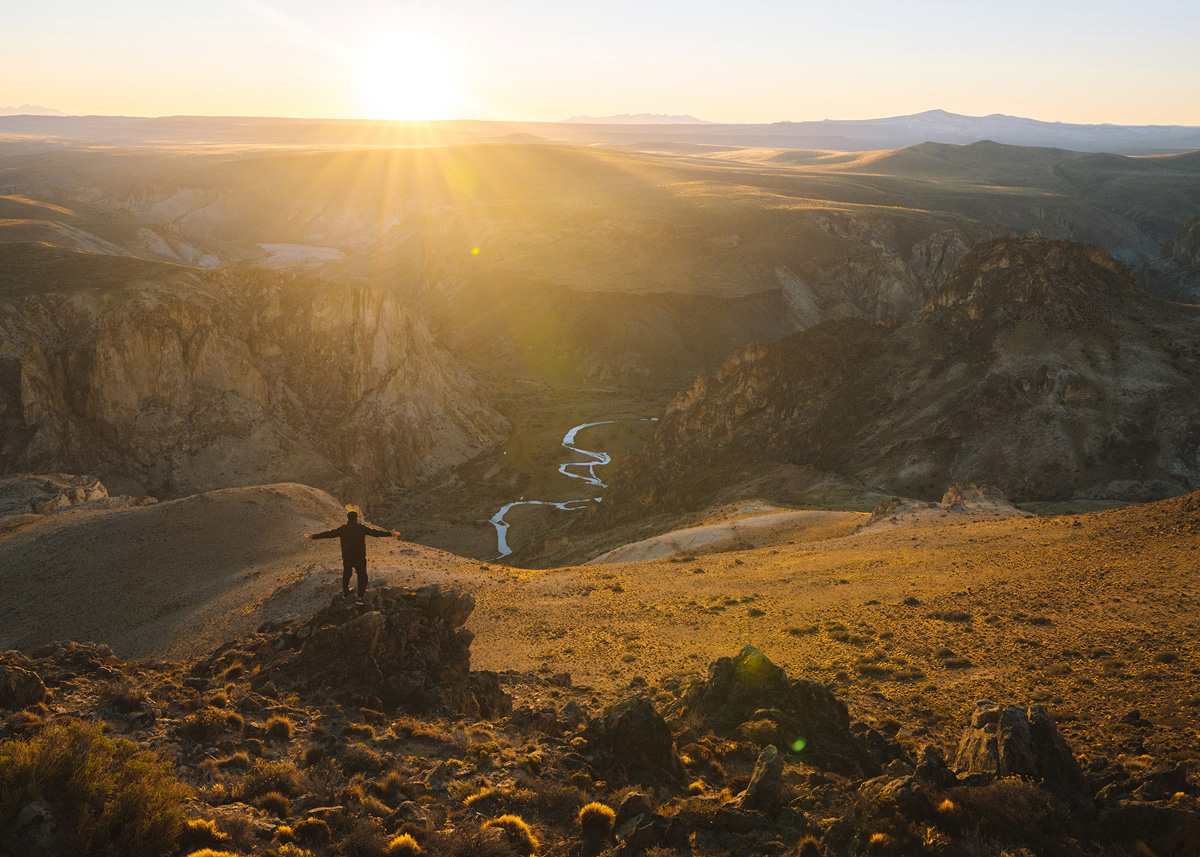
Cañadón Pinturas Gateway
The Cañadón Pinturas Gateway is located on epic Route 40, just fifty-four kilometers south from the town of Perito Moreno.
This new gateway is home to a surprising diversity of wildlife and landscapes, which visitors can explore via a network of more than 20 kilometers of self-guided trails of varying difficulty.
These same canyons that inspired the first hunters and gatherers to leave their mark over seven thousand years of occupation in the Cueva de las Manos, Alero Charcamata, and other sites in the gateway are today the workplace of our rewilding team, with the support of Freyja Foundation, to restore environments, wildlife, and their ecological interactions, and to promote nature experiences though hiking and observation of large mammals.
The gateway has a lodge, named La Posta de Los Toldos, where different entrepreneurs from nearby communities offer different nature-based tourism options. The paid campground El Mollar has six spots for tents and vehicles, with an indoor common area with a woodstove, tables and chairs, and bathrooms with showers.
The Cañadón Pinturas Gateway also has two wild camping areas. One of them, La Señalada, is paid and has six wind-sheltered campsites for tents, as well as bathrooms, a central firepit, and a store selling basic supplies. The other, La Confluencia, is ten kilometers from the trailhead Huella de Gradin on the banks of the Pinturas River in the canyon. It has six campsites and latrines.
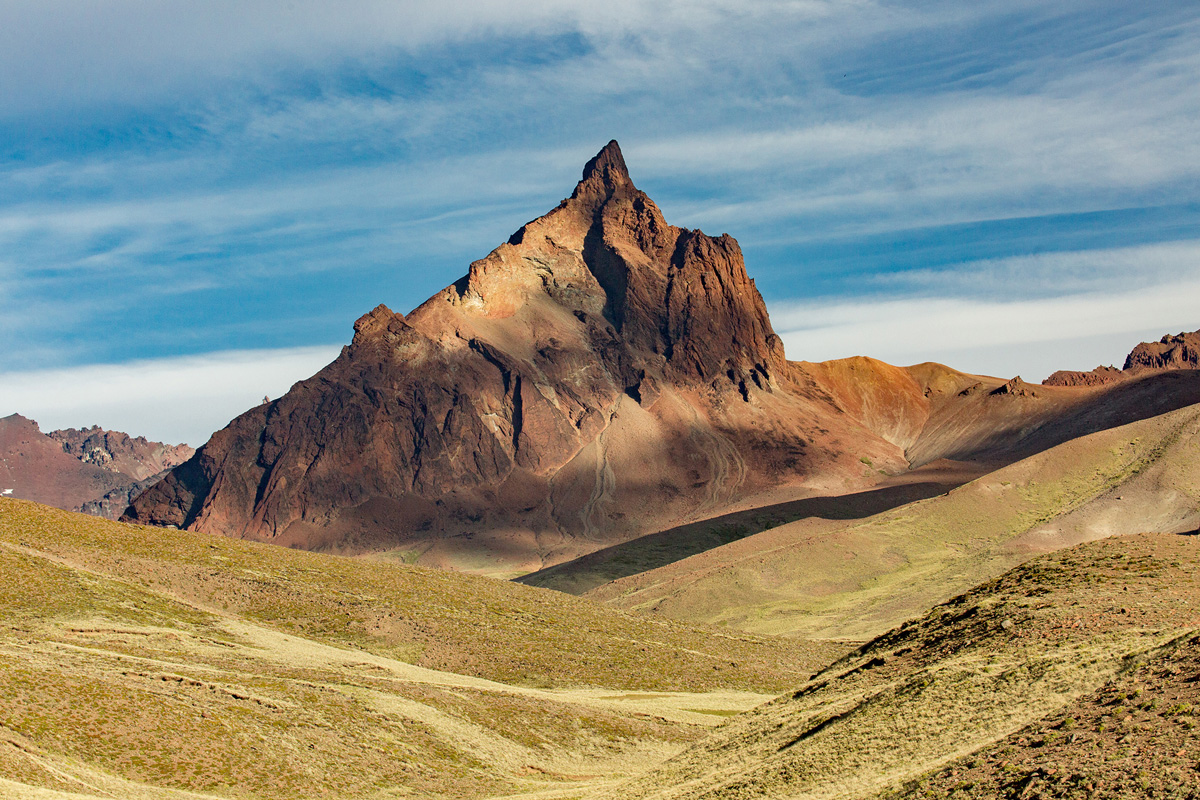
Scenic Route 41
Provincial Route 41 or Scenic Route 41 links the towns of Los Antiguos and Lago Posadas; and now continues through the Oro River Valley to Perito Moreno National Park.
This spectacular road crosses through ever changing landscapes of forest, steppe, high grassland, and mountain chains. When traveling it from Los Antiguos south, the drive is along the Jeinimeni River—the natural border with Chile—Monte Zeballos Glacier, Ghío Lake, and the Colorado, San Lorenzo, Lápiz, and Colmillo mountains. En route, the outline of the Buenos Aires Lake Plateau looms in the distance, and there are plentiful opportunities for birdwatching, with species including the black-necked swan, the upland goose, several types of ducks, and the omnipresent Andean condor.
El centinela del cañadón
El chinchillón anaranjado ( Lagidium wolffsohni ) es un roedor de hasta 3,5 kg de peso con una distribución restringida al oeste de Santa Cruz y zonas aledañas de Chile. Localmente conocido como ardilla, habita en los roquedales y grietas de cañadones o acantilados, alimentándose de las pequeñas plantas que crecen cerca de sus refugios. Durante el día prefiere asolearse en zonas expuestas y se muestra más activo durante la noche.
En el Parque Patagonia Argentina estamos trabajando para recuperar las poblaciones de esta especie en paredones rocosos de donde ha desaparecido por causa de acciones humanas, en especial, la caza.
- En 2018 comienza el proyecto de monitoreo de la población de chinchillón anaranjado con cámaras trampas en Parque Patagonia.
- En 2019 inician las capturas y marcado de 10 individuos con collares de señal VHF, con el objetivo de obtener información sobre la biología y ecología de esta emblemática especie.
- En 2020 translocamos la primera familia —un macho, una hembra y una cría— del cañadón Pinturas al cañadón Caracoles.
- Al 2022 , 48 chinchillones fueron capturados para colocarles un dispositivo de monitoreo, de los cuales 32 fueron translocados a 11 bardas en diferentes sectores del cañadón Caracoles en el Parque Patagonia Argentina.
El migrador ancestral de la Patagonia
El guanaco ( Lama guanicoe ) es un camélido sudamericano de hábitos diurnos y el mayor herbívoro de la Patagonia, llegando a pesar 130 kg. Durante el verano forma pequeños grupos familiares compuestos por un relincho (el macho), algunas hembras, y sus chulengos (las crías). En invierno se los puede ver en grupos de a cientos de individuos, a pesar de que sus poblaciones han disminuido en forma notable en las últimas décadas.
El guanaco tiene una importancia trascendental en la ocupación humana de la región, donde moldeó la cultura de los pueblos originarios por milenios. Sobre la meseta Lago Buenos Aires se encuentran cientos de petroglifos realizados por pueblos ancestrales de cazadores de guanacos, cuyas representaciones de paisajes y de grandes manadas de esta especie que definió su cultura permanecen casi intactas.
En el Parque Patagonia trabajamos para recuperar el espectáculo de las grandes migraciones del guanaco entre los sitios de veranada ubicados en las mesetas y los sitios de invernada localizados en los cañadones.
- En 2019 comienza el proyecto de monitoreo de la población de guanacos con la captura y colocación de collares satelitales a 16 guanacos en la región del Parque Patagonia.
- Al año 2022 , nuestro equipo lleva 41 guanacos equipados con collares satelitales, algunos de ellos aportaron tres años de datos sobre ecología espacial de la especie.
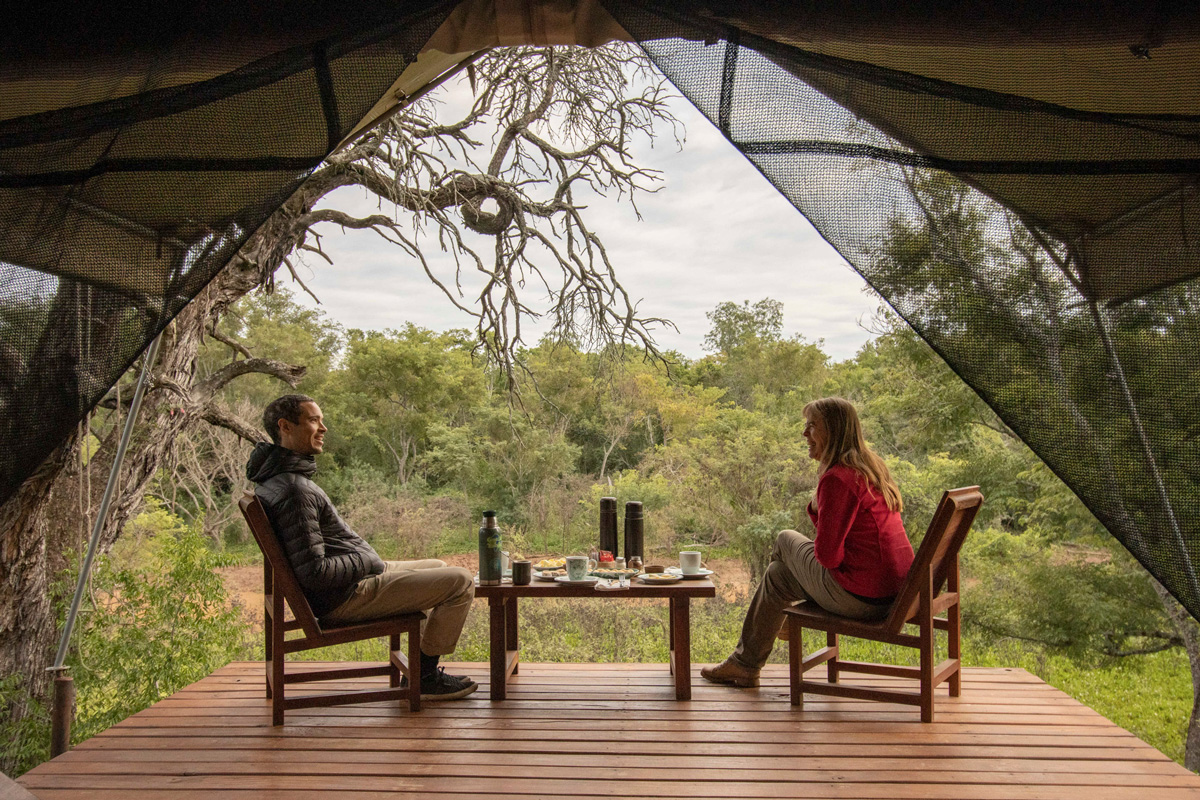
La Armonía Gateway
La Armonía Gateway is located on Provincial Route 9, close to the land entry to El Impenetrable. There, together with the Institute of Tourism of Chaco and the Association of Neighbors of La Armonía, we work at the El Bermejito Nature Tourism School and Workshop providing training in various trades for young people, women, and men seeking new ways to make a living related to wildlife watching tourism.
Close to the La Armonia Gateway, the community runs the El Bermejito Glamping site, which has three fixed tents, hot water showers, and a wooden deck with forest views. They also serve breakfast.
In town, visitors can rent bikes and ride between points of interest near the national park or visit the countryside, where locals offer guided walks through the forest and along the Teuco River. They also run guided kayak excursions, and from January to June, when the river is high, they run two-to-three day kayak trips down the Teuquito River
In addition, the cooks from El Impenetrable offer dishes with flavors from the Chaco forest in their homes and in the town squares, which also serve as meeting places at lunch and dinner time.
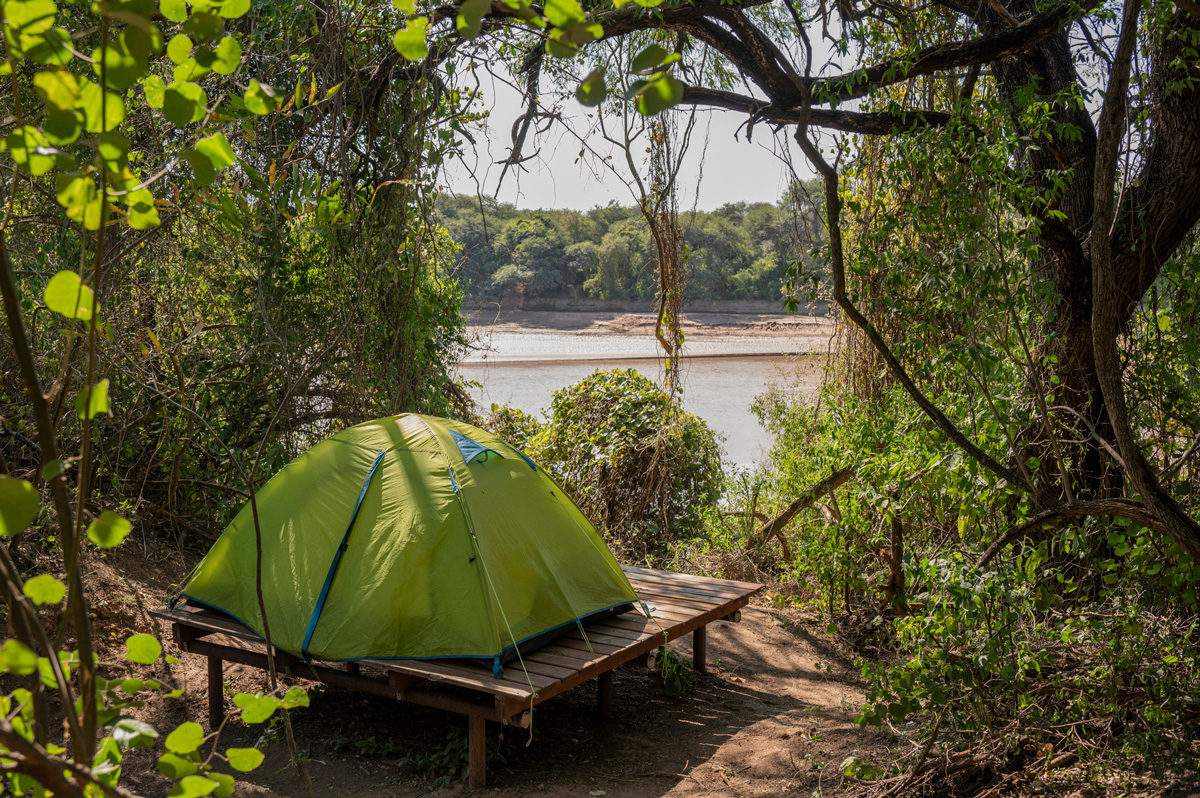
La Fidelidad Gateway
La Fidelidad Gateway is inside El Impenetrable, along the Teuco River. It has a free public-use campsite that holds ten tents. It also has a public barbecue pit, bathrooms equipped with hot water, and a restaurant that serves lunches, dinners, cold drinks, water, and other essentials. The campsite is locally-run, thus complementing the income of the families within the community.
This gateway has access to trails that run along the river through gallery forests, ideal for wildlife watching. Visitors can expect to see coatis, peccaries, giant anteaters, tapirs, and other large vertebrates, in addition to a wide array of birds.
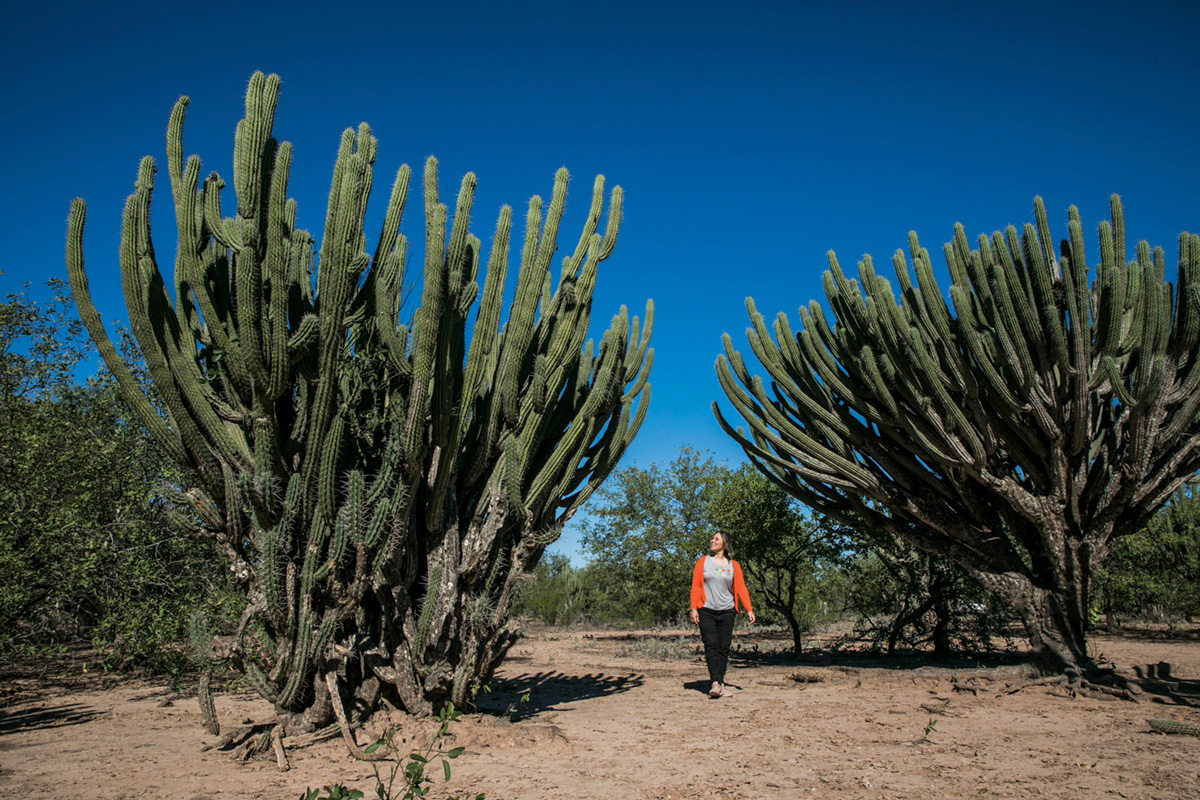
Future Los Algarrobos Gateway
Located adjacent to the town of Nueva Población, the future Los Algarrobos Gateway will have a primitive camping site with multiple spaces to set up tents along the Tequito River. It will be run by entrepreneurs from the town who can offer kayak excursions and guided walks through the park.
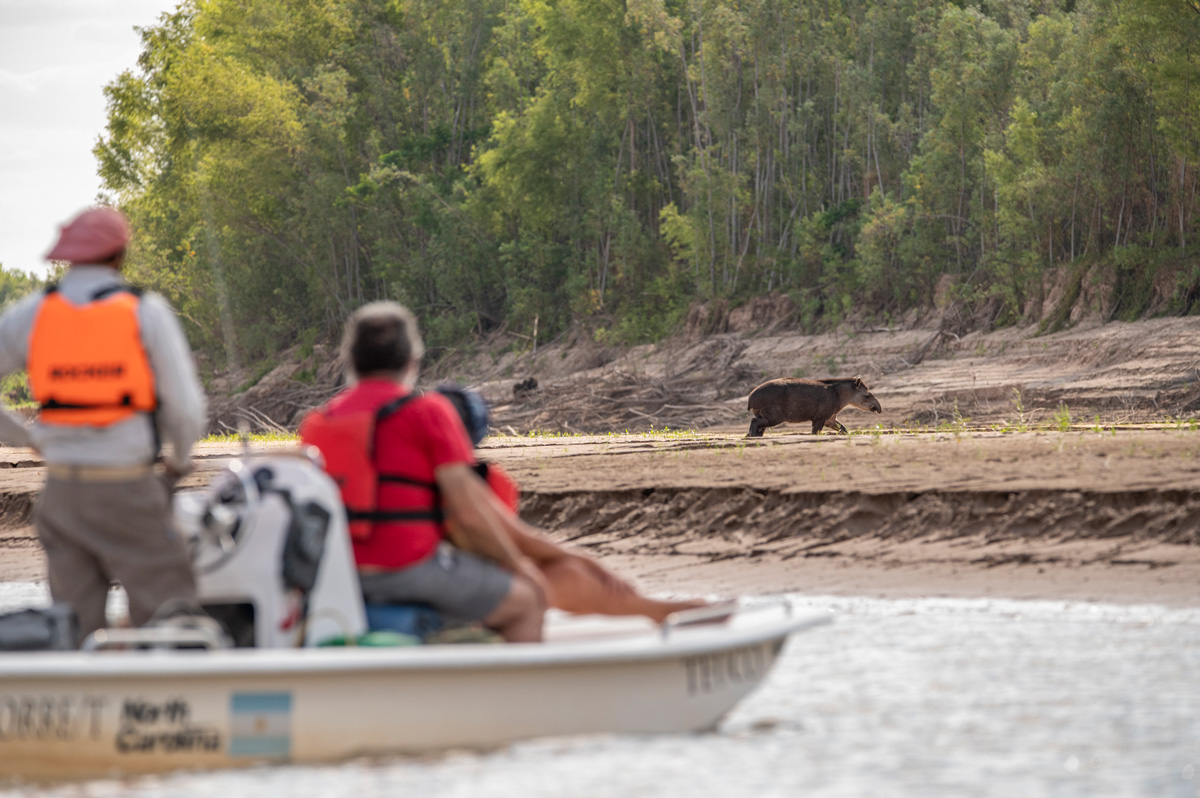
Los Palmares Gateway
The Los Palmares Gateway is located just outside the northern border of the national park, along the Teuco River. The gateway has a glamping site with three fixed tents that each sleep three, a wooden deck with views over the Teuco River, and a dining tent. The service there is full-board and there are river boat excursions that end at the La Fidelidad Gateway. The town of Nueva Pompeya has a runway suitable for small planes.
A key species in danger of extinction
The jaguar ( Panthera onca ) is virtually extinct in the Argentine Chaco. Researchers believe that there are only fifteen to twenty individuals in this expansive territory. The last records of the species are solitary males, many of whom have been hunted.
Jaguars are essential to the health and integrity of wild ecosystems as they regulate the populations of medium-sized predators and large herbivores, which affects the environment and the vegetation. They also have potential to be a first-rate attraction for tourists coming to Argentina who are interested in native wildlife and natural landscapes.
In El Impenetrable we have been working since 2019 to rebuild jaguar populations and thereby reverse its extinction in the Argentine Chaco.
In 2019 jaguar tracks were sighted in El Impenetrable National Park. Rapid response allowed us to use camera traps to record the individual, and to capture and fit him with a radio collar. Since that day, that male—named Qaramta—is monitored daily through satellite technology, as he moves between the former La Fidelidad ranch in Chaco (current day El Impenetrable National Park) and Formosa.
A project approved in June 2020 allowed us to mate Qaramta with Tania, a captive-raised female. The goal was to begin a sustainable jaguar population in El Impenetrable starting with one of the last remaining individuals found in the region.
In September 2021, Tania and Qaramta were brought together in a specially designed corral. Afterwards Qaramta was released, and a hundred days later, Tania gave birth to two healthy cubs, Takajay and Nalá.
When they were one year old, the cubs were separated from their mother so they could become independent. From birth, they were raised with the minimum possible amount of human intervention, learning from their mother how to hunt. When they reach adulthood, they will be released, bringing hope to the future of this species in this part of the Chaco.
In 2022 we transported Mbarete—a female jaguar from Corrientes— to mate with Qaramta, which yielded the cubs Chaco and Taragüi. Mbarete was then returned to Iberá National Park with her two cubs, to be released later. The cubs bring the genes of their father, Qaramta, to increase genetic diversity in this incipient population.
In 2023 , Qaramta and Tania mated once more, and three cubs were born. As with Nalá y Takajay, they will later be released in the park to increase the population in that protected area.
Portal La Armonía
El Portal La Armonía se encuentra sobre la Ruta Provincial 9, vecino al acceso terrestre del Parque Nacional El Impenetrable. Allí, junto al Instituto de Turismo de Chaco y la Asociación de Vecinos de La Armonía, trabajamos en la Escuela-Taller de Turismo de Naturaleza El Bermejito para brindar capacitaciones sobre diversos oficios orientados a jóvenes, mujeres y hombres que buscan nuevas alternativas productivas vinculadas al turismo de observación de fauna.
Próximo al Portal La Armonía, la comunidad gestiona el Glamping El Bermejito, que cuenta con tres carpas fijas para tres personas, ducha con agua caliente, deck de madera con vista al monte y servicio de desayuno.
En el paraje es posible alquilar bicicletas y recorrer parajes vecinos al Parque Nacional, o visitar los campos donde la gente del lugar ofrece caminatas guiadas recorriendo el monte y a la vera del río Bermejito. También se realizan paseos en kayak —únicamente con guía—, y de enero a junio, cuando el río está crecido, pueden organizarse travesías de dos o tres días bajando por el río Bermejito.
Más aun, las cocineras de El Impenetrable ofrecen sabores del monte chaqueño en sus casas y en las plazoletas de los parajes, que funcionan como lugar de reunión y de almuerzos y cenas.
Portal La Fidelidad
El Portal La Fidelidad se encuentra dentro del Parque Nacional, a la vera del río Teuco. Cuenta con un camping de uso público y gratuito con capacidad para 10 carpas, una parrilla de uso libre, baños completos con ducha y un comedor que ofrece almuerzos, cenas, bebidas frías, agua y otros productos esenciales. El camping está coordinado por la gente del lugar que, a través de este servicio, complementa los ingresos de sus familias y de la comunidad.
Este portal cuenta con senderos que bordean el río a través de selvas en galería, ideales para el avistaje de fauna: allí pueden encontrarse coatíes, pecaríes, osos hormigueros gigantes, tapires y otros grandes vertebrados, además de una abundante diversidad de aves.
Futuro Portal Los Algarrobos
Ubicado próximo a la comunidad de Nueva Población, el futuro Portal Los Algarrobos contará con un camping agreste con varios espacios para el armado de carpas, a la vera del río Teuquito. Será administrado por los emprendedores del Paraje de Nueva Población, quienes podrán ofrecer paseos en kayak y paseos guiados dentro del Parque.
Portal Los Palmares
El Portal Los Palmares se ubica en el límite norte del Parque Nacional (fuera del área protegida), sobre el río Teuco. El portal alberga un glamping con tres carpas fijas, cada una con tres camas, deck de madera con vista al río Teuco, más una carpa comedor. El servicio incluye todas las comidas y se ofrecen paseos en lancha por el río, finalizando en el camping La Fidelidad. En el pueblo de Nueva Pompeya hay una pista de aterrizaje para aviones pequeños.

Pinos Guachos, whose seeds easily disperse from forests, start to appear along roads, on top of dams, and even in streams.
For many years hunting animals for meat and hides was the greatest threat to Iberá’s biodiversity. When the provincial reserve was created there was better control over poaching, and many shellfish collectors were trained as park rangers. As a result some species began to recover their former populations and are now commonly seen.

The bighorn pig, an invasive species in Iberá, can attack small mammals, prey on nests, and browse and dig up the land looking for roots to feed on as well as destroy planted crops.
Invasive species
Invasive species are behind many species’ extinction across the globe. Before considering introducing a new species, animal or plant, whether for forestation or to breed or keep as pets, the risk of seed dispersing and escapes must be evaluated. This is especially important in Iberá due the fact that as a marshland, it is easy for invasive species to spread.
This occurs in some areas of Iberá with the domestic pig (and its non-domestic cousin, the wild boar), and more recently with spotted and red deer, which were brought for sport hunting and escaped. With regard to plants, the white cedar, privets, southern silky oak, and some pines are also taking root in Iberá. Once they adapt to the soil and climate, they tend to reproduce more quickly than in their natural habitats and can modify the ecosystem to self-perpetuate.
Recurring Fires
Fire is an important natural part of the grasslands’ dynamic in Iberá. It is now necessary to recreate this dynamic, respecting its natural frequency to allow grasslands recovery by eliminating accumulated dry vegetation and shrubs, which impede new shoots from breaking ground.
In the eagerness to have tender grass every year, farmers often burn their fields, which reduces natural environments’ resilience, and can result in the loss of young during wildlife breeding season.
On Rewilding Argentina’s lands, we carry out prescribed burns, considering the natural recovery times of burned pastures and the reproductive seasons of the flora and fauna species that thrive there. Fire is an essential part of both the conservation of nature and cattle ranching; thus managing it responsibly will reduce conflict between different types of production and interests.
Park Rangers
In order to keep an eye on a territory as expansive as Iberá Park, with its many uses and multiple access points, we need to have several command centers for park rangers, technicians, and maintenance staff. To this end, the Province of Corrientes and the national government work with a shared vision of wildlife management and tourist services. In addition, we have increased the number of park ranger stations and national park rangers have been added to help protect the entire territory.
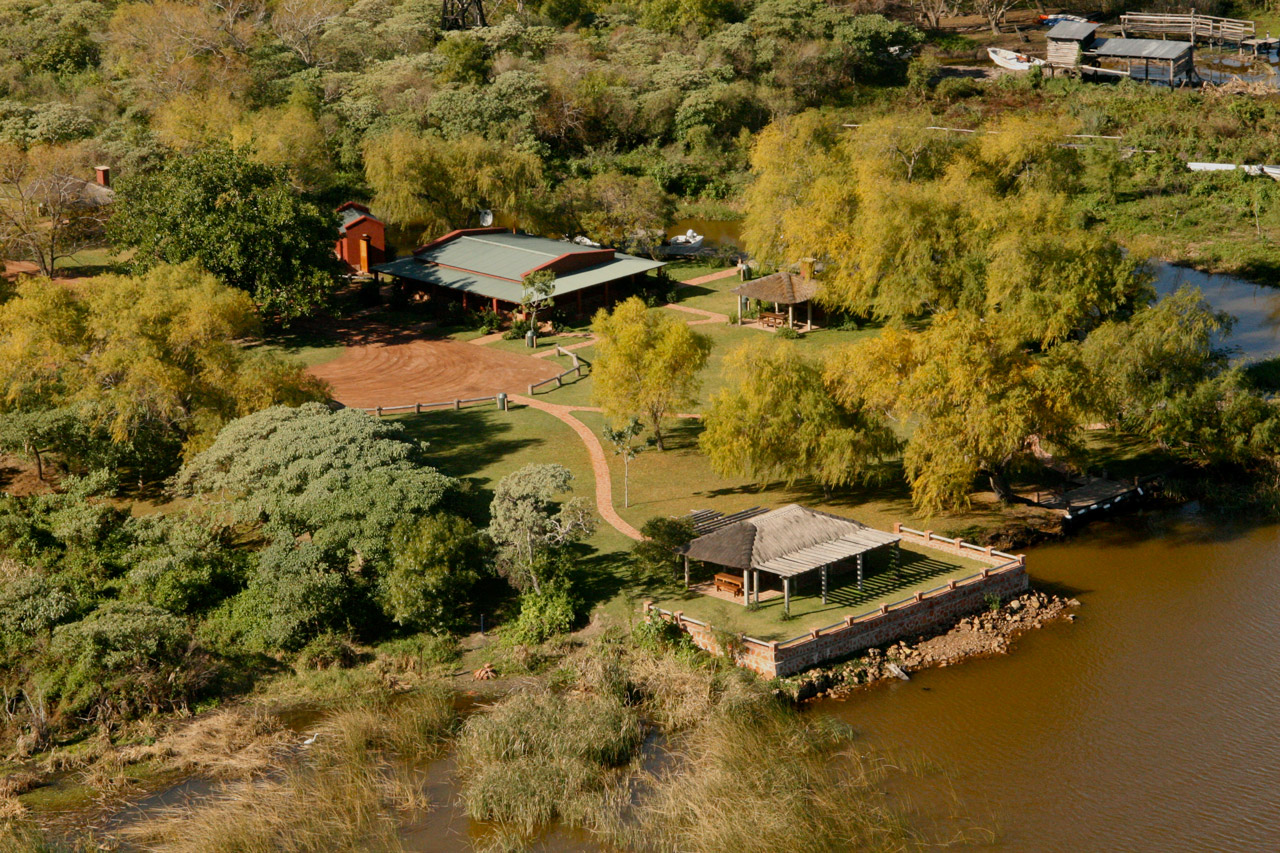
Laguna Iberá Gateway
The Laguna Iberá Gateway is one of the most developed for tourism, with a wide range of lodging, different nature-based activities, and excursion and meal options.
In 2009, Rewilding Argentina donated the first campground in this gateway to Colonia Carlos Pellegrini. The campground, located near the lagoon, has barbecue areas, grills, and bathrooms. From here, visitors can explore this spectacular body of water by boat or kayak.
In addition, Rewilding Argentina also donated two visiting areas to expand the recreation area, thus distributing visitors and minimizing their impact. The first such area, Lobo Cua has trails for hikers, cyclists, and horses, as well as grills, toilets, and a dock. It is managed by the NPA (National Parks Administration) and the Province of Corrientes. Paso Claro, the second area is managed by the NPA and has trails and elevated lookout points that allow visitors to observe a large variety of birds and land animals.
- Access Point: Colonia Carlos Pellegrini.
- Distance from Corrientes: 230 kilometers on paved roads to Mercedes (Routes 12 and 123) and another forty kilometers of paved roads on Route 40 followed by eighty kilometers of dirt and gravel roads to Colonia Carlos Pellegrini.
- Attractions: This is the most well-known gateway for the Iberá Wetlands. Iberá Lagoon and tours are accessed from the village. Tourist facilities (lodging, food services) and wildlife viewing are guaranteed.
- Activities: excursions, boat trips, kayak rental, horseback riding, photo safaris, stargazing, and nighttime wildlife spotting. The lagoon’s campground has public bathrooms and barbecue areas.

San Nicolás Gateway
Visitors are greeted at the San Nicolás Gateway by a large, beautiful hillside covered by grasslands, wetlands, and subtropical forests, a far cry from the surrounding forest plantations.
The San Nicolás Gateway campground was the second built and donated by Rewilding Argentina, and is managed by the NPA. Built on a former cattle ranch, it has barbecue areas, grills, and bathrooms. Hiking and horse trails, and a road bring visitors to the port where they can enjoy the water and take canoe trips on the Carambola Creek, propelled by pole by local boatmen.
- Access Point: San Miguel.
- Distance from Corrientes: 150 kilometers on paved roads (Routes 5 and 118), and twenty-nine kilometers on sand and dirt roads to the gateway. After heavy rains, check road conditions with the tourism office at the entrance of San Miguel. High-clearance or four-wheel-drive vehicles are recommended.
- Attractions: easily-spotted wildlife watching, look for caimans, capybaras, deer, foxes, and a large variety of birds.
- Activities: Camping area with bathrooms and a barbeque area. There is no place to buy supplies so visitors should stock up on food and drink or make previous arrangements with local service providers for a regional lunch or barbecue. Pole-driven canoe trips run by locals for wildlife watching, hiking trails, horseback riding, swimming with horses, snorkeling, and bike and kayak rentals. In San Miguel visitors can go to the Casa del Artesano and museums.

Cambyretá Gateway
The landscape around the Cambyretá Gateway is flat with flooded areas, making it an excellent place to spot Iberá’s aquatic birds, such as storks, roseate spoonbills, and herons.
Campground Monte Rey was the third donated by Rewilding Argentina, in 2014. It follows in the same architectural style with grills and bathrooms, and also has lodging and is a focal point for tourist services. It is a jumping off point for walking, horseback riding, and driving excursions.
Cambyretá is the only place in Argentina where visitors can see wild red-and green-macaws, a bird that was extinct in Argentina for more than 150 years and which today draws thousands of visitors annually.
- Access points: Ituzaingó and Villa Olivari.
- Distance from Corrientes: 230 kilometers on paved roads (Route 12) and 30 on dirt roads to the campground. From Posadas it is ninety kilometers. Check road conditions with park rangers after heavy rains.
- Attractions: Hiking and vehicle-based wildlife watching along roadsides and in bodies of water.
- Activities: Camping areas with bathrooms and barbecue areas. Camping subject to prior coordination with park rangers. There is no place to buy supplies so visitors should stock up on food and drink beforehand. In Ituzaingó visitors can go to the Iberá Bird Center, Northern Corridor Interpretive Center, and museums.
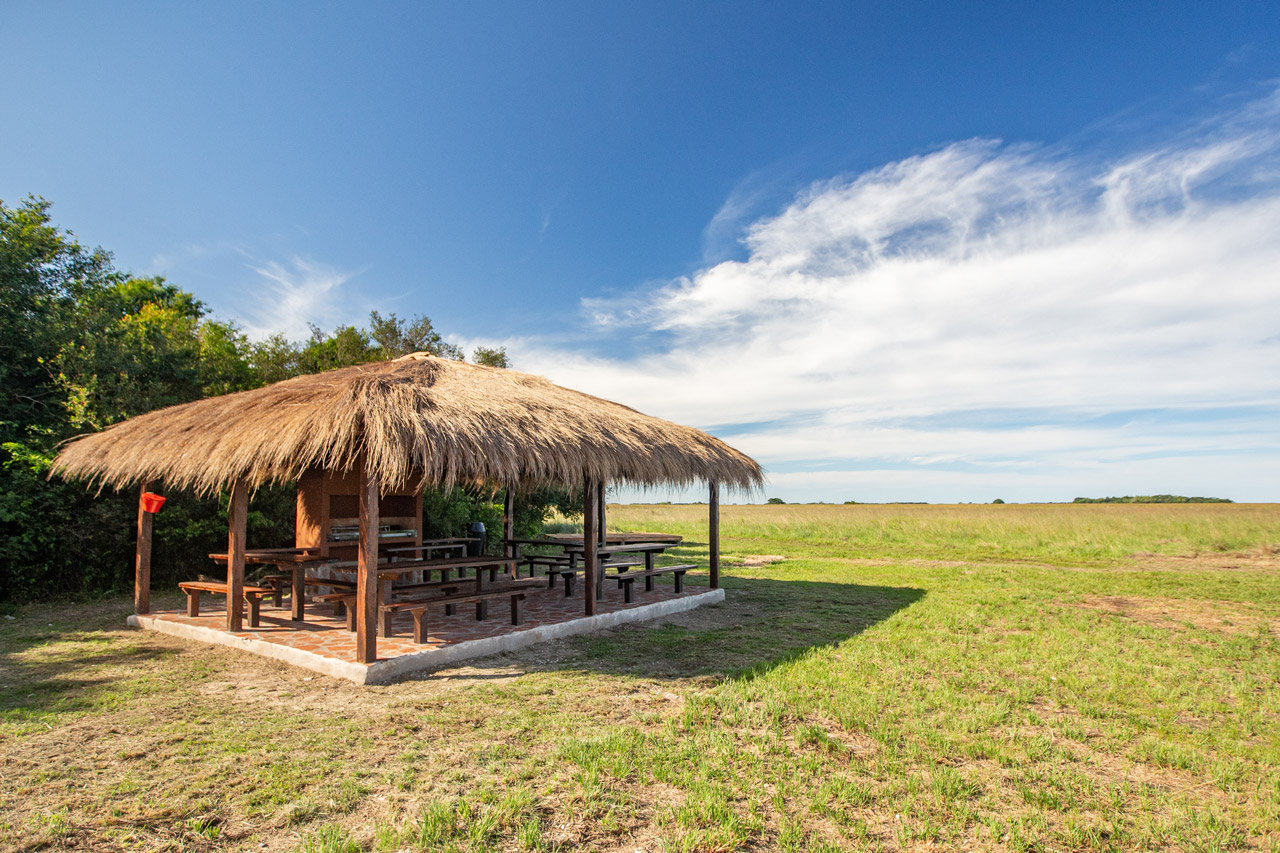
Carambola Gateway
The Carambola Gateway is located in central-western Iberá near the town of Concepción del Yaguareté Corá. In terms of wildlife, this gateway has birds, caimans, capybaras, and marsh deer, and visitors can take guided excursions on the water via the traditional pole-driven or horse-drawn canoe trips. They can also learn about traditional constructions made of piri , a local plant, explore native forests and try local dishes.
This gateway is home to the Carambolita Campground, which takes its name from a nearby stream, and is the last campground that Rewilding Argentina built for this project in 2019, and which it still runs. The barbecue areas conserve the traditional style with open construction and a straw roof. They have grills and bathrooms with showers, and are set into small wood patches to give the visitors an immersive forest experience.
A system of elevated boardwalks crosses reedbeds and lowlands and ends at the Juli Cue port, from which visitors can take a guided trip through the wetlands, visiting islands and outposts, the town of Yahaveré, Medina and Tim lagoons before reaching the Capivarí Gateway near the towns of Mercedes and Colonia Carlos Pellegrini.
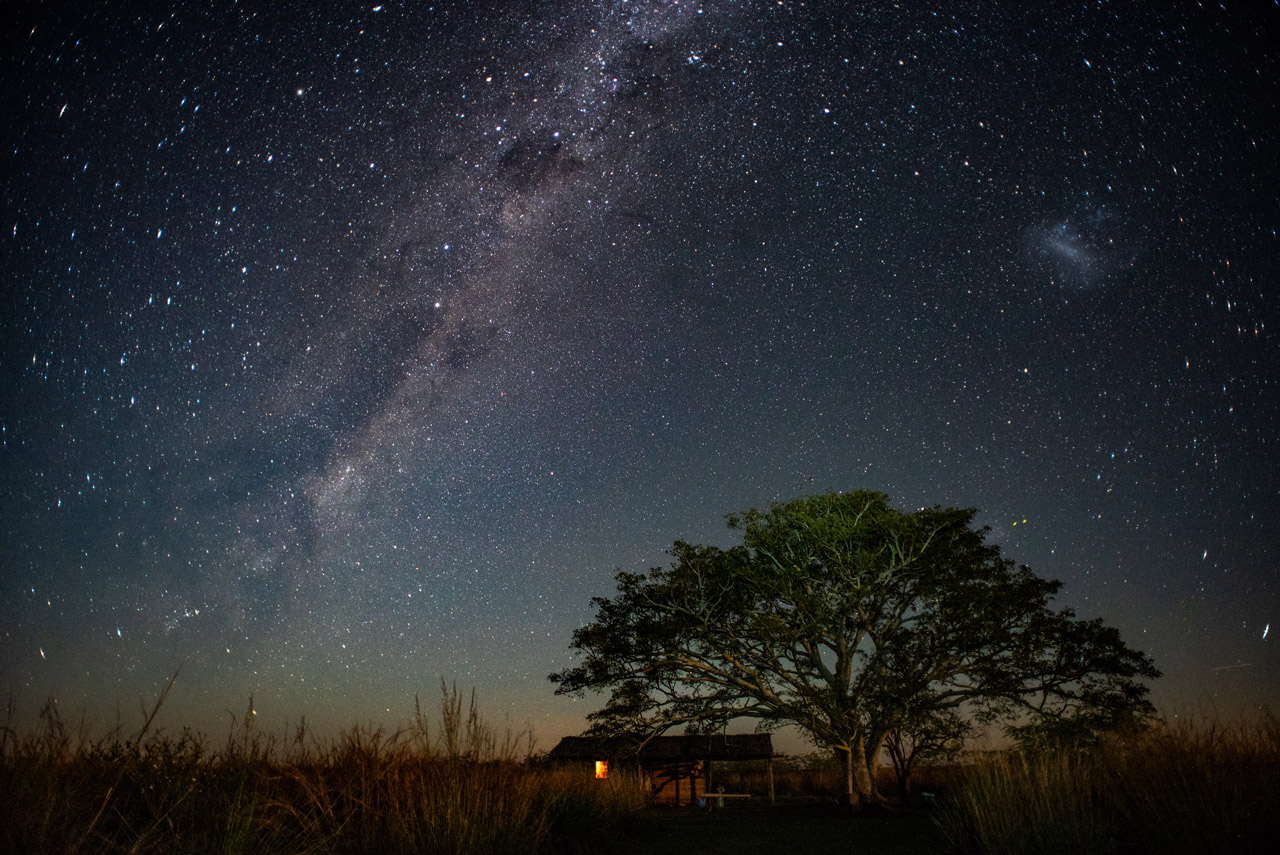
The Lechuza Cua Refuge, located at this gateway, has sleeping spaces, a kitchen, and bathrooms built by locals, using traditional materials such as straw roofs and walls made of piri , a local plant.
This refuge is perfect for kayakers to spend the night. Tourists also arrive during the day in the traditional pole-driven or horse-pulled canoe, to enjoy the peaceful sounds of Iberá or try beef cooked over an open fire, or chipá cueritos , a type of grilled flatbread, made by local guides.
- Access Point: Concepción del Yaguareté Corá.
- Distance from Corrientes: 190 kilometers on paved roads to Concepción del Yaguareté Corá (Routes 12, 118, and 6), and thirty kilometers on dirt roads to the Carambolita stream. Check road conditions with a guide or park rangers after heavy rains.
- Attractions: Learning about life in the wetlands and on the islands. In Concepción del Yaguareté Corá, visit museums and interpretive centers.
- Activities: horse-drawn canoes, horseback riding, swimming with horses, kayaking, snorkeling, boat trips, traditional island shelters. Exploring the marshes, following the route of the shellfish collectors, stargazing, and visiting artisans.
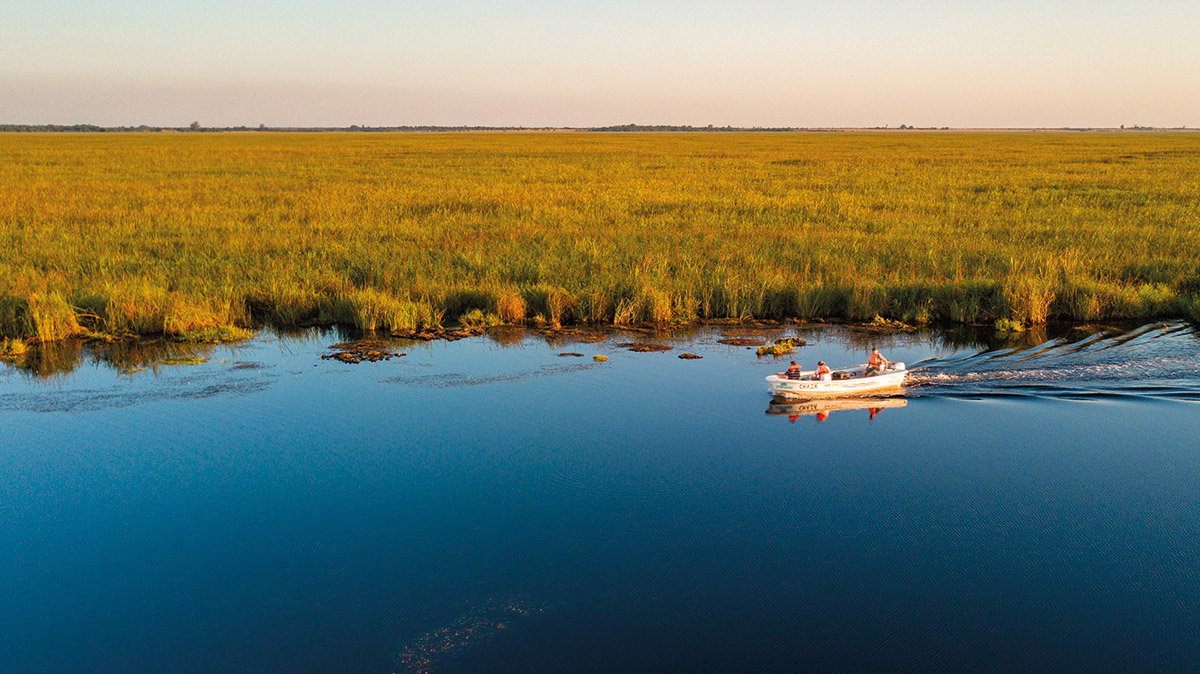
Uguay Gateway
At the Uguay Gateway, halfway to Mercedes and Carlos Pellegrini, visitors can experience wild, almost untouched areas, take boat trips on the Fernandez Lagoon, and visit local artisans who work with virgin wool, as well as try local dishes.

Capivarí Gateway
The Capivarí Gateway, close to the town of Mercedes, is a jumping off point to cross the wetlands, a magical journey that takes visitors to the Carambola Gateway located in Concepción del Yaguareté Corá.
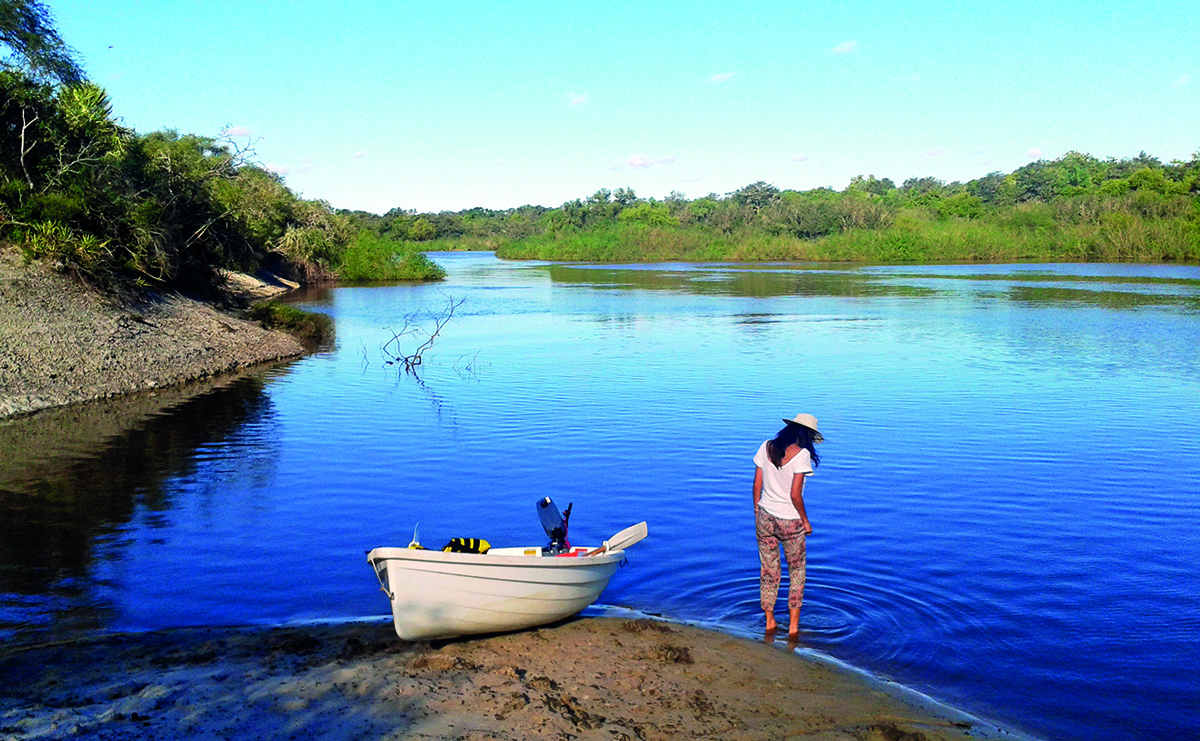
Río Corriente Gateway
The access to this gateway is through the town of Chavarría, 180 kilometers from Corrientes city. Here an old railway station has been repurposed as a cultural center, and an interpretative center for Iberá is also found. The clear water with sand riverbed of the Corriente River—Iberá’s southern border—allows for sunlit snorkeling and diving trips to see large fish including catfish, headstanders, and dorados.
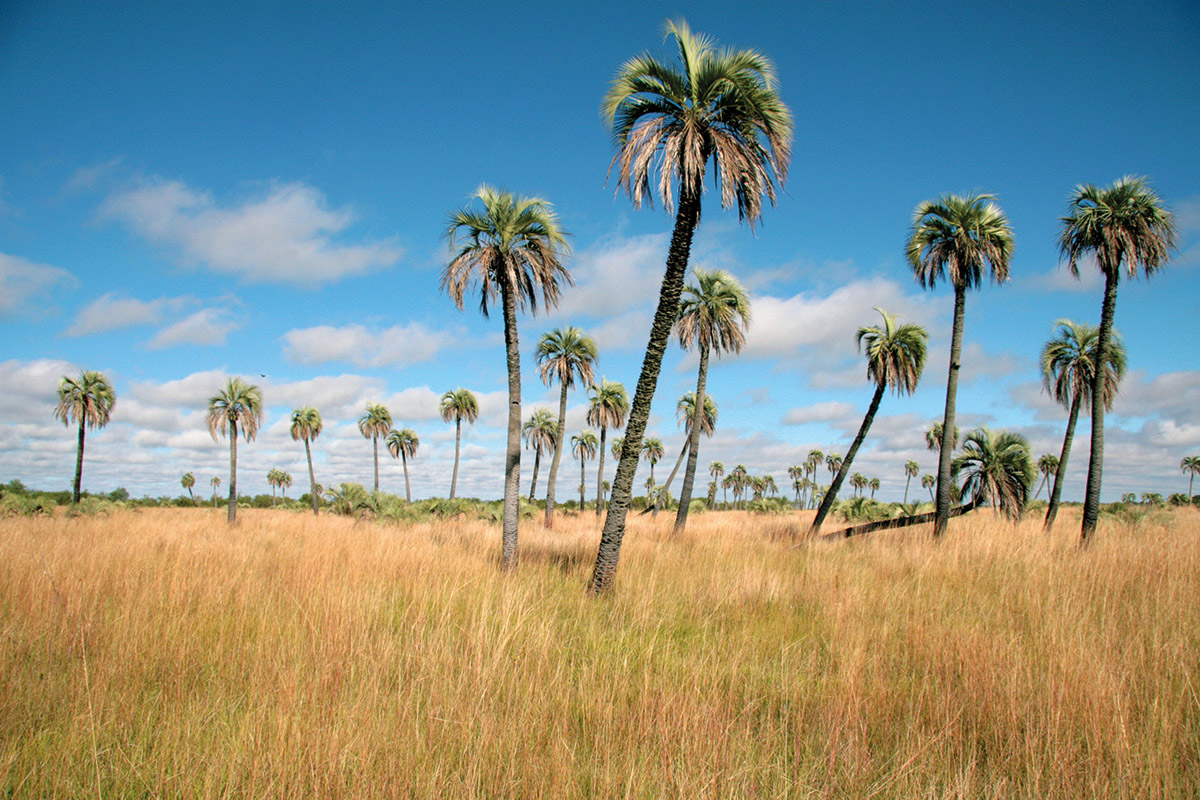
Mburucuyá Gateway
Mburucuyá is a town sixty kilometers from Concepción del Yaguareté Corá with a national park of the same name of nearly 18,000 hectares. The park is home to more than 300 bird species and the trail system allows visitors to observe and enjoy its palm forests, home to toucans and other species. The main building of the former Santa Teresa Ranch houses the visitors center. The park has a primitive campground, with drinking water, tables, firepits, and bathrooms with showers, though there is no store here. At nearby Paso Aguirre, visitors can paddle kayaks in the Santa Lucía River.
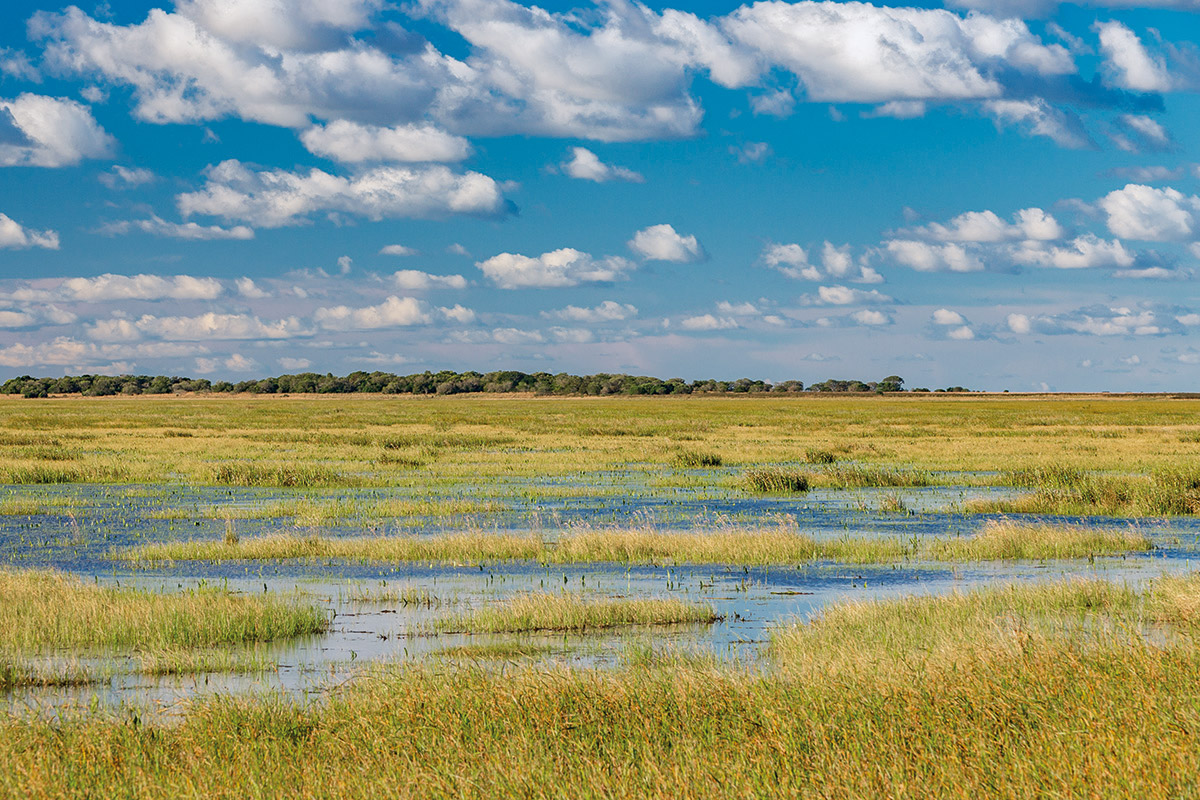
San Antonio Gateway
San Antonio is located right on Route 118, just ten minutes from the town of Loreto and thirty from San Miguel. This gateway, accessed via a paved road, has an interpretative center about the Jesuit Missions and videos about Iberá. It has a dining room and a space to receive large groups, bathrooms, a fire pit, and an amphitheater.
From here it is eleven kilometers on a gravel road to the Carambola River, where there is a dock from where kayak excursions depart. A public use area sits halfway on the Bola Stream, with barbecue areas, restrooms, and camping platforms, which are ideal for stargazing.
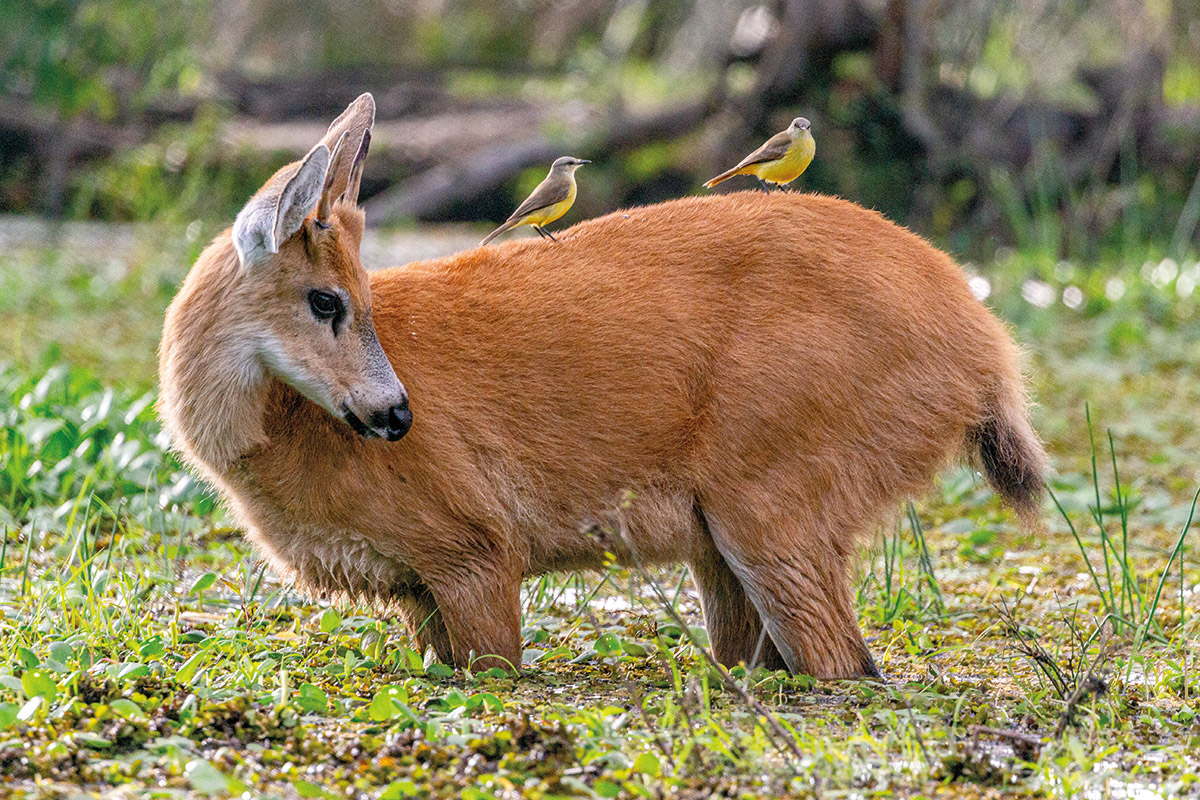
Galarza Gateway
The Galarza Gateway is sixty kilometers from Ituzaingó and eighty from the town of Colonia Carlos Pellegrini. At this rustic gateway, visitors can see the endangered yellow thrush and pampas deer. There are guided interpretive walks, catch-and-release fishing, and photo safaris, and artisans sell their woven handicrafts made of a local long-bladed grass called espartillo . It is best to plan ahead from the Ituzaingó and Mercedes tourism information offices, or set up excursions with local tour operators before setting out.
The ocelot ( Leopardus pardalis ) is the largest of the small spotted felines and the third largest feline in the Americas, after the jaguar and the puma. This species, considered endangered of extinction, was originally found widely in the Americas, but currently survives only from the south of Texas in the United States to the north of Argentina, mainly in the ecoregions of the Yungas, Paraná Forest, and Chaco.
The main causes for the decrease in its range are hunting and habitat destruction. In the Province of Corrientes there are few records of sightings in limited areas, with the most recent being in forest islands in the northeast in the Santo Tomé department. However, it has disappeared from a large part of the provincial territory, including Iberá where it was last reported in 2015. The ocelot’s presence is vital to keep its prey population in check. Reintroducing it would be a huge boon to the health and functionality of the ecosystem.
Different public and private entities, such as breeding and wildlife rescue centers, bio parks, and zoos, breed or rescue these animals and later donate them to the project. Thanks to this collaboration we already have five individuals in the pre-acclimatization stage, preparing for life in the wild, in pre-release pens in the Rincón del Socorro Reserve, near Paraje Uguay.
- In 2021 Balam, a male born in La Peregrina Ranch, in the Province of Buenos Aires, was donated to the project. After quarantine he was transported to a corral located in the Rincón del Socorro Reserve.
- In November of 2021 two females, Luna and Lanaya, also from La Peregrina, came to the project. They were both transported to Rincón del Socorro in mid-2022.
- · At the beginning of 2022 , two males, Tom and Vilca, arrived from the Biodiversity Park (Córdoba) and the Center for Native Wildlife Care (Jujuy), respectively. Tomi moved to the corrals at Rincón del Socorro in July and Vilca followed in September.

The giant anteater ( Myrmecophaga tridactyla ) has a large, toothless snout with a long tongue that it uses to feed on ants and termites. These mammals, which became extinct in the middle of the twentieth century, can measure up to two meters in length and weigh up to fifty kilograms.
This was the first species in our rewilding projects in Iberá. In 2007 we released the first pair of giant anteaters in the Rincón del Socorro reserve, where now there is a healthy, self-sustaining population. After years of work, there is another self-sustaining population nucleus dating to 2013 on San Alonso Island, a nucleus on the Don Pablo Ranch in 2016 , located outside of Iberá Park, two nuclei launched in 2018 in the Carambola and San Nicolás areas, and one in Yerbalito in 2022 .
Most of the released animals were pups that had been orphaned when their mothers were poached in other provinces in northern Argentina. Since the beginning of the project in 2017 we have rescued more than 130 pups. Currently, the total population in Iberá is approximately 200 individuals and they have dispersed, with established groups living several kilometers from the reserves.
Los pinos guachos, cuyas semillas pueden volar muy lejos desde las forestaciones, comienzan a aparecer a los costados de caminos, sobre embalsados e incluso en el interior de los esteros.
Caza Furtiva
Durante muchos años la caza de animales para obtener su carne y su cuero fue la mayor amenaza para la biodiversidad de Iberá. Con la creación de la Reserva Provincial la caza furtiva comenzó a controlarse y muchos mariscadores se formaron como guardaparques. De esta forma, algunas especies comenzaron a recuperar sus números poblacionales y hoy vuelven a ser comunes y observables.
El cerdo cimarrón es una especie exótica en Iberá que puede atacar a mamíferos pequeños, predar sobre nidos, hozar y dar vuelta la tierra buscando raíces para comer y acercarse a las huertas.
Especies exóticas
Las especies exóticas son la causa de extinción de una gran cantidad de especies en todo el planeta. Al pensar en traer una nueva variedad o especie para forestar, o animales para criar o tener como mascotas, se deben evaluar los riesgos de dispersión de sus semillas o escapes. Esto es especialmente importante en Iberá debido a la gran masa acuática, que facilita la propagación de las especies exóticas.
Esto ocurre en algunos sectores de Iberá con el chancho doméstico (y su versión silvestre, el jabalí) y más recientemente con el ciervo axis y colorado, que fueron traídos para cotos de caza y luego escaparon. Entre las plantas, paraísos, ligustros, grevilleas y algunos pinos están colonizando Iberá. Una vez que se adaptan al suelo y el clima, estas especies se reproducen en mayor cantidad que en sus lugares de origen y son capaces de transformar el ecosistema para autoperpetuarse.
Fuegos recurrentes
Los fuegos son un importante componente natural en la dinámica de los pastizales de Iberá. En la actualidad es necesario recrear esta dinámica, respetando las frecuencias naturales para permitir la recuperación de los pastizales al eliminar la materia seca acumulada y los arbustos, que dejan poco espacio para los nuevos brotes.
En el afán de obtener pastos tiernos todos los años, los campos suelen quemarse con alta frecuencia, lo cual reduce la capacidad de recuperación de los ambientes naturales, o durante la época de reproducción de la fauna, lo que provoca la pérdida de nidadas y crías.
En los campos de Fundación Rewilding Argentina realizamos quemas prescriptas teniendo en cuenta los tiempos naturales de recuperación de los pastizales quemados y la época de reproducción de las especies de flora y fauna que se desarrollan en ellos. El fuego es una necesidad para la conservación de la naturaleza y para la ganadería; manejarlo con responsabilidad evitará que se convierta en un conflicto entre diferentes tipos de producción e intereses.
Guardaparques
Para el control de un territorio tan extenso como el del Gran Parque Iberá, con usos diversos y multiplicidad de accesos, es necesario contar con varios centros operativos con guardaparques, técnicos y personal de mantenimiento. En este sentido, la Provincia de Corrientes y el Gobierno Nacional trabajan con una visión compartida acerca del manejo de fauna y la atención al turista. Además, se ha incrementado la cantidad de seccionales de guardaparques provinciales y se han adicionado las de guardaparques nacionales para poder custodiar todo el territorio.

Portal Laguna Iberá
El Portal Laguna Iberá es uno de los más desarrollados en oferta turística, con varios niveles de servicios de alojamiento, distintas actividades en la naturaleza, paseos y servicios gastronómicos.
En 2009, Rewilding Argentina donó el primer camping de este Portal al municipio de Colonia Carlos Pellegrini. Ubicado sobre la laguna Iberá, el camping cuenta con quinchos, parrillas y baños. Desde allí es posible navegar este espectacular espejo de agua en lancha y kayak.
Además, la fundación donó dos áreas de visitación para ampliar la zona de disfrute y distribuir a los turistas y así minimizar su impacto. La primera área, Lobo Cua, cuenta con un sistema de senderos pedestres, de bicicleta y de cabalgatas, parrillas, sanitarios y un muelle, y es administrada por Parques Nacionales y la Provincia de Corrientes. La segunda área, Paso Claro, es administrada por Parques Nacionales y cuenta con senderos y miradores en altura que permiten apreciar una gran variedad de aves y animales terrestres.
- Localidad de Acceso: Colonia Carlos Pellegrini.
- Distancia desde Corrientes: 230 km de asfalto a Mercedes (rutas 12 y 123), otros 40 km de asfalto por ruta 40, y 80 km de ripio de tierra y ripio a Colonia Carlos Pellegrini.
- Atractivos: Es el portal tradicional de los Esteros del Iberá. La laguna Iberá y sus recorridas se llevan a cabo desde el pueblo. Garantía de observación de fauna. Servicios turísticos garantizados (alojamiento, gastronomía).
- Actividades: excursiones, paseos en lancha, alquiler de kayak, cabalgatas, safaris fotográficos, astroturismo y safaris nocturnos. El camping sobre la laguna cuenta con baños públicos y quinchos.
Portal San Nicolás
El paisaje en Portal San Nicolás está dominado por una bella y extensa lomada cubierta de pastizales, bañados y bosques subtropicales, que contrasta fuertemente con las cortinas forestales del entorno urbano.
El camping del Portal San Nicolás, gestionado por Parques Nacionales, fue el segundo construido y donado por Rewilding Argentina. Se encuentra instalado sobre una antigua estancia ganadera y cuenta con quinchos, parrillas y sanitarios. Senderos pedestres, para cabalgatas y un camino vehicular llegan al puerto, donde los visitantes pueden realizar actividades acuáticas y navegar el arroyo Carambola en canoa impulsada “a botador” por baqueanos locales.
- Localidad de Acceso: San Miguel.
- Distancia desde Corrientes: 150 km de asfalto (rutas 5 y 118) y 29 km de arena y tierra hasta el portal. Luego de fuertes lluvias consultar el estado del camino en la oficina de turismo, en el ingreso de San Miguel. Se recomienda acceder en vehículo alto o con doble tracción.
- Atractivos: avistaje de fauna variada y observable, como yacarés, carpinchos, ciervos, zorros, y una gran variedad de aves.
- Actividades: área de acampe, con baños y quinchos. No hay proveeduría, por lo cual es necesario llevar comida y bebida, o contratar previamente un almuerzo típico o asado a los prestadores de servicios locales. Paseos en canoa a botador con avistaje de fauna, senderos peatonales, cabalgatas, paso a nado con caballos, snorkel y alquiler de bicis y kayaks. En San Miguel puede visitarse la Casa del Artesano y museos.
Portal Cambyretá
La región del Portal Cambyretá se caracteriza por su paisaje llano con áreas inundables que la convierten en una excelente opción para observar aves acuáticas del Iberá, como cigüeñas, espátulas rosadas y garzas.
Aquí se inauguró en 2014 el tercer camping donado por Rewilding Argentina, llamado Monte Rey. El camping continúa con el estilo arquitectónico de quinchos con parrillas y sanitarios, y cumple la doble función de albergar turistas y concentrar servicios. Desde allí los visitantes se organizan para recorrer senderos a pie, a caballo, y en vehículo.
El Portal Cambyretá se ha convertido en el único lugar de Argentina donde es posible ver guacamayos rojos en libertad, un ave que estuvo extinta en el país por más de 150 años y que hoy es un espectáculo que atrae a miles de visitantes cada año.
- Localidades de Acceso: Ituzaingó y Villa Olivari.
- Distancia desde Corrientes: 230 km de asfalto (ruta 12) y 30 km de tierra hasta el camping. Desde Posadas son 90 km. Luego de fuertes lluvias consultar el estado del camino con guardaparques.
- Atractivos: avistaje de fauna silvestre y observable desde senderos peatonales o vehiculares, con posibilidad de ver animales sin bajarse del vehículo, a los costados del camino y en espejos de agua.
- Actividades: área de acampe, con baños y quinchos. Para acampar es necesario coordinar previamente con el guardaparques. No hay proveeduría, por lo cual es necesario llevar comida y bebida. En Ituzaingó es posible visitar el Centro de Aves del Iberá, el Centro de Interpretación de Naturaleza del Corredor Norte y museos.
Portal Carambola
El Portal Carambola se encuentra en la región centro-oeste de Iberá, próximo a la localidad de Concepción del Yaguareté Corá. En este portal se pueden avistar principalmente aves, yacarés, carpinchos y ciervos de los pantanos, recorrer cuerpos de agua guiado por habitantes que mantienen ciertas tradiciones como la canoa a botador o tirada por caballo, conocer construcciones tradicionales en pirí, experimentar platos típicos, y recorrer montes nativos.
En el Portal Carambola se encuentra el último camping construido por Rewilding Argentina, Camping Carambolita, a metros del arroyo del mismo nombre. Fue inaugurado en noviembre de 2019 y aún se encuentra administrado por la fundación. Los quinchos, que mantienen el estilo de techo de paja y vistas abiertas, cuentan con parrillas y sanitarios completos, y están integrados a pequeños parches de bosques que generan en el visitante la sensación de encontrarse solo en ese inmenso paisaje.
Un sistema de senderos sortea cañadas y bajos mediante pasarelas elevadas hasta llegar al puerto Juli Cue, desde donde es posible realizar el Cruce de los Esteros, una navegación guiada que permite atravesar los esteros recorriendo islas y postas, el paraje Yahaveré, las lagunas Medina y Trim, y finalmente llegando al Portal Capivarí para conectar con Mercedes y Colonia Carlos Pellegrini.
En el Portal Carambola se encuentra el Refugio Lechuza Cua, que cuenta con un espacio para dormir, una cocina y baños, todos construidos por pobladores locales bajo la usanza tradicional de techos de paja y paredes de pirí.
Allí, kayakistas hacen su posta para pasar la noche y turistas llegan por el día en la tradicional canoa tirada a caballo o botador para disfrutar de los sonidos apacibles del Iberá y compartir un asado a la estaca o “chipá cueritos” recién cocinados por los guías de naturaleza.
- Localidad de Acceso: Concepción del Yaguareté Corá.
- Distancia desde Corrientes: 190 km de asfalto hasta Concepción del Yaguareté Corá (rutas 12, 118, y 6), y 30 km de tierra hasta el arroyo Carambolita. Luego de fuertes lluvias consultar el estado del camino con guía o guardaparque.
- Atractivos: Aquí se puede conocer el estilo de vida en los Esteros, de la gente que vive en las islas. La localidad de Concepción del Yaguareté Corá cuenta con museos y centros de interpretación.
- Actividades: Canoas trineo (tiradas por caballos), cabalgatas, paso a nado con caballos, kayak, snorkel, paseos en lancha, refugios típicos en islas, Cruce de los Esteros, Ruta de los Mariscadores, astroturismo y visitas a los artesanos.
Portal Uguay
El Portal Uguay, a mitad de camino entre Mercedes y Carlos Pellegrini, invita a vivir una experiencia con espacios agrestes y casi vírgenes, a disfrutar de la navegación por la laguna Fernández, y a visitar a los artesanos que ofrecen trabajos en lana cruda y comidas típicas en el paraje.
Portal Capivarí
El Portal Capivarí, cercano a Mercedes, es una opción para realizar el Cruce de los Esteros y disfrutar de una mágica travesía hasta llegar al Portal Carambola, ubicado en Concepción del Yaguareté Corá.
Portal Río Corriente
El acceso a este portal es a través del pueblo de Chavarría, ubicado a 180 kilómetros de Corrientes capital. Allí se ha recuperado la antigua estación de tren y reconvertido en Centro Cultural, y además cuenta con un Centro de Interpretación del Iberá. El río Corriente es el límite sur de Iberá; sus aguas claras y fondo de arena blanca, que refleja la luz del sol, permiten practicar buceo y snorkel y ver grandes peces como el surubí, la boga y el dorado.
Portal Mburucuyá
A 60 kilómetros de Concepción del Yaguareté Corá se encuentra el pueblo de Mburucuyá y el Parque Nacional del mismo nombre. Sus casi 18 mil hectáreas albergan más de 300 especies de aves, y su red de senderos permite observar y disfrutar de sus típicos bosques de palmeras, hogar de tucanes y otras especies. Allí se puede visitar el casco de la Estancia Santa Teresa, donde se encuentra el actual Centro de Visitantes. El Parque cuenta con un campamento agreste, dotado de agua potable, mesadas, fogones, sanitarios y duchas. No cuenta con proveeduría. En el Paso Aguirre, sobre el Arroyo Santa Lucía, se pueden realizar paseos en kayak.
Portal San Antonio
San Antonio se ubica sobre la ruta nacional 118, a 10 minutos del pueblo de Loreto y a 30 de San Miguel. Este Portal, ubicado sobre una ruta asfaltada, cuenta con un Centro de Interpretación sobre las misiones jesuitas y una sala de proyección e información sobre el Iberá. Cuenta con un área de comedor y esparcimiento diseñada para grandes grupos de personas, sanitarios, un fogón y un anfiteatro.
El acceso al arroyo Carambola, a 11 km, está enripiado y cuenta con un muelle desde donde se realizan paseos en kayak. A mitad de camino se halla el área de uso público sobre el Estero Bola, que cuenta con quinchos, sanitarios y plataformas de acampe, ideales para el astroturismo.
Portal Galarza
El Portal Galarza se encuentra a 60 kilómetros de Ituzaingó y a 80 del pueblo de Carlos Pellegrini. En este agreste portal es posible avistar al tordo amarillo y al venado de las pampas, dos especies en peligro de extinción. Aquí se realizan caminatas interpretativas con guía, pesca con devolución y safaris fotográficos, y se pueden adquirir artesanías hechas en espartillo. Se recomienda consultar con las oficinas de informes de Turismo de Ituzaingó y Mercedes, o contratar los servicios de prestadores turísticos que operan en la zona, antes de emprender el camino.
THE SPECIES WE WORK WITH AT PATAGONIA AZUL
Portal la ascensión.
El Portal La Ascensión es uno de los accesos más conocidos del Parque Patagonia Argentina. Creado sobre una histórica estancia patagónica, a lo largo de los años hemos reciclado sus instalaciones para el uso público, como una antigua escuela que convertimos en centro de visitantes, un centro cultural emplazado en el tradicional galpón de esquila y talleres donde emprendedores locales ofrecen actividades de turismo de naturaleza.
El Portal La Ascensión ofrece, también, una amplia red de senderos de variada dificultad que conectan el centro de visitantes con el lago Buenos Aires y con la meseta Lago Buenos Aires, en cuyas lagunas nidifica el amenazado macá tobiano.
El área es hogar de guanacos, zorros, zorrinos y pumas, además de ser un excelente sitio para el avistamiento de aves. Choiques, martinetas, cachuditos, ratonas, tachurís, loicas, zorzales, cauquenes y bandurrias son fáciles de encontrar en los distintos ambientes de este sector. También habitan aquí algunas especies de rapaces y, en las lagunas, una buena variedad de patos, cisnes, flamencos, gallaretas y macás.
Este portal cuenta con un espacio de acampe agreste próximo al lago Buenos Aires, llamado Caburé, con asadores y parrillas, y dos antiguos puestos de estancia acondicionados como refugios, habilitados para pernocte y campamento de visitantes. Se recomienda consultar con la Administración de Parques Nacionales acerca del uso del camping Caburé y de los refugios del Portal La Ascensión.
Portal Cañadón Pinturas
El Portal Cañadón Pinturas se ubica sobre la mítica ruta 40, a 54 kilómetros de la localidad santacruceña de Perito Moreno hacia el sur.
Este joven portal comprende una sorpresiva diversidad de fauna silvestre y de paisajes, que pueden ser explorados a través de una red de más de veinte kilómetros de senderos auto guiados de diferentes niveles de dificultad.
Los mismos cañadones que inspiraron a los primeros cazadores recolectores a plasmar sus huellas durante siete mil años de ocupación en la Cueva de las Manos, Alero Charcamata y otros sitios del portal, son hoy el escenario donde nuestro equipo de rewilding trabaja, con el apoyo de Fundación Freyja, para recomponer los ambientes, la fauna nativa y sus interacciones ecológicas, y promover experiencias en la naturaleza a través del senderismo activo y el avistamiento de grandes mamíferos.
El portal cuenta con una hostería, llamada La Posta de Los Toldos, donde emprendedores de las comunidades aledañas ofrecen diversas propuestas de turismo de naturaleza. De la hostería depende el camping arancelado El Mollar, que cuenta con seis espacios para el armado de carpas y estacionar vehículos, y con un espacio común, calefaccionado por una salamandra a leña, con mesas y asientos y baños con duchas.
Además, el Portal Cañadón Pinturas cuenta con dos áreas de acampe agreste. Una de ellas, La Señalada, es arancelada y cuenta con seis espacios reparados del viento para el armado de carpas, baños, un fogón de uso común y un almacén de campo que ofrece productos esenciales. La otra, La Confluencia, se ubica a 10 kilómetros de la cabecera de senda Huella de Gradín, a orillas del río Pinturas en el mismo cañadón. Cuenta con seis áreas de acampe y baños secos.
Ruta Escénica 41
La ruta provincial 41 —o ruta escénica 41— une a las localidades de Los Antiguos y Lago Posadas; más recientemente, continúa por el valle del río Oro hasta el Parque Nacional Perito Moreno.
Este espectacular camino atraviesa cambiantes paisajes de bosque, estepa, pastizal de altura y cordillera. Al recorrerlo desde Los Antiguos hacia el sur, se bordea el río Jeinimeni —límite natural con Chile—, el Monte y Glaciar Zeballos, el lago Ghío y los cerros Colorado, San Lorenzo, Lápiz y Colmillo. Durante todo el trayecto acompaña el perfil de la meseta Lago Buenos Aires y se pueden avistar gran cantidad de especies de aves, como el cisne de cuello negro, el cauquén, variedades de patos y el omnipresente cóndor andino.
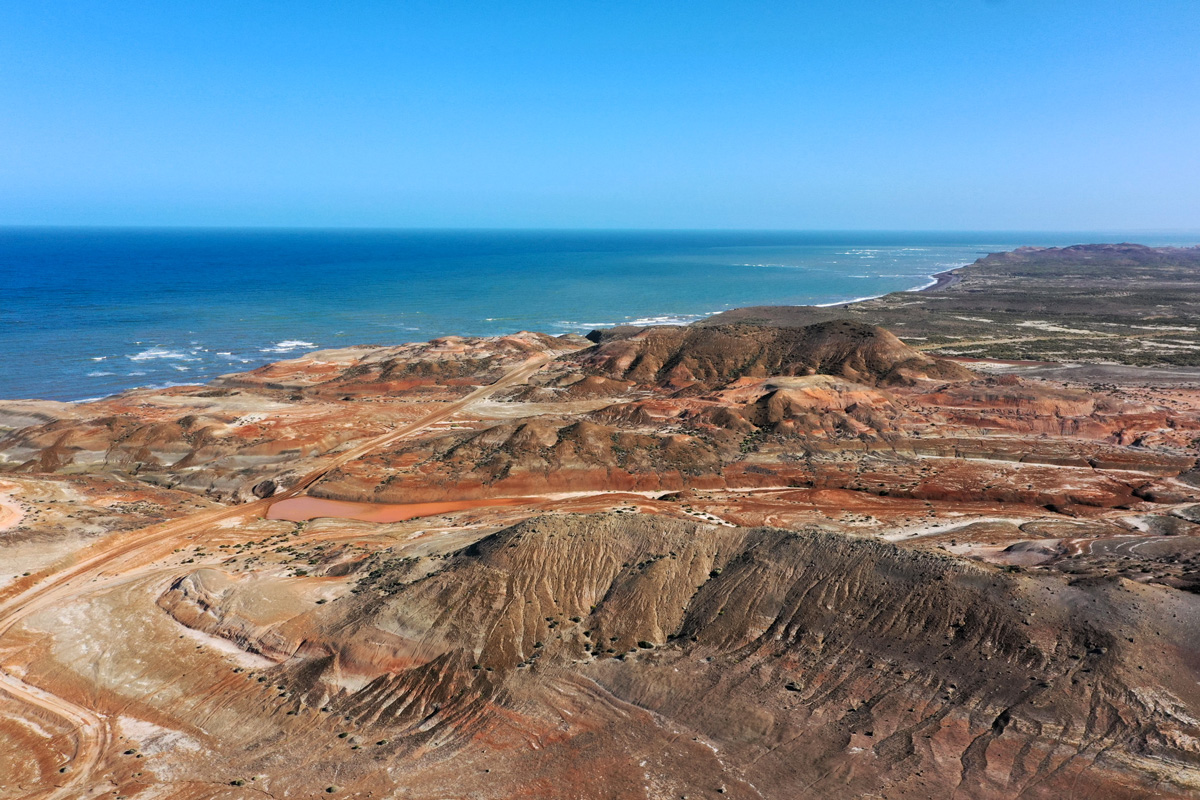
Portal Rocas Coloradas
Desde Comodoro Rivadavia, pasando el “pueblo de mar” Caleta Córdova, se atraviesa el Portal Rocas Coloradas, adentrándose en un mundo de colores contrastantes y frágiles geoformas que atestiguan las poderosas fuerzas naturales que actúan sobre este antiguo paisaje. La ruta serpentea por la estepa, hábitat natural del guanaco, el choique, la mara y el puma. Las vistas se van abriendo a enormes restingas verdes llenas de gaviotas, gaviotines y ostreros, acantilados, islotes repletos de lobos marinos y cormoranes, el mar abierto, donde planean los petreles y cada tanto se pueden detectar los soplidos de ballenas. Una parada obligada es el bosque petrificado con restos de troncos de coníferas y ¡palmeras! de más de 60 millones de años.
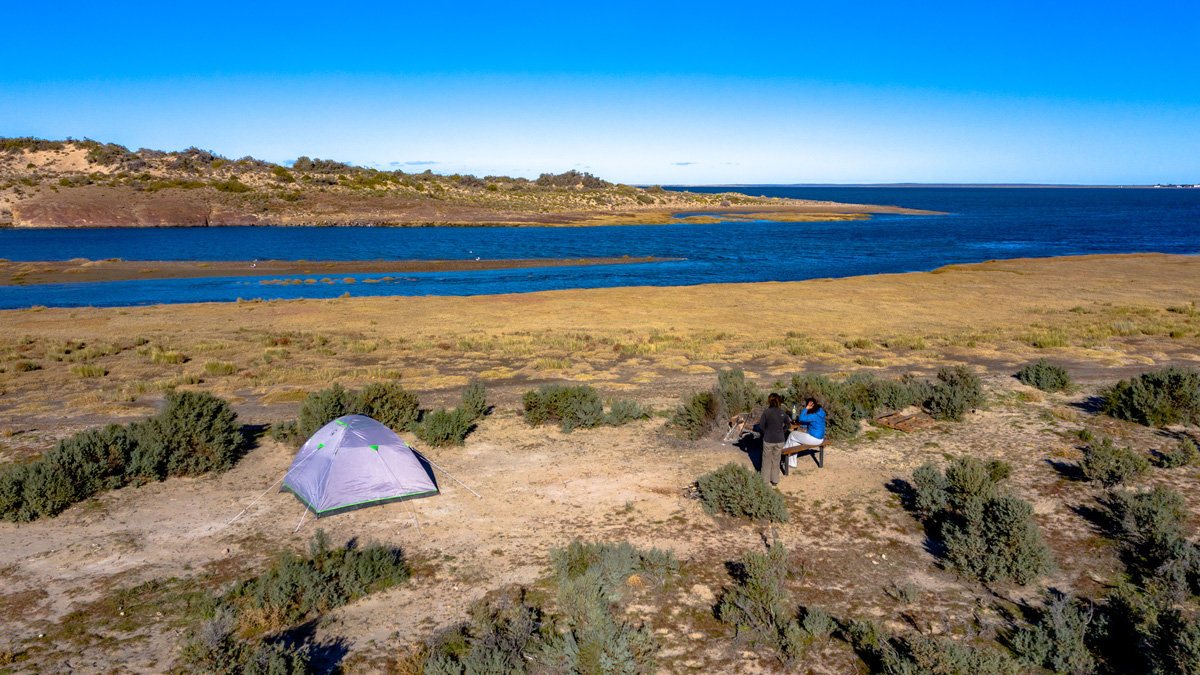
Portal Bahía Bustamante
Llegando al Portal Bahía Bustamante se allanan los cerros y toma protagonismo el azul del mar. Desaparecen los acantilados para dar lugar a inmensas bahías protegidas y poco hondas, que se descubren con la marea baja y son sitios de alimentación de infinitas aves playeras, gaviotas, gaviotines y patos. Mar adentro aparecen las islas a las que se accede en excursiones náuticas de observación de fauna mansa y fotogénica, como lobos marinos y pingüinos de Magallanes. A su vez, la Caleta Malaspina, conocida por ser un sitio frecuentado por el tiburón gatopardo, tiene características naturales que la convierten en el lugar más biodiverso y productivo de la costa chubutense y ofrece un verdadero espectáculo natural. Además, la abundancia y productividad natural dio lugar a la explotación alguera, de la cual hoy queda la infraestructura abandonada y los cuentos de los antiguos pobladores del paraje histórico.
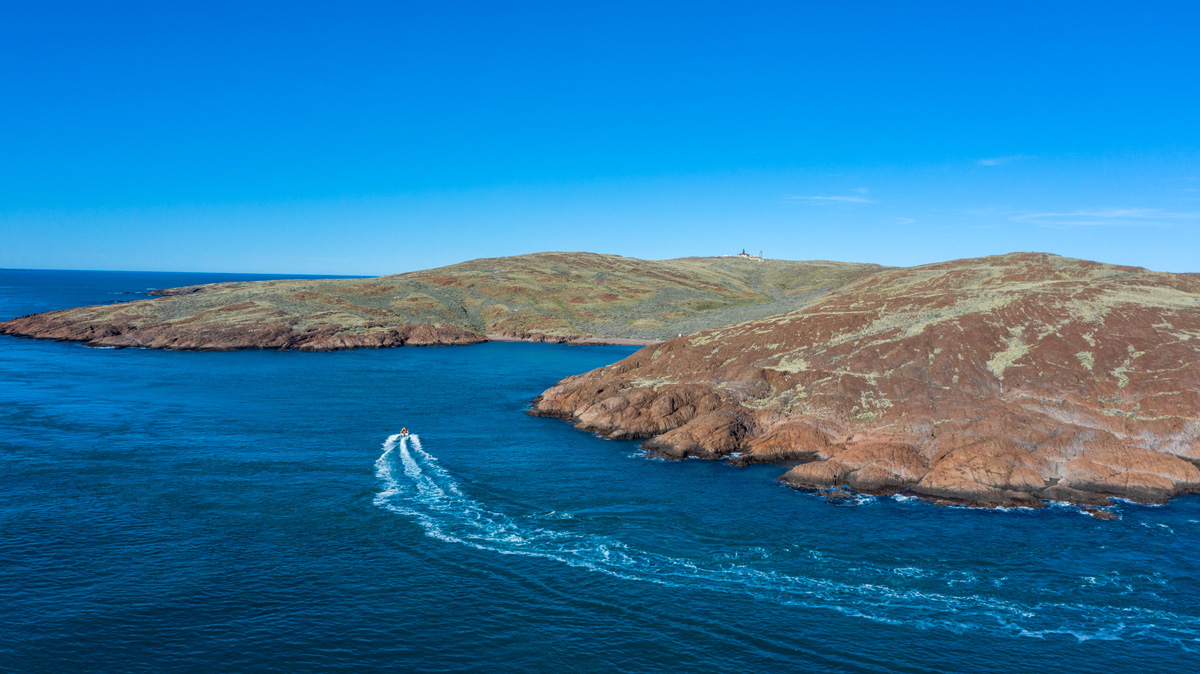
Portal Isla Leones
Pasando el Arroyo Marea, la Ruta Azul continúa por la estepa patagónica, habitada por numerosos guanacos, choiques y maras. El Portal Isla Leones es una antigua estancia ganadera que se convirtió al turismo de naturaleza para dar acceso público al Parque Interjurisdiccional Marino Costero Patagonia Austral y a la mítica Isla Leones, a la cual se accede navegando desde un puerto natural: la Bahía Arredondo. El antiguo faro sobre la isla es icónico de la historia chubutense, así como también la Caleta Hornos, conocida por los navegantes del mundo pero no tanto por las comunidades locales. Un refugio natural, la Caleta Hornos fue uno de los primeros intentos de colonización de la Argentina, liderado por Simón de Alcazaba y Sotomayor que en 1535 quiso fundar aquí la provincia de Nueva León.
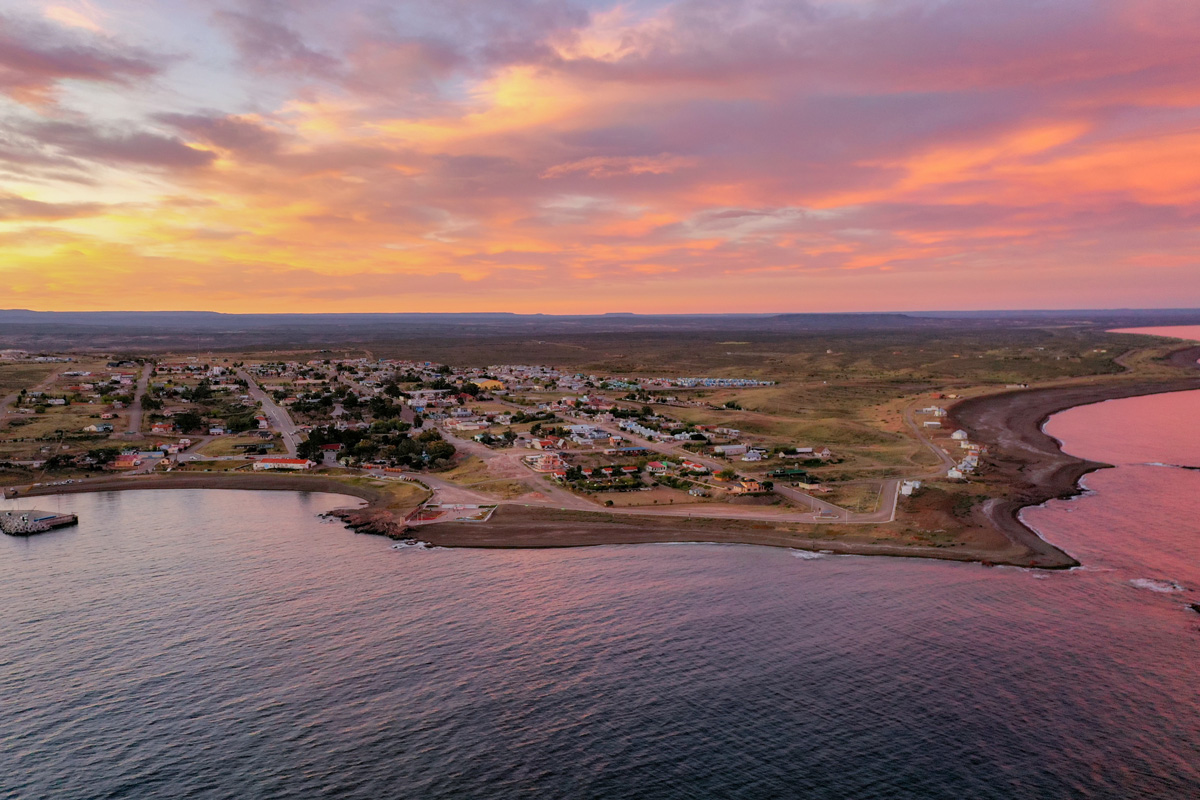
Pueblo Auténtico Camarones
El Pueblo Auténtico Camarones, ubicado sobre el mar, cuenta con acceso a playas prístinas y despobladas y al ANP Cabo Dos Bahías, que protege una importante colonia de pingüino de magallanes. En la navegación dentro de la Bahía Camarones hacia el Archipiélago Islas Blancas es frecuente observar un espectáculo sin igual de un grupo residente de alrededor de 50 toninas muy amigables.
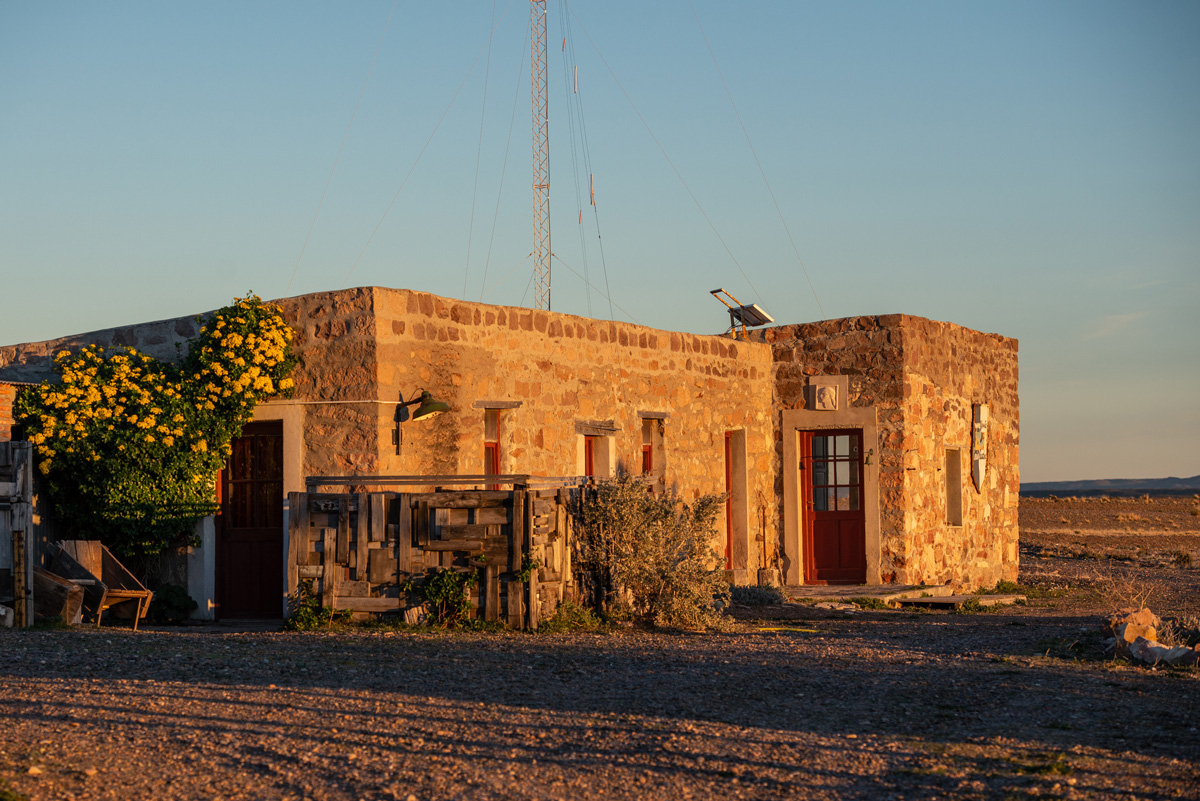
Paraje Histórico Cabo Raso
La Ruta Azul continúa hacia el norte hasta llegar al paraje histórico Cabo Raso, paraíso de surfistas y aventureros. Aislado, salvaje, reconstruido por manos habilidosas y almas nostálgicas, el pueblo abandonado ofrece un romántico encuentro con uno mismo y el mar. Las olas se dejan surfear, las playas de canto rodado son infinitas, y un naufragio y un bunker de los tiempos de la guerra en las Islas Malvinas agregan más historia a esta larga ruta.
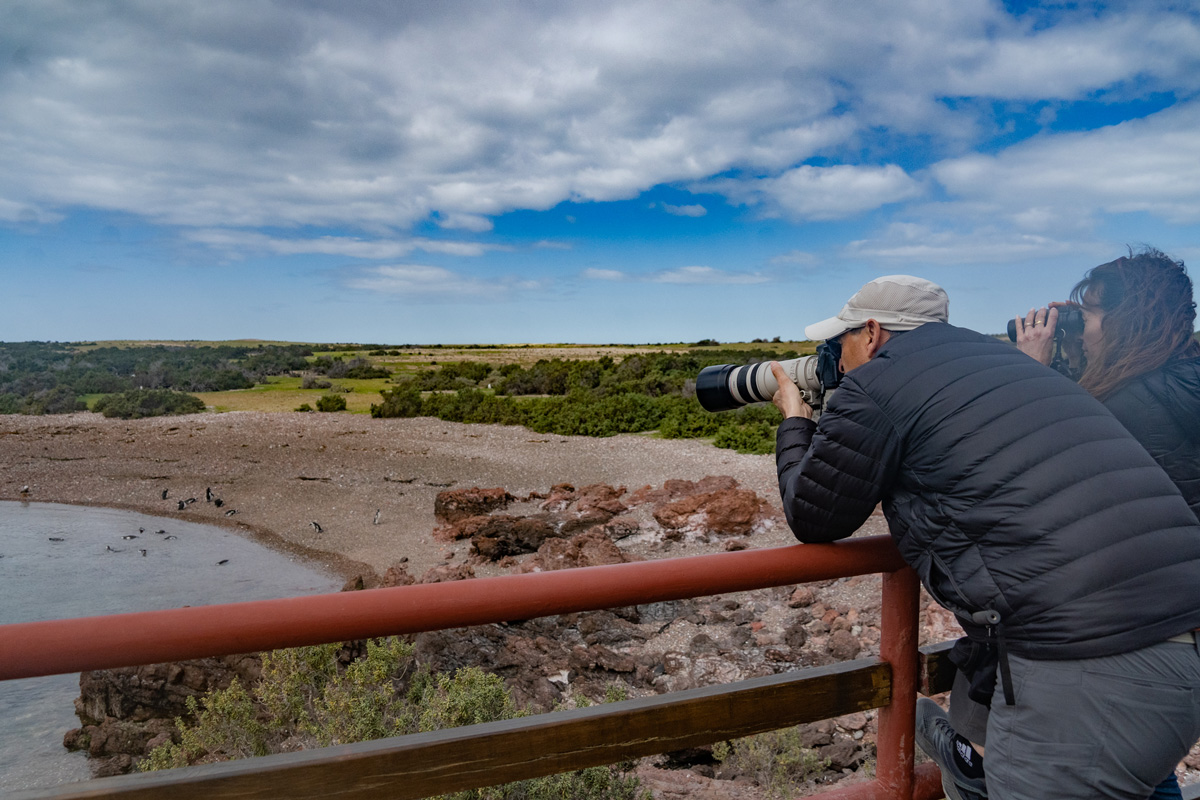
Portal Punta Tombo
Rocas coloradas gateway.
Starting from Comodoro, passing through the “sea town” of Caleta Cordova, visitors cross the Rocas Coloradas Gateway, entering a world of contrasting colors and fragile geological formations that bear witness to the powerful natural forces at work in this ancient landscape. The route winds through the steppe, the natural habitat of the guanaco, the rhea, the mara and the puma. The views open to reveal huge green shoals with seagulls, terns and oystercatchers, cliffs and islets full of sea lions and cormorants, the open sea, where petrels coast, and whales can occasionally be seen spouting. A can’t-miss stop is the petrified forest with the remains of coniferous trunks and palm trees dating back more than 60 million years.
Bahía Bustamante Gateway
Arriving at Bahía Bustamante Gateway, the hills flatten out and the blue sea takes center stage. The cliffs disappear to give way to immense protected, shallow bays which are best visited at low tide and are feeding grounds for countless shorebirds, seagulls, terns and ducks. The islands offshore can be reached by boat to observe docile, photogenic fauna, such as sea lions and Magellanic penguins. At Malaspina Cove, the catshark is often seen. This cove, due to its natural characteristics, is the most biodiverse and productive location on the coast of Chubut and offers a true natural spectacle. This abundance and natural productivity gave rise to the exploitation of seaweed here, and the abandoned infrastructure and the stories of the old settlers of the historic place still remain.
Isla Leones Gateway
After passing Arroyo Marea (Marea Creek), La Ruta Azul continues through the Patagonian steppe, inhabited by numerous guanacos, rheas and maras. The Isla Leones Gateway is an old cattle ranch that was reimagined for nature tourism to provide public access to the Southern Patagonia Interjurisdictional Coastal Marine Park and the mythical Isla Leones, which is accessed by boat from Arredondo Bay, a natural harbor. The old lighthouse on the island is iconic in Chubut history, as is Caleta Hornos (Hornos cove), known by sailors around the world though it is less known by local communities. A natural shelter, Caleta Hornos was the site of one of the first attempts to colonize Argentina, led by Simón de Alcazaba y Sotomayor, who in 1535 wanted to found the province of Nueva León there.
Traditional Town of Camarones
The traditional town of Camarones, located on the coast, has access to pristine, unpopulated beaches and the ANP Cabo Dos Bahías, which protects a significant colony of Magellanic penguins. In the navigation within Bahía Camarones towards the Islas Blancas Archipelago, an unparalleled spectacle of a resident group of about 50 very friendly Commerson’s dolphins can often be seen.
Cabo Raso Historic Site
The Ruta Azul continues to the north before arriving at historic Cabo Raso, a paradise for surfers and adventurers. Isolated and wild, rebuilt by skilled hands and nostalgic souls, this abandoned village makes for an idyllic encounter between self and sea. The break is surfable, smooth stone beaches are endless and a shipwreck and bunker from the times of the Islas Malvinas/Falkland Islands war add a drop of history to this voyage.
Punta Tombo Gateway
The Punta Tombo Gateway is the last stop of the trip along the Ruta Azul. It has an interpretative center that takes visitors on a virtual journey from the sea bed up to the surface, where one of the largest penguin rookeries in Argentina is located. Visitors can walk along the 3 km path and to different viewpoints and observe the behavior of the friendly Magellanic penguins during breeding season. In addition, there is a colony of elephant seals on a nearby beach that returns every year and is habituated to visits from wildlife watchers.
PORTALES WHERE WE WORK IN PATAGONIA AZUL

LUCILA MASERA
Lucila estudió ingeniería química en Buenos Aires e ingeniería ambiental en Madrid, donde se desempeñó como consultora en una agencia forestal privada. En 2017 comenzó a trabajar en Rewilding Argentina, siendo una de las fundadoras del programa marino de conservación, con el objetivo de alcanzar la protección de al menos el 10% del Mar Argentino. Es directora de estrategia y desarrollo en nuestra organización desde el año 2018, llevando los proyectos de gira por el mundo.
Luli studied chemical engineering in Buenos Aires and environmental engineering in Madrid, where she then served as a consultant for a private forest agency. In 2017, she began to work for Rewilding Argentina and was one of the founders of the marine conservation program which had the objective of protecting at least 10% of the Argentine Sea. With her matchless charisma, she has been the Director of Strategic Development for our organization since 2018, traveling the world to present our projects.

Valeria Gil – Contadora Pública Nacional
Directora de administración.
Valeria se unió al equipo en 2003. Desde entonces lidera los aspectos financieros de la Fundación, el armado y control de presupuestos y los compromisos asumidos con nuestros donantes, y el cumplimiento de la normativa vigente.
Verónica Angrisano – Contadora Pública Nacional
Directora de recursos humanos e impuestos.
Verónica es parte de nuestro equipo desde 2008, abocada principalmente al cumplimiento de la normativa impositiva y asuntos laborales y previsionales de la Fundación. Vero también coordina al equipo de la oficina de Buenos Aires.
Marcela Mizutani – Contadora Pública Nacional
Control de gestión y auditoría.
Marcela colabora con la Fundación desde sus inicios. Actualmente, es responsable del cumplimiento de la normativa contable de la Fundación, la emisión de los balances y la preparación de reportes mensuales.
Compras y Contrataciones
Elsa trabaja desde los inicios de la Fundación dando soporte a los miembros del equipo en territorio y asistiendo a la alta dirección. Colabora con cuestiones bancarias, necesidades de compras de equipamiento, importaciones y contrataciones específicas.
Contabilidad e Impuestos
Gladys se unió al equipo en 2008. Hoy coordina la gestión de pagos e ingresos de los proyectos del sur de la Fundación, analizando además las registraciones contables y asistiendo en presentaciones impositivas mensuales.
Proveedores y Contabilidad
Ale trabaja en nuestro equipo desde 2009. Actualmente, coordina los pagos e ingresos de los proyectos del norte de la Fundación, analizando además las registraciones contables y los aspectos relacionados con emprendimientos turísticos.
Proveedores y Gestiones
Andy se unió al equipo en 2004 y desde entonces da soporte a los equipos en territorio en gestiones administrativas que se realizan en Buenos Aires, a la vez que participa del sistema de pagos a proveedores y de los proyectos del norte. .
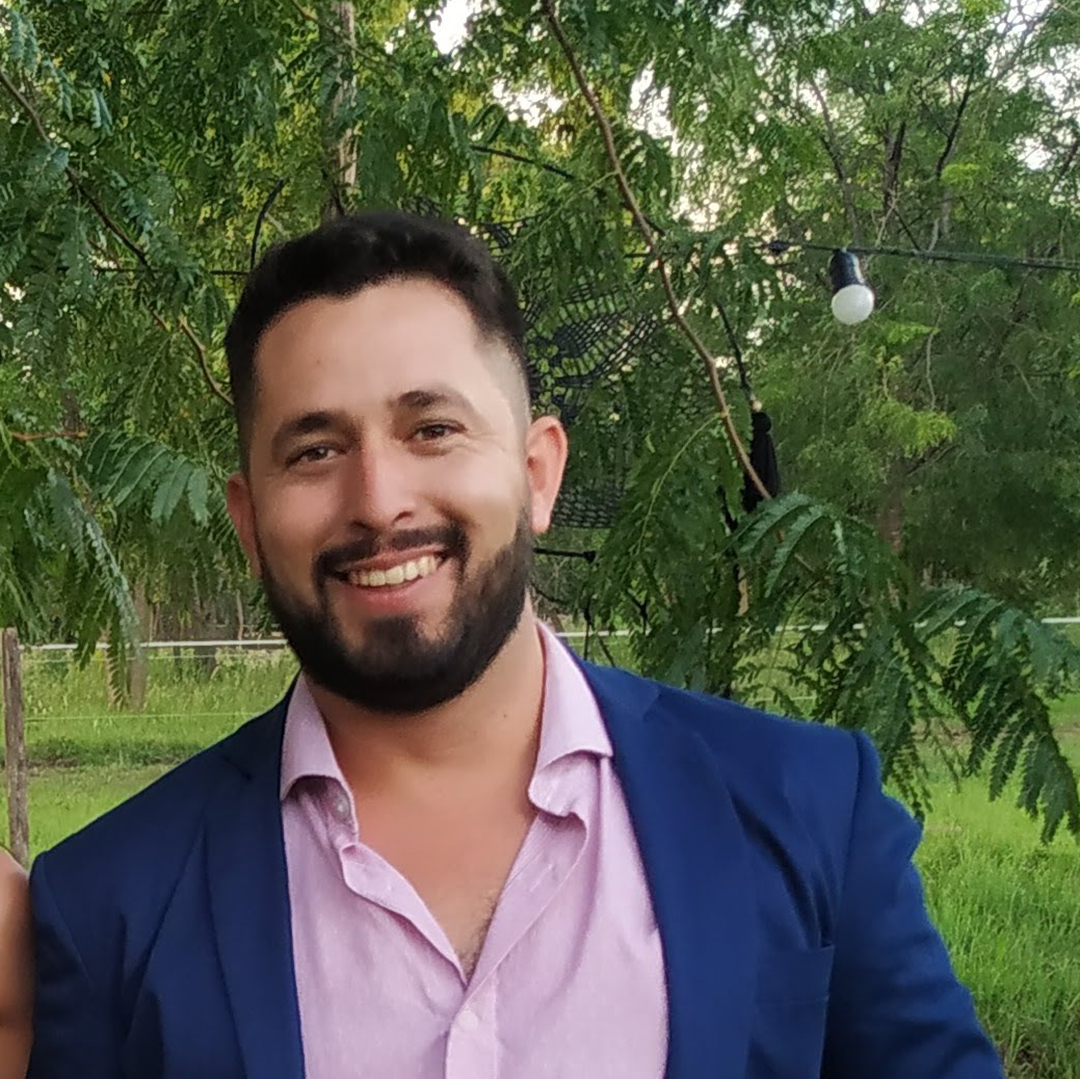
Elías Scholles
Pago a proveedores y análisis contable.
Elías trabaja en la Fundación desde 2018 (anteriormente, había colaborado entre 2009 y 2010), asistiendo en el sector de pago a proveedores de los proyectos del sur y colaborando con análisis de registraciones contables.
Lulo trabaja en la Fundación desde 2019, asistiendo en el sector de pago a proveedores y análisis de registraciones contables./p>
Facturación y Control de Prestación de Servicios
Cami trabaja en la Fundación desde 2018. Se dedica a la facturación y control de los servicios que presta el grupo asistiendo en los temas administrativos vinculados al trabajo de emprendedores.
Luciano Adjemian – Contador Público Nacional
Recursos humanos.
Lucho se incorporó a Rewilding Argentina en 2019 para dar soporte al área de Recursos Humanos, asistiendo en las liquidaciones de sueldos, temas asociados a la contratación de personal y análisis impositivos del grupo.
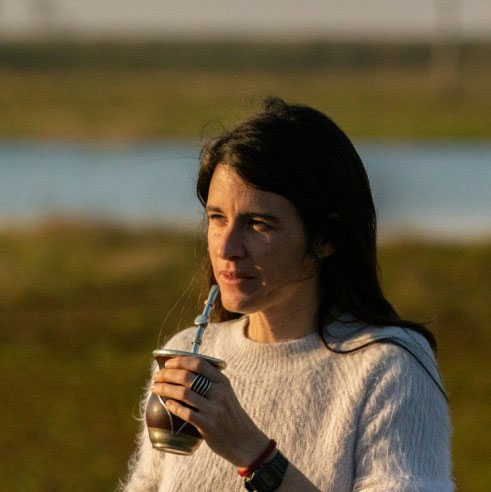
MARTINA SASSO
Coordinadora – sin azul no hay verde.
Creativa publicitaria y directora de cine, estudió también conservación para dedicarse a proteger la biodiversidad frente a la creciente crisis de extinción. En el año 2017 comenzó a trabajar en la Fundación Rewilding Argentina, siendo una de las fundadoras del programa de conservación marina. Junto a un equipo interdisciplinario, lideró la creación de las primeras áreas marinas protegidas en Argentina. Actualmente, el programa marino se dedica a impulsar más áreas de protección marina y costera en el país, y frenar el avance de industrias o desarrollos que dañen los ecosistemas marinos y su funcionalidad.
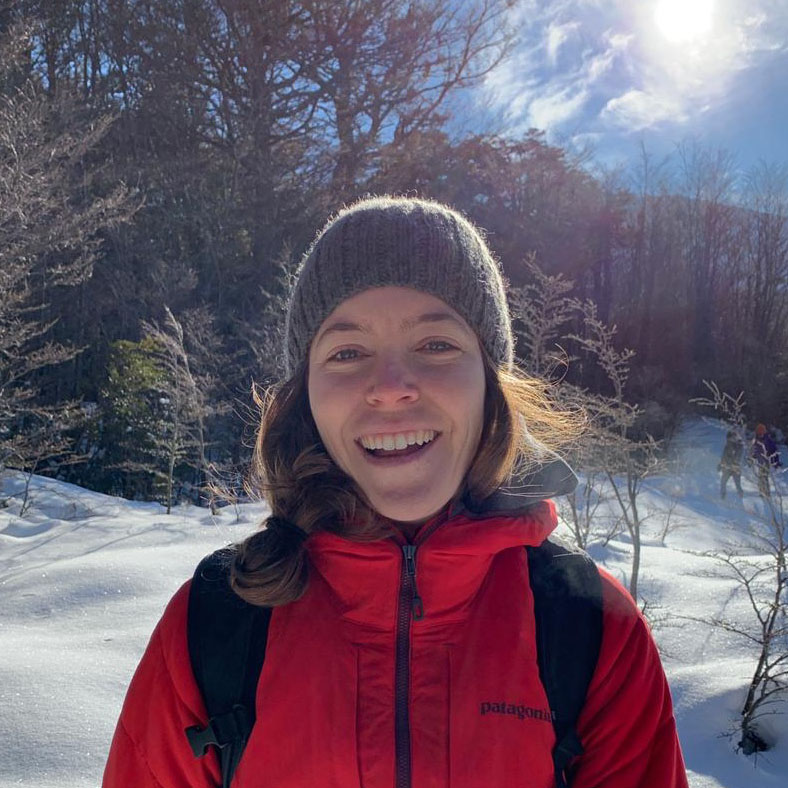
ÁNGELES DE LA PEÑA
Sin azul no hay verde.
Angie estudió derecho, y antes de trabajar en Sin Azul No Hay Verde, el programa de conservación marina de Rewilding Argentina, trabajó en otra fundación y en la Cámara de Diputados de la Nación. Se unió al equipo para colaborar en el proceso de creación de las dos primeras Áreas Marinas Protegidas, Yaganes y Namuncurá-Banco Burdwood II, aprobadas en diciembre de 2018. Hoy, coordina desde Ushuaia el proyecto para lograr la protección de Península Mitre.
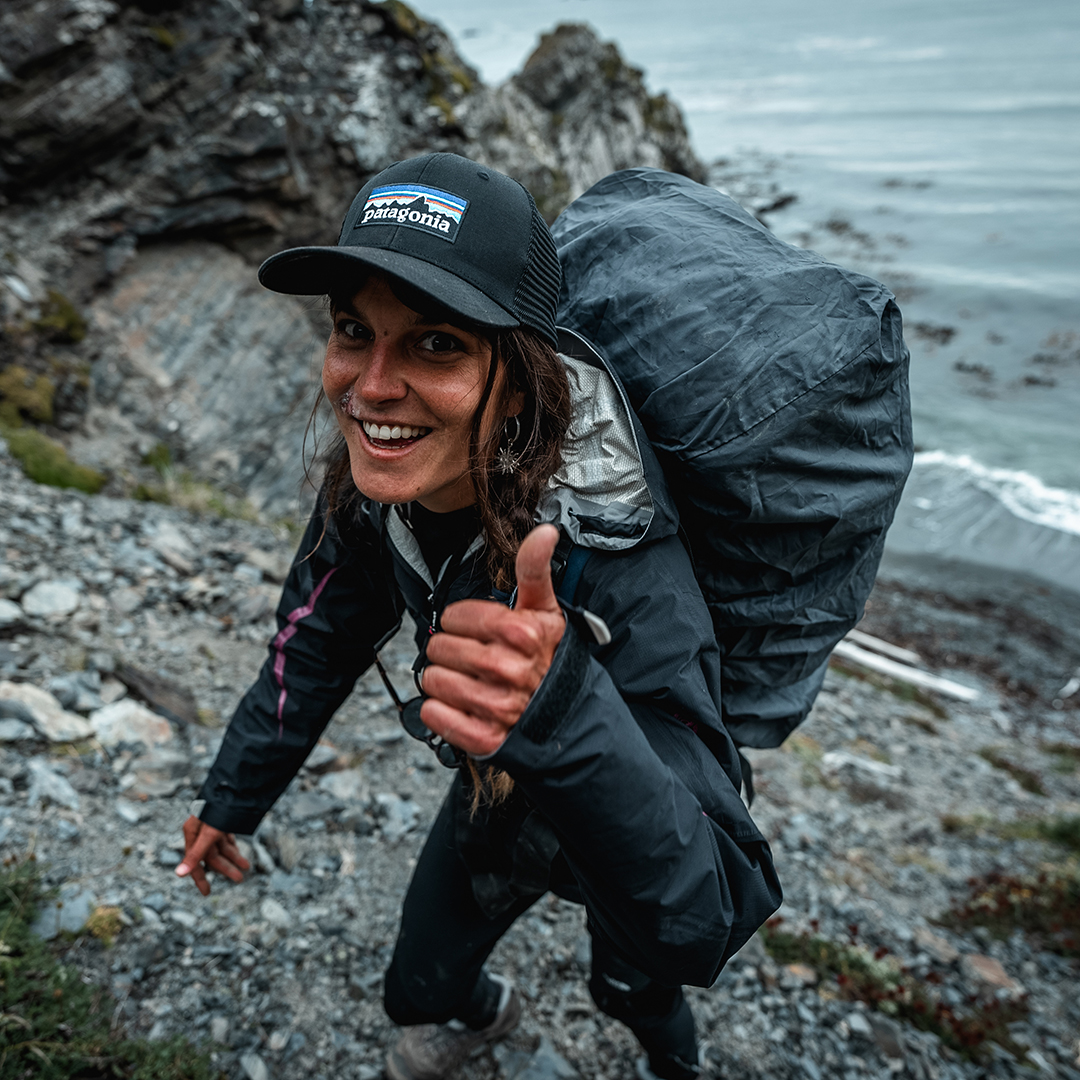
Sofía Pianciola
Coordinadora de producción – sin azul no hay verde.
Sofía colabora con Sin Azul No Hay Verde, el programa marino de Rewilding Argentina, coordinando y produciendo campañas de comunicación.
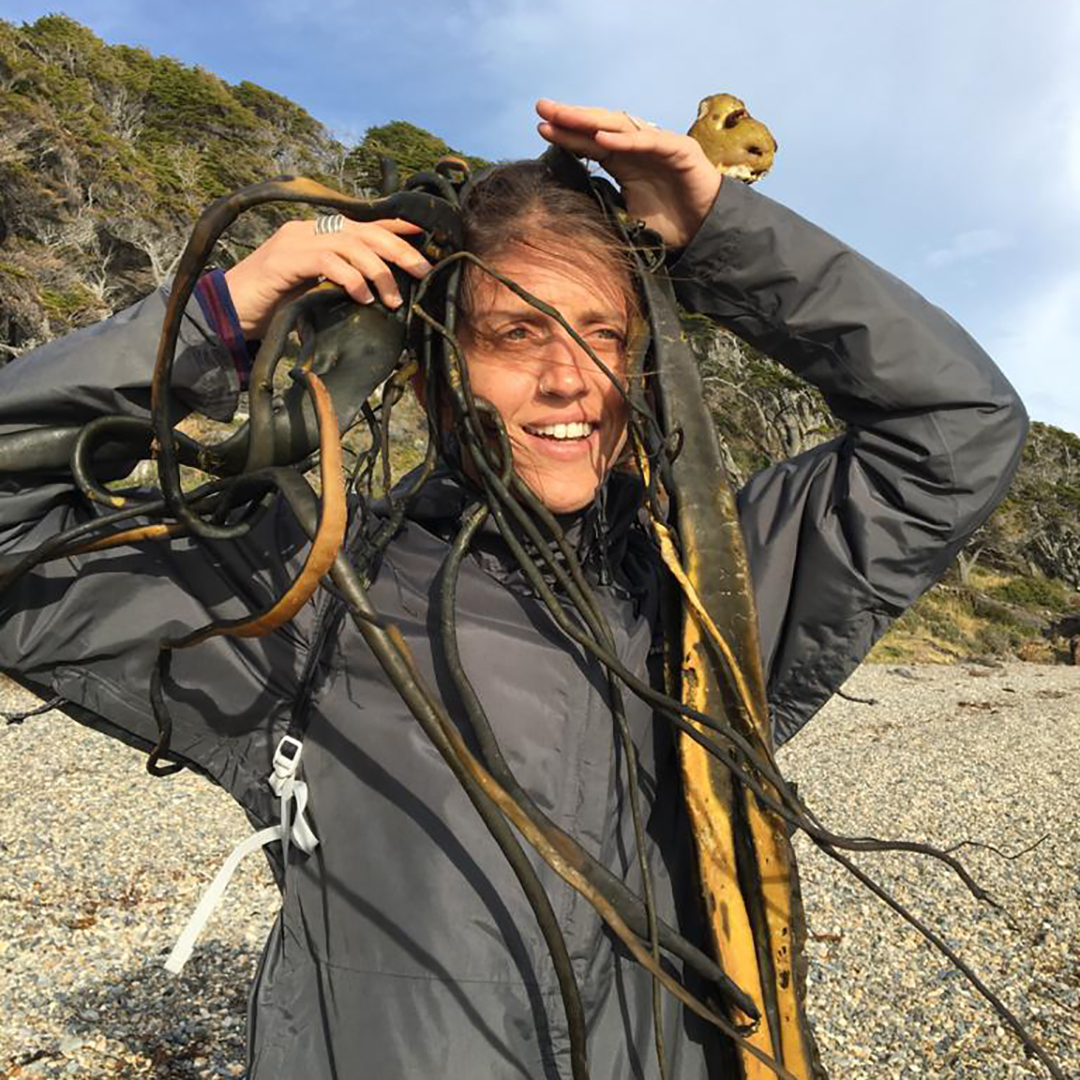
Maia Gutierrez Bustamante
Coordinadora de comunicación y estrategias – sin azul no hay verde.
Maia colabora con Sin Azul No Hay Verde, el programa marino de Rewilding Argentina, planificando estrategias de comunicación para ayudar a proteger el mar argentino.
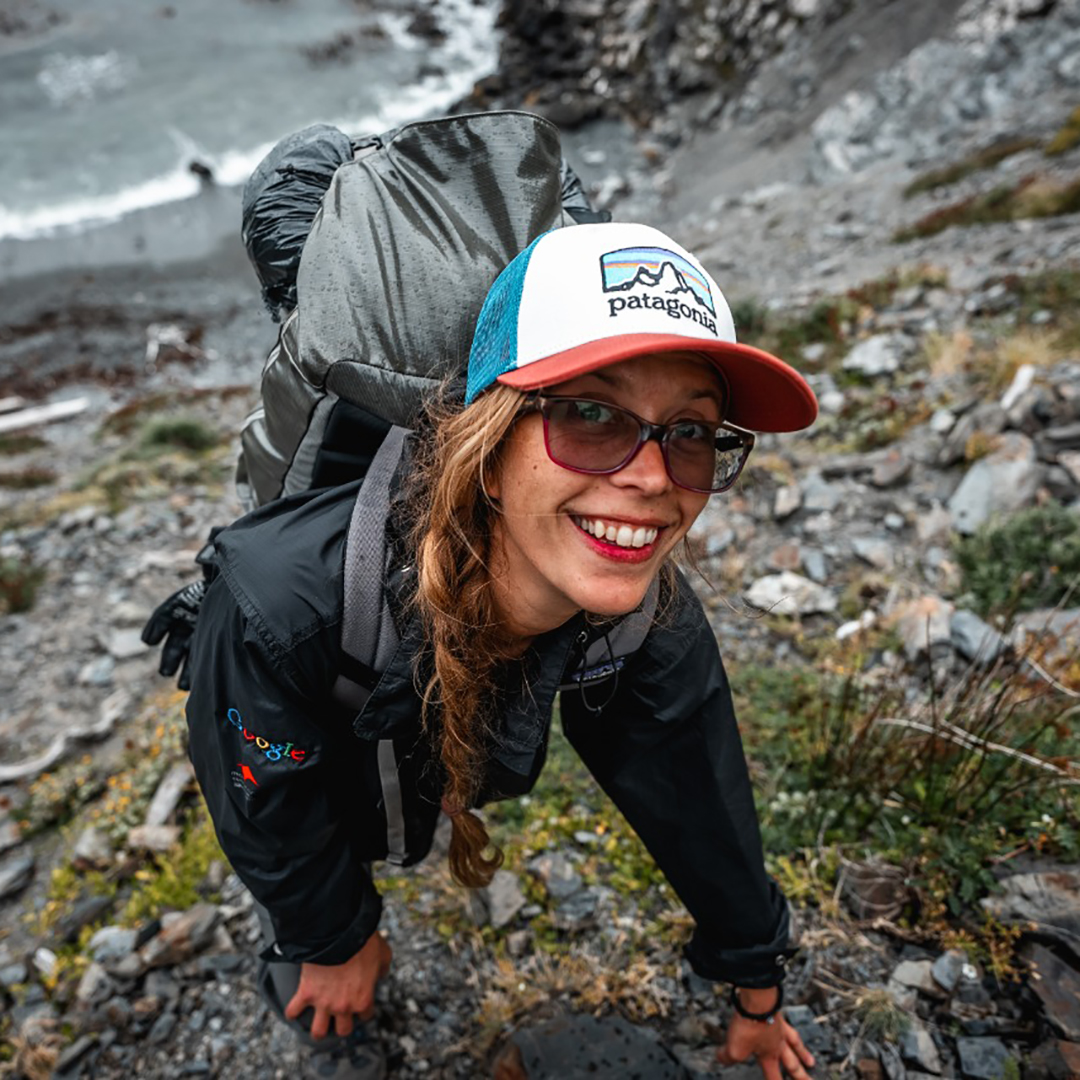
Lara Gutierrez Bustamante
Comunicación – sin azul no hay verde.
Lara colabora con Sin Azul No Hay Verde, el programa marino de Rewilding Argentina, en el área de comunicación.

Magdalena Billorou – Diseñadora gráfica
Comunicación y redes – sin azul no hay verde.
Magda colabora con Sin Azul No Hay Verde, el programa marino de Rewilding Argentina, en el diseño gráfico y desarrollo de acciones de comunicación.
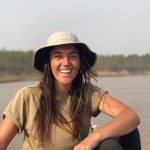
Lorem ipsum dolor sit amet, consectetur adipiscing elit. Quisque et commodo augue. Integer sed ipsum sollicitudin, semper justo sed, luctus turpis. Duis eget faucibus elit, sed lacinia ante. Nulla non lectus a diam malesuada luctus sed sed tortor. Pellentesque scelerisque vestibulum gravida. Quisque nec viverra ipsum, eget sagittis felis. Aliquam erat volutpat. Proin ac lacus ac urna consequat euismod. Cras id fermentum arcu, nec lobortis leo. Integer faucibus quam vel mi posuere viverra. Mauris blandit, massa in tempor vulputate, elit ante maximus dolor, sed pulvinar metus dui a leo.
Aenean at sem sed ante congue vulputate in mollis quam. Sed convallis dolor accumsan turpis ornare vulputate. Aliquam porta hendrerit sodales. Integer at erat mi. Phasellus suscipit placerat lacus laoreet pretium. Suspendisse at lorem vitae nunc vehicula pellentesque. Phasellus eleifend a neque a ullamcorper. Etiam aliquet justo quis lorem pharetra, porttitor convallis ipsum porta. Donec vulputate elementum nisi quis feugiat. Fusce ornare dolor non mi tincidunt, et vestibulum ligula interdum. Sed congue euismod felis nec elementum. Praesent dignissim, nibh sit amet cursus auctor, nisl augue imperdiet nunc, quis rhoncus metus urna eu dui. Integer rutrum viverra augue, et elementum nunc.
Sed vestibulum mauris libero, vitae aliquam velit rutrum pharetra. Fusce sagittis facilisis volutpat. Orci varius natoque penatibus et magnis dis parturient montes, nascetur ridiculus mus. Fusce sed ante ac eros scelerisque ultrices. Fusce commodo cursus est ac feugiat. Fusce eu pellentesque massa, finibus pharetra tortor. Sed sollicitudin, purus id ornare porta, quam urna venenatis ex, fermentum scelerisque ipsum ligula vel nisl. Cras ac augue vel arcu commodo maximus non a purus. Sed sit amet purus quis lacus cursus rhoncus. Aenean leo elit, laoreet eget aliquam non, rhoncus ac ex.
Ut dignissim pharetra dignissim. Curabitur pretium lobortis nibh et viverra. Etiam ut faucibus nibh. Suspendisse non varius nulla, quis sodales metus. Donec sollicitudin mi in diam aliquam vulputate. Nam eu nisl convallis, feugiat nibh et, auctor dui. Nullam feugiat interdum urna, ac facilisis lacus scelerisque in. Nunc rutrum viverra maximus. Pellentesque nec tellus lectus. Vestibulum faucibus tempor ex, vitae molestie nunc efficitur nec. Quisque ut sapien gravida, fermentum risus ut, egestas enim. Morbi condimentum massa eget semper elementum.
Nunc congue mi at justo consectetur, vitae aliquet libero sodales. Cras posuere nunc nec cursus lobortis. Fusce blandit commodo tortor. Phasellus eu dolor sed odio porttitor ultrices molestie vel metus. Sed faucibus dictum enim, in egestas erat feugiat ut. Nam rutrum in tellus vitae sollicitudin. Duis rutrum turpis nec dui congue, ac faucibus odio semper. Nam pharetra sem augue, vulputate ultricies felis rutrum ut. Phasellus sit amet purus risus. Donec nec libero nisi. Nulla posuere nisl purus, sed tincidunt tellus gravida ac.
Program Coordinator – Sin Azul No Hay Verde
A creative advertising agent and movie director, Martina also studied conservation in order to dedicate herself to the protection of biodiversity in the midst of the growing extinction crisis. In 2017, she began to work with the Rewilding Argentina Foundation as one of the founders of the marine conservation program. Along with a multi-disciplinary team, she led the creation of the first protected marine areas in Argentina. Currently, the marine program is focused on adding more marine and coastal protected area within Argentina’s jurisdiction and to halt the advance of industry and development that is damaging to marine ecosystems and their functionality.
Angie studied law and worked in another foundation and in Argentina’s Chamber of Deputies before beginning to work with Sin Azul No Hay Verde, the marine conservation program of Rewilding Argentina. She joined the team in order to collaborate in the process of creating Argentina’s first two Marine Protected Areas, Yaganes and Namuncurá-Banco Burdwood II, which were approved in December 2018. She is currently based in Ushuaia and coordinates the project to ensure protection of Peninsula Mitre.
Production Manager – Sin Azul No Hay Verde
Sofía collaborates with Sin Azul No Hay Verde, Rewilding Argentina’s Marine Program, coordinating and producing communication campaigns.
Communication and Strategy Coordinator – Sin Azul No Hay Verde
Maia collaborates with Sin Azul No Hay Verde, Rewilding Argentina’s Marine Program, planning communication strategies to help protect the Argentine Sea.
Communications – Sin Azul No Hay Verde
Lara collaborates with Sin Azul No Hay Verde, Rewilding Argentina’s Marine Program, in the Communications area.
Communications and Social Media – Sin Azul No Hay Verde
Magda collaborates with Sin Azul No Hay Verde, Rewilding Argentina’s Marine Program, designing graphics and videos, and executing communication actions.
LAURA FERNÁNDEZ
Laura es contadora pública y licenciada en administración de empresas. Trabajó 13 años en PricewaterhouseCoopers, donde alcanzó el cargo de Gerente de Auditoría. En 2002 se incorpora a Tompkins Conservation como responsable administrativo-financiera de los proyectos productivos de la familia Tompkins en Argentina y de The Conservation Land Trust Argentina (CLTA), entidad subsidiaria de la organización sin fines de lucro fundada por Douglas Tompkins. Inspirada en los proyectos de conservación desarrollados por CLTA, se suma a Rewilding Argentina en 2010 para involucrarse activamente en los proyectos relacionados con la creación y desarrollo de áreas protegidas.
Laura is a public accountant with a degree in business administration. She worked for 13 years for PricewaterhouseCoopers, where she was promoted to Audit Manager. In 2002, she joined Tompkins Conservation as the financial manager and administrator for the on-going projects of the Tompkins family in Argentina and of the Conservation Land Trust Argentina (CLTA), a subsidiary of Conservation Land Trust, the non-profit organization founded by Douglas Tompkins. Inspired by the conservation projects being carried out by CLTA, she joined Rewilding Argentina in 2010 in order to be more actively involved in projects related to the creation and development of protected areas.
EMILIANO DONADÍO
Emiliano es biólogo y creció en la Patagonia argentina, donde desarrolló una fuerte relación con la naturaleza. Luego de recibirse en la Universidad Nacional de La Plata, obtuvo una Maestría en zoología y un doctorado en Ecología en la Universidad de Wyoming, Estados Unidos. Emiliano fue Investigador Asistente en el Consejo de Investigación Científico y Técnico de Argentina (CONICET), cargo que dejó para incorporarse en 2019 al equipo de Rewilding Argentina. Emiliano participa del diseño, implementación y monitoreo de los proyectos de investigación y restauración de la Fundación.
Emiliano is a biologist who grew up in Argentine Patagonia where he developed a strong relationship with the natural world. He later attended the National University of La Plata where he earned a Masters in Zoology and went on to receive a doctorate from the University of Wyoming in the USA. Emiliano was an assistant investigator for the Scientific and Technical Research Council of Argentina (CONICET), a job he left to join Rewilding Argentina in 2019. Emiliano participates in the design, implementation and monitoring of our projects that involve scientific investigation and environmental restoration.
SEBASTIÁN DI MARTINO
Sebastián obtuvo el título de biólogo en la Universidad Nacional de La Plata (Argentina) y el de magíster en espacios naturales protegidos en la Universidad Autónoma de Madrid (España). Admira la revolución que el Rewilding está provocando en el mundo de la conservación y está convencido que esta estrategia debe ser ampliamente utilizada en Argentina con el objeto de restaurar sus ambientes naturales, hoy mayormente defaunados. Desde los 13 años participa de actividades de organizaciones ambientalistas y sus trabajos siempre estuvieron vinculados a la conservación de la naturaleza, especialmente en la Dirección de Áreas Naturales Protegidas de la provincia del Neuquén. Desde el año 2015 es Director de Conservación de Rewilding Argentina y está a cargo de los proyectos de restauración de especies y ambientes que llevamos adelante.
Sebastián obtained a degree in Biology from La Plata National University (Universidad Nacional de La Plata), Argentina, and a Master’s degree in Natural Protected Areas from the Autonomous University of Madrid (Universidad Autónoma de Madrid), Spain. He admires the Rewilding revolution that is taking place in the conservation world, and he believes that Argentina must widely implement this strategy to restore its natural areas, which are mostly devoid of wildlife. Since he is 13 years old, he participates in environmentalist organizations, and his work has always been related to nature conservation, especially in the Directorate of Natural Protected Areas of the Province of Neuquén. Since 2015, he serves as Rewilding Argentina’s Conservation Director, where he is in charge of the reintroduction of species and environmental restoration that we carry out in our projects.

Gracilaria (Gracilaria gracilis) is a seaweed native to Patagonia that forms extensive meadows that cover the soft mobile seabeds, which are not generally covered by other seaweed species. It prevents erosion and provides shelter for fish and marine invertebrates such as crabs, starfish and snails.
Until about 20 years ago it was a seaweed of high economic interest, from which a gelling and thickening product known as agar, used in the pharmaceutical, cosmetic and food industries was extracted. Initially it was harvested in large quantities when it detached naturally and washed ashore in events called arribazones. As these events diminished, it was harvested directly from the sea, and over time its abundance diminished so severely that it was no longer economically viable to process it, which led to the disappearance of this activity.

The South American fur seal (Arctophoca australis) is a marine mammal with distribution along the coasts of Chile, Argentina, Uruguay and Brazil. Males are larger than females: they can measure two meters and weigh 200 kilograms, and have a small mane around their neck.

The humpback whale (Megaptera novaeangliae) is a large marine mammal that can measure up to 16 meters and weigh 30 tons. It is found in all of the world’s oceans, however, depending on the availability and quality of food, it is more commonly found in particular areas, such as Patagonia Azul.
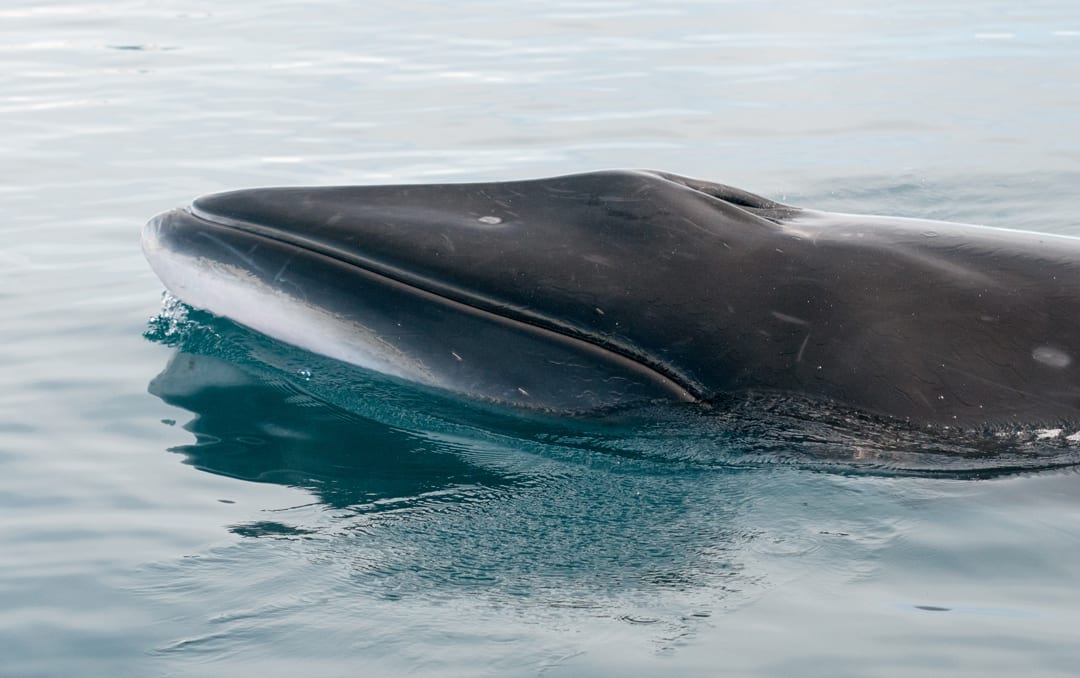
The Minke whale (Balaenoptera bonaerensis) belongs to the fin whale family, one of the most abundant and diverse of the cetaceans, and is easily recognized by its large body size with small dorsal fin, flat head and grooves in the throat and chest that expand when they swallow water to feed on plankton, which is filtered by their baleen.

The Sei whale (Balaenoptera borealis) is a fin whale found around the world and has two subspecies, one in the Northern Hemisphere, and one in the Southern Hemisphere. The southern sei whale is found seasonally along the coast. It migrates through the Argentine Sea from subpolar areas where it feeds in the summer, to the south of Brazil, where it breeds in winter.

The southern right whale (Eubalaena australis) can measure up to 16 meters and weigh about 40 tons. It inhabits the oceans of the Southern Hemisphere; the Atlantic population usually migrates between feeding areas near Antarctica in summer and breeding areas further north in winter, where they concentrate mostly in the Valdes Peninsula and reach as far as Uruguay and Brazil. On these migratory journeys, Patagonia Azul is a regular stop for the southern right whale.
It is a very trusting and curious species and therefore frequently approaches vessels. In the past, this characteristic made the southern right whale an easy target and it was heavily hunted.

The broadnose sevengill shark (Notorynchus cepedianus) is one of the large sharks that inhabit the Argentine Sea. It can reach up to three meters in length, weigh more than 100 kilograms and has numerous white and gray spots, which give it its name in Spanish tiburón gatopardo (leopard shark).

At over five tons in weight and nine meters long, the orca (Orcinus orca) is the largest existing dolphin, although little is known about the species. Although there are populations all over the world, each family maintains fidelity to a site that it usually patrols throughout the year. They swim long distances, and return to feeding sites just when their food sources are most abundant.

The southern dolphin (Lagenorhynchus australis) is a robust dolphin that is found only along the southern coasts of South America, weighing up to 115 kilograms and measuring slightly over two meters. Its dark coloration with grayish bands on its sides and its dark head, which ends in the shape of a short rounded “beak” differentiate it from other dolphins. In the Atlantic Ocean its range reaches Antarctica and the South Atlantic Islands; it appears frequently on the coasts of Patagonia Azul, although it is usually sighted offshore on the continental shelf.

The Commerson’s dolphin (Cephalorhynchus commersonii) is a small cetacean that does not exceed 1.5 meters in length and weighs a maximum of 60 kilograms. Its range is from the north of the province of Chubut in Argentine Patagonia, including the waters of the Islas Malvinas/Falkland Islands, to the southernmost fjords of Chile, including the Strait of Magellan. Patagonia Azul is one of the sites where most of the individuals are concentrated.

Although it is known as the “Patagonian hare”, the mara (Dolichotis patagonum) is not part of the lagomorph family to which hares and rabbits belong, but to that of rodents; in fact, it is the second largest rodent in the world after the capybara. Although it resides only in Argentina and has a broad distribution, its populations are vulnerable because of habitat loss due to the advance of agricultural and livestock activities and competition with introduced herbivores, such as sheep and the European hare. For this reason, mara sightings are rare throughout their range.

The white-headed steamer duck (Tachyeres leucocephalus) is a robust seabird that inhabits only the coasts of the province of Chubut and northern Santa Cruz, mainly at Patagonia Azul. Due to its declining population status, it is considered a vulnerable species.
PORTALES DONDE TRABAJAMOS EN PATAGONIA AZUL
Desde Comodoro, pasando el “pueblo de mar” Caleta Córdova, se atraviesa el Portal Rocas Coloradas, adentrándose en un mundo de colores contrastantes y frágiles geoformas que atestiguan las poderosas fuerzas naturales que actúan sobre este antiguo paisaje. La ruta serpentea por la estepa, hábitat natural del guanaco, el choique, la mara y el puma. Las vistas se van abriendo a enormes restingas verdes llenas de gaviotas, gaviotines y ostreros, acantilados, islotes repletos de lobos marinos y cormoranes, el mar abierto, donde planean los petreles y cada tanto se pueden detectar los soplidos de ballenas. Una parada obligada es el bosque petrificado con restos de troncos de coníferas y ¡palmeras! de más de 60 millones de años.
Pasando el Arroyo Marea, la Ruta Azul continúa por la estepa patagónica, habitada por numerosos guanacos, choiques y maras. El Portal Isla Leones es una antigua estancia ganadera que se convirtió al turismo de naturaleza para dar acceso público al Parque Interjurisdiccional Marino Costero Patagonia Austral y a la mítica Isla Leones, a la cual se accede navegando desde un puerto natural: la Bahía Arredondo. El antiguo faro sobre la isla es icónico de la historia chubutense, así como también la Caleta Hornos, conocida por los navegantes del mundo pero no tanto por las comunidades locales. Un refugio natural, la Caleta Hornos fue el lugar del primer intento de colonización de la Argentina, liderado por Simón de Alcazaba y Sotomayor que en 1535 quiso fundar aquí la provincia de Nueva León.
El portal Punta Tombo es la última parada del viaje a lo largo de la Ruta Azul. Posee un centro de interpretación que invita a adentrarse en un recorrido que lleva del fondo del mar hasta la superficie terrestre, donde se encuentra una de las mayores pingüineras de Argentina. Uno puede recorrer el sendero de 3 km y diferentes miradores y observar el comportamiento de los simpáticos pingüinos de Magallanes en plena temporada de reproducción. Además, en playas cercanas existe una colonia de elefantes marinos, habituados al avistaje y fieles a su lugar.
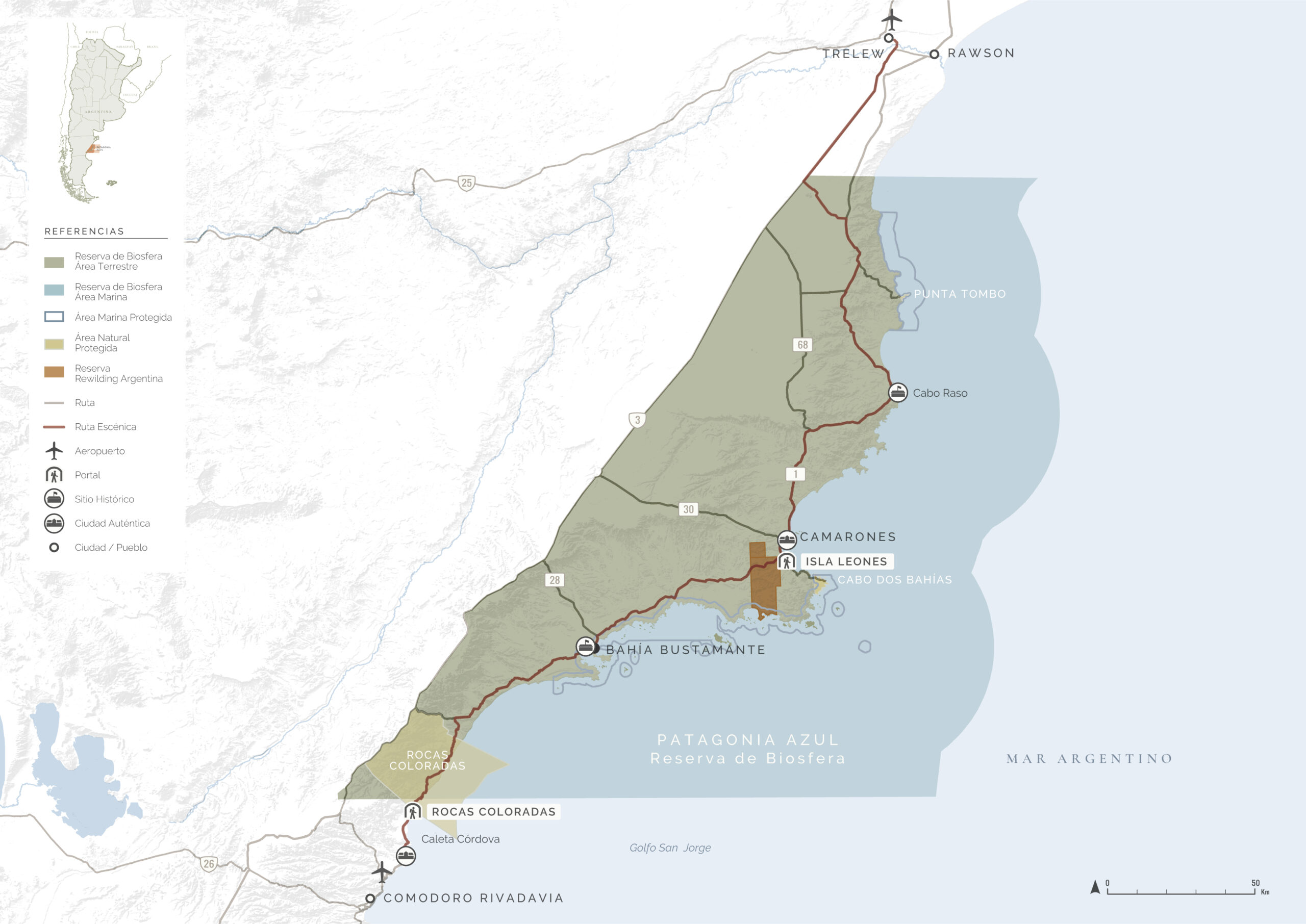
LAS ESPECIES CON LAS QUE TRABAJAMOS EN PATAGONIA AZUL
La gracilaria (Gracilaria gracilis) es un alga nativa de Patagonia que forma extensas praderas que cubren los fondos blandos móviles, que no suelen ser cubiertos por otras especies de algas, evitan su erosión y generan refugio para peces e invertebrados marinos como cangrejos, estrellas de mar y caracoles.
El lobo marino de dos pelos (Arctophoca australis) es un mamífero marino que se distribuye en las costas de Chile, Argentina, Uruguay y Brasil. Los machos son más grandes que las hembras: pueden medir dos metros y pesar 200 kilogramos, y poseen una pequeña melena alrededor de su cuello.
La ballena jorobada (Megaptera novaeangliae) es un gran mamífero marino que puede medir hasta 16 metros y pesar 30 toneladas. Se distribuye en todos los océanos del planeta aunque, según la disponibilidad y calidad de alimento, su presencia es más frecuente en algunos sitios como Patagonia Azul.
La ballena Minke (Balaenoptera bonaerensis) pertenece a la familia de los rorcuales, una de las más abundantes y diversas dentro del grupo de los cetáceos, que se diferencia por sus individuos de gran tamaño con una pequeña aleta dorsal, cabeza aplanada y pliegues en la garganta y el pecho que se expanden cuando tragan agua para alimentarse del plancton, que es filtrado por sus barbas.
La ballena Sei (Balaenoptera borealis) es un rorcual que se encuentra en todo el mundo y posee dos subespecies, una en el Hemisferio Norte y otra en el Sur. La del Hemisferio Sur tiene una presencia estacional a lo largo del litoral: migra por el Mar Argentino desde zonas subpolares donde se alimenta en el verano hacia el sur de Brasil, donde se reproduce en invierno.
La ballena franca austral (Eubalaena australis) puede medir hasta 16 metros y pesar cerca de 40 toneladas. Habita los océanos del Hemisferio Sur; la población del Atlántico suele migrar entre áreas de alimentación cerca de la Antártida en verano y áreas de reproducción más al norte en invierno, donde se concentran mayormente en la Península Valdés y llegan hasta Uruguay y Brasil. En estos viajes migratorios, Patagonia Azul es una parada habitual de la ballena franca austral.
Con sus poblaciones globales diezmadas, a partir de la prohibición de su caza comercial en la década de 1980 la ballena franca austral se recuperó lentamente. Hoy, su aprovechamiento por el turismo embarcado para su avistaje depende de una población saludable. Estos encuentros amistosos entre estas gigantes del océano y los humanos se dan casualmente en las ag uas de tránsito que bañan las costas de Patagonia Azul.
El tiburón gatopardo (Notorynchus cepedianus) es uno de los grandes tiburones que habitan el Mar Argentino. Puede alcanzar tres metros de largo, pesar más de 100 kilogramos y posee numerosas manchas blancas y grises, que le dan su nombre.
Con más de cinco toneladas de peso y nueve metros de largo, la orca (Orcinus orca) es el delfín más grande que existe, aunque poco se sabe de la especie. Si bien existen poblaciones en todo el mundo, cada familia tiene fidelidad a un sitio que suele patrullar durante todo el año. Nadan grandes distancias, volviendo a los sitios de alimentación en el momento adecuado, justo cuando sus fuentes de alimento se encuentran en mayor abundancia.
El delfín austral (Lagenorhynchus australis) es un robusto delfín exclusivo de las costas del sur de Sudamérica que llega a pesar 115 kilogramos y medir un poco más de dos metros. Su coloración oscura con bandas grisáceas a sus costados y su cabeza oscura, que termina en forma de “pico” corto redondeado, lo diferencian de otros delfines. Su distribución en el Océano Atlántico llega hasta Antártida e Islas del Atlántico Sur; en las costas de Patagonia Azul aparece frecuentemente, aunque suele avistarse mar adentro en la plataforma continental.
La tonina overa (Cephalorhynchus commersonii) es un pequeño delfín que no supera el metro y medio y pesa, como mucho, 60 kilogramos. Habita desde el norte de la provincia de Chubut en la Patagonia argentina, incluyendo las aguas de las Islas Malvinas, hasta los fiordos más australes de Chile, incluyendo el Estrecho de Magallanes. Patagonia Azul es uno de los sitios donde se concentran más individuos.
Aunque es conocida como “liebre patagónica”, la mara (Dolichotis patagonum) no pertenece a la familia de las liebres y conejos —los lagomorfos— sino a la de los roedores; de hecho, es el segundo roedor más grande del mundo después del carpincho. Si bien reside únicamente en Argentina pero en un extenso rango, sus poblaciones son vulnerables debido a la pérdida de hábitat por el avance de actividades agrícolas y ganaderas y a la competencia con herbívoros introducidos, como la oveja y la liebre europea. Por ello, hoy en día resulta difícil avistar maras en todo su rango de distribución.
El pato vapor cabeza blanca (Tachyeres leucocephalus) es una robusta ave marina que habita únicamente las costas de la provincia de Chubut y el norte de Santa Cruz, concentrándose mayormente en Patagonia Azul. Dado el estado decreciente de su población se la considera una especie vulnerable.
Monitoreo de Yaguareté
Información actualizada sobre los yaguaretés libres en el parque iberá, corrientes..
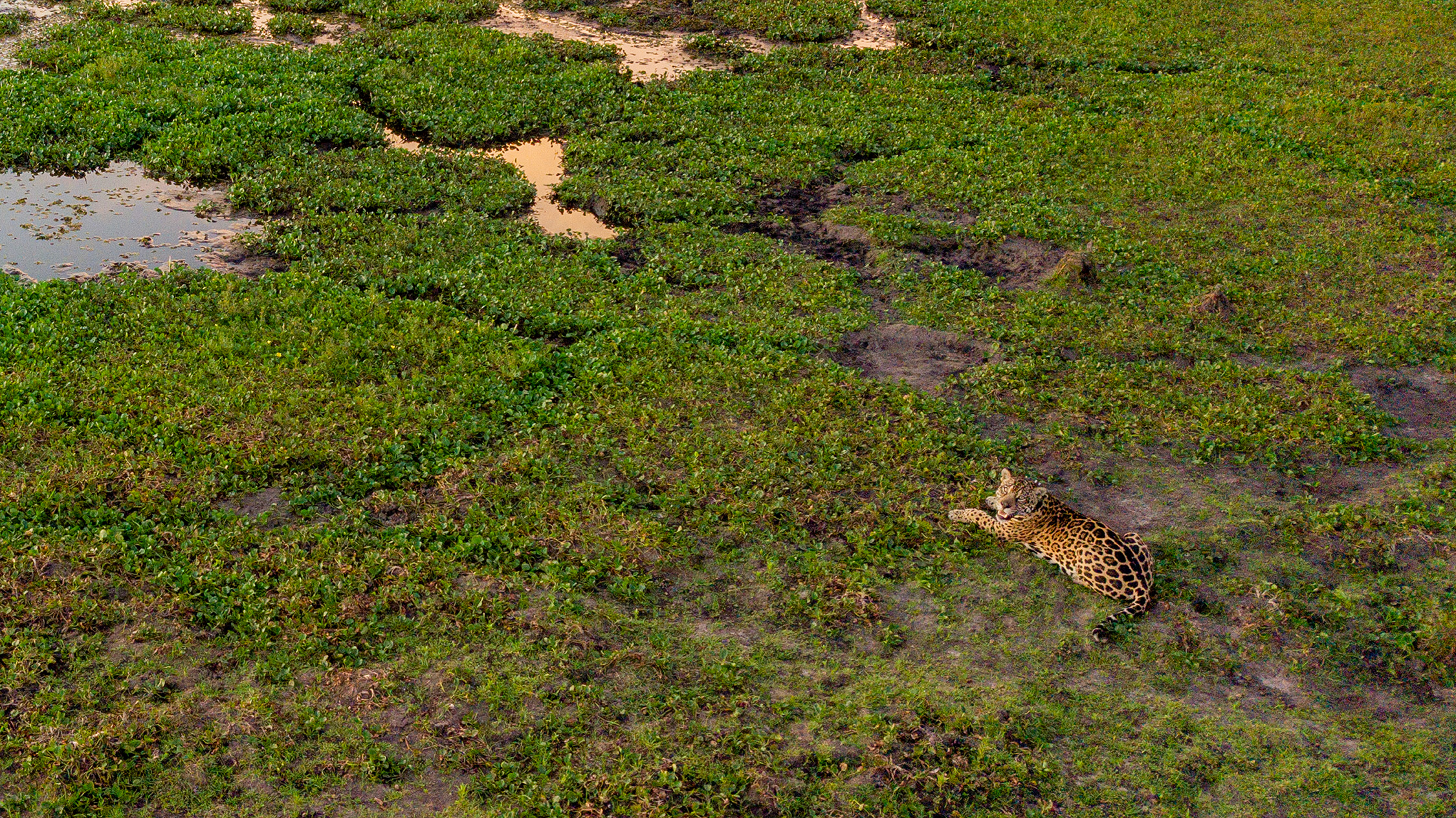
ACERCA DEL COMPORTAMIENTO Última actualización: 15 de marzo de 2022
Mariua, Karai y Porã
• Desde el día de la salida, el 7 de enero de 2021, Mariua realizó un recorrido por el perímetro de los distintos corrales que componen el Centro de Reintroducción de Yaguareté (CRY). • A partir de 10 de enero de 2021 comenzó a recorrer junto a sus cachorros el territorio ubicado al sur del CRY, explorando muy lentamente esta zona en dirección sur. Luego, comenzó a volver hasta el lugar de liberación y a moverse al norte del mismo. • Actualmente, Mariua realiza desplazamientos a lo largo de la isla San Alonso, permaneciendo algunos días en un sitio, por lo general cerca de montes o bañados, y luego trasladándose a otra zona. • Su alimentación consiste casi su totalidad de carpinchos y cerdos cimarrones.
Juruna, Sãso y Sagua’a
• Desde que Juruna salió con sus cachorros del CRY el 16 de abril de 2021 por la noche, han recorrido y explorado gran parte de la isla San Alonso, localizándose hace bastante tiempo en el sector sur. • Su alimentación consiste casi en su totalidad de carpinchos y cerdos cimarrones.
• Desde su salida del CRY el 24 de septiembre de 2021, Arami ha explorado principalmente la porción central y norte de la isla San Alonso, permaneciendo hace algún tiempo en la zona norte. • Su alimentación consiste casi en su totalidad de carpinchos y cerdos cimarrones.
Jatobazinho
• Desde su liberación el 31 de diciembre de 2021, Jatobazinho ha realizado las primeras exploraciones de su nuevo territorio, incluyendo desplazamientos más amplios al comienzo, incluso en zonas fuera de la isla durante las primeras dos semanas. Luego, sus desplazamientos se han restringido a los límites de la isla, principalmente en los sitios donde se encuentran las tres hembras adultas, con quienes comparte territorio durante algunos días. • Su alimentación consiste casi en su totalidad de carpinchos y cerdos cimarrones.
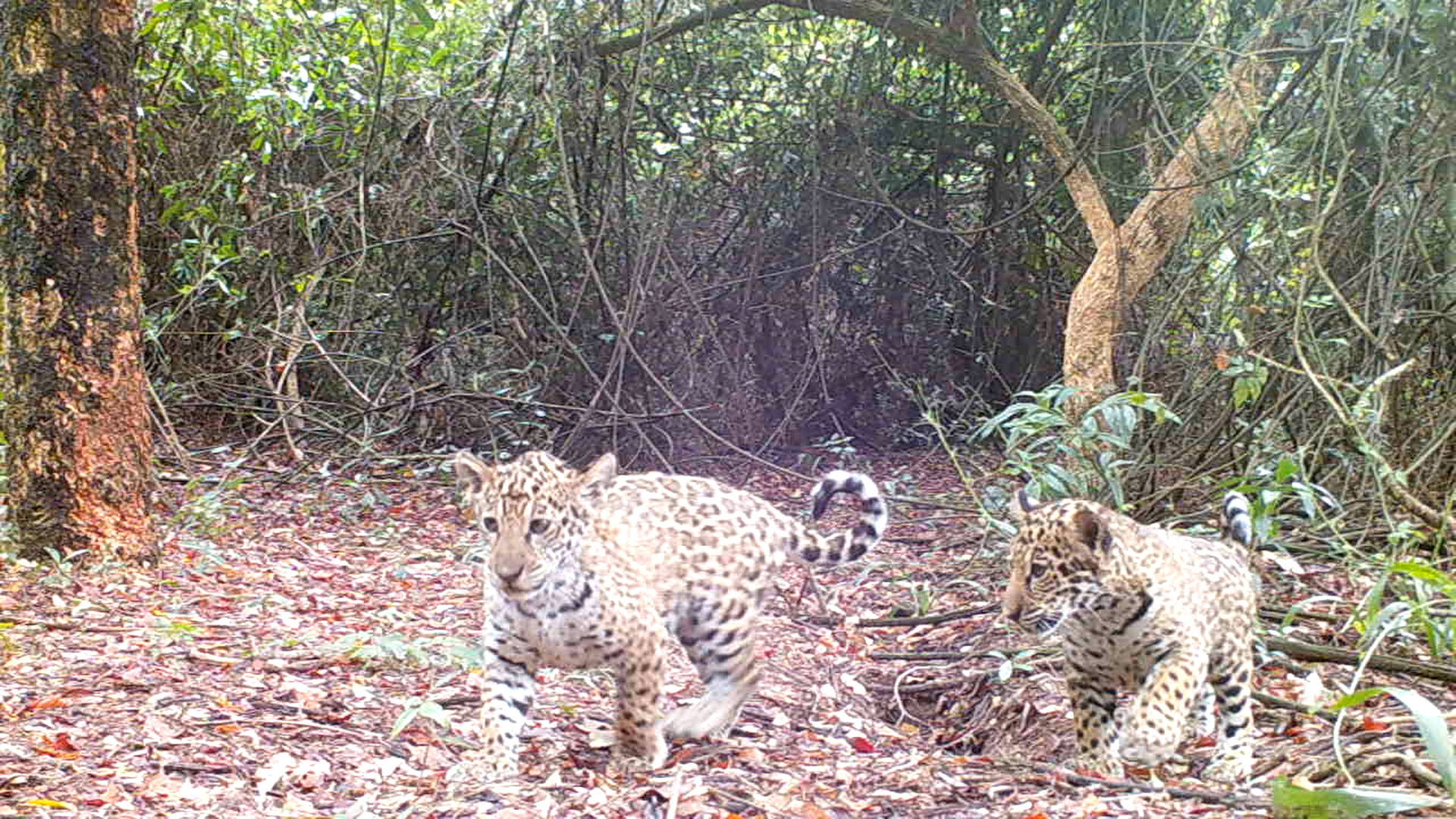
Los cachorros de Juruna, Sãso y Sagua’a, en el corral de 30 hectáreas días antes de aventurarse hacia la completa libertad en el Parque Iberá. Foto de cámara trampa.
ACERCA DE LOS INDIVIDUOS LIBERADOS
Mariua, Karai y Porã Fecha de salida del corral: 7 de enero de 2021
- Mariua es una hembra silvestre originaria de Brasil. Llegó a Argentina en diciembre de 2018 y en febrero de 2019 ingresó al Centro de Reintroducción de Yaguareté (CRY) ubicado en San Alonso, en el Parque Iberá, provincia de Corrientes. Se estima que Mariua puede haber nacido a principios del año 2018.
- A mediados de septiembre de 2020, Mariua dio a luz en el CRY a dos cachorros, Karai y Porã.
- Mariua, Karai y Porã son los primeros yaguaretés en vivir en completa libertad en la provincia de Corrientes, 70 años después de que esta especie se extinguiera en la provincia.
- El día 5 de enero a la madrugada se abrió uno de los paneles del corral de 30 hectáreas del CRY donde vivían Mariua y sus cachorros. El día 6 a las 20:25 Mariua salió por primera vez del recinto y volvió a entrar el día 7 a las 2:40. Ese mismo día, el 7 de enero de 2021 a las 4:25 volvió a salir, esta vez en compañía de Karai y Porã.
Juruna, Sãso y Sagua’a Fecha de salida del corral: 16 de abril de 2021
- Juruna es la hermana de Mariua y como ella es una hembra silvestre originaria de Brasil. Llegó a Argentina en diciembre de 2018 y en febrero de 2019 ingresó al CRY. Al igual que su hermana, se estima que Juruna puede haber nacido a principios del año 2018.
- A mediados de diciembre de 2020, Juruna dio a luz en el CRY a dos cachorros, Sãso y Sagua’a.
- El día 15 de abril se abrió uno de los paneles del corral de 30 hectáreas del CRY donde vivían Juruna y sus cachorros. Ese mismo día por la tarde Juruna salió por primera vez del recinto y volvió a entrar el día 16 por la tarde. E:xx. Ese mismo día, el 16 de abril de 2021 a las 19:34 volvió a salir, esta vez en compañía de Sãso y Sagua’a.
Arami Fecha de salida del corral: 24 de septiembre de 2021
- Arami junto con Mbarete son las dos primeras yaguaretés nacidas en Corrientes (6 de junio de 2018) tras décadas de haberse extinguido la especie en la Provincia.
- Hijas de Tania y Chiqui, estas hembras permanecieron en los recintos de 1,5 hectáreas hasta alcanzar su madurez, y en el caso de Arami, fue luego trasladada al recinto de 30 hectáreas para evaluar sus aptitudes de caza y comportamiento en condiciones de semi-libertad.
Jatobazinho Fecha de salida del corral: 31 de diciembre de 2021
- Jatobazinho es el primer macho adulto liberado en el proyecto.
- Viene del Pantanal brasileño, donde fue rescatado en 2018 cuando fue visto atravesando el río Paraguay en malas condiciones físicas. Numerosas instituciones brasileras, como el Instituto Chico Mendes de Conservación de la Biodiversidad, la Universidad Federal de Mato Grosso do Sul y la Organización Onçafari, intervinieron para su rescate.
- Ingresó al proyecto en 2019 y permaneció en los recintos de 1,5 hectáreas donde compartió espacio con Mariua y Juruna, quienes tuvieron dos cachorros cada una. Tras la liberación de los primeros 7 ejemplares, Jatobazinho pasó al recinto de 30 hectáreas donde se evaluaron sus aptitudes de caza y comportamiento en condiciones de semi-libertad.
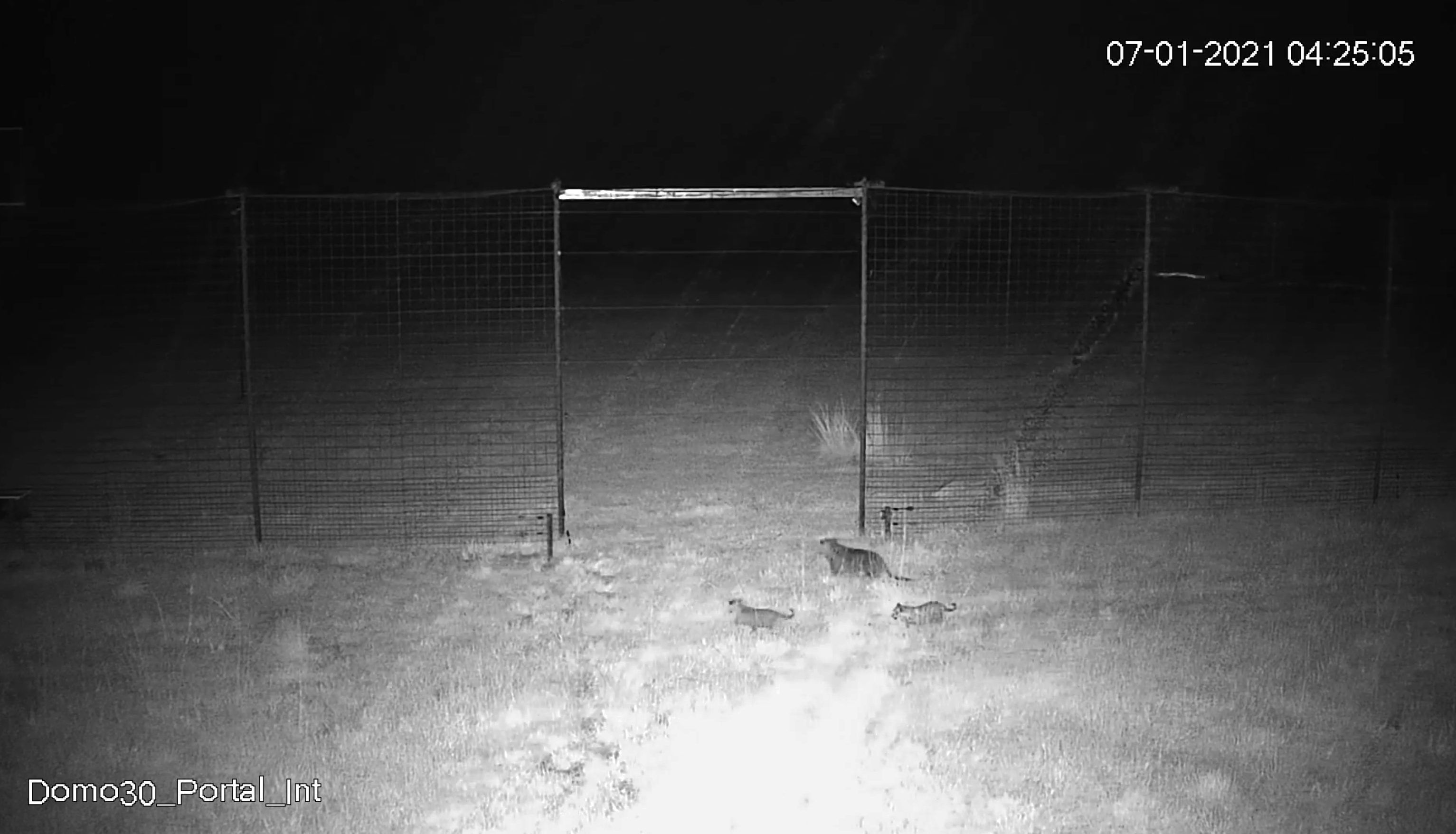
Mariua, Karai y Porã dejan el corral de 30 hectáreas del Centro de Reintroducción de Yaguareté, camino hacia la completa libertad en el Parque Iberá.
ACERCA DEL MONITOREO
- Mariua y Juruna poseen cada una un collar que colecta puntos con latitud y longitud mediante un GPS y luego envía esos puntos a una computadora, a través de una conexión satelital.
- El collar está programado para colectar esos puntos cada 3 horas, es decir que colecta 8 puntos por día. Todos los días a las 5:05 am el collar se conecta vía satélite con nuestras computadoras y nos entrega esos 8 puntos. De esa forma sabemos dónde estuvieron las hembras con sus crías entre las 5 am del día anterior y las 5 am del día que recibimos los puntos. Es decir, el último punto lo recibimos 5 minutos después de que haya sido registrado.
- Además, los collares de Juruna y Mariua emiten una señal de radio de frecuencia VHF que la captamos con una antena desde tierra o aire, y de esa forma podemos conocer en forma muy precisa y en tiempo real dónde se encuentran. Esta señal la podemos recibir mientras caminamos por el campo, desde un caballo, desde un vehículo o desde una avioneta de la Fundación.
- Por otro lado, hemos definido polígonos de sectores de Iberá donde quisiéramos saber al instante si una hembra y sus cachorros ingresan. En caso de que lo hagan, el collar que portan se comunica con nosotros de inmediato vía satélite y nos envía un correo electrónico con su posición exacta. De esta forma podemos decidir el tipo de actuación que consideremos pertinente.
- Quiénes somos
- Nuestro modelo
- Parques para la conservación
- Marine Program
- Parks for conservation

IMAGES
VIDEO
COMMENTS
Seriema Nature Tours. Since 1991, we have been leading and organizing trips throughout the area we know best: Southern South America. We are specialized in every kind of nature oriented trips in Argentina, Bolivia, Brazil, Chile, Paraguay, Uruguay and Antarctica. This web site will show you a selection of our best tours specialized in Birding ...
Our tours are designed for all those interested in, or dedicated to, the study or simple enjoyment of nature. In addition to specialized bird tours, we also offer butterfly tours, botany and general natural history tours. At Seriema Nature Tours we can accommodate everyone from the most dedicated birder who seeks the rarest and most localized ...
All the directors and tour leaders of Seriema Nature Tours are nature lovers with a vast experience in tourism and a strong responsibility towards conservation. Most of us are born and raised in South America, an amazing continent with amazing wildlife and people. A world class destination we have intensively traveled, all our lives.
Seriema provides the best birding and birdwatching tours in Argentina. Also, all kinds of nature and wildlife tours. Tours by region - Argentina - Seriema Nature Tours
Several threatened and highly localized species inhabit the adjacent grasslands, including Greater Rhea, Black-and-white Monjita, Strange-tailed Tyrant, Ochre-breasted Pipit and numerous Seedeaters of the enigmatic Sporophila group. Woodlands host numerous beauties such as Scissor-tailed Nightjar, Striped Cuckoo, Purple-throated Euphonia, Yellow-billed Cardinal and Green-winged Saltator.
Let the ABA and Seriema Nature Tours take you on an adventure to explore Argentina's rich birdlife and enjoy the authentic culture and magnificent scenery of the Andes—as well as superb Malbec wines! Brief itinerary. Day 1: 3 Oct 2024: Arrive in Córdoba - Birding the Central Hills highlands:
Country Hightlights. Rich and varied wildlife; A number of protected areas hold threatened and seldom recorded species; A land with a strong cultural and historical heritage
In the national parks of the interior, covered with rocky fields and Cerrado grasslands are yet another array of endemics: Cipo Canastero, Pale-throated Serra-Finch, Cinereous Warbling-Finch, Hyacinth Visorbearer and Grey-backed Tachuri.In Canastra we will hope to meet with the stunning Helmeted Manakin, Campo Miner, Cock-tailed Tyrant and a local population of Brasilia Tapaculo.
Birdwatching tours in Argentina and Uruguay with Seriema Nature Tours. Home. Tours By Region. Tours By Interest. Tours By Date . Trip Reports. About Us. Testimonials. Contact Us ... It thus becomes are a great option for anyone who wants to mix nature with relaxation. More info. Phone/Fax: (+54911) 2492-8890. Email: [email protected]. Menu ...
In spite of its reduced area, this country has a rich wildlife and a variety of habitats. It is dissected by the Paraguay River, with the Chaco to the west, and the Oriente to the East.
In the drier northern section of the Pantanal, the loud call of Red-legged Seriema echoes through the savanna. Their voice may travel more than a mile, as they stand on a termite mound and call at dawn. ... Wildside Nature Tours 241 Emerald Drive Yardley, PA 19067. Additional Resources. Meet Our Team News & Updates Registration and Cancellation ...
Dense stands of Chaco vegetation support an amazingly rich assortment of birds which includes specialties such as Brushland Tinamou, Spot-winged Falconet, Black-bodied Woodpecker, Chaco Owl, Scimitar-billed Woodcreeper and Black-and-chestnut Warbling-Finch.Here too Andean Condors and Black-chested Buzzard-Eagle patrol the skies; and small jewels like the Red-tailed Comet and the Olive-crowned ...
Seriema Nature Tours offers more than 20 years of experience in organizing Birdwatching tours. • · · ...
Follow us. All right reserved ® - Seriema Nature Tours
Seriema Nature Tours - Facebook
Seriema Nature Tours is a company based in Argentina, which focuses on Birding Tours and Natural History Tours. Since 1991, we have been leading and organizing trips throughout the area we know best: Southern South America. We are specialists in Argentina, Brazil, Bolivia, Chile, Paraguay, Uruguay and Antarctica.
Subject: [Tweeters] RFI: Seriema Tours: Has anyone traveled in Argentina with Seriema Nature Tours? Would you recommend them? Please reply privately. Rachel Lawson Seattle
He operates Los Palmares and conducts boat tours on the Bermejo River to monitor and prevent illegal hunting and fishing activities. ... His natural curiosity and love towards nature since he was a kid and his ability with horses and the guaraní language allowed Pascual to work in Iberá's deepest wetlands from 2007 to 2016, relating with ...
The perfect balance of nature and relax; Interesting avifauna of the Rocha wetlands; Quiet backcountry feeling and friendly people; Other Regions. Antarctica; Argentina; Bolivia; Brazil; Chile; Paraguay; Uruguay; Phone/Fax: (+54911) 2492-8890. ... All right reserved ® - Seriema Nature Tours ...
Seriema Nature Tours is a company based in Argentina, which focuses on Birding Tours and Natural History Tours. Since 1991, we have been leading and organizing trips throughout the area we know best: Southern South America. We are specialists in Argentina, Brazil, Bolivia, Chile, Paraguay, Uruguay and Antarctica. Read More. Seriema Nature Tours ...